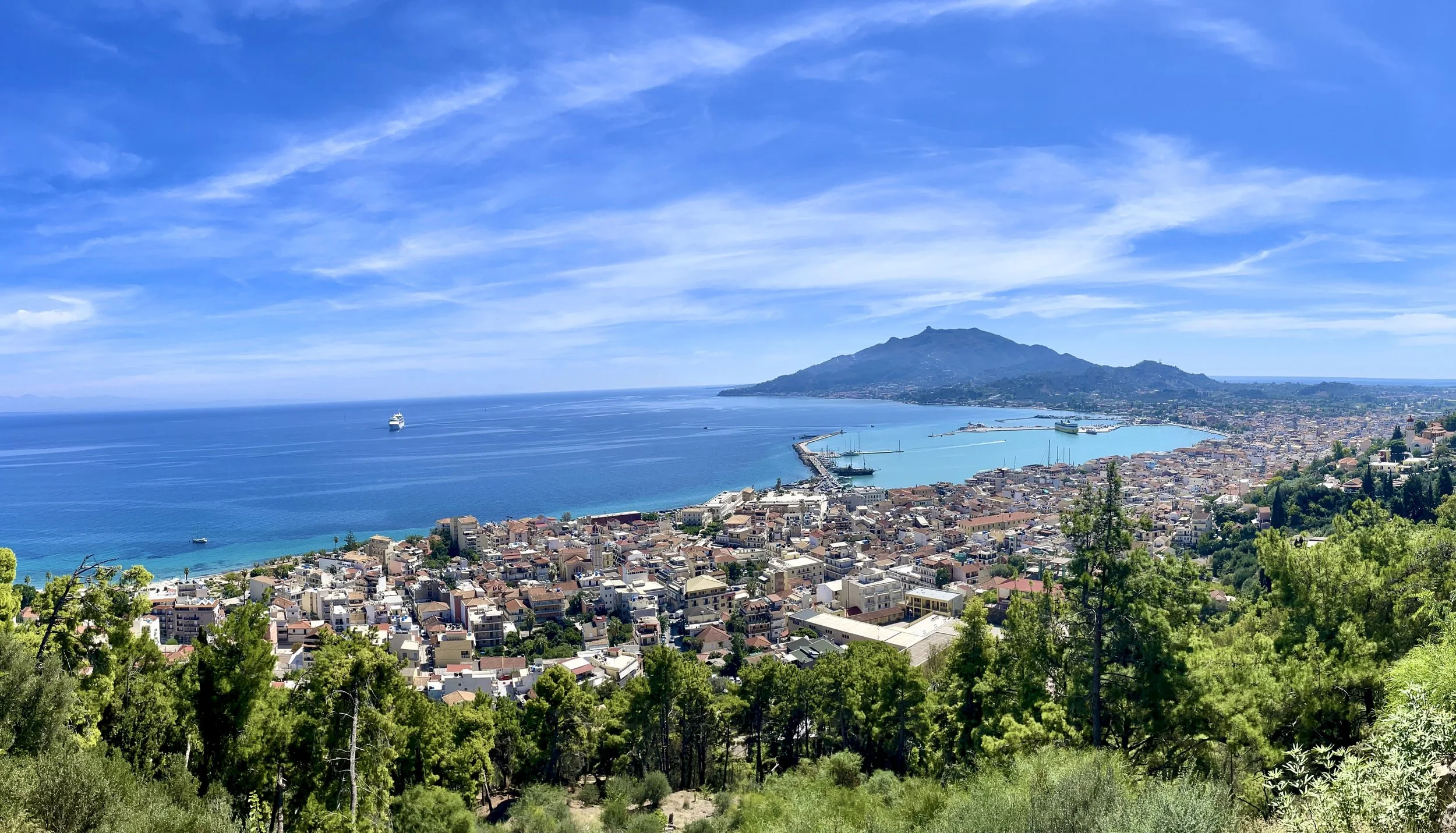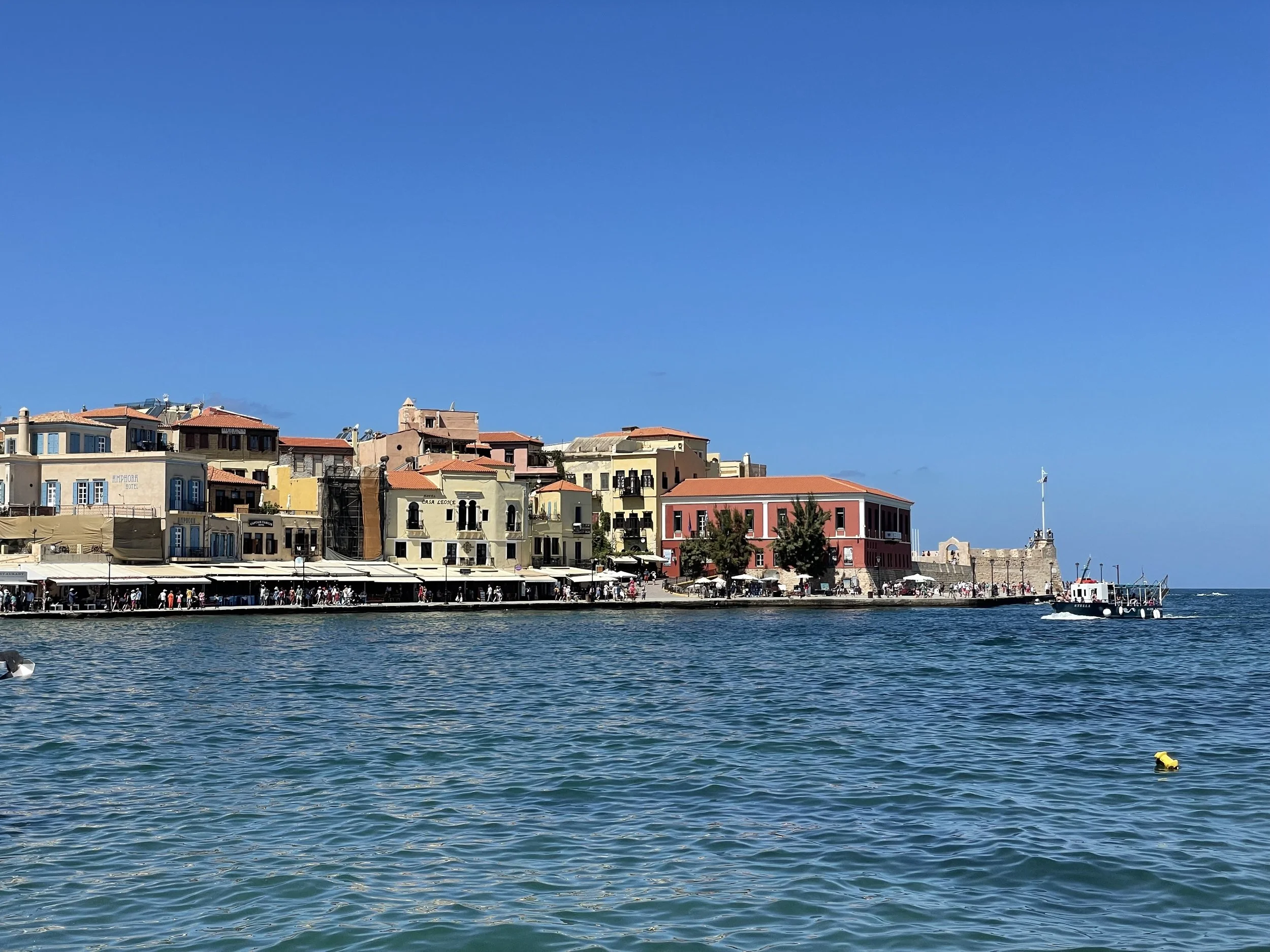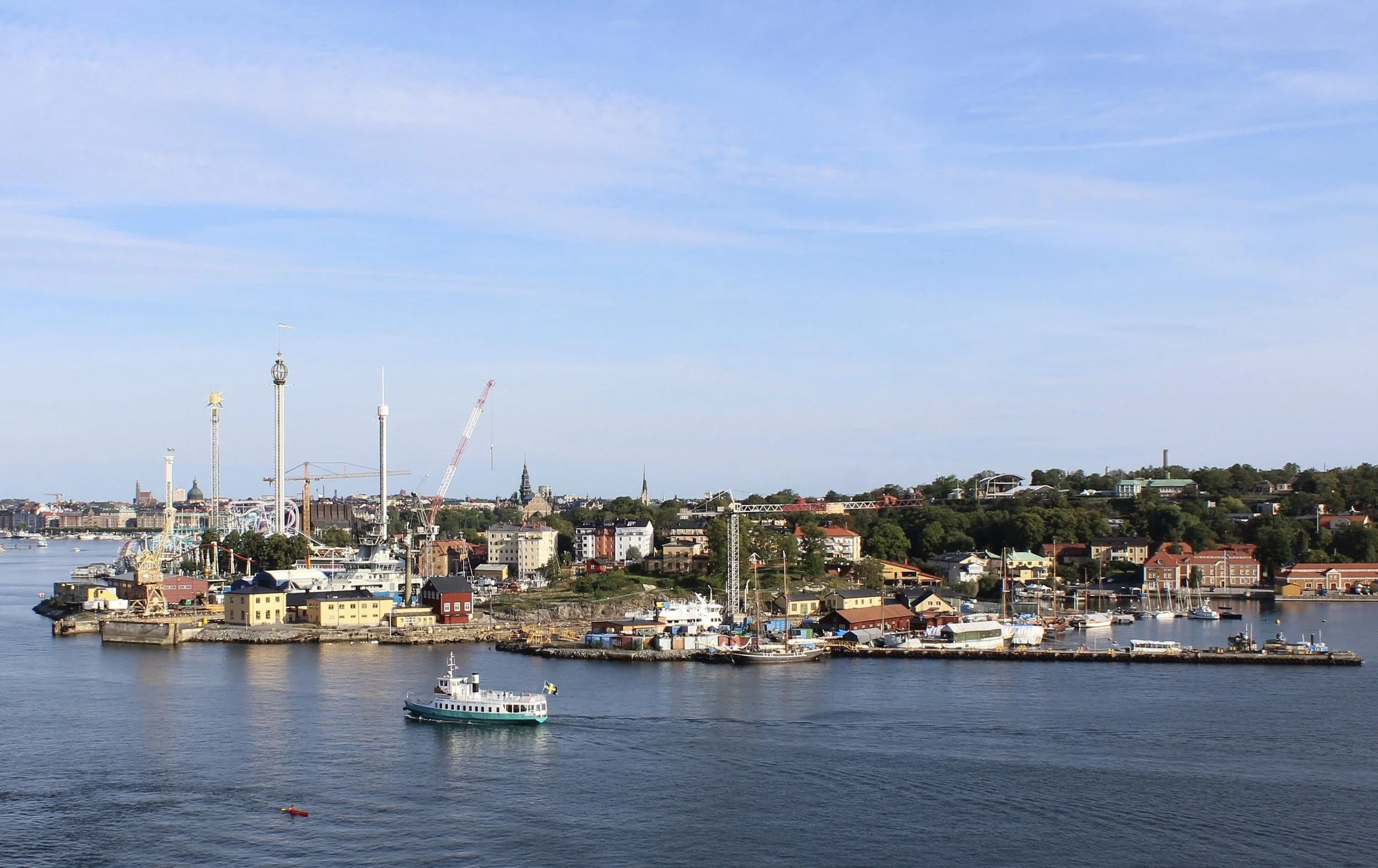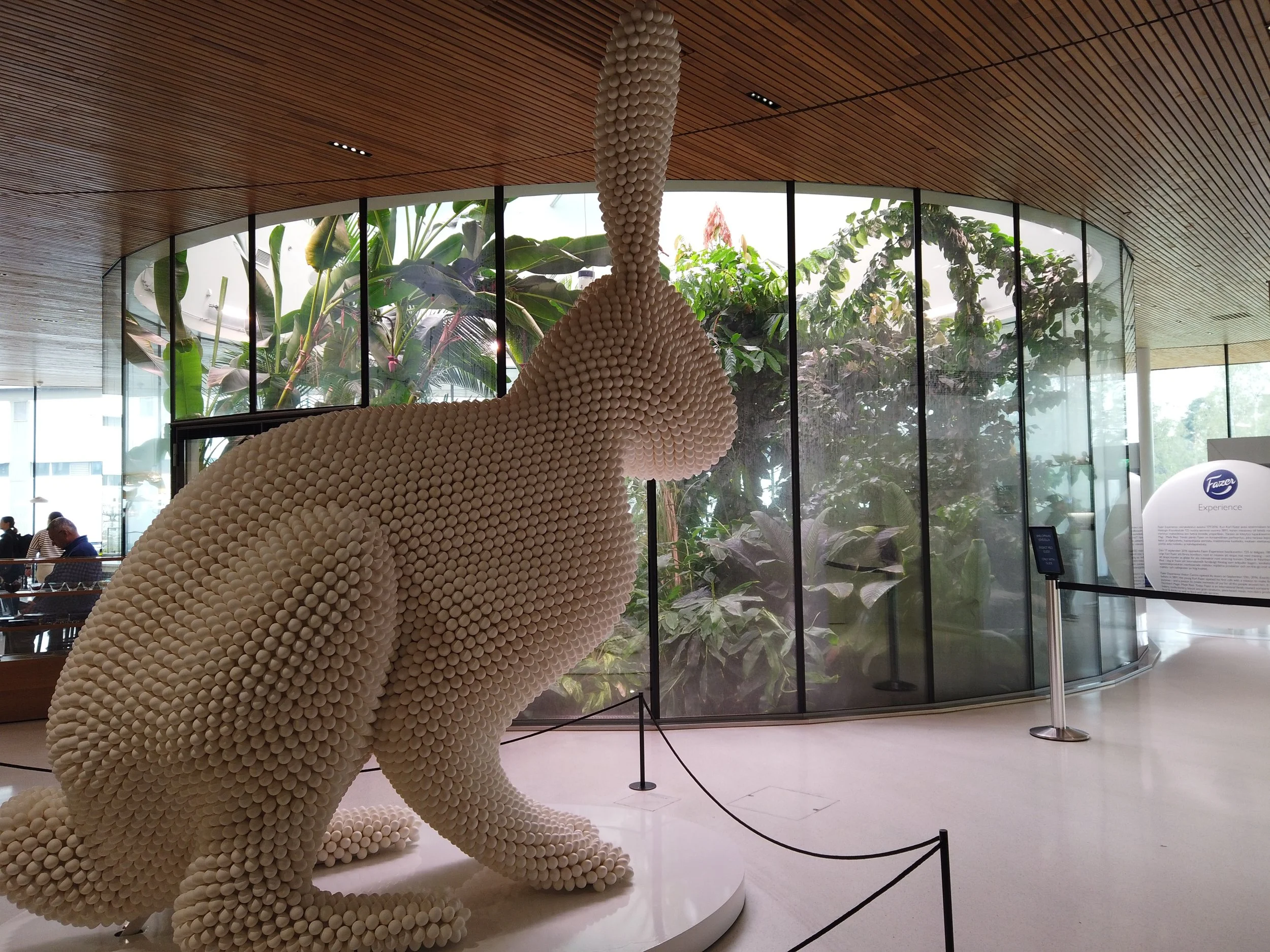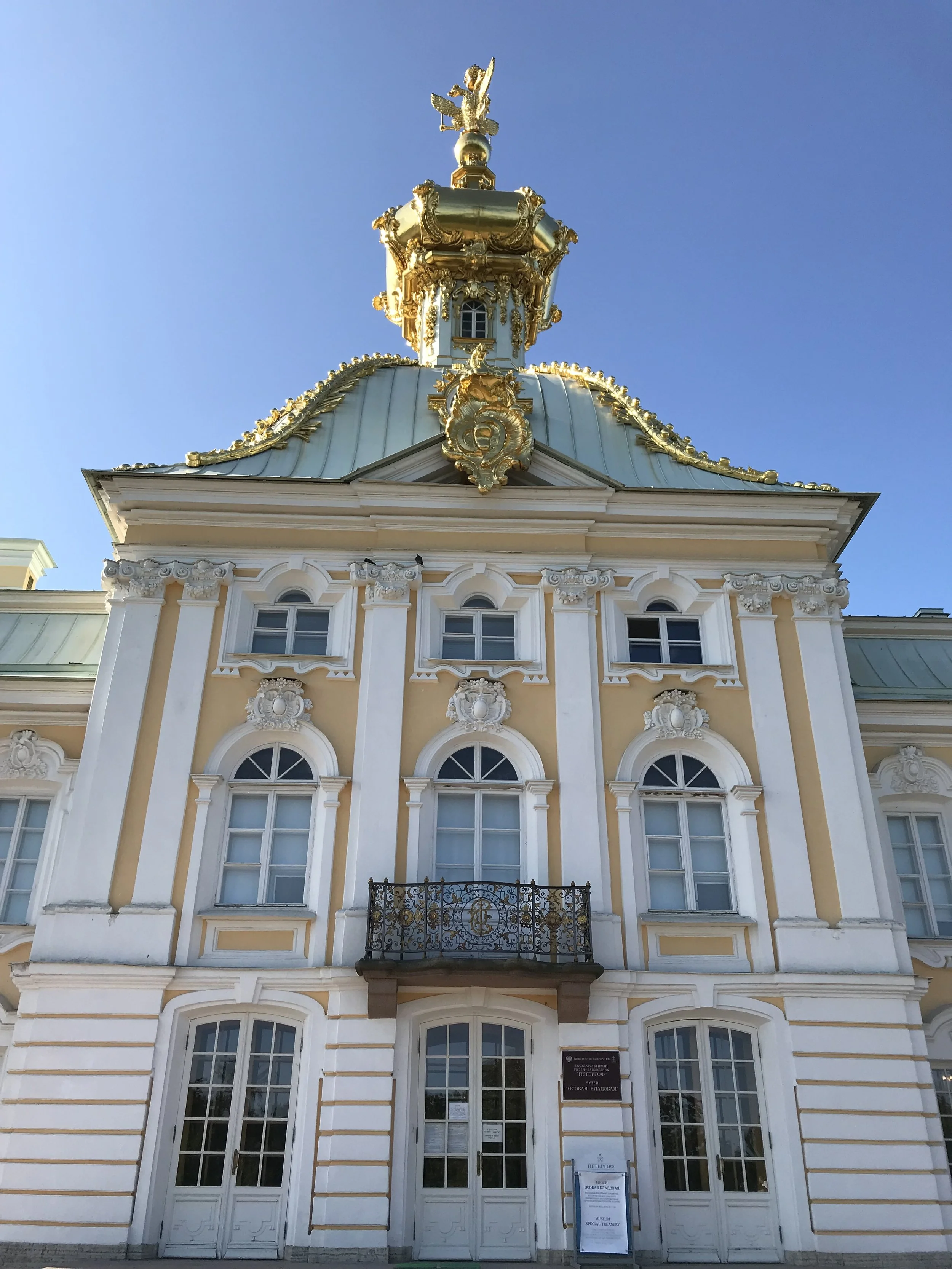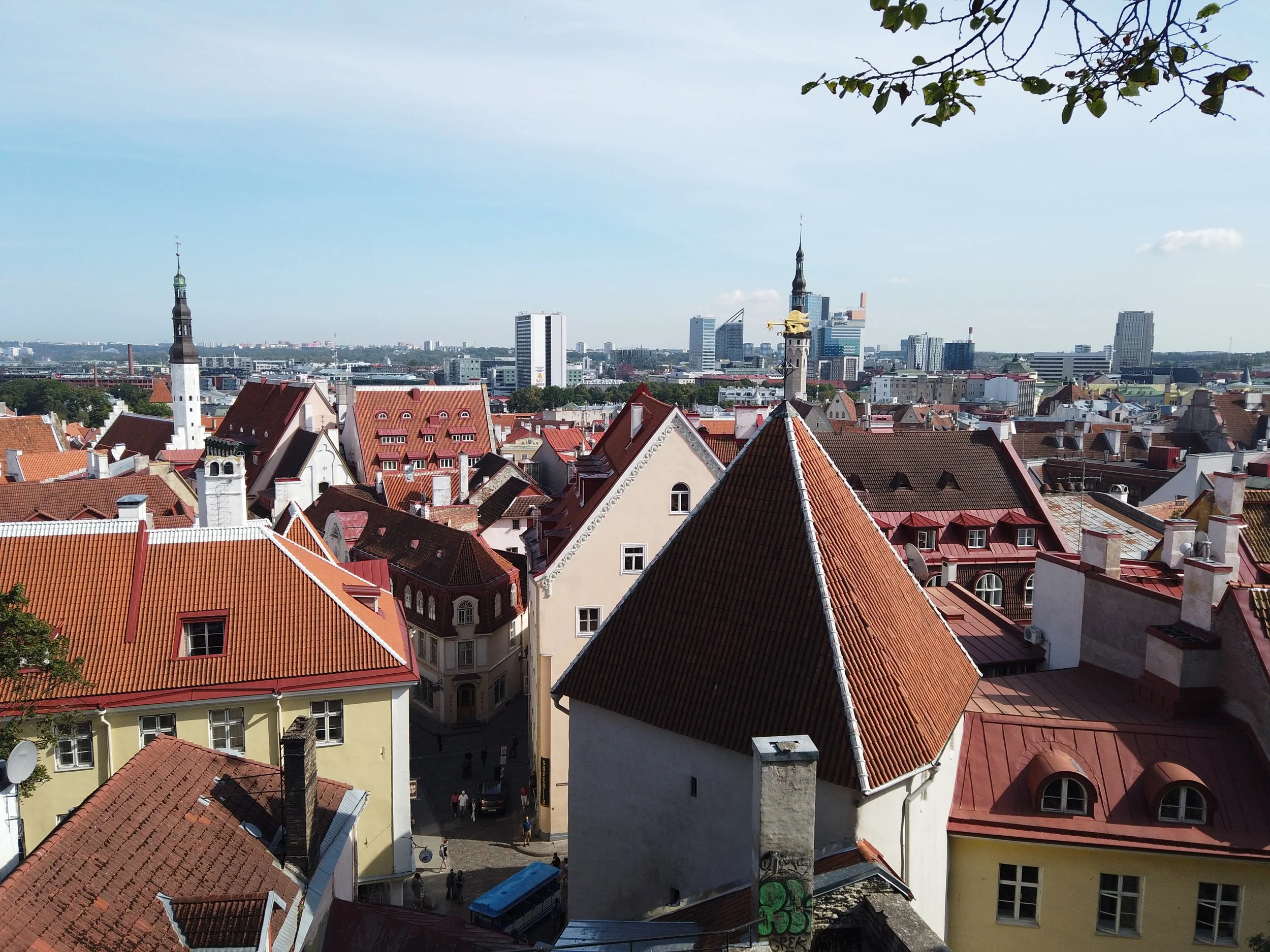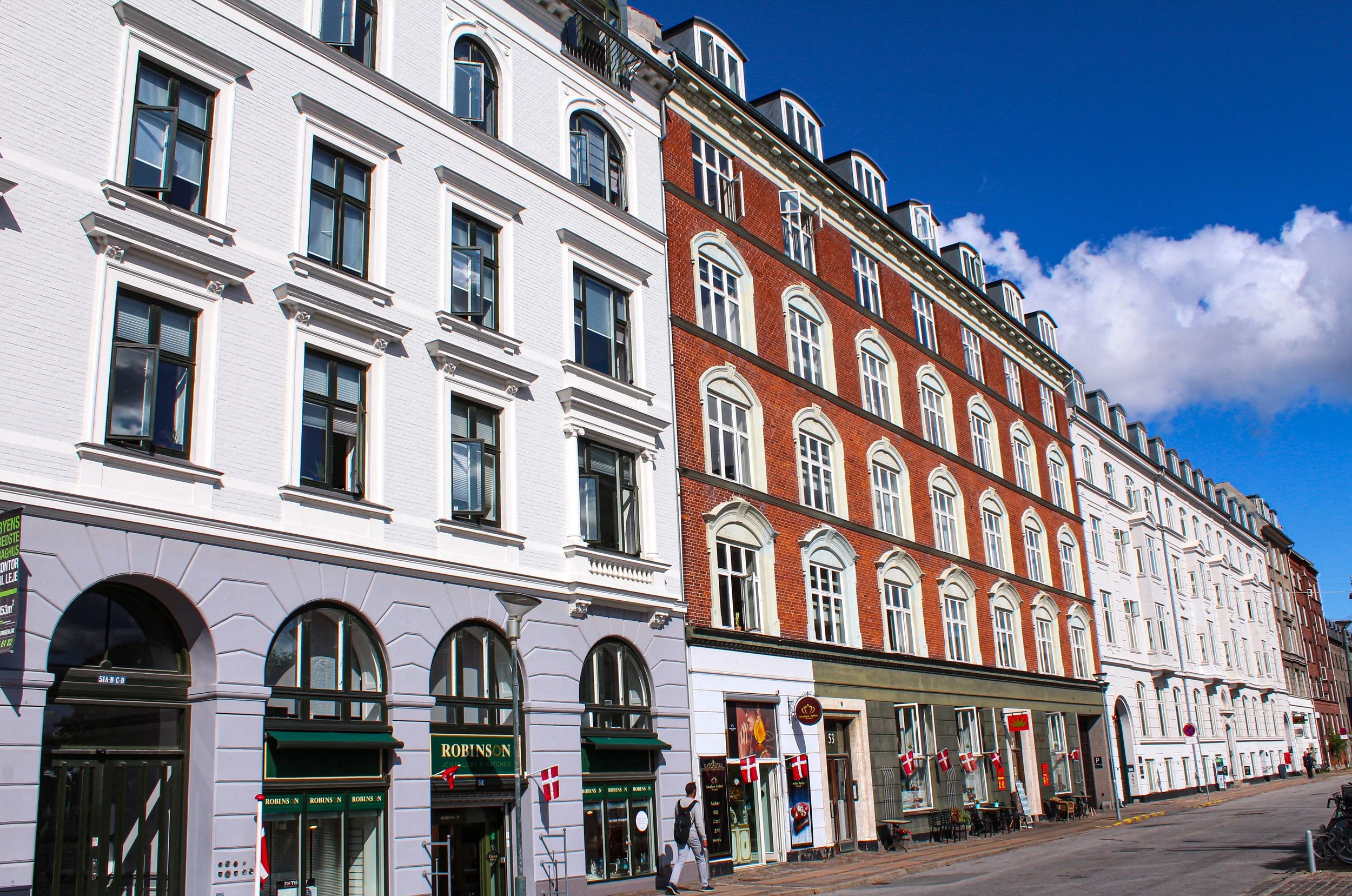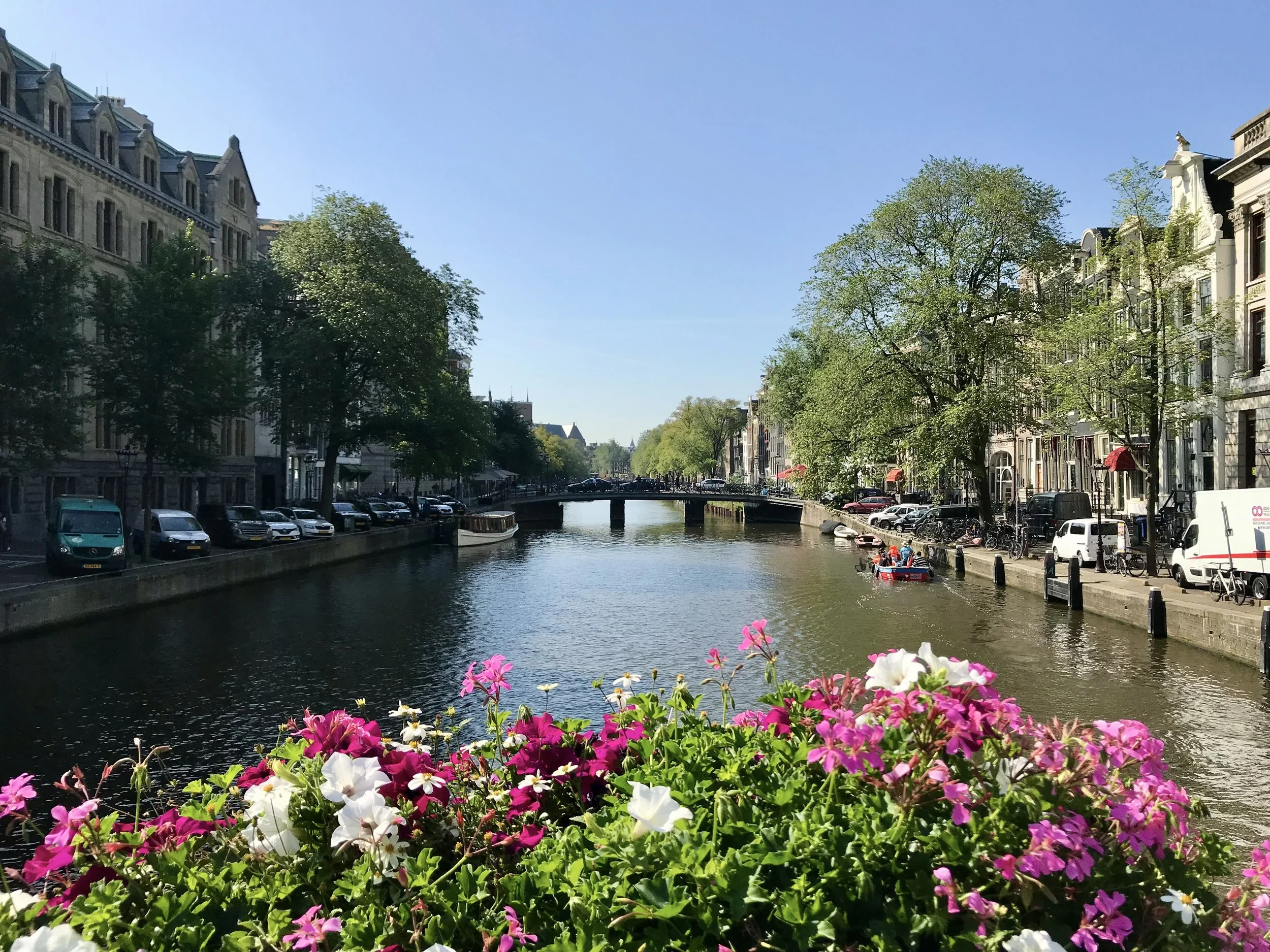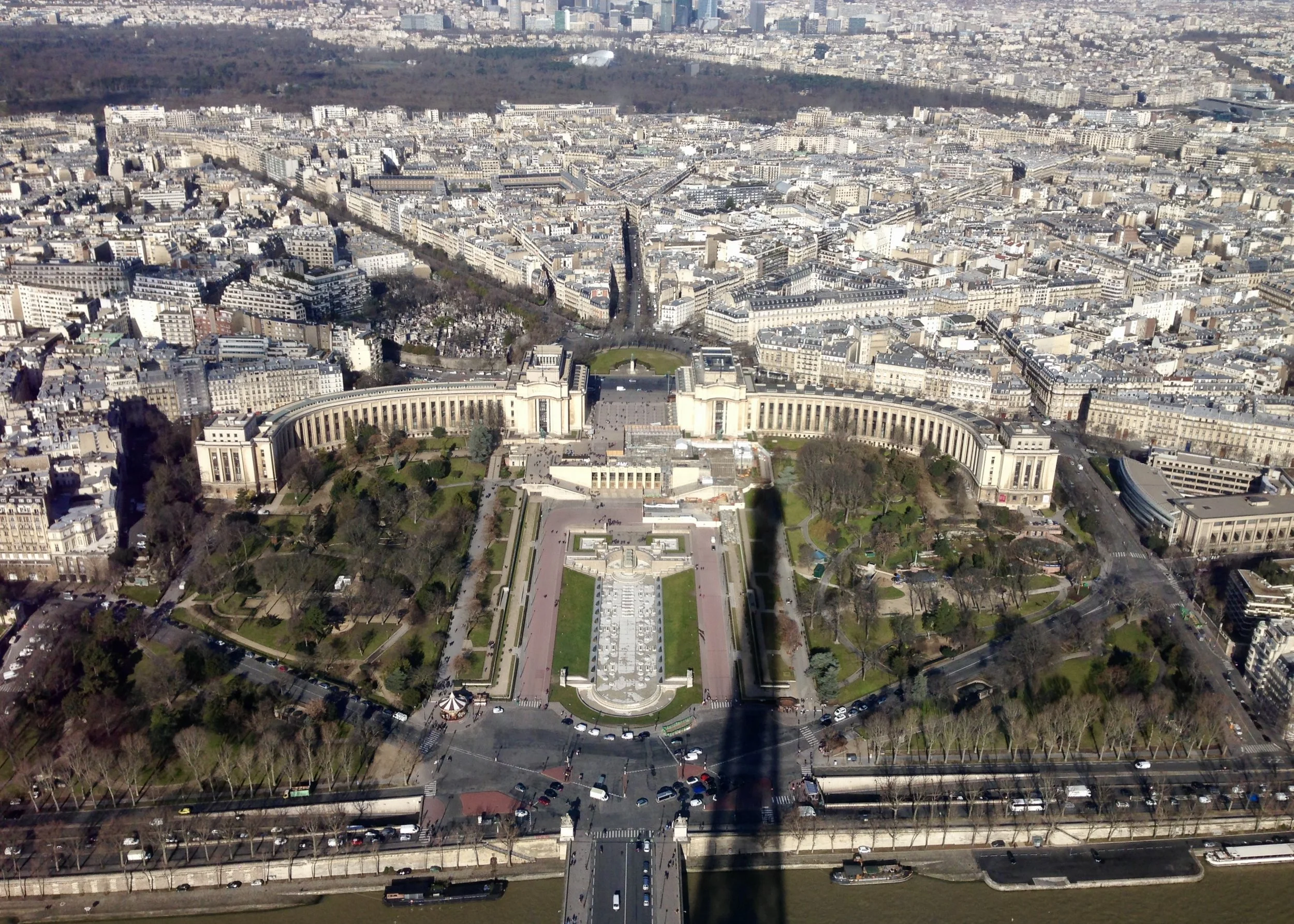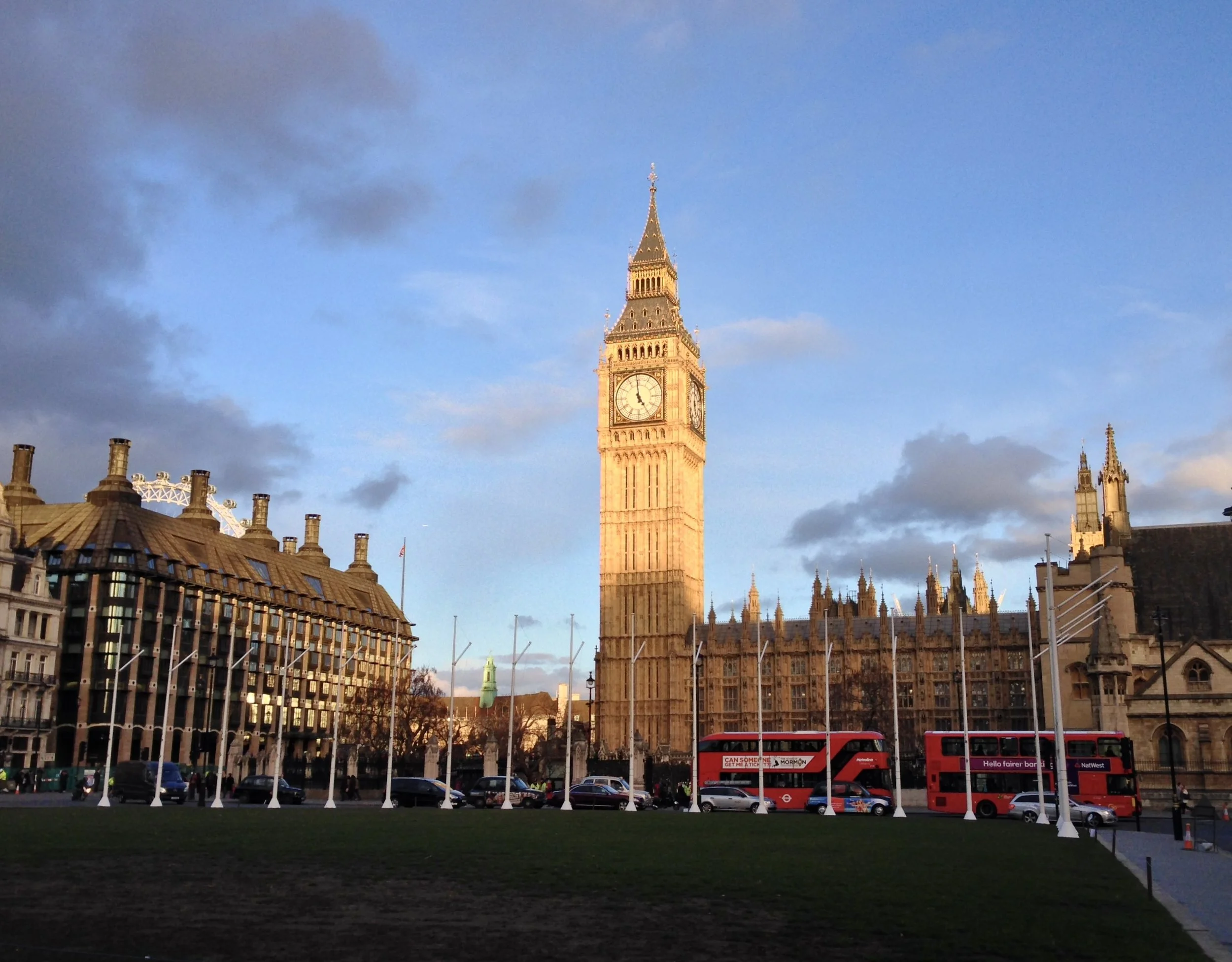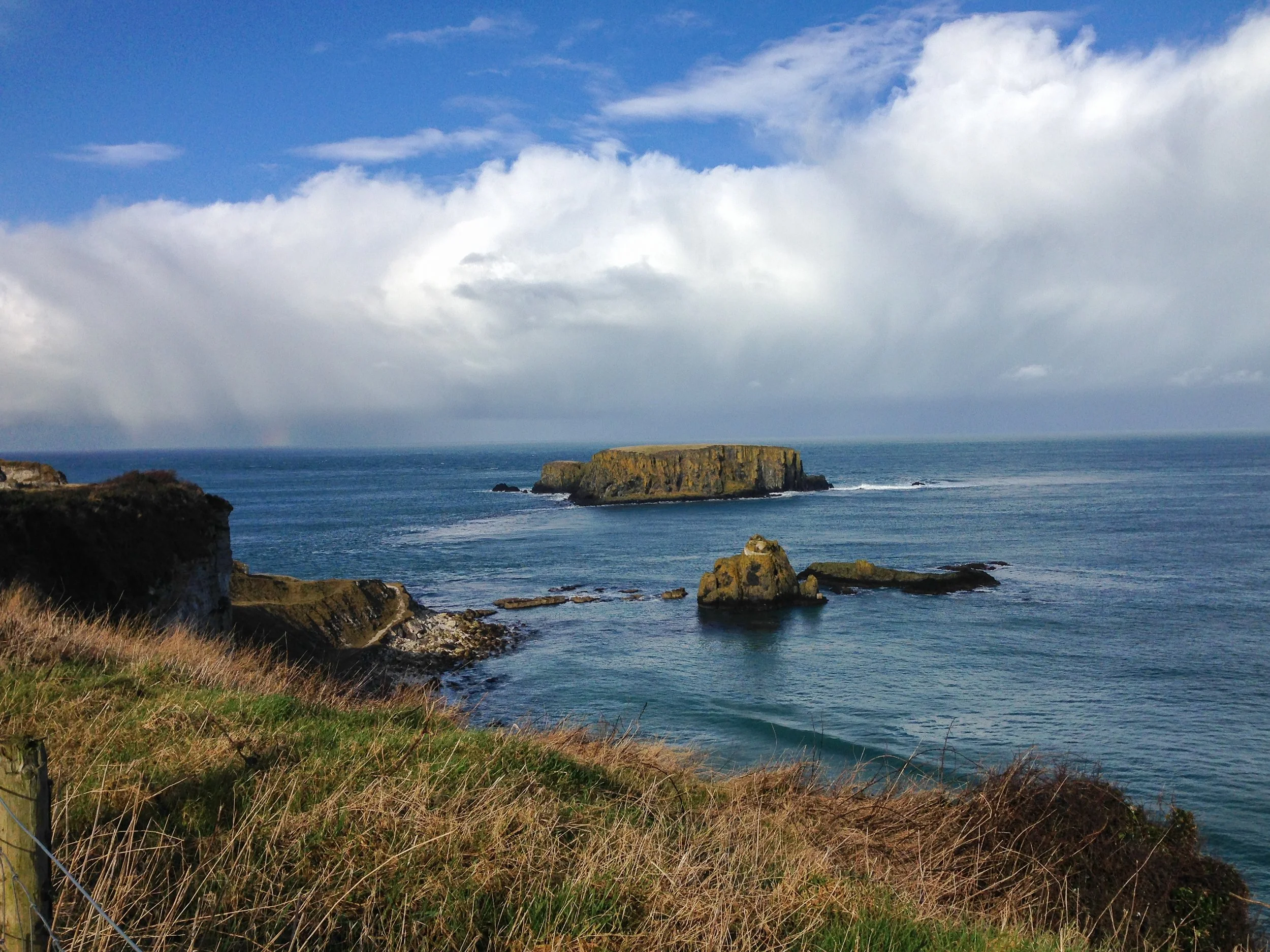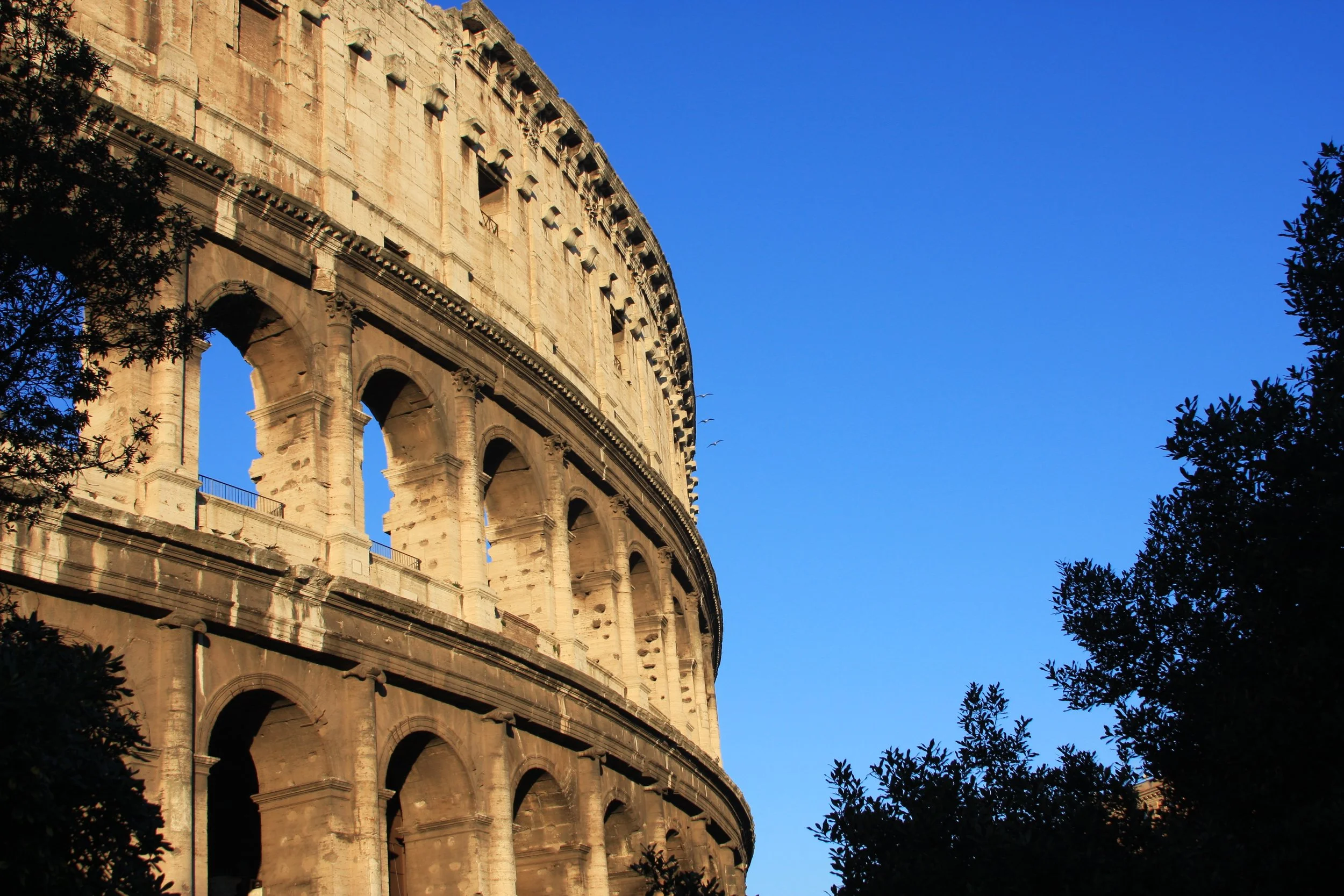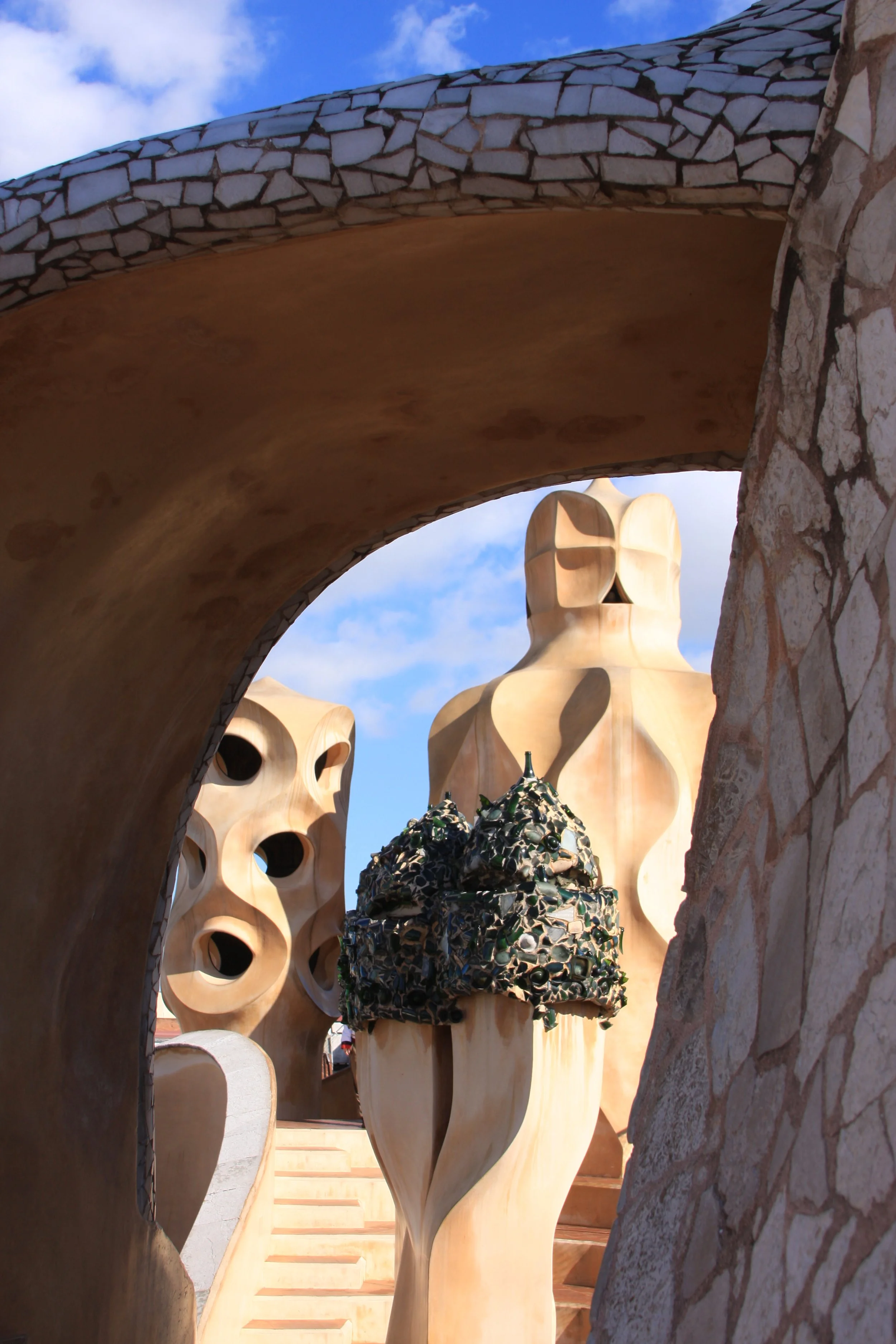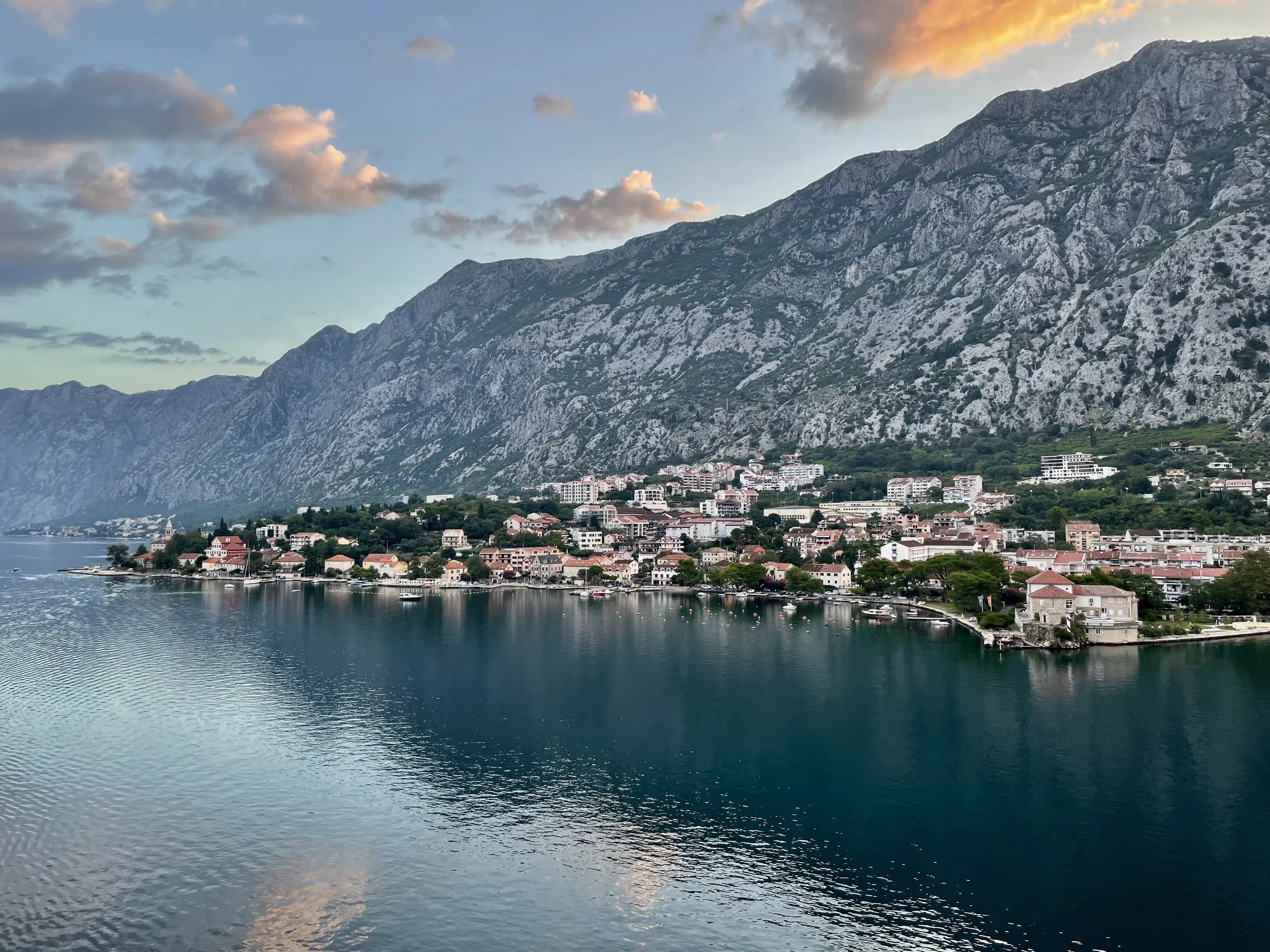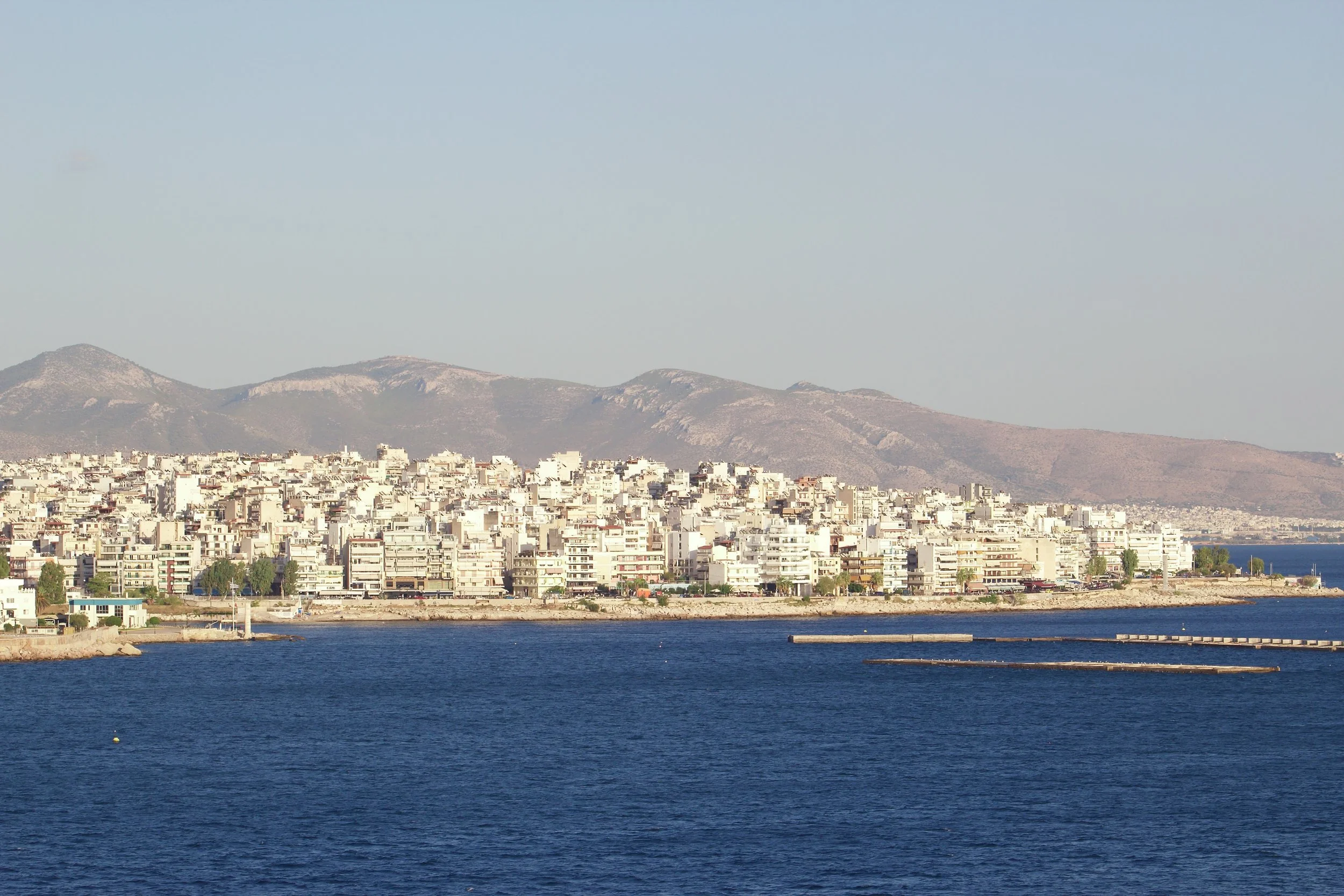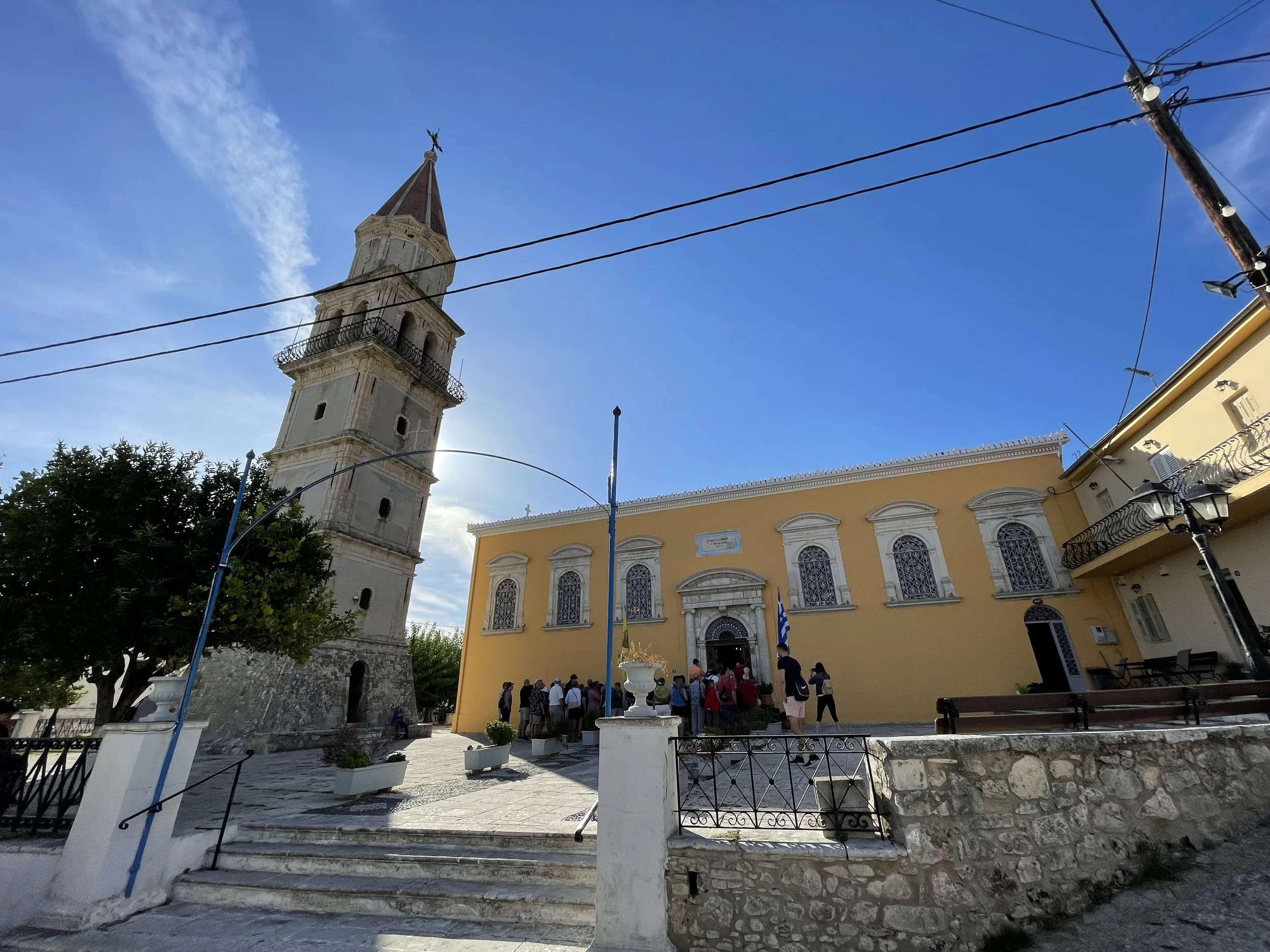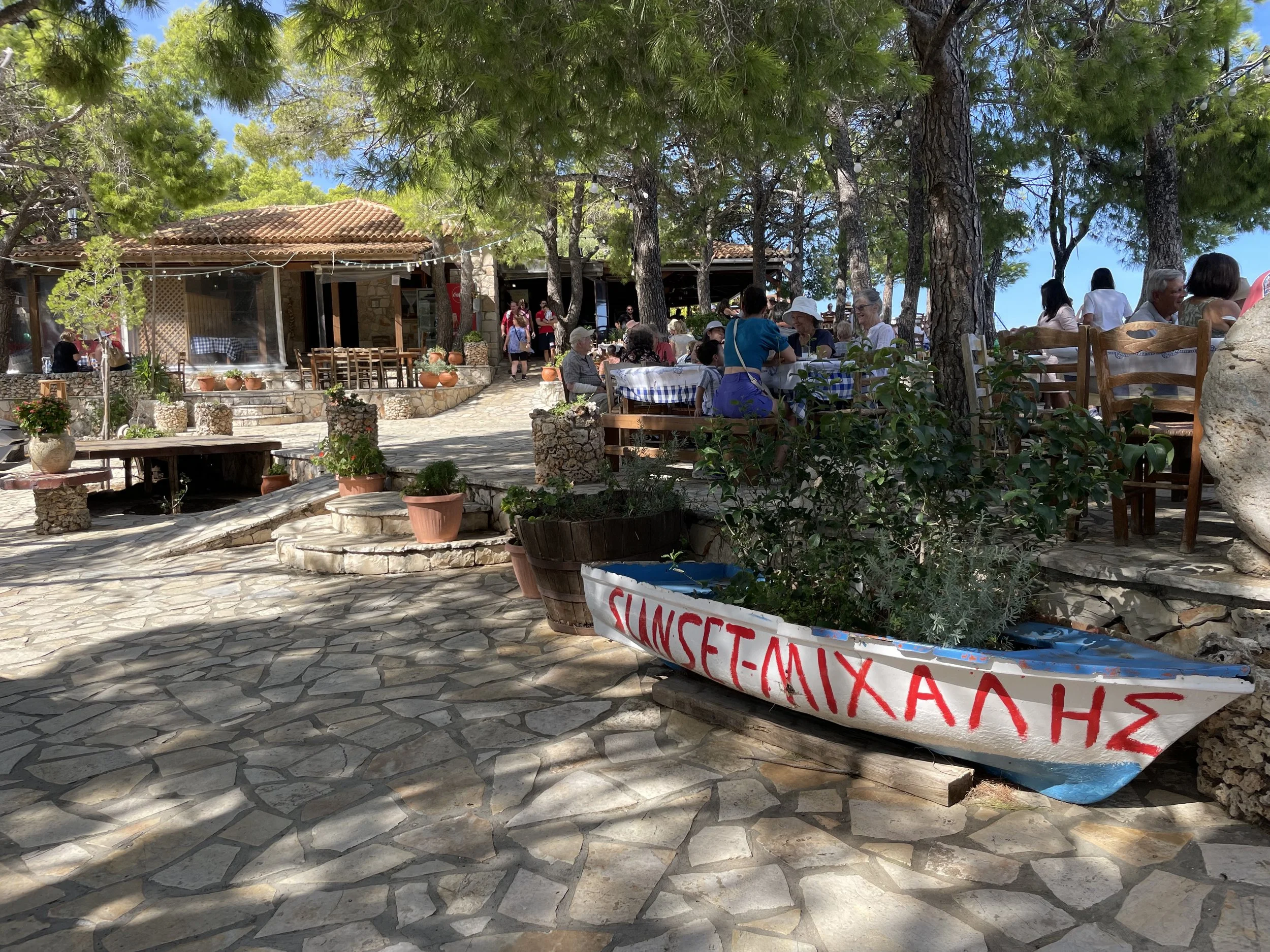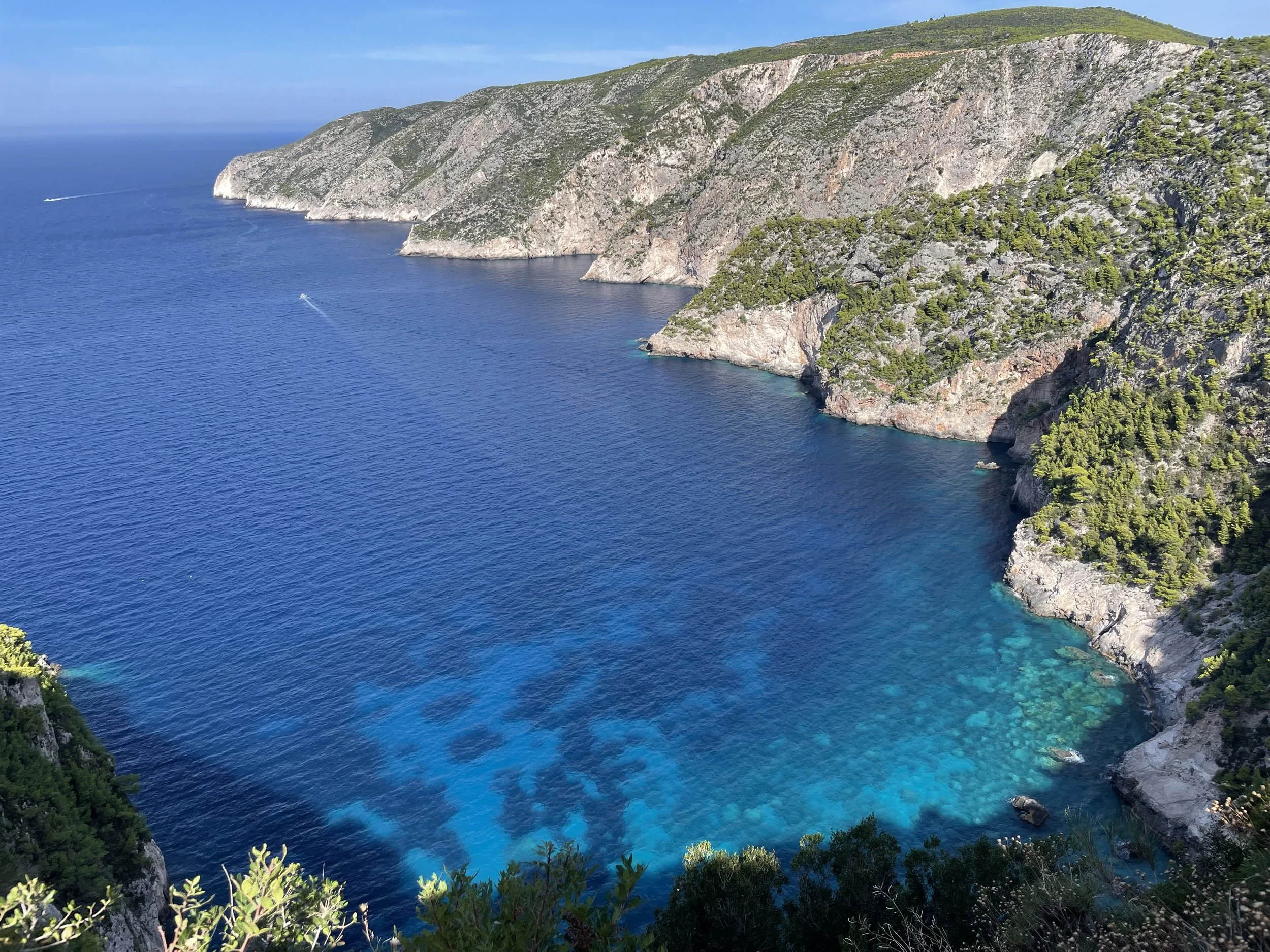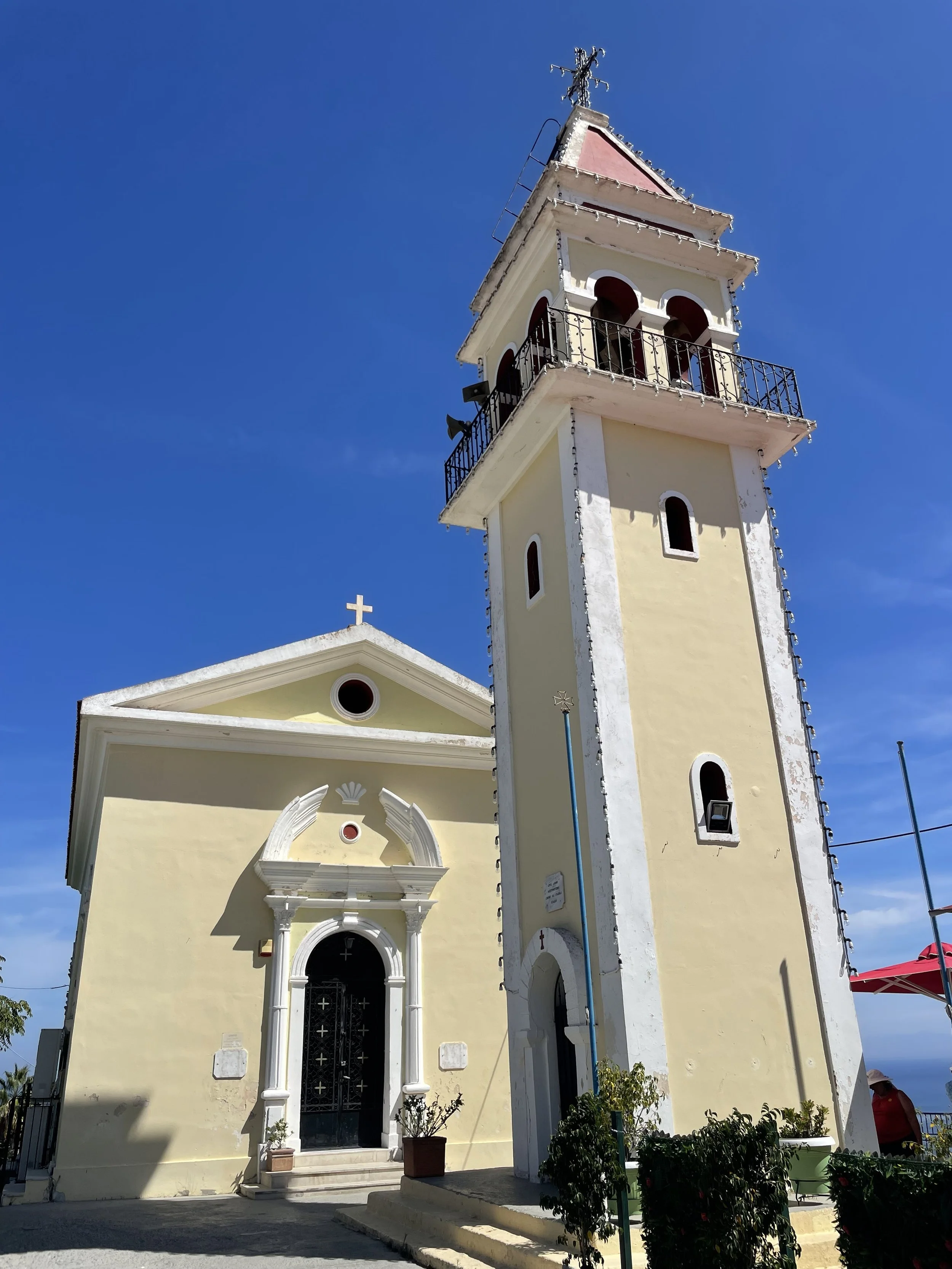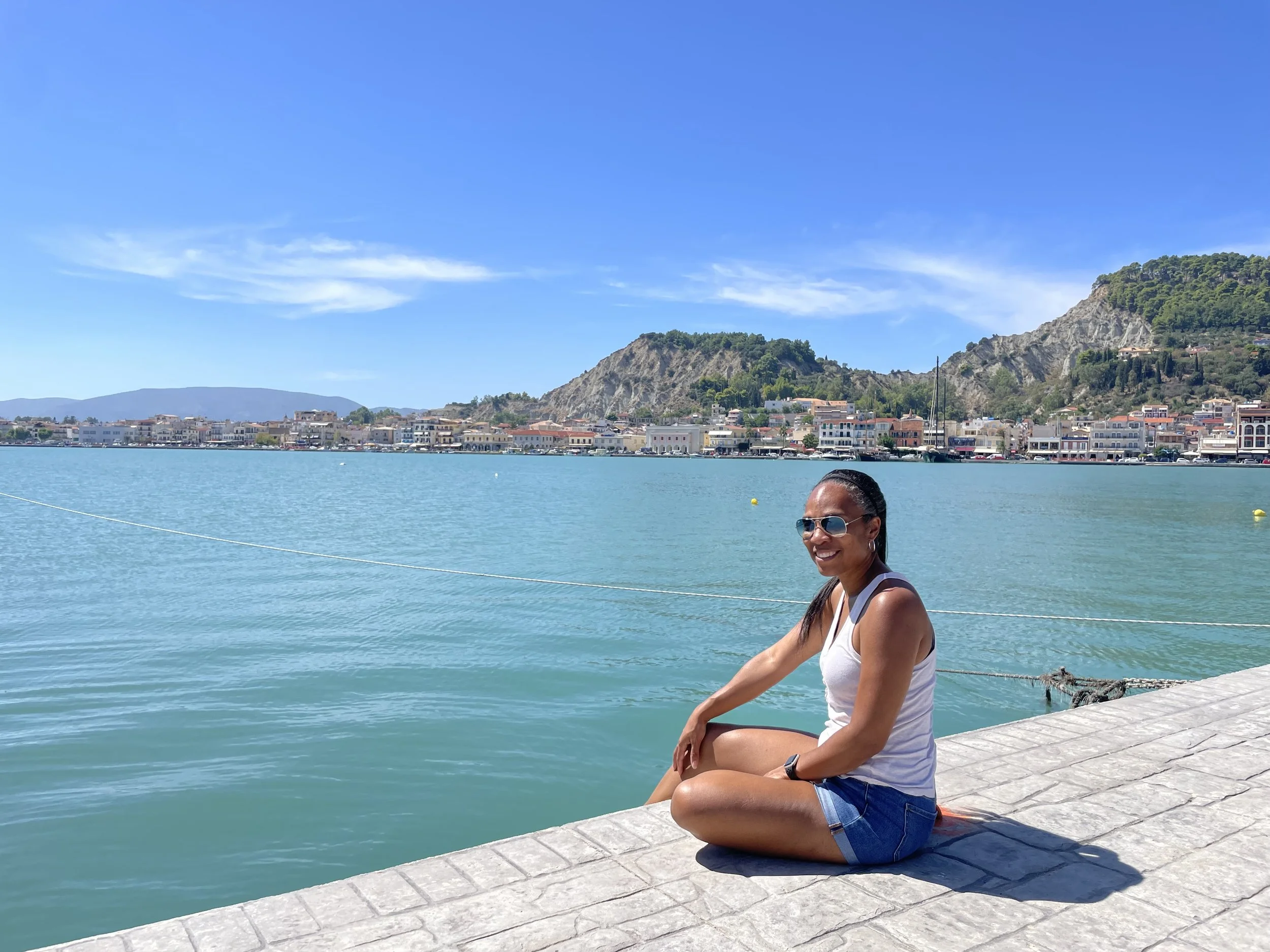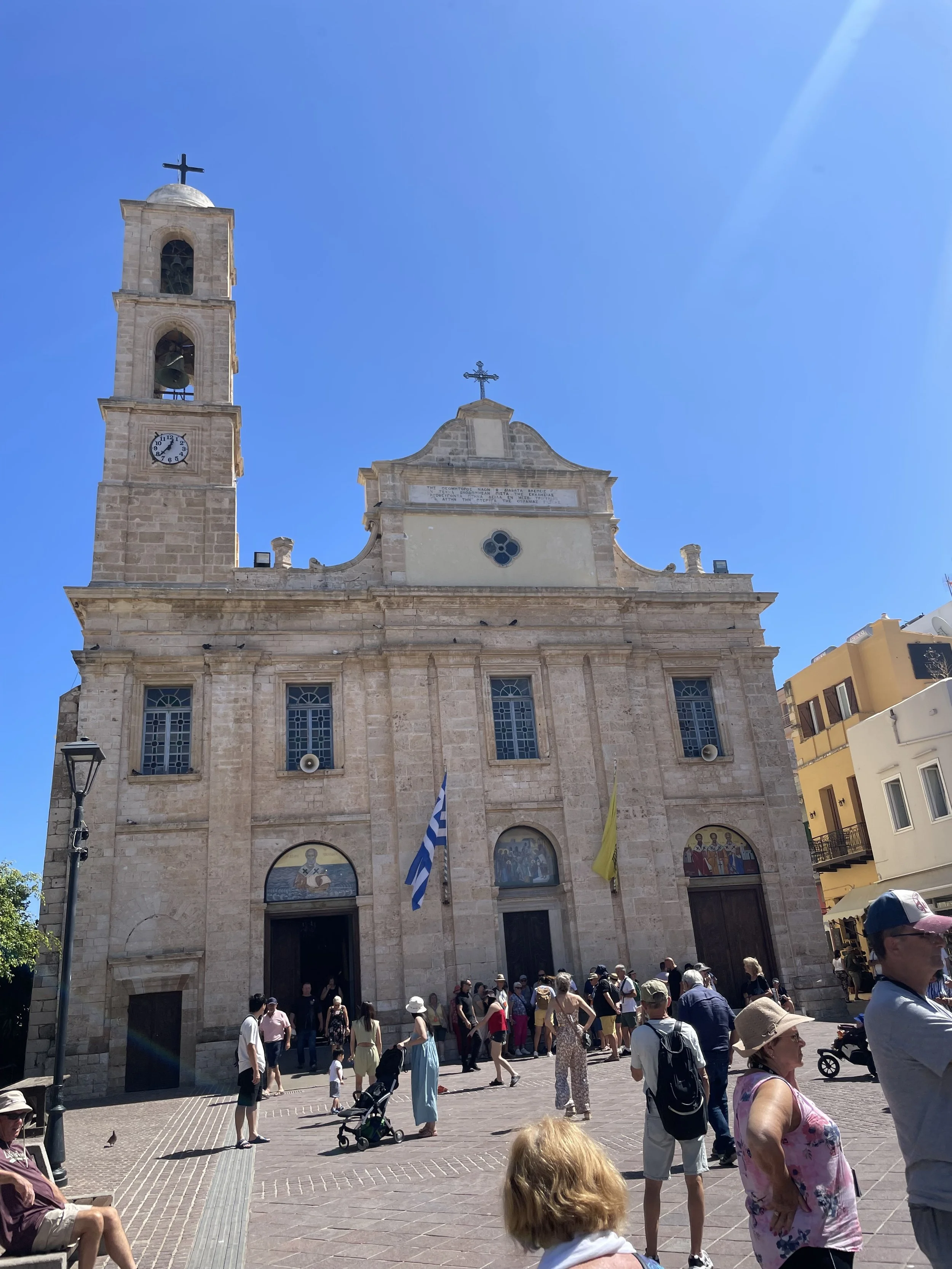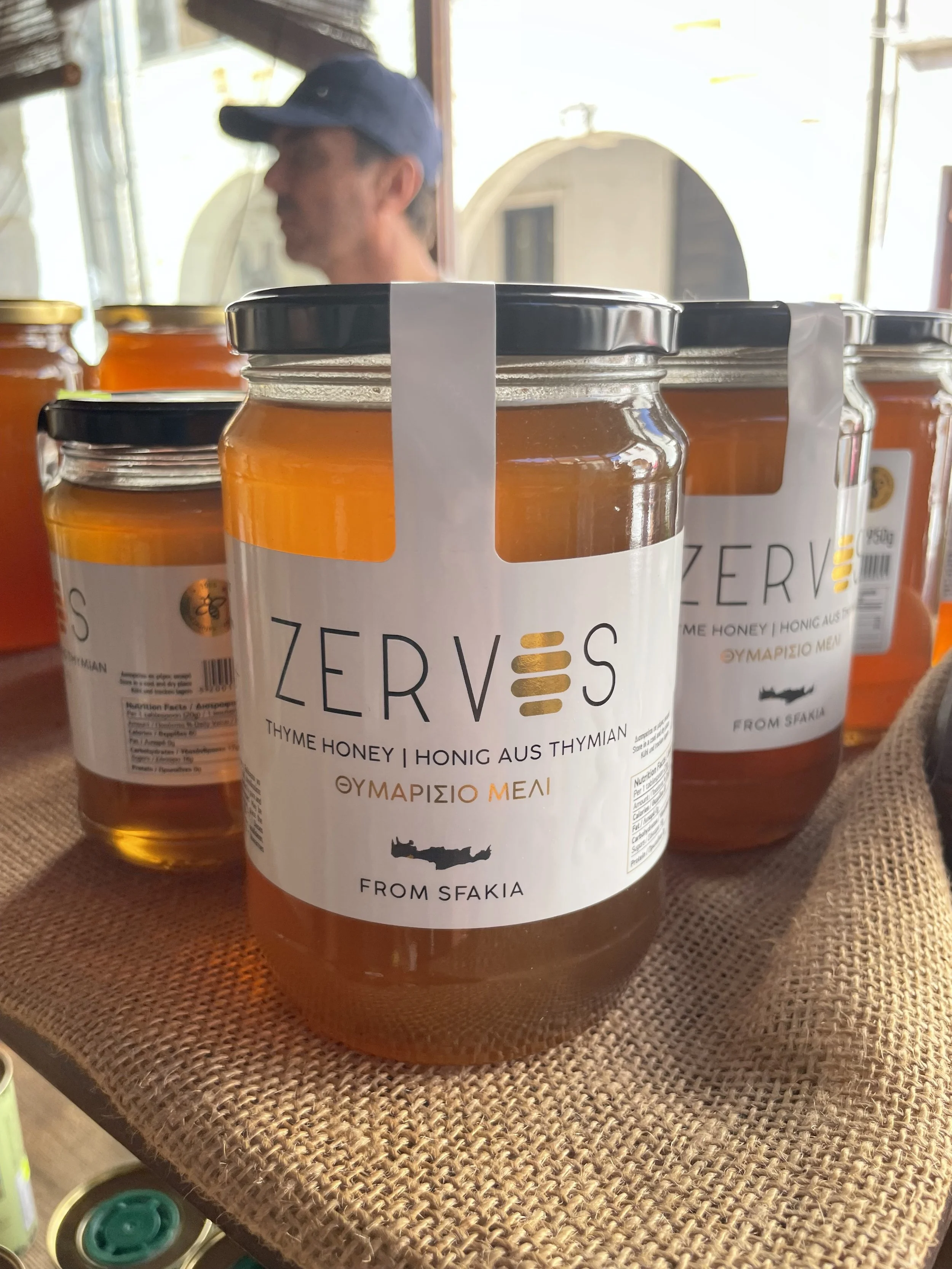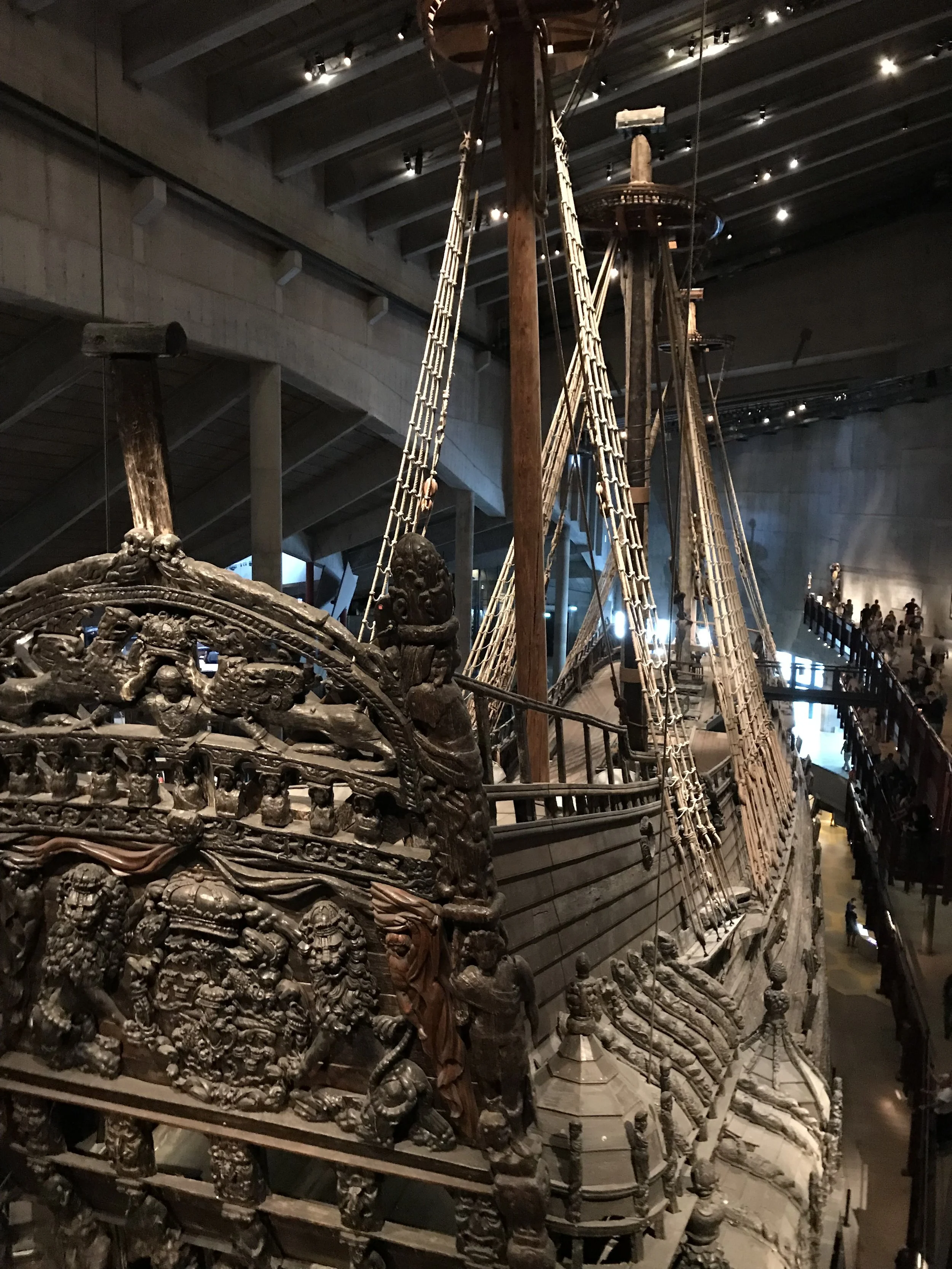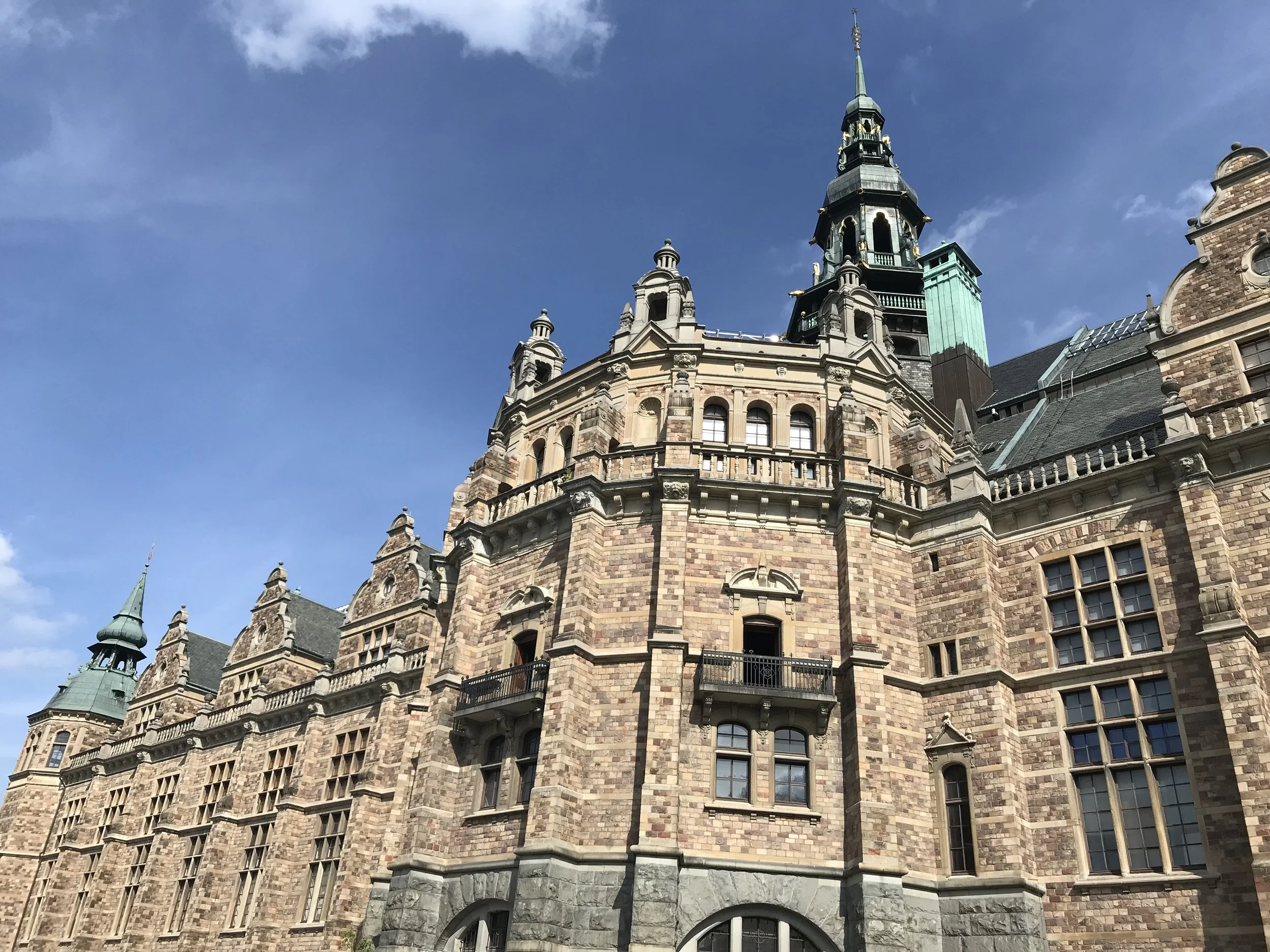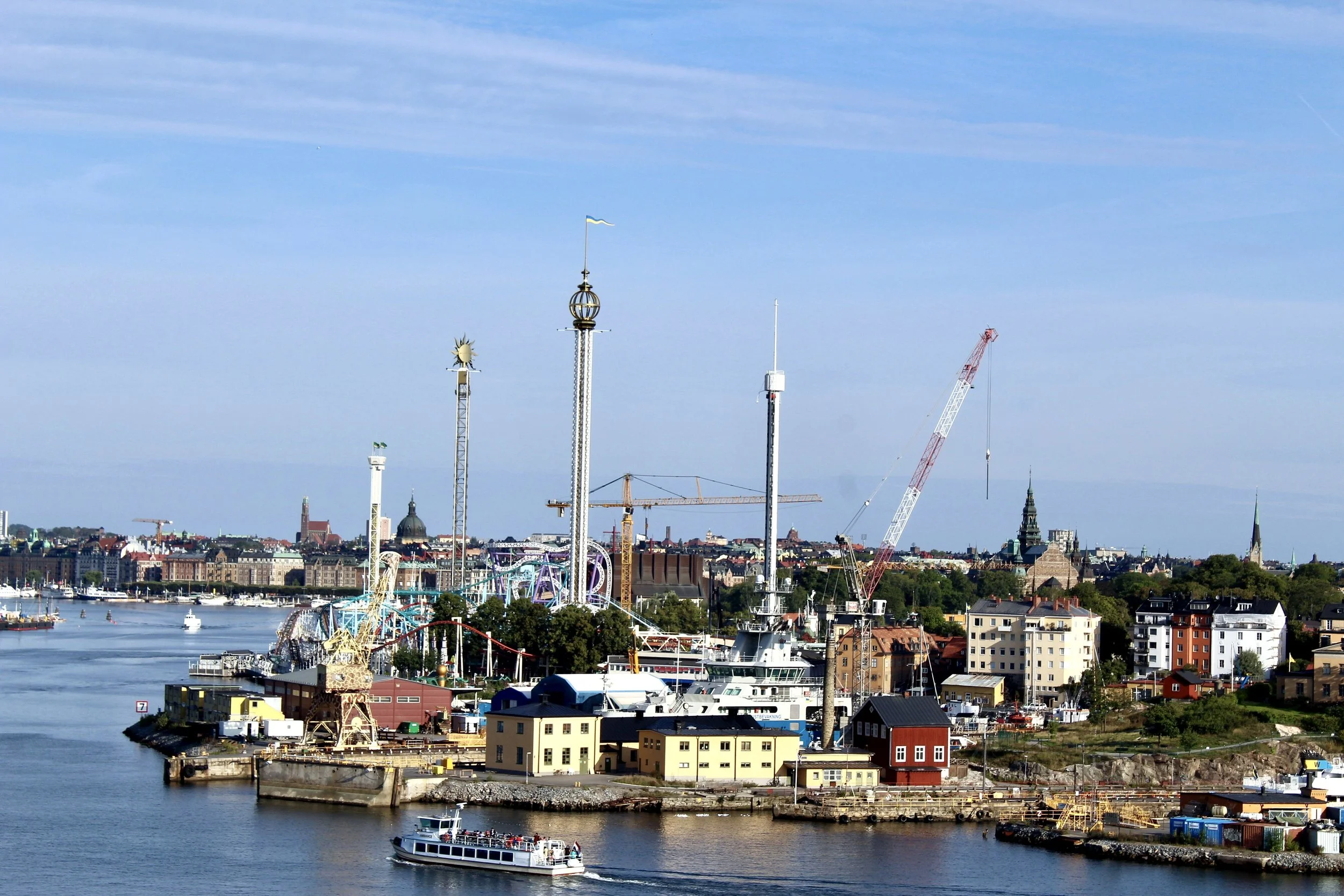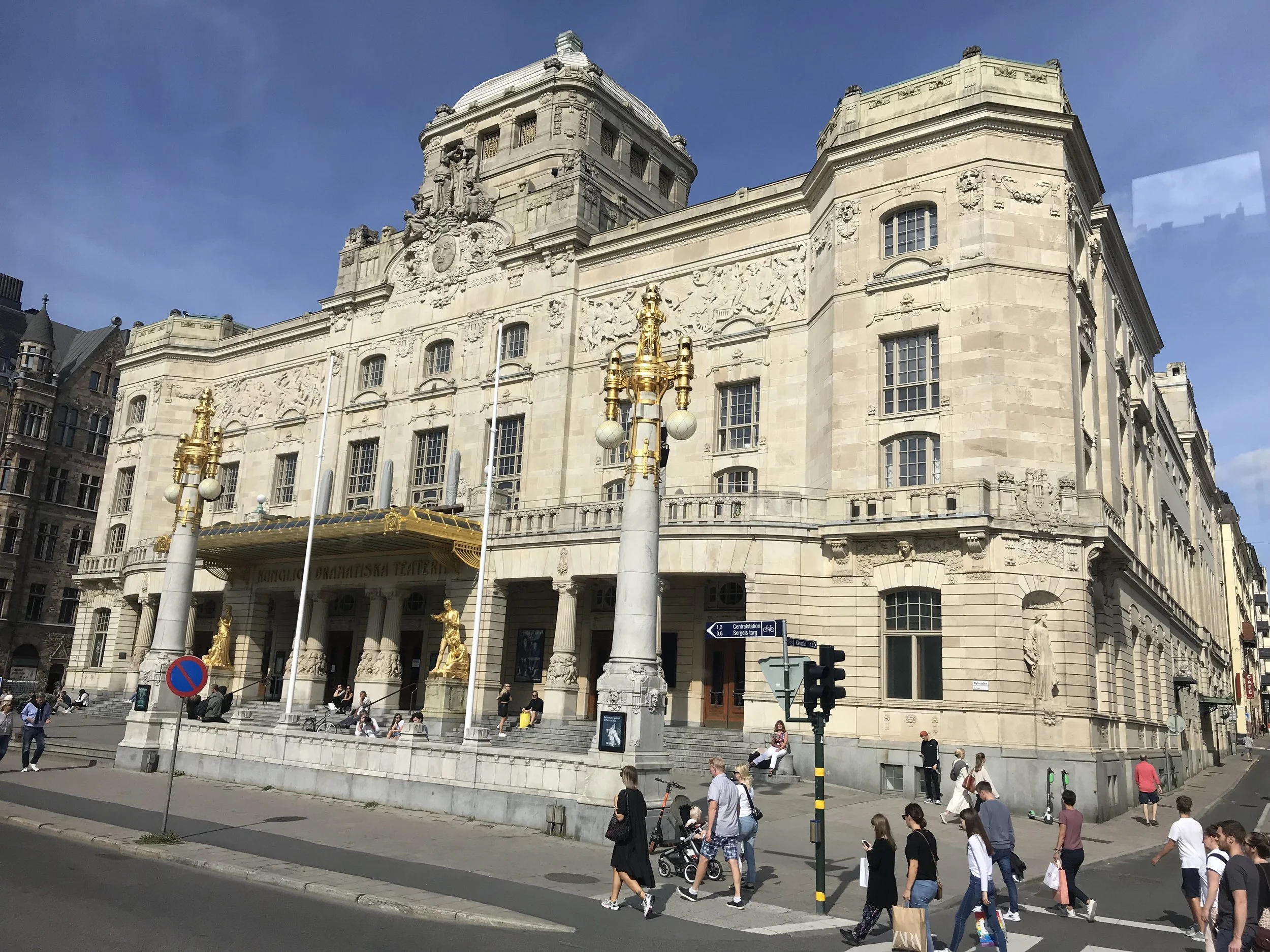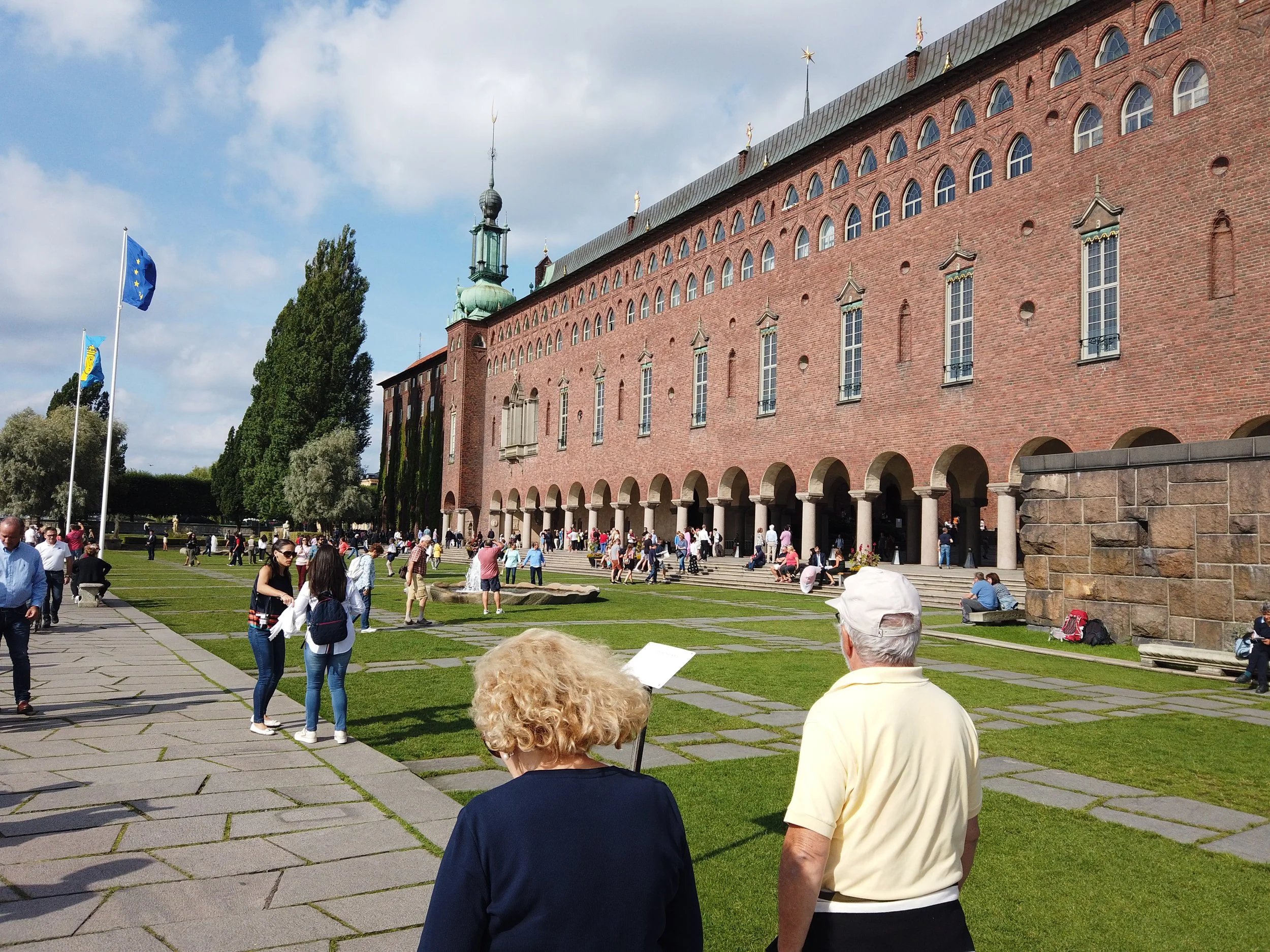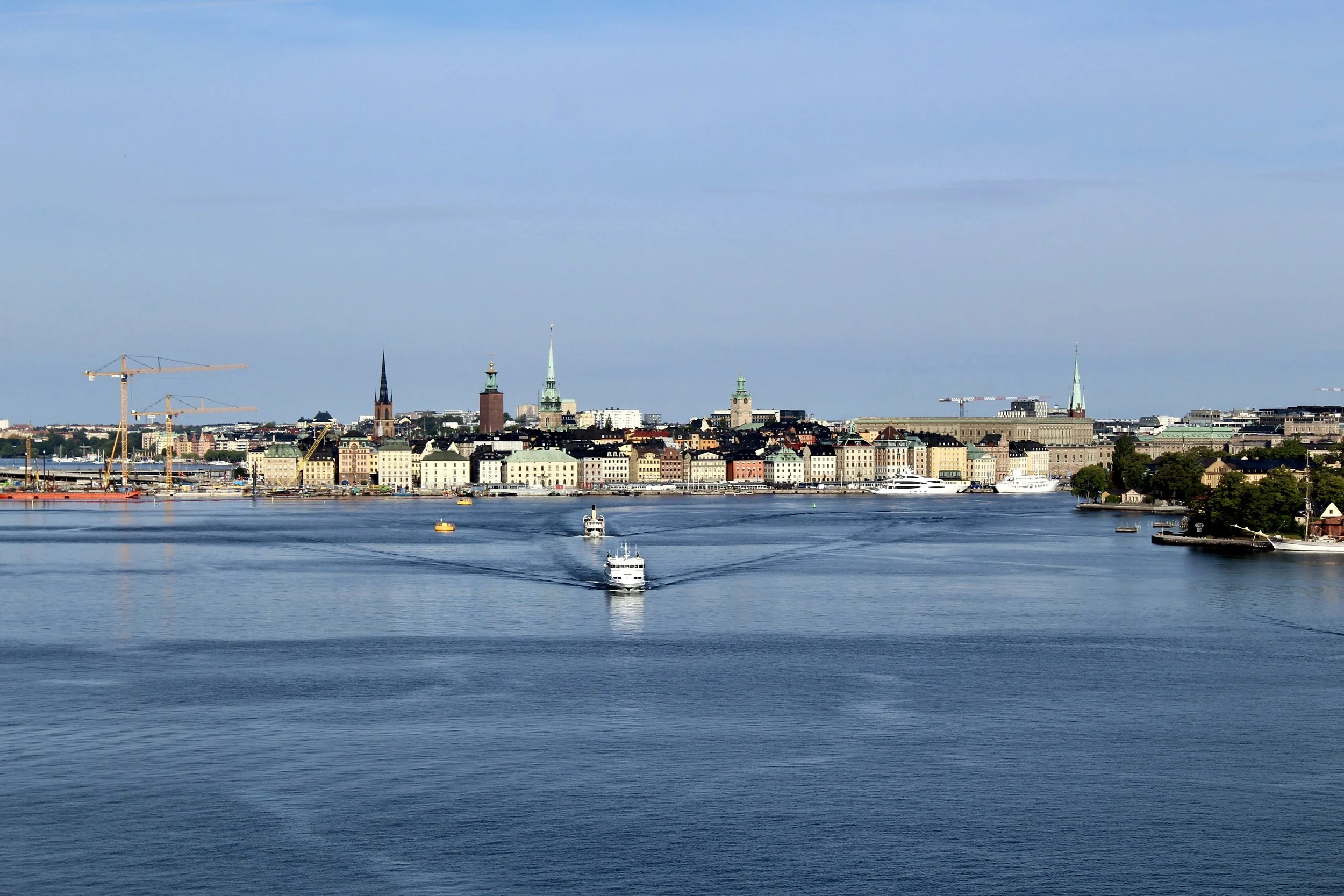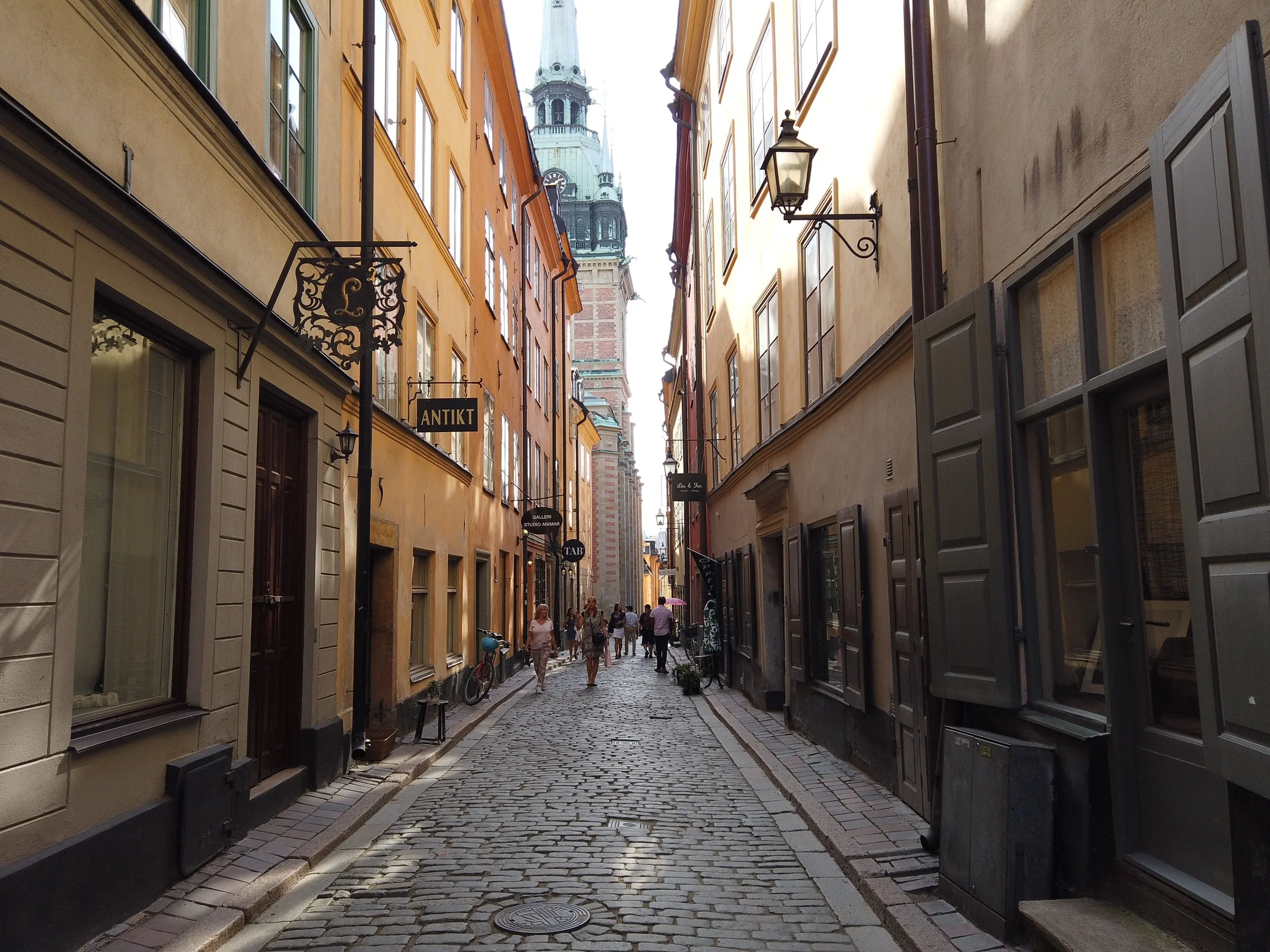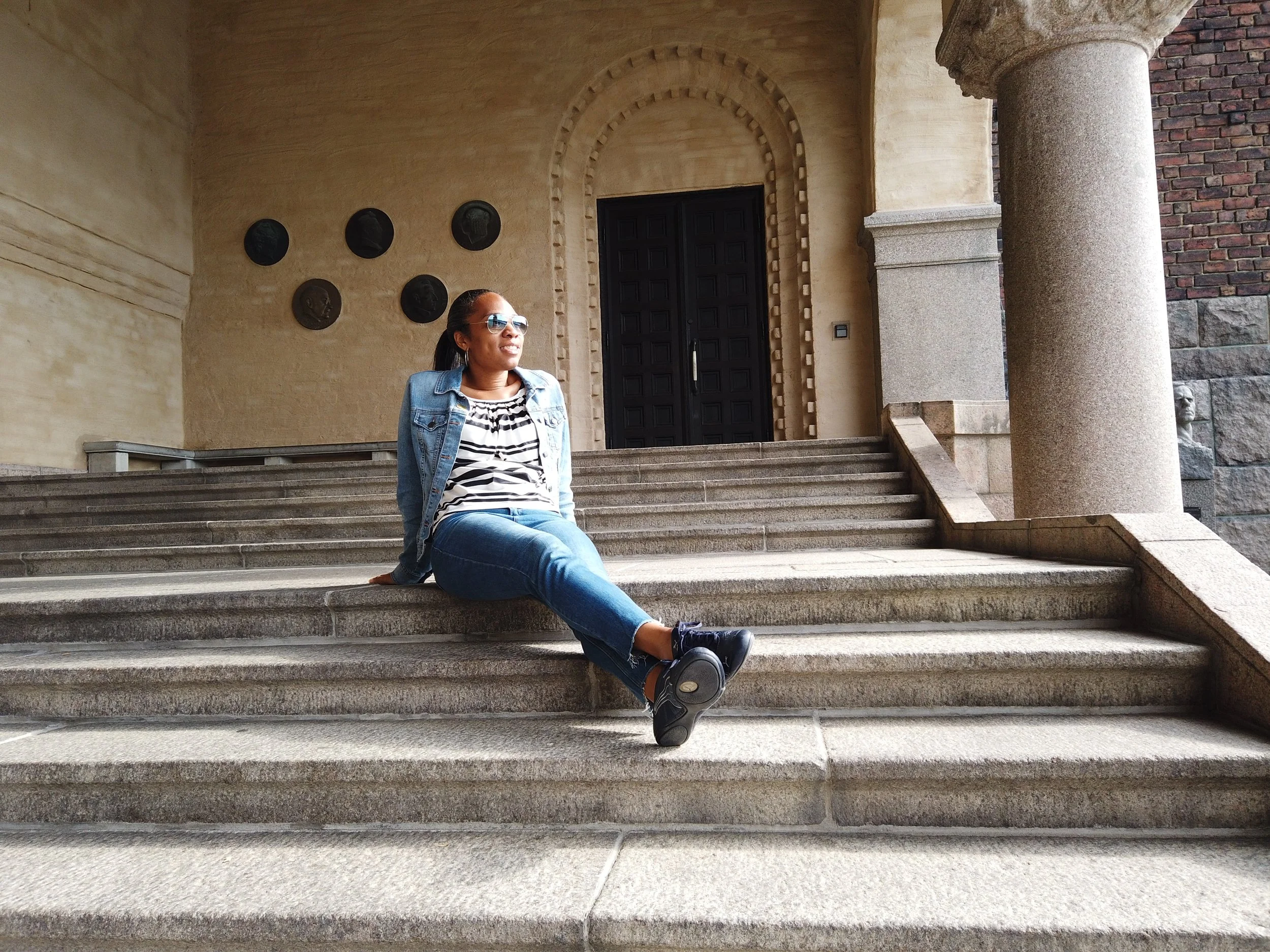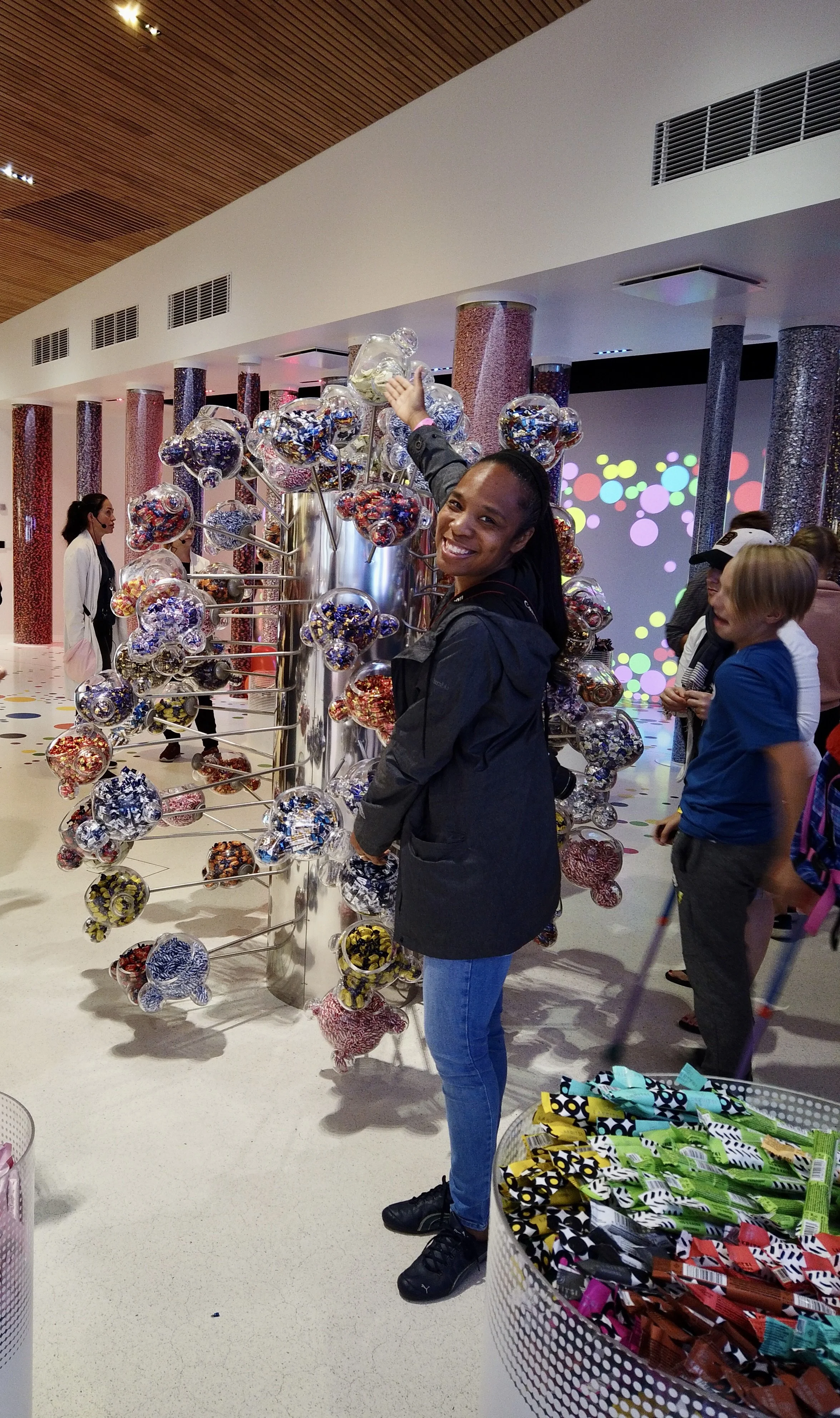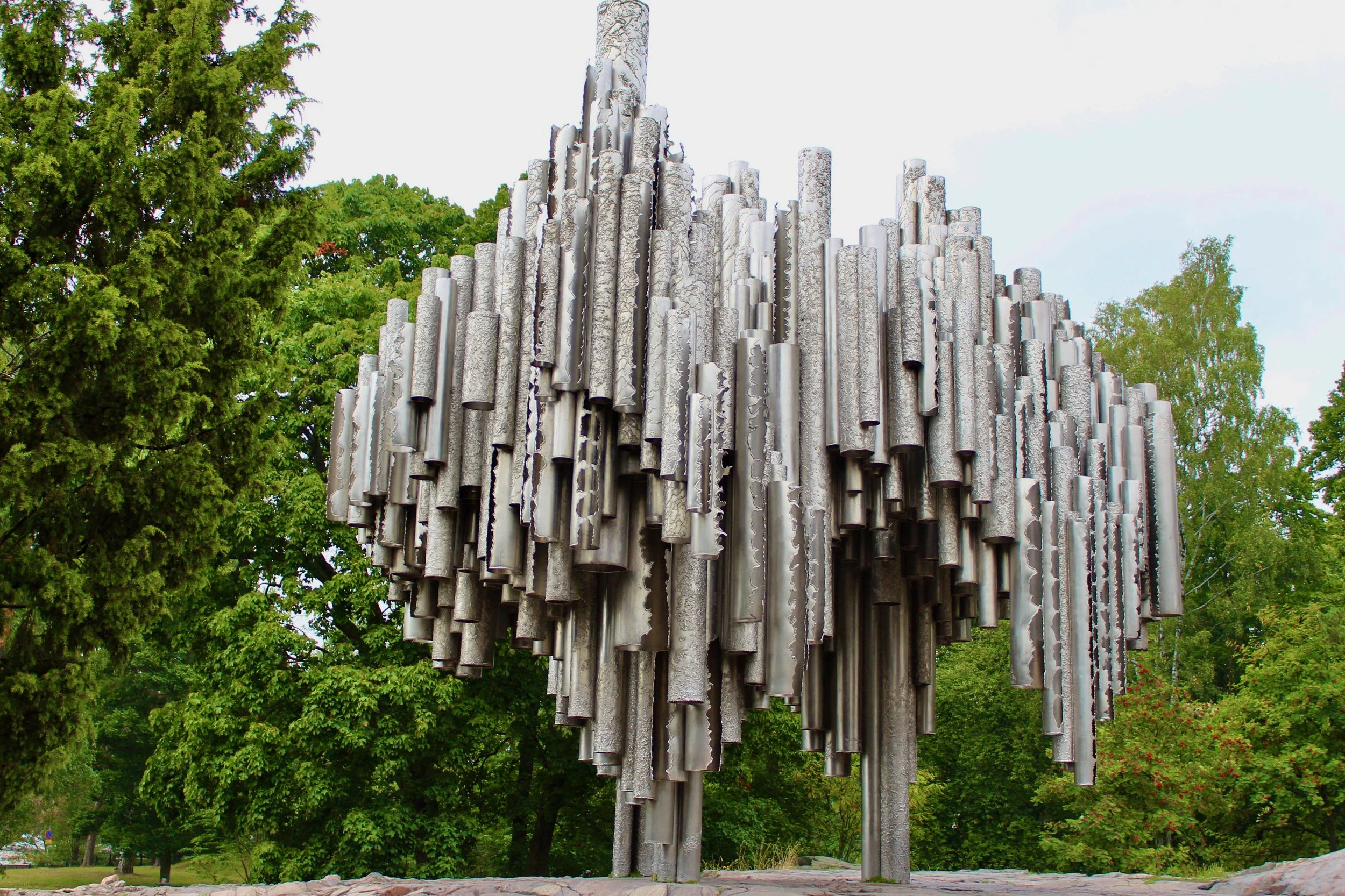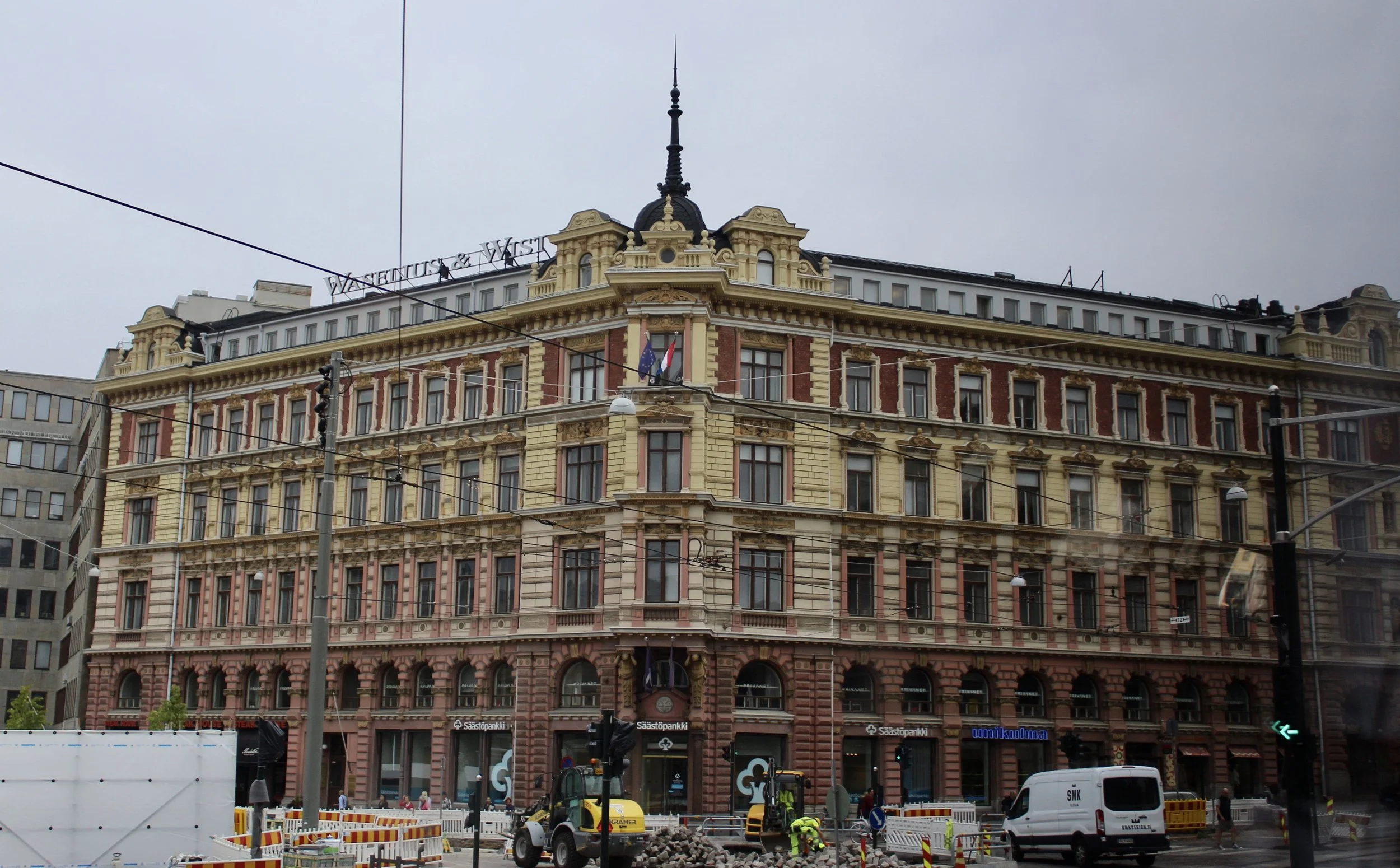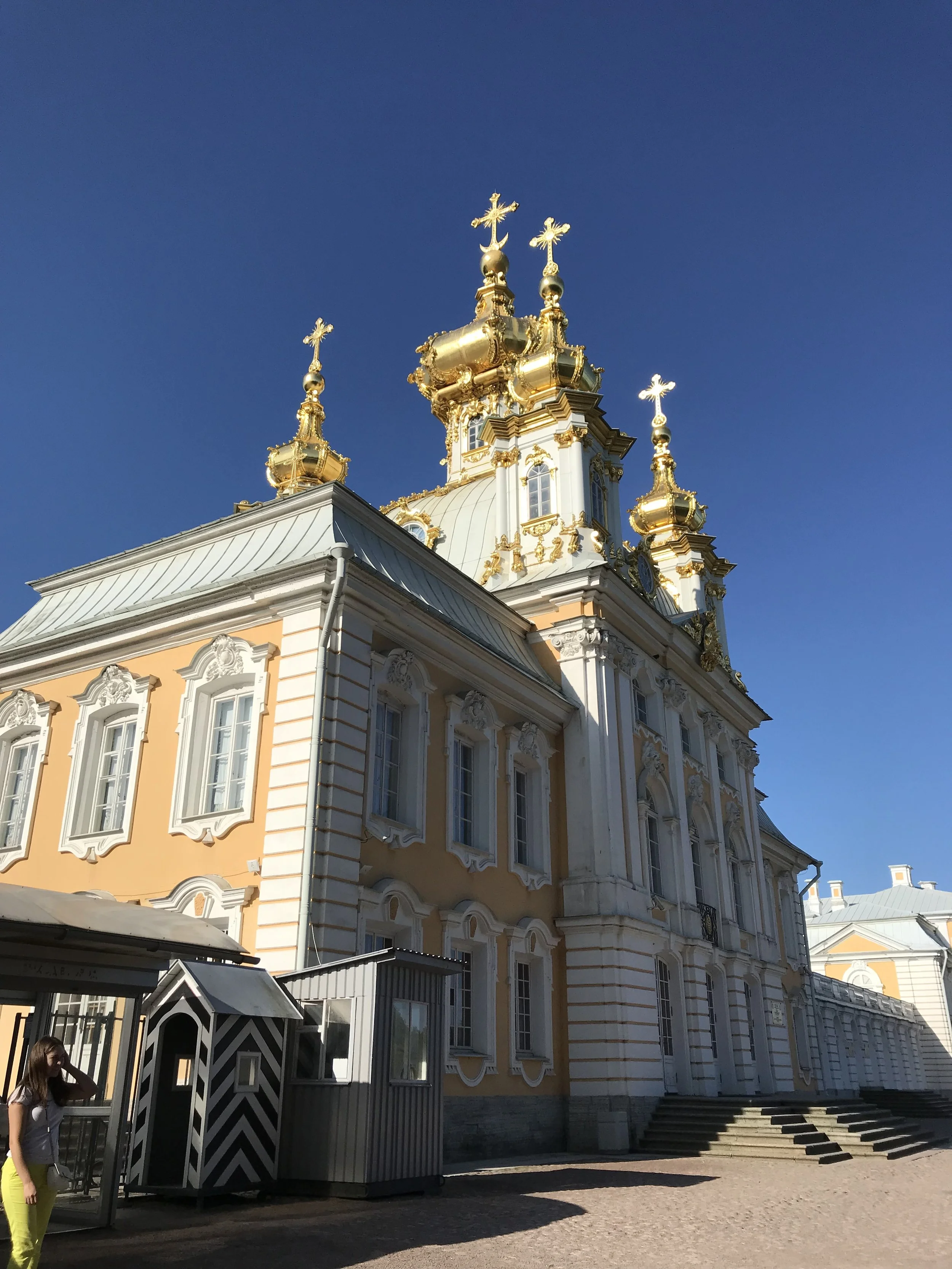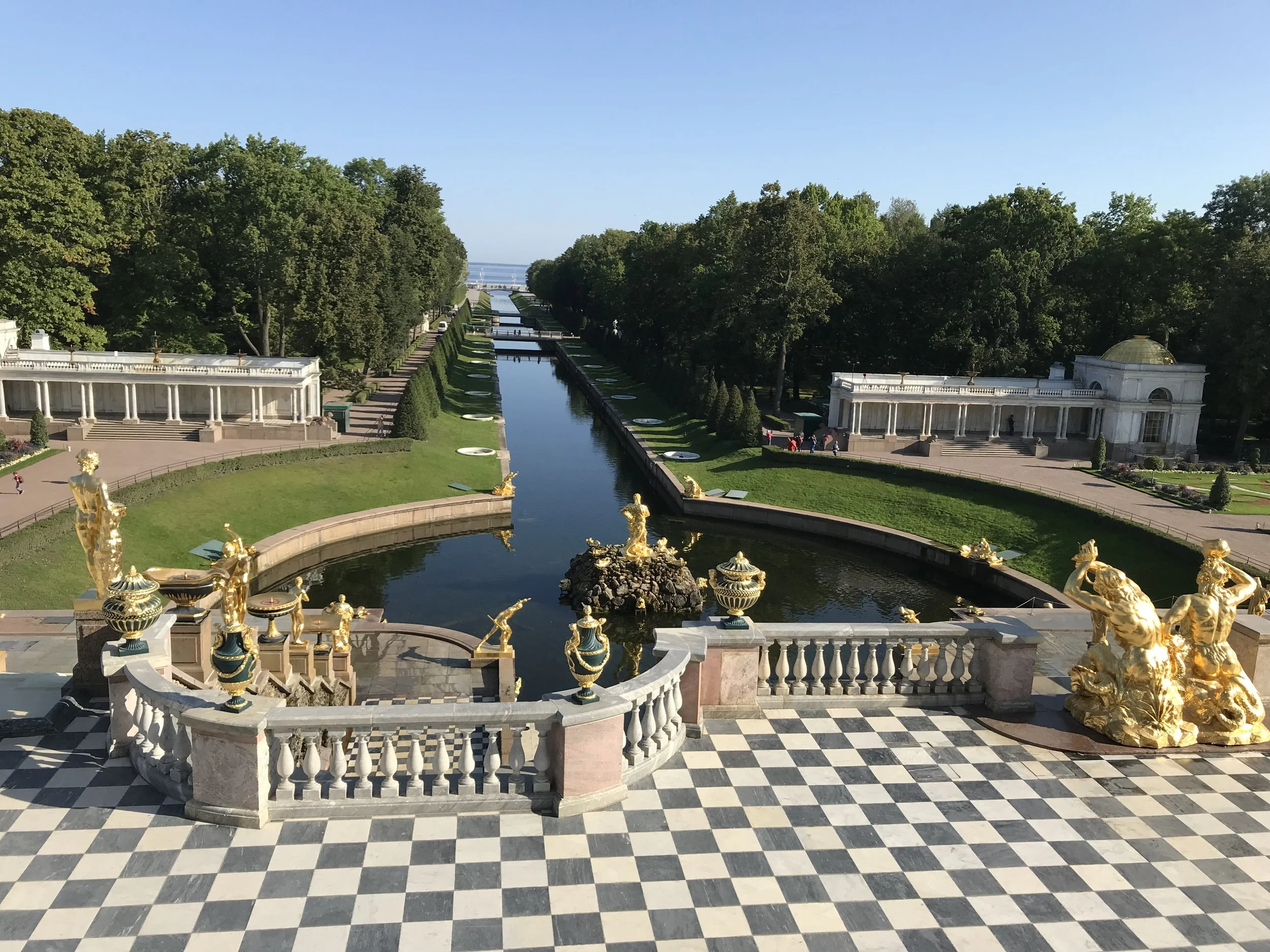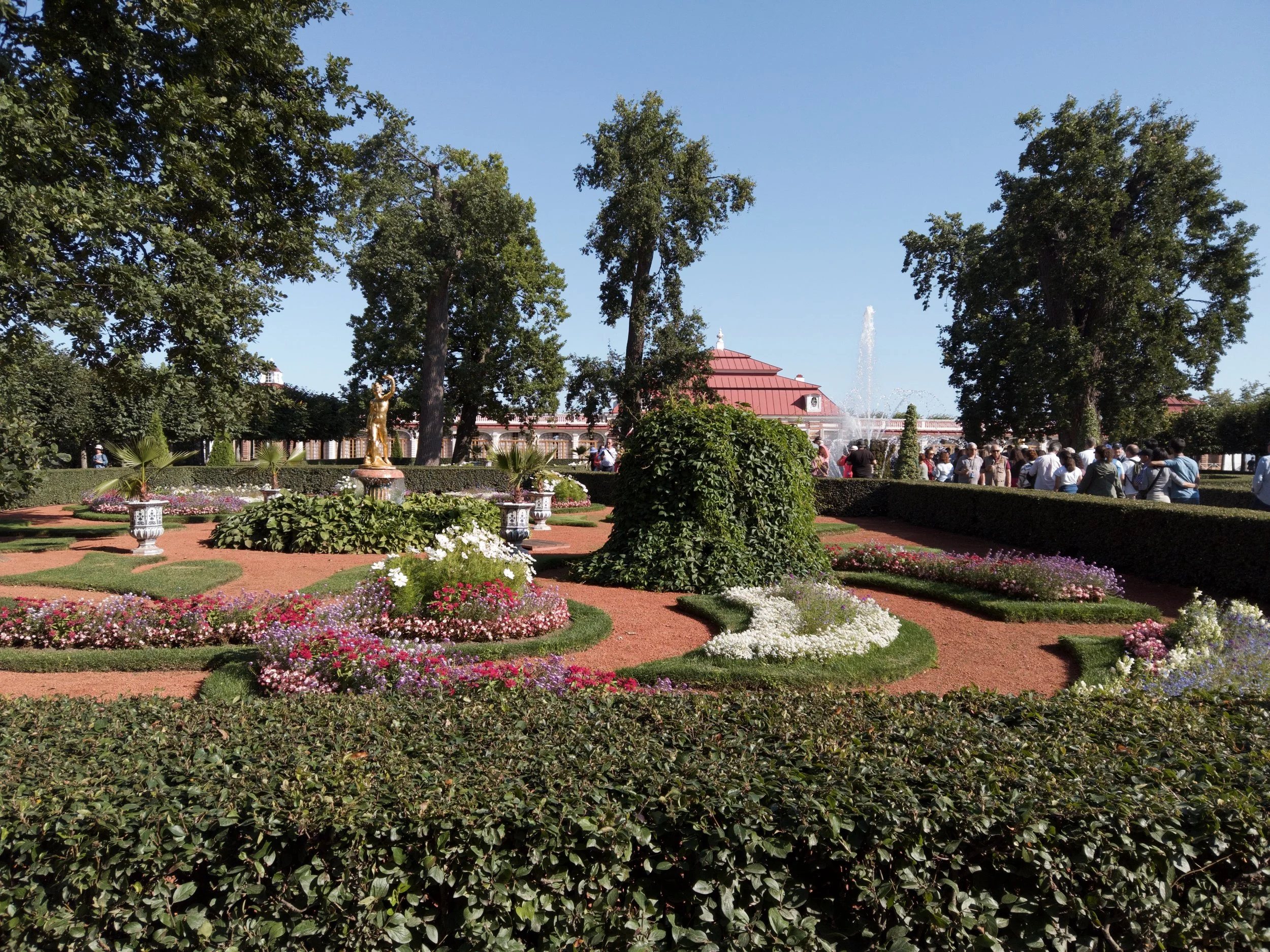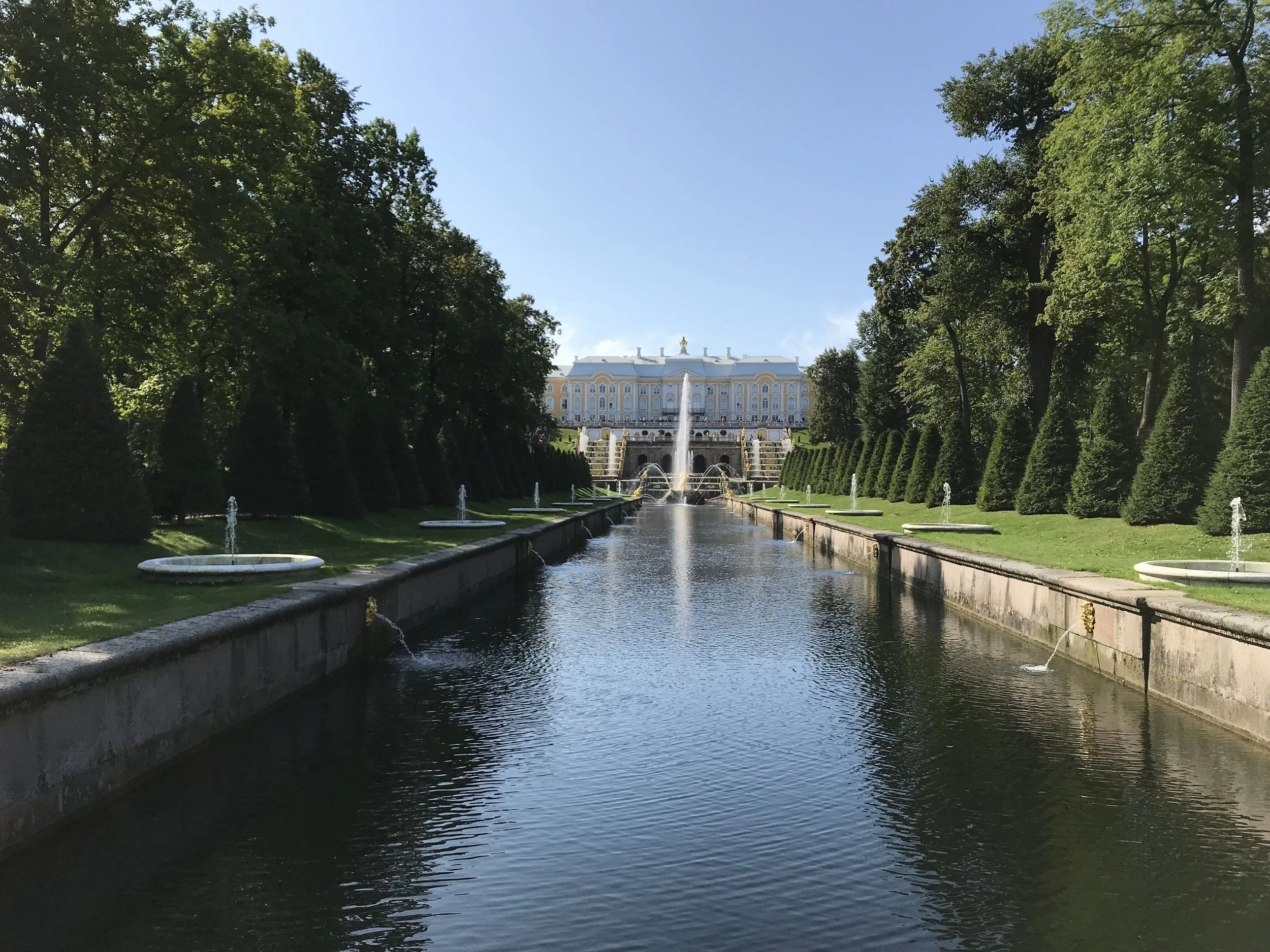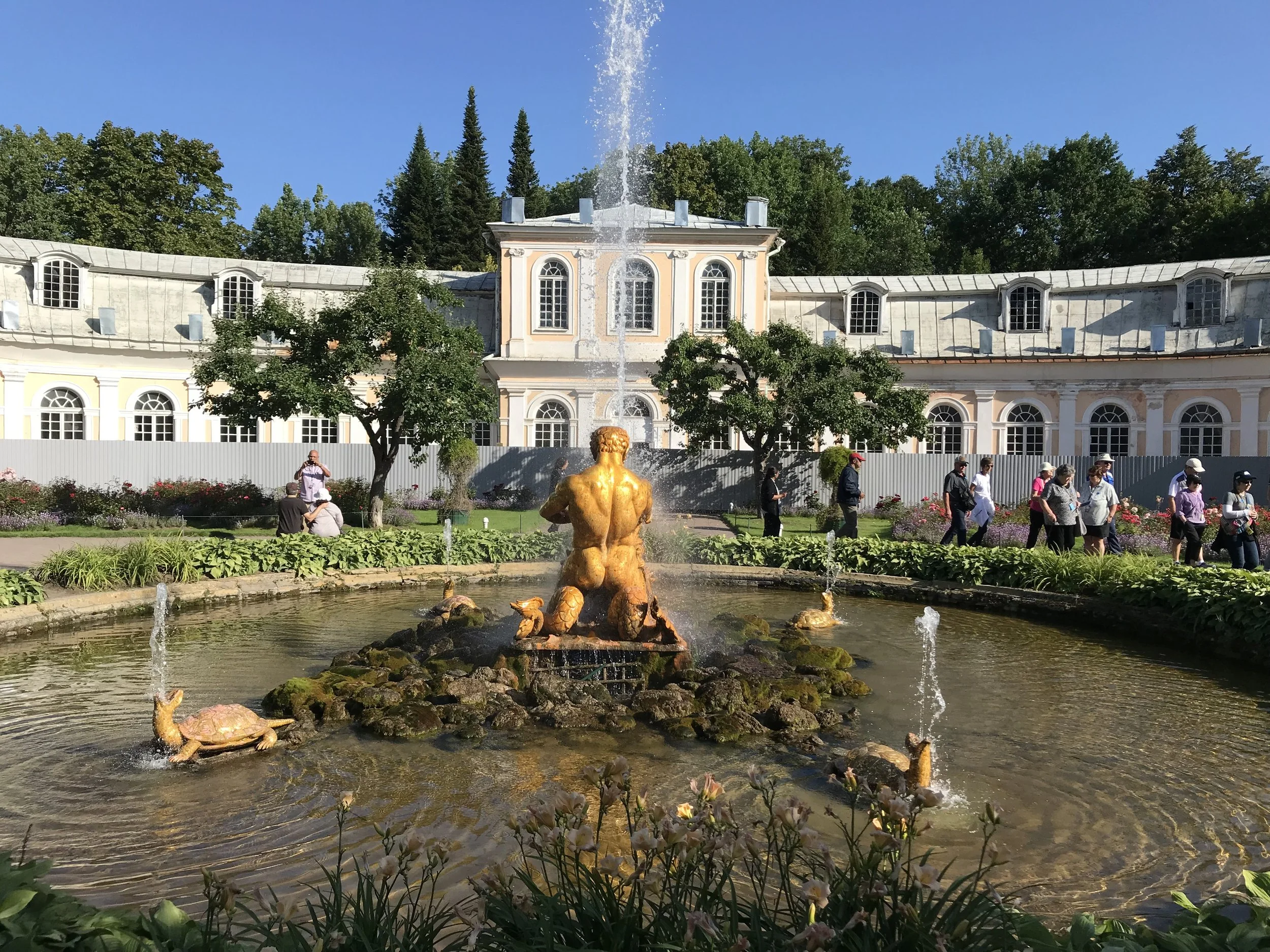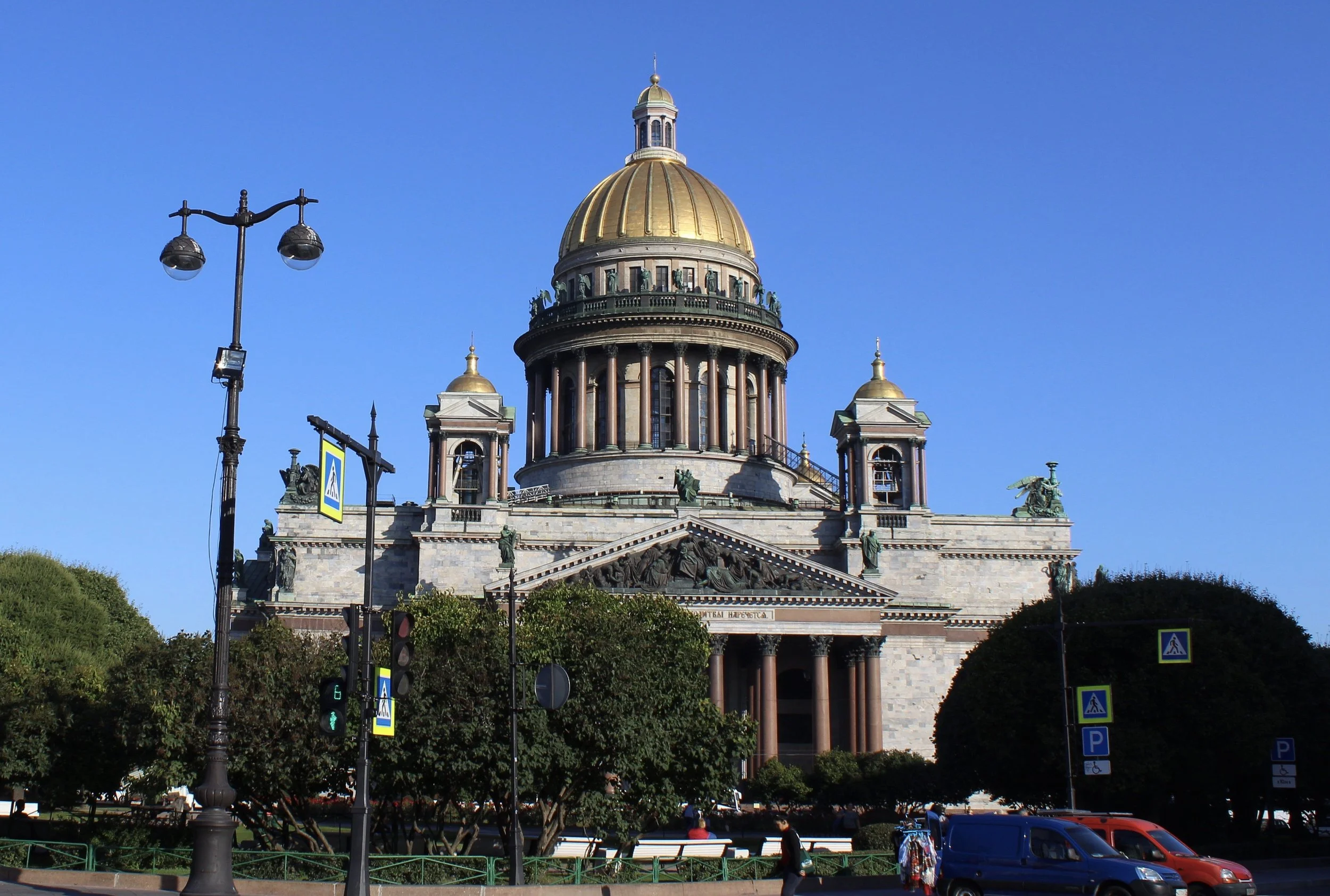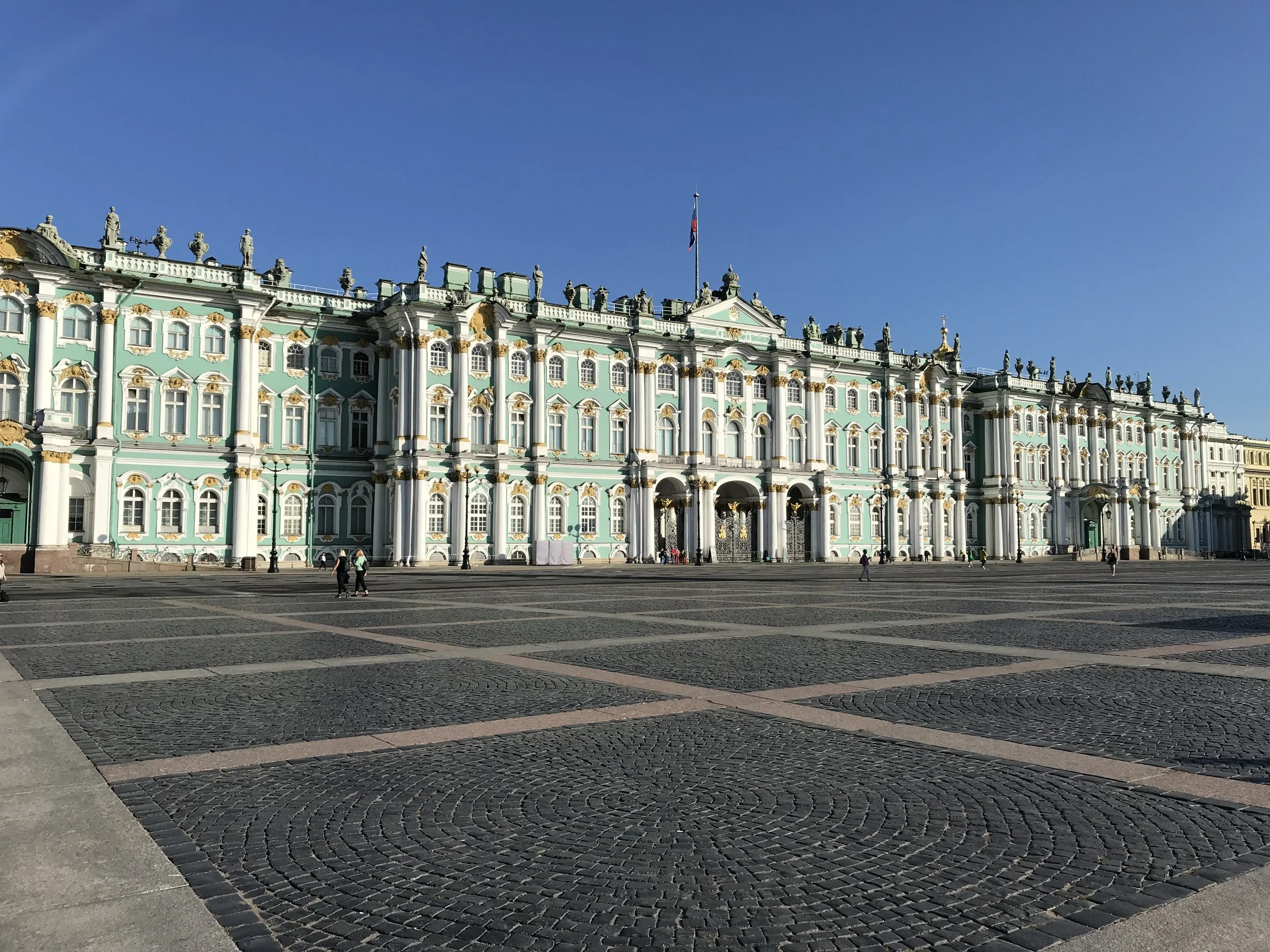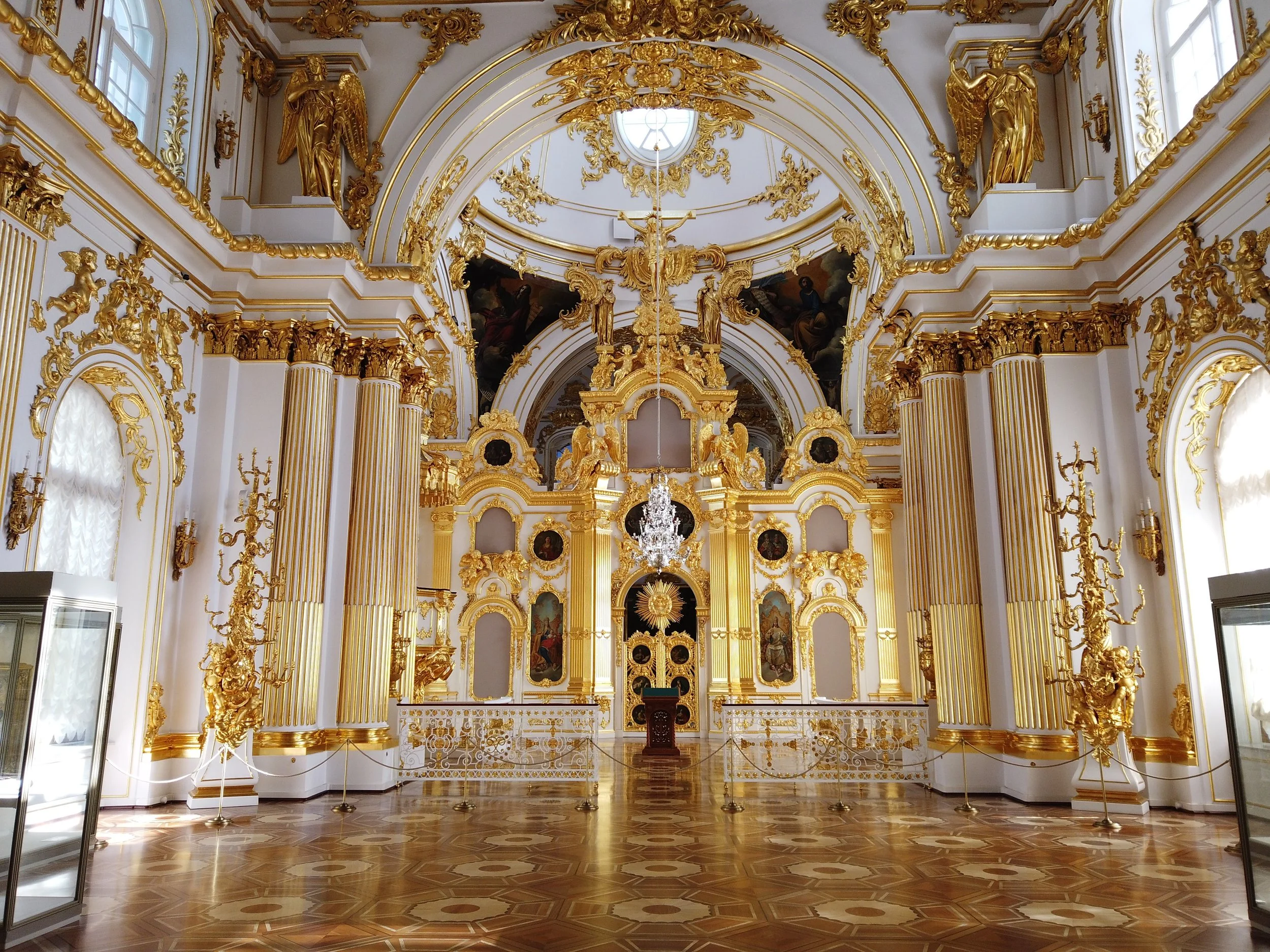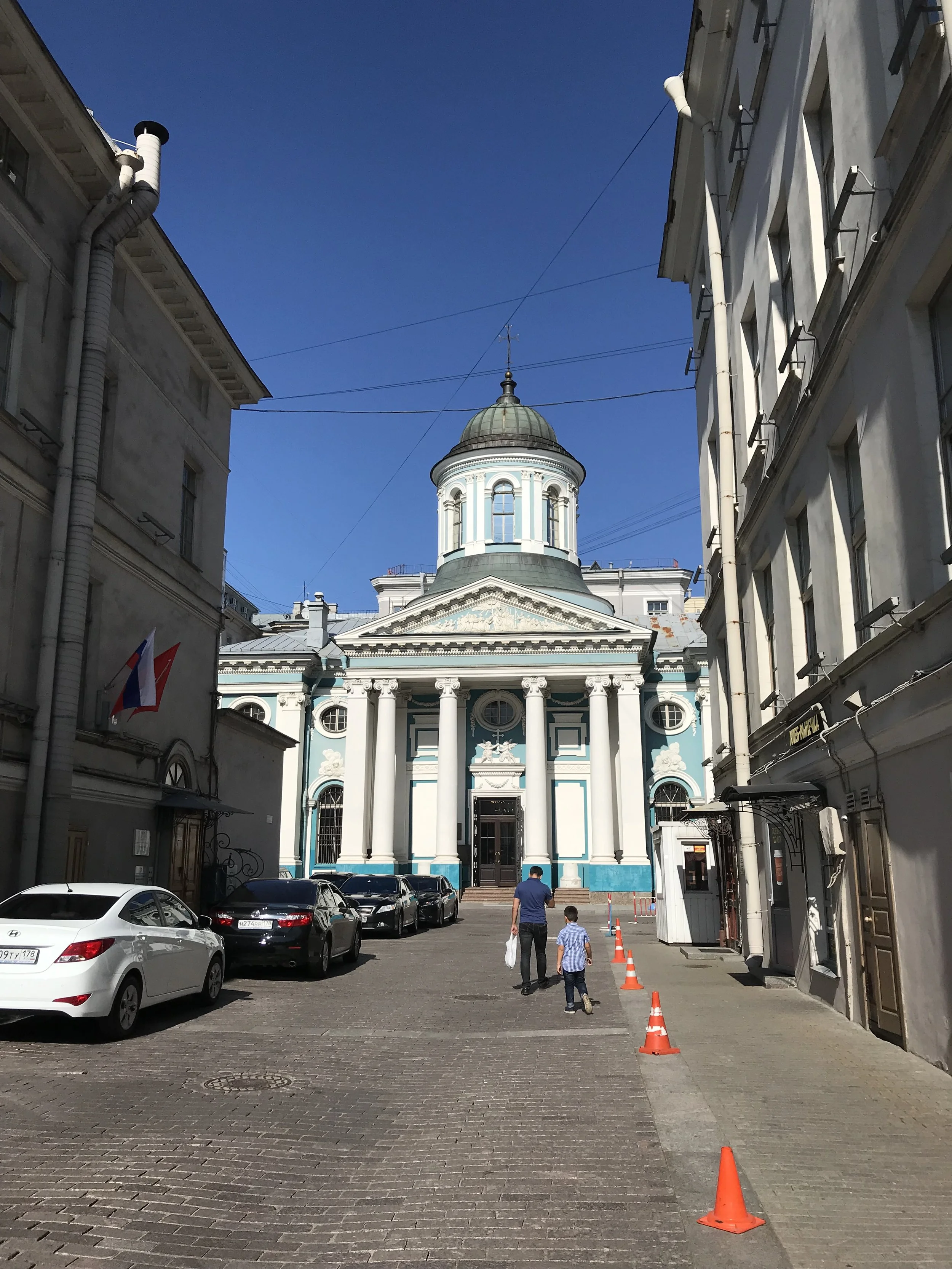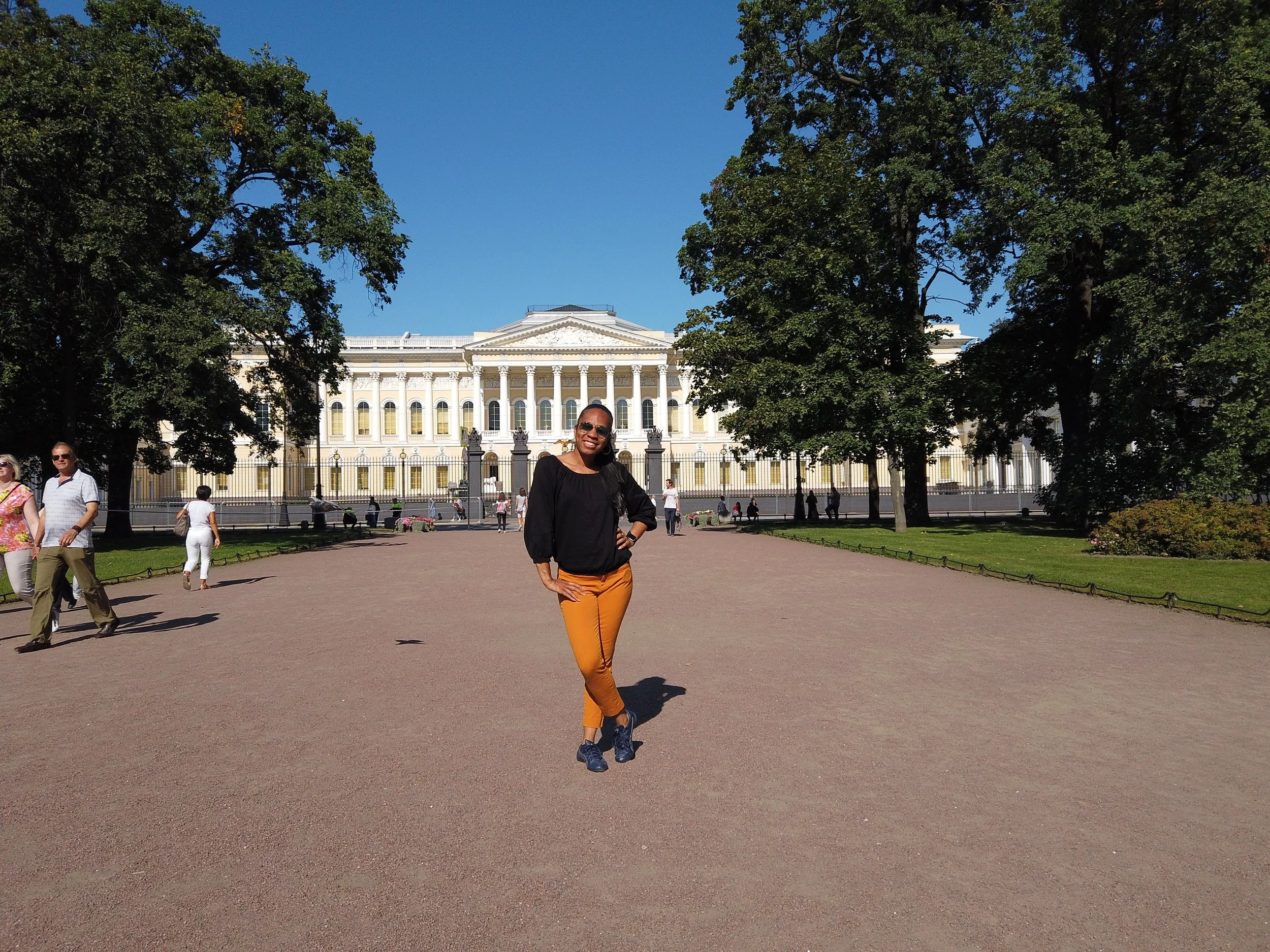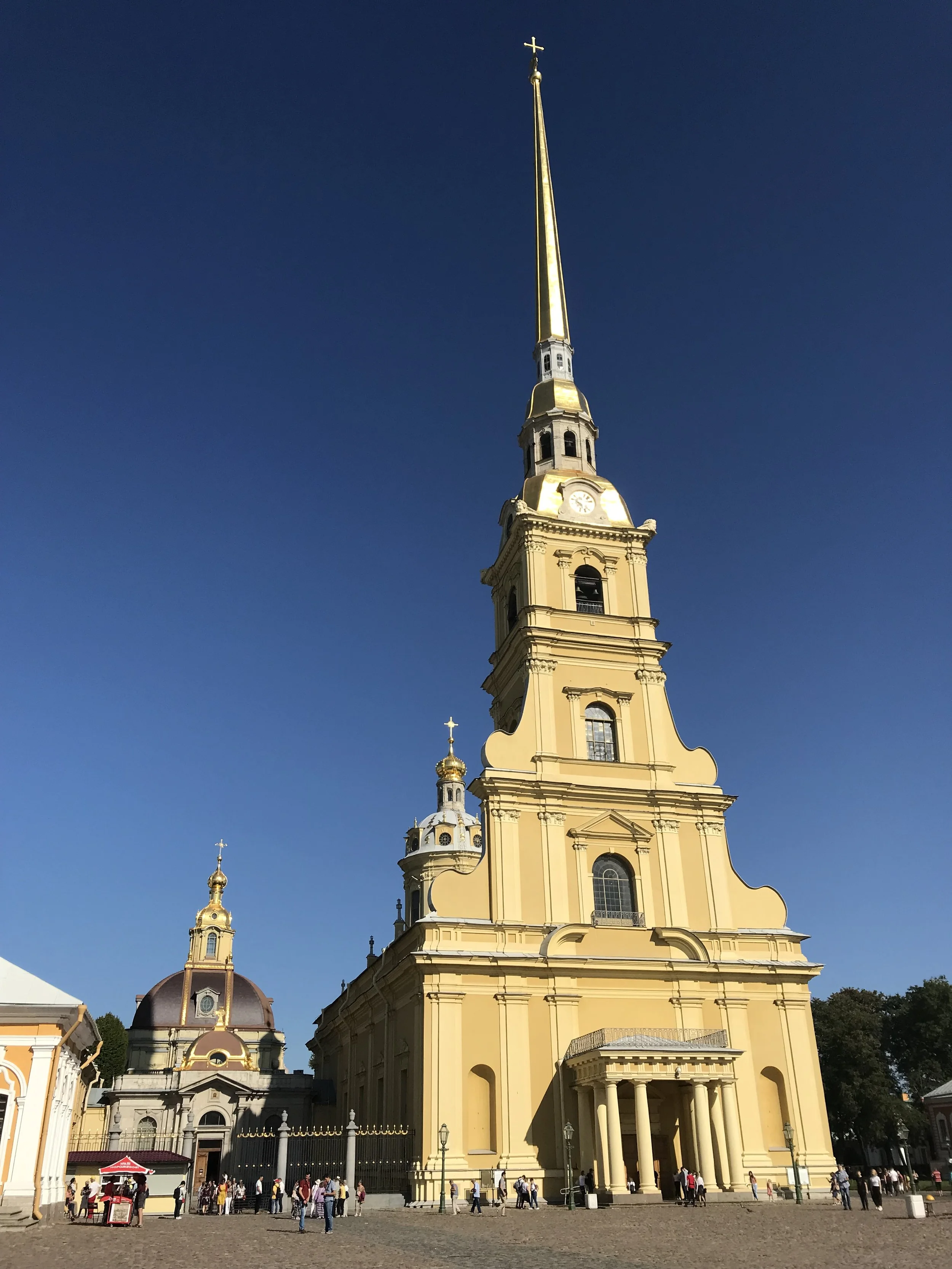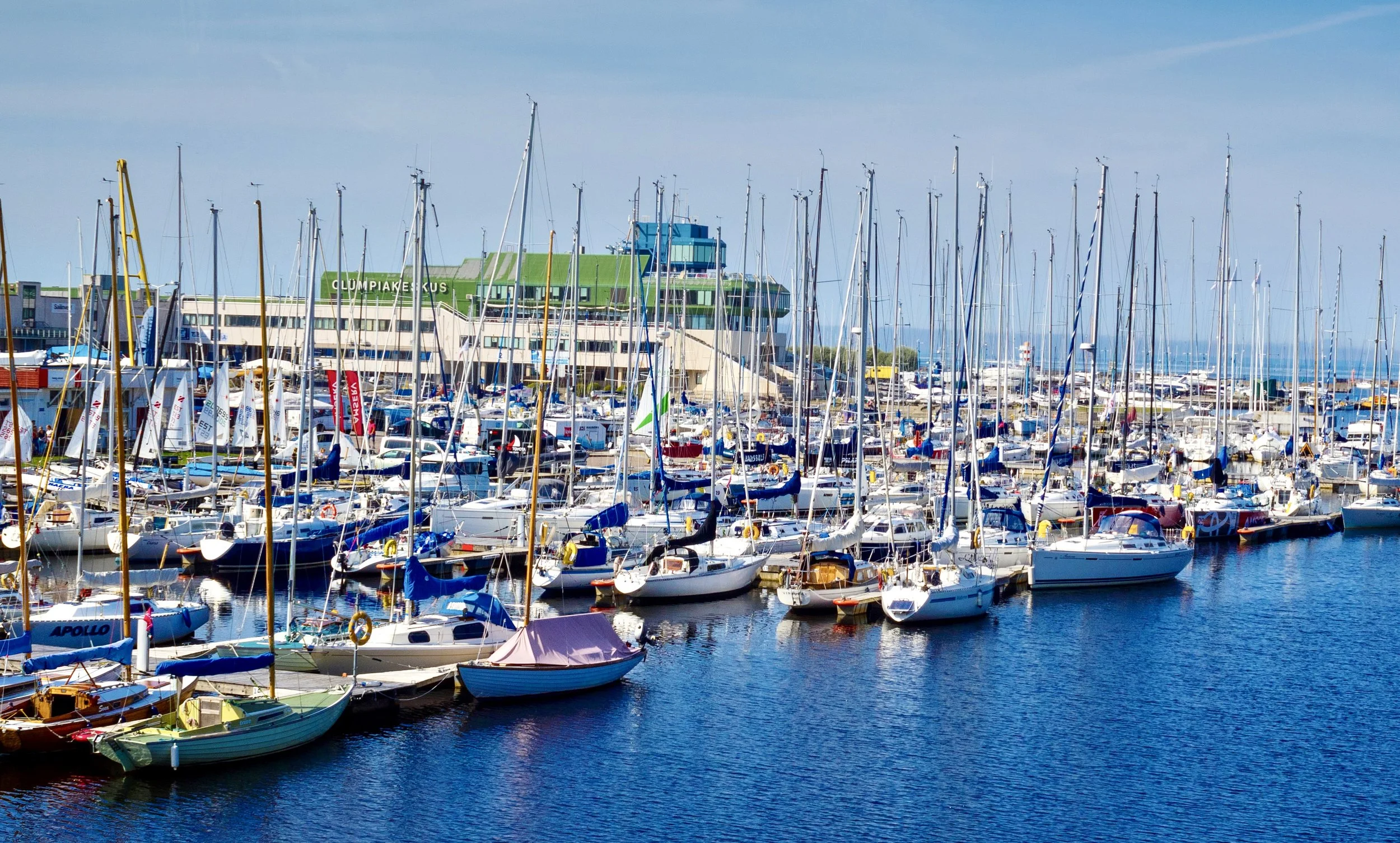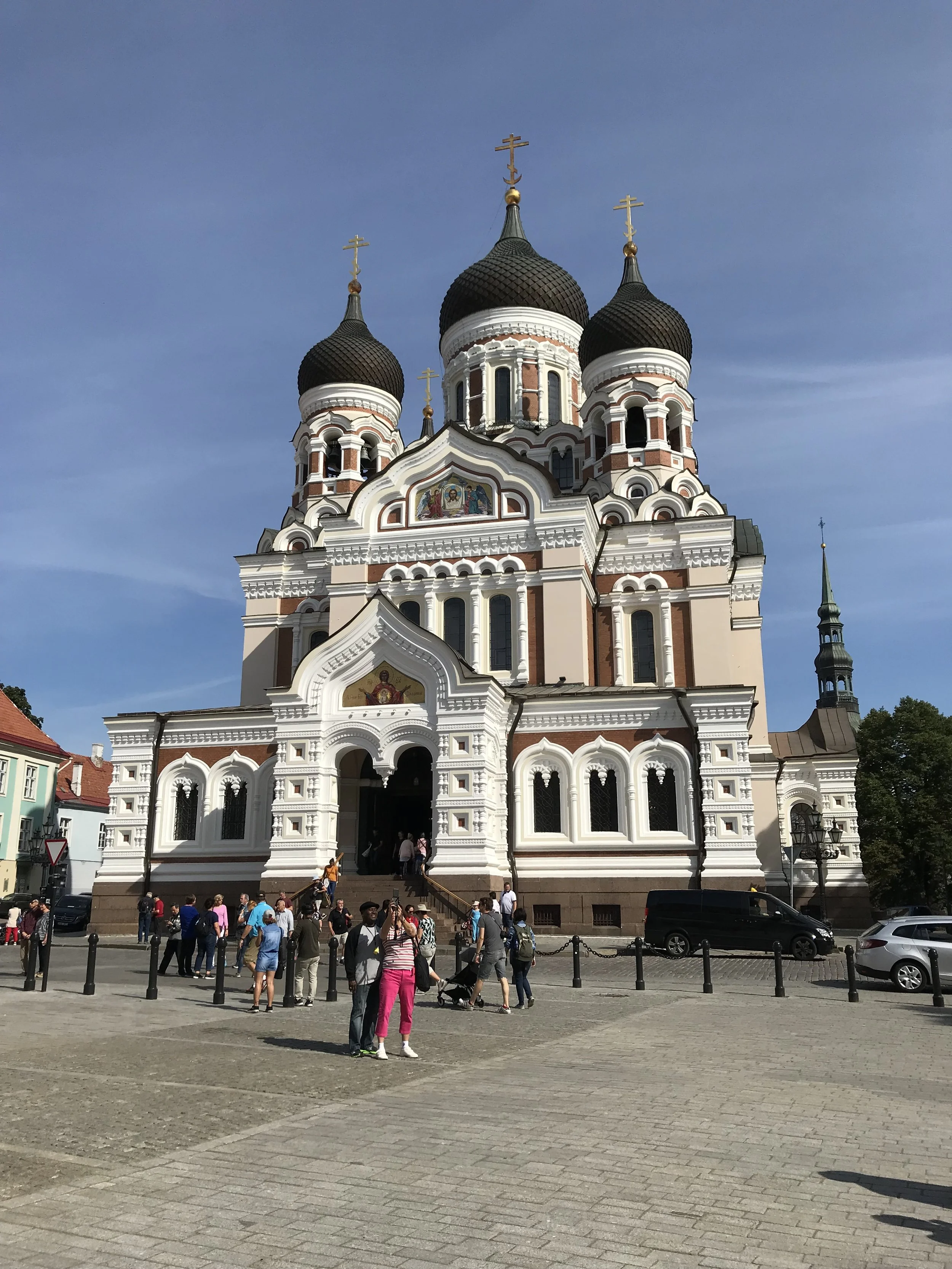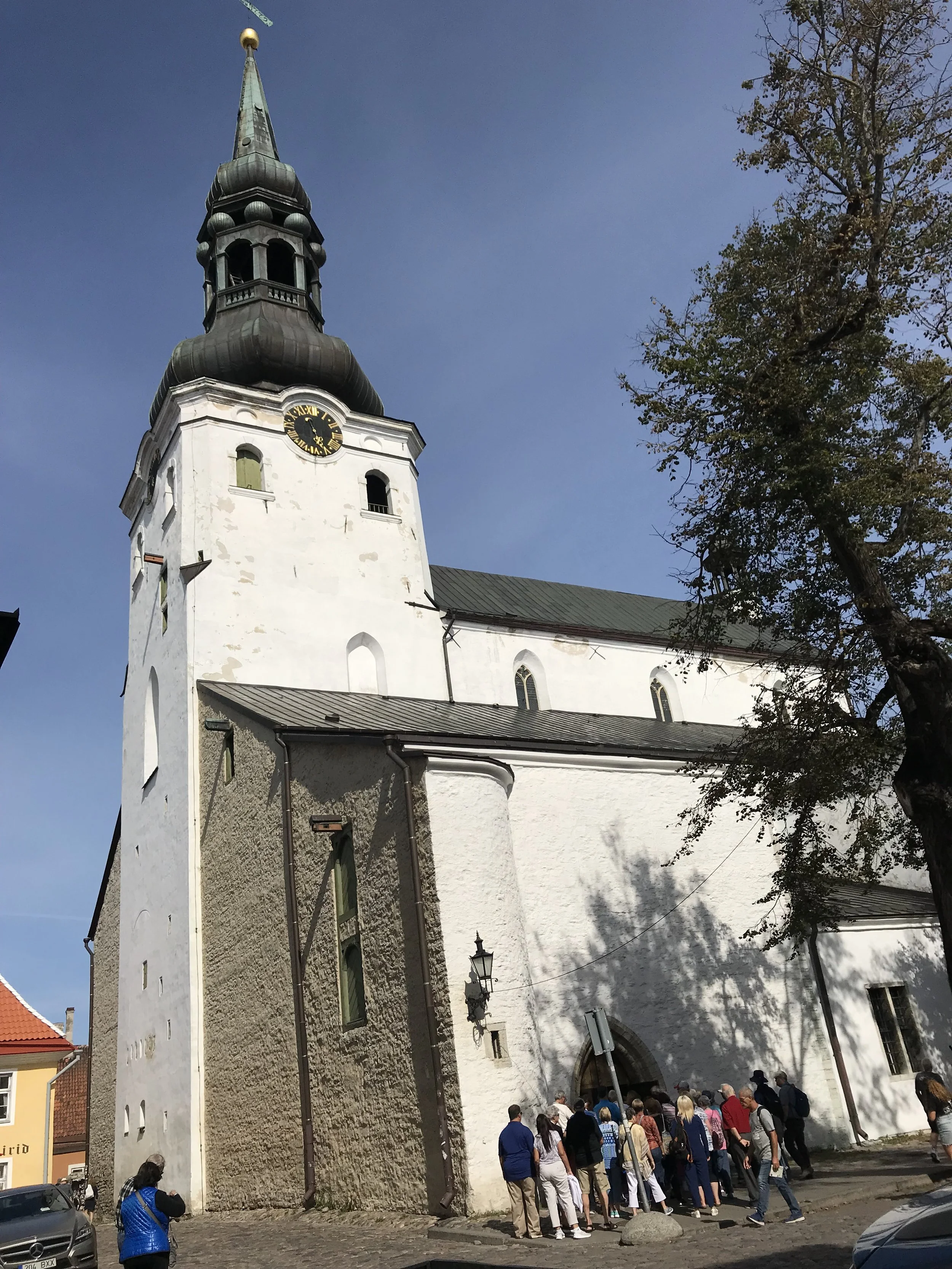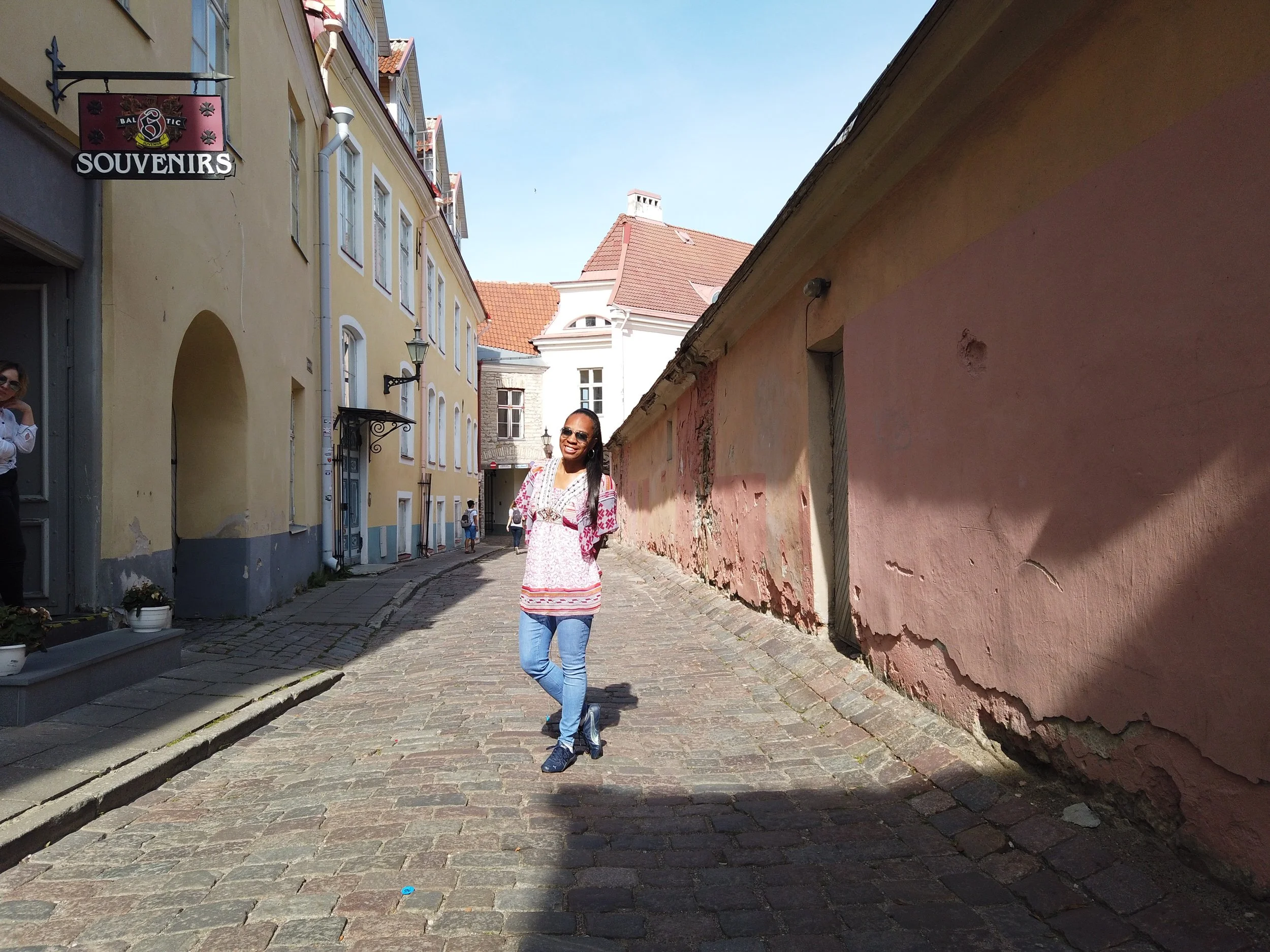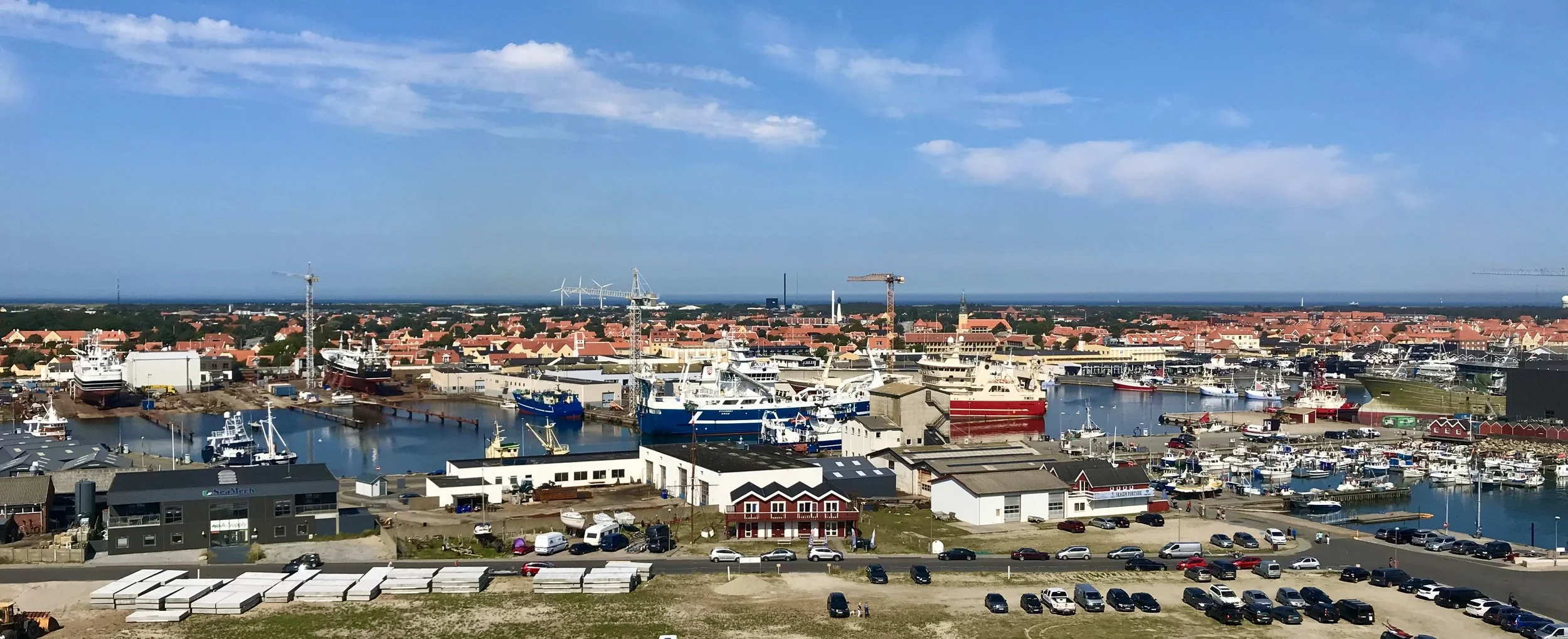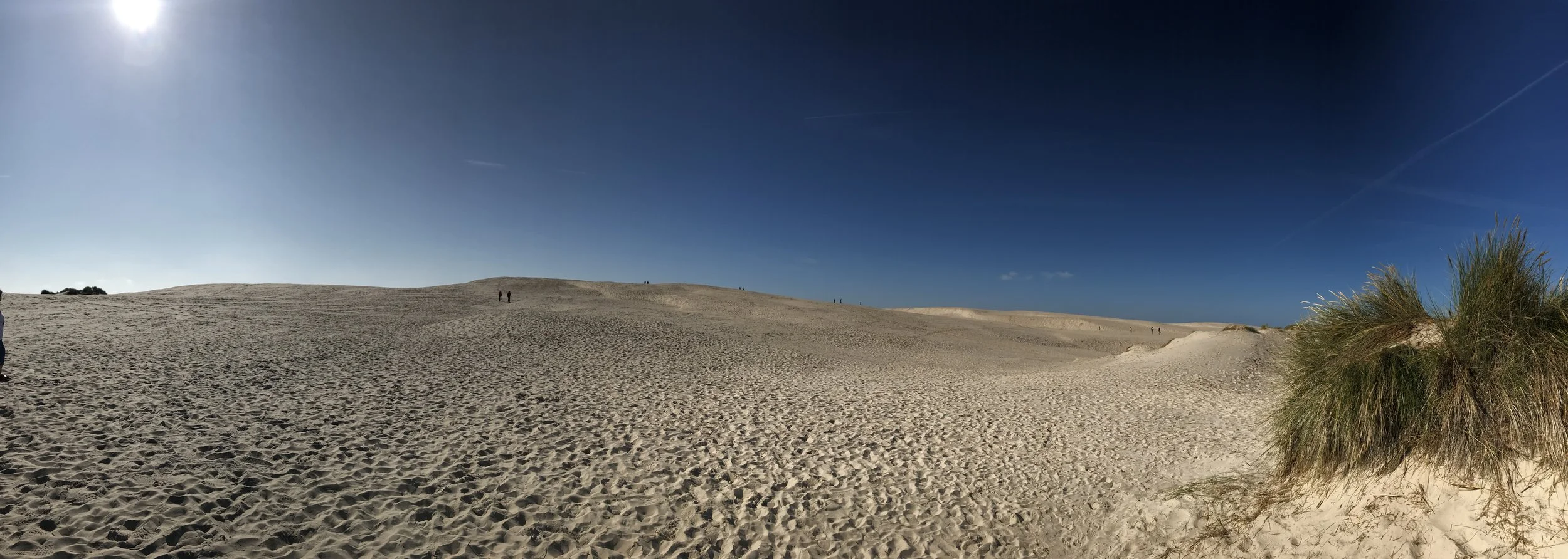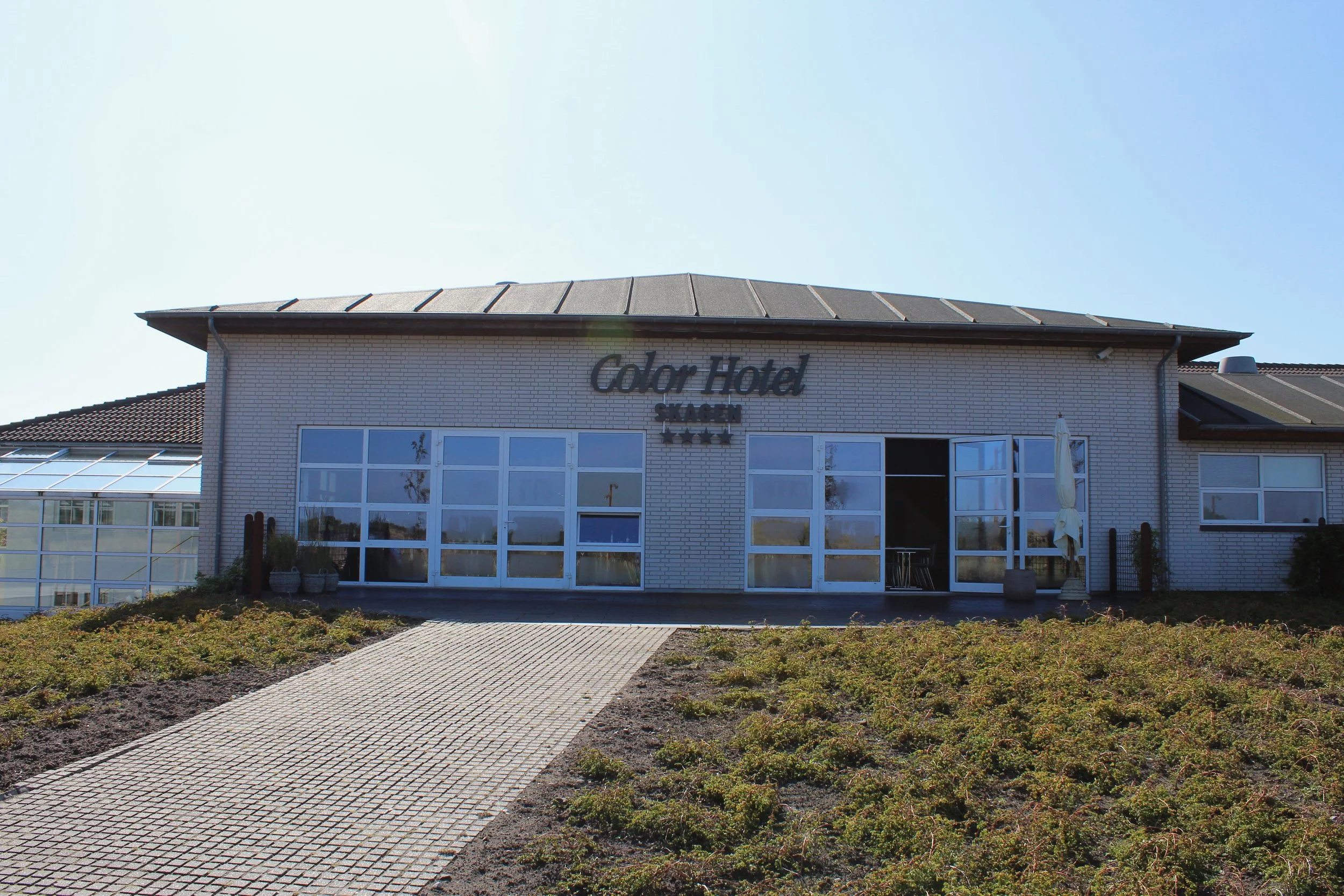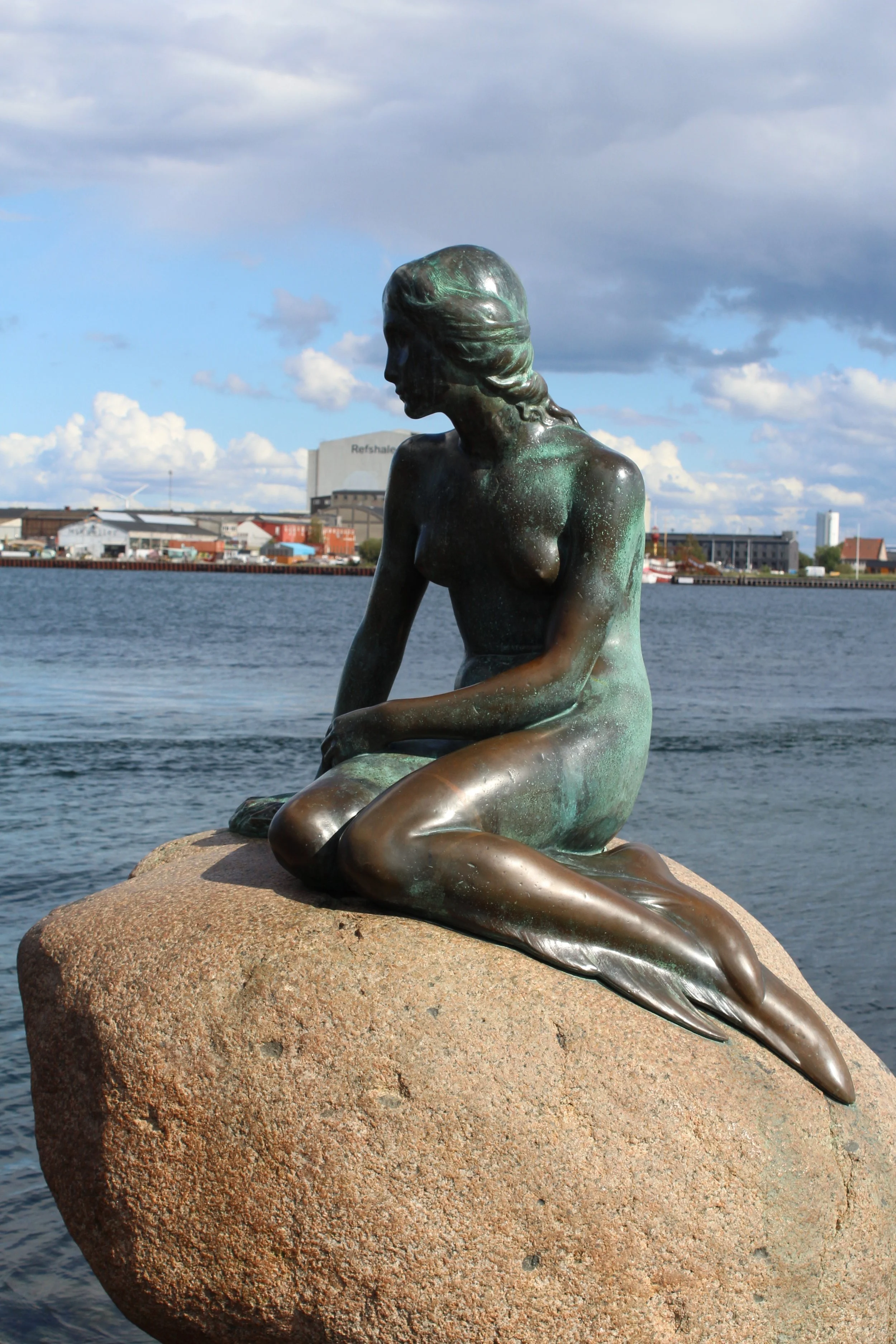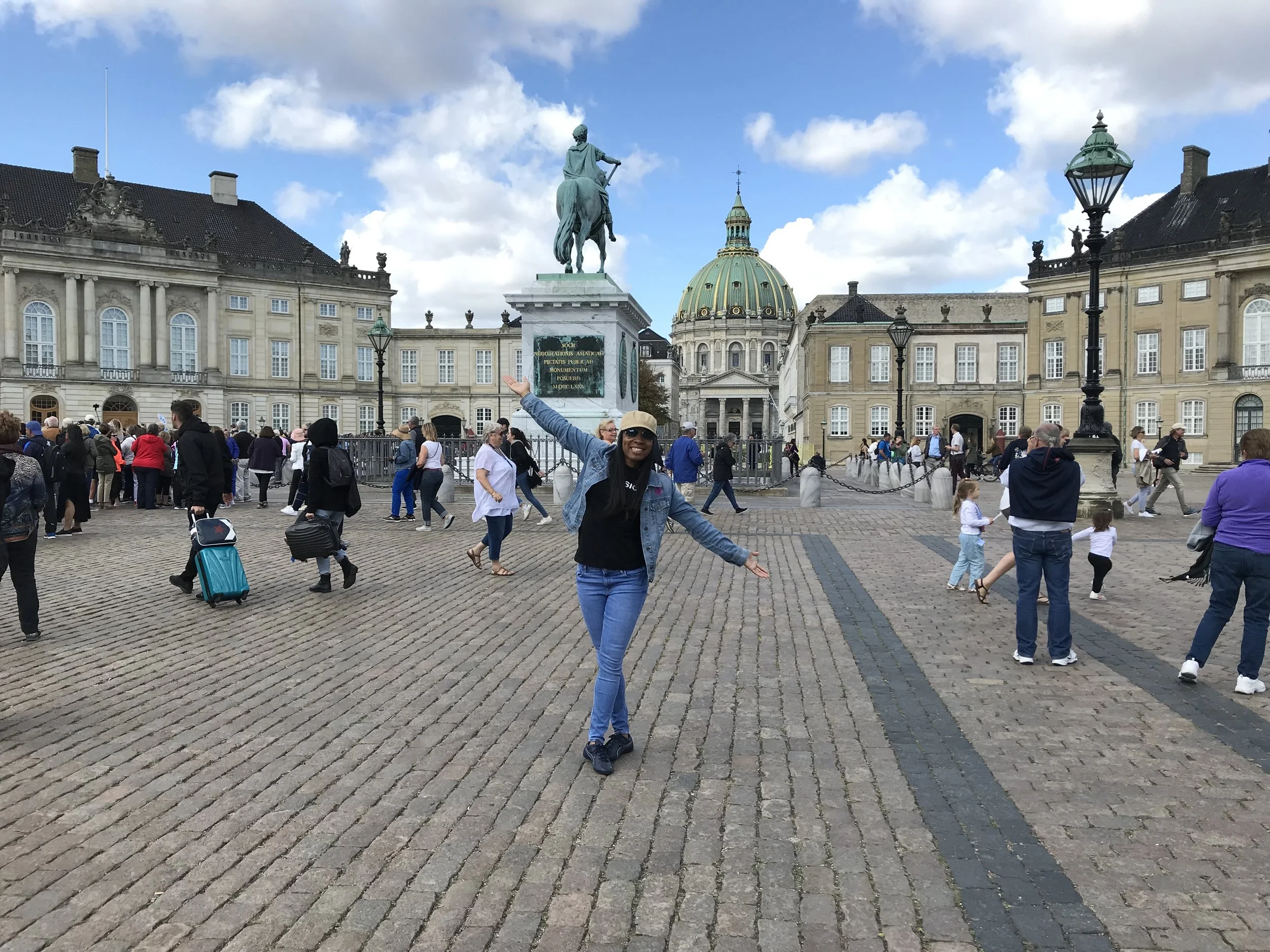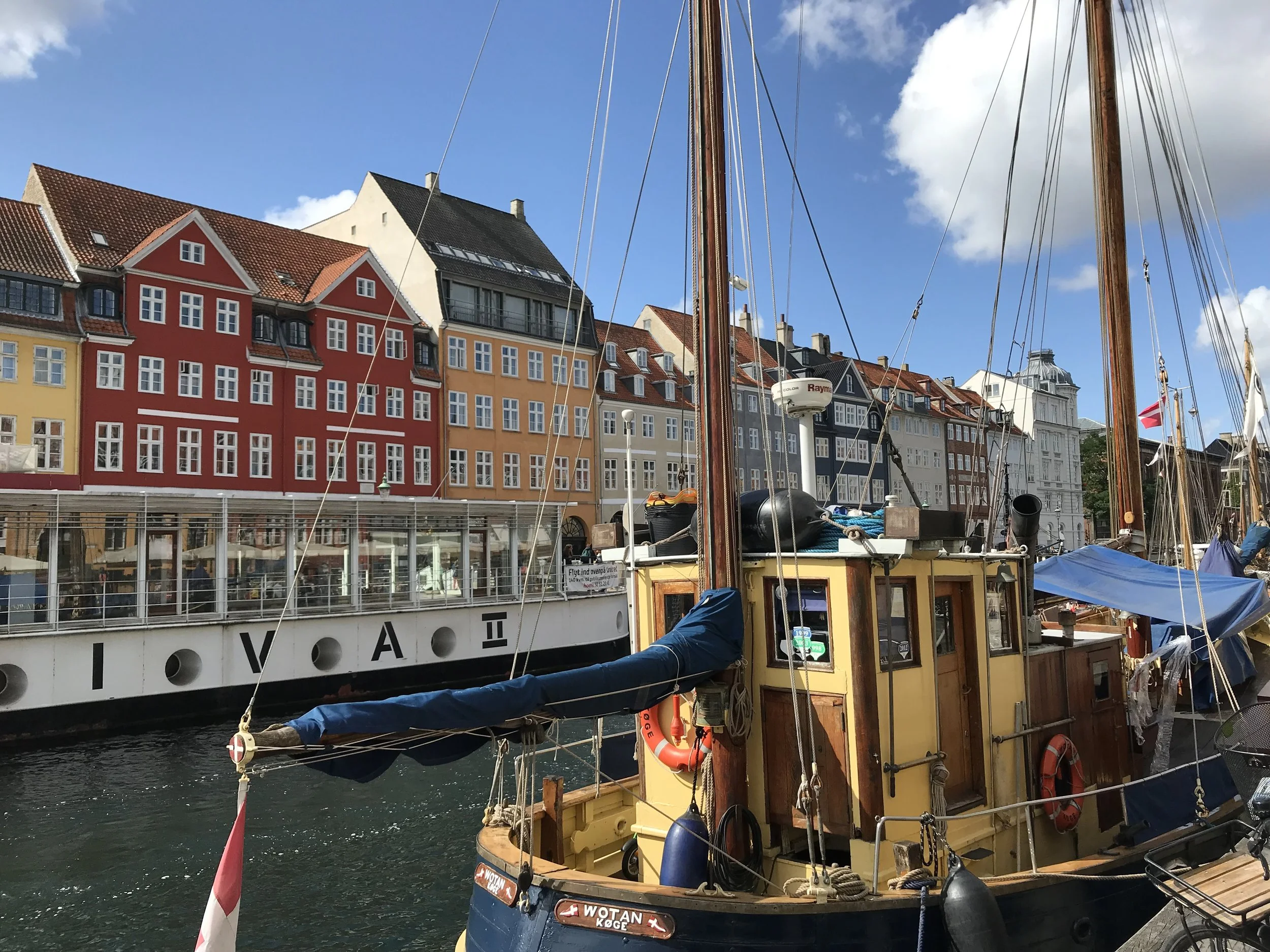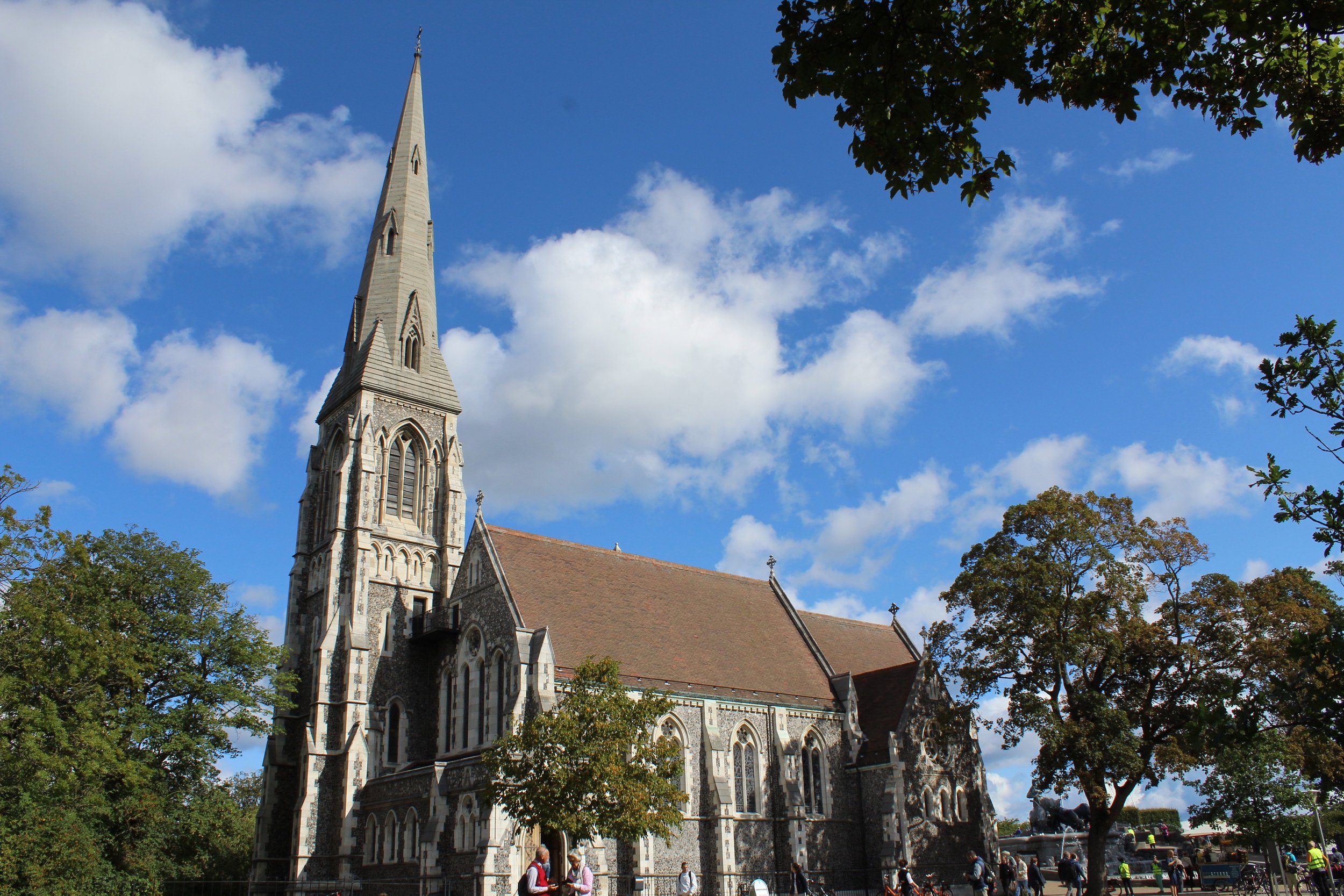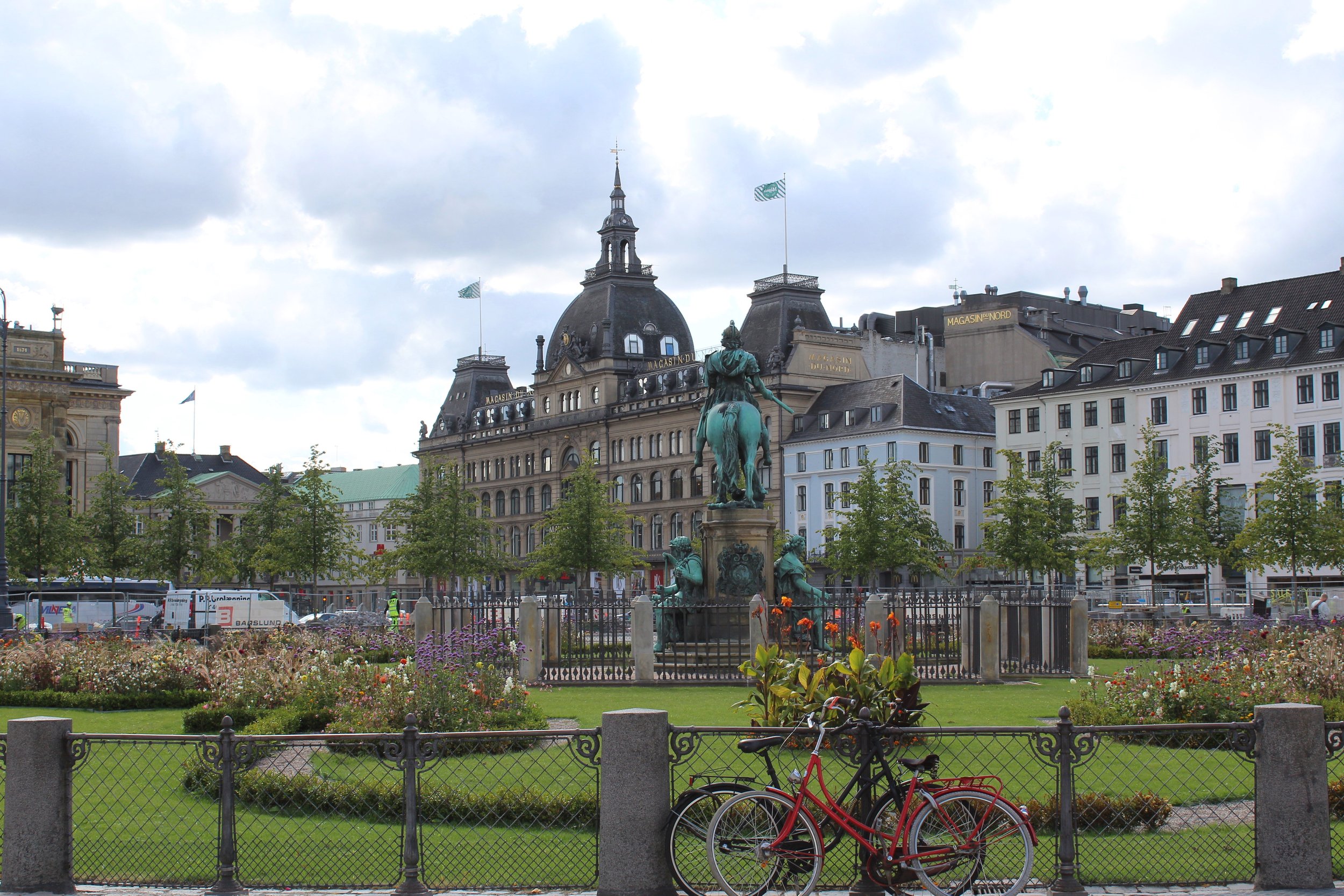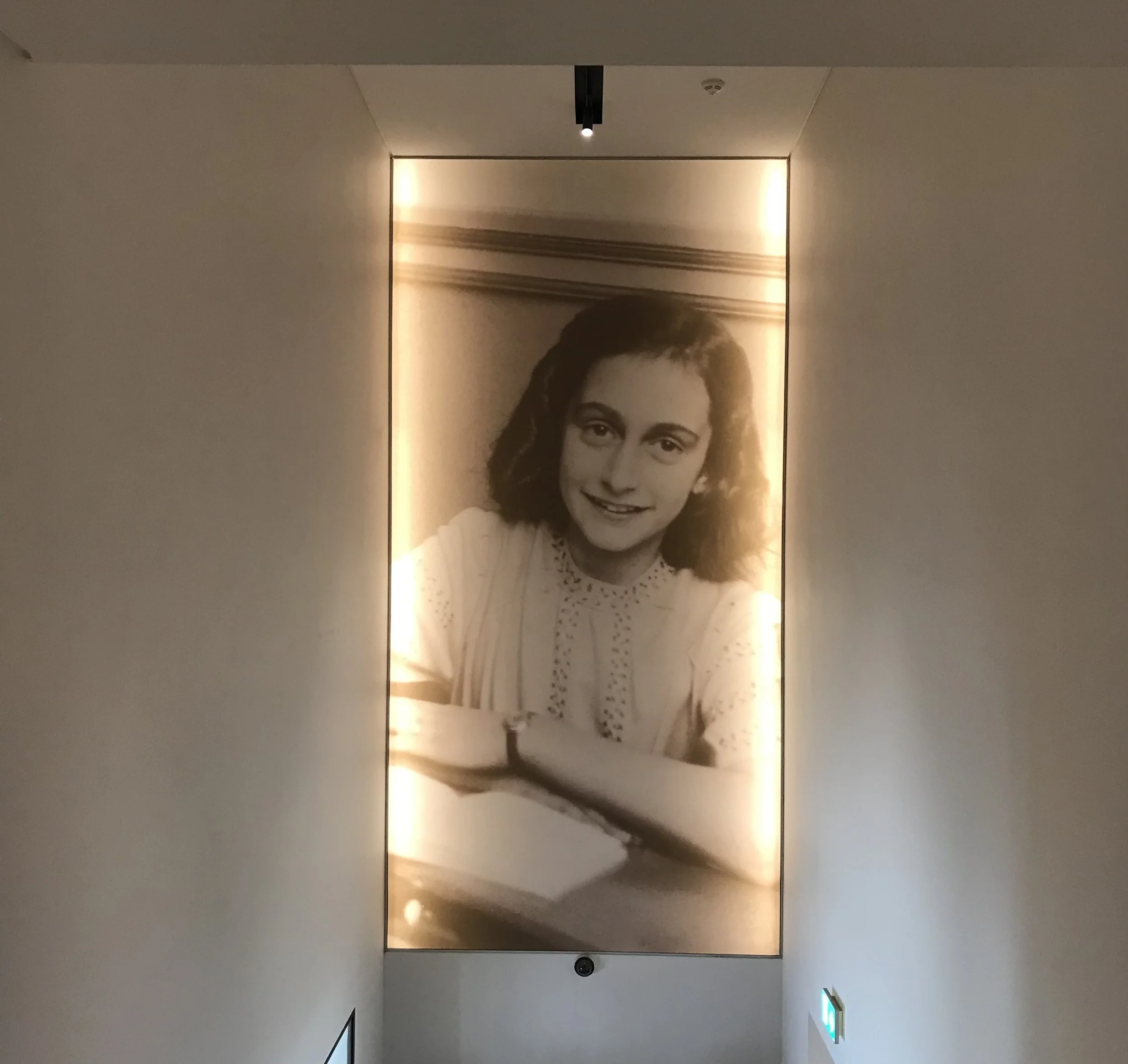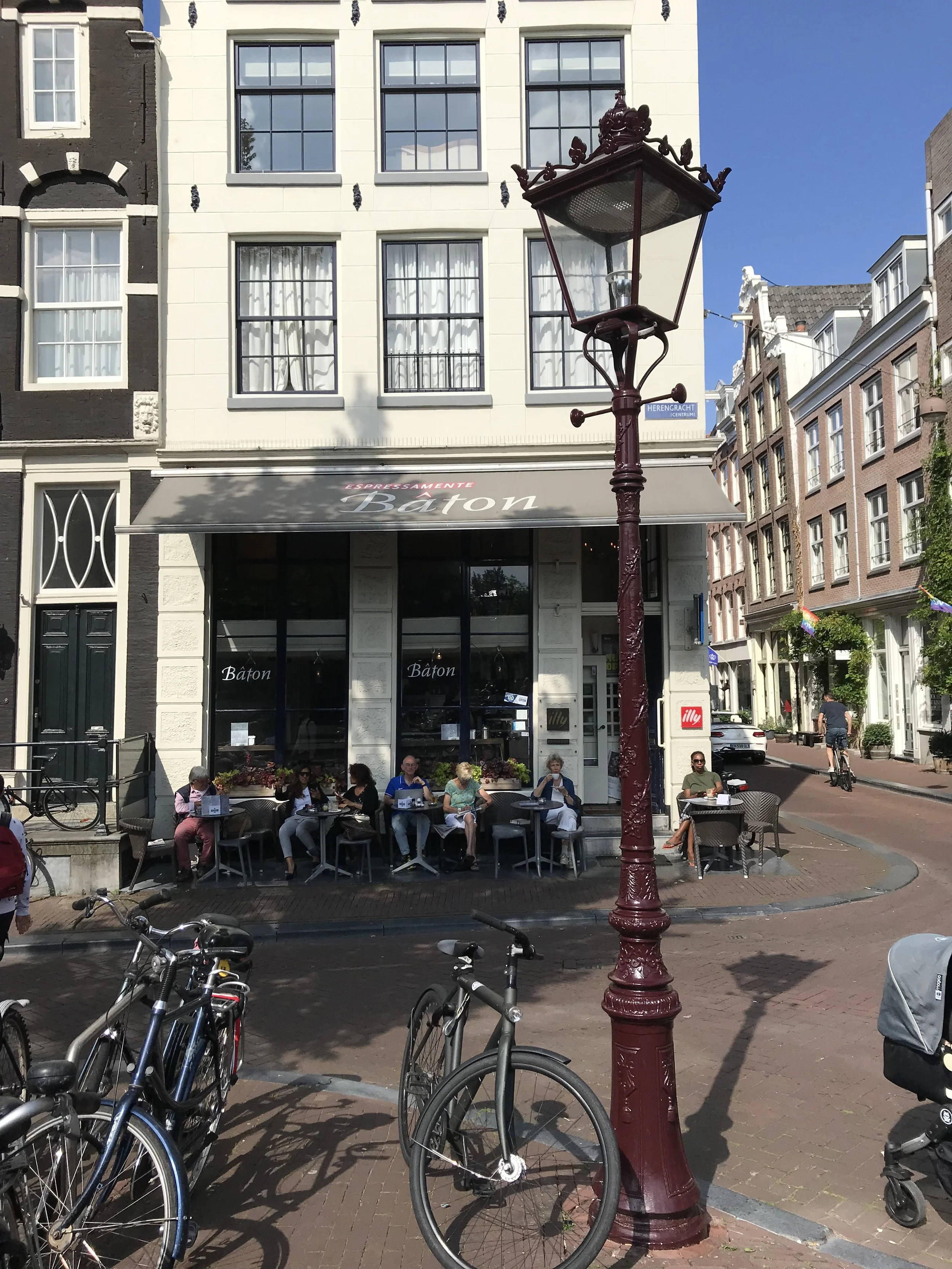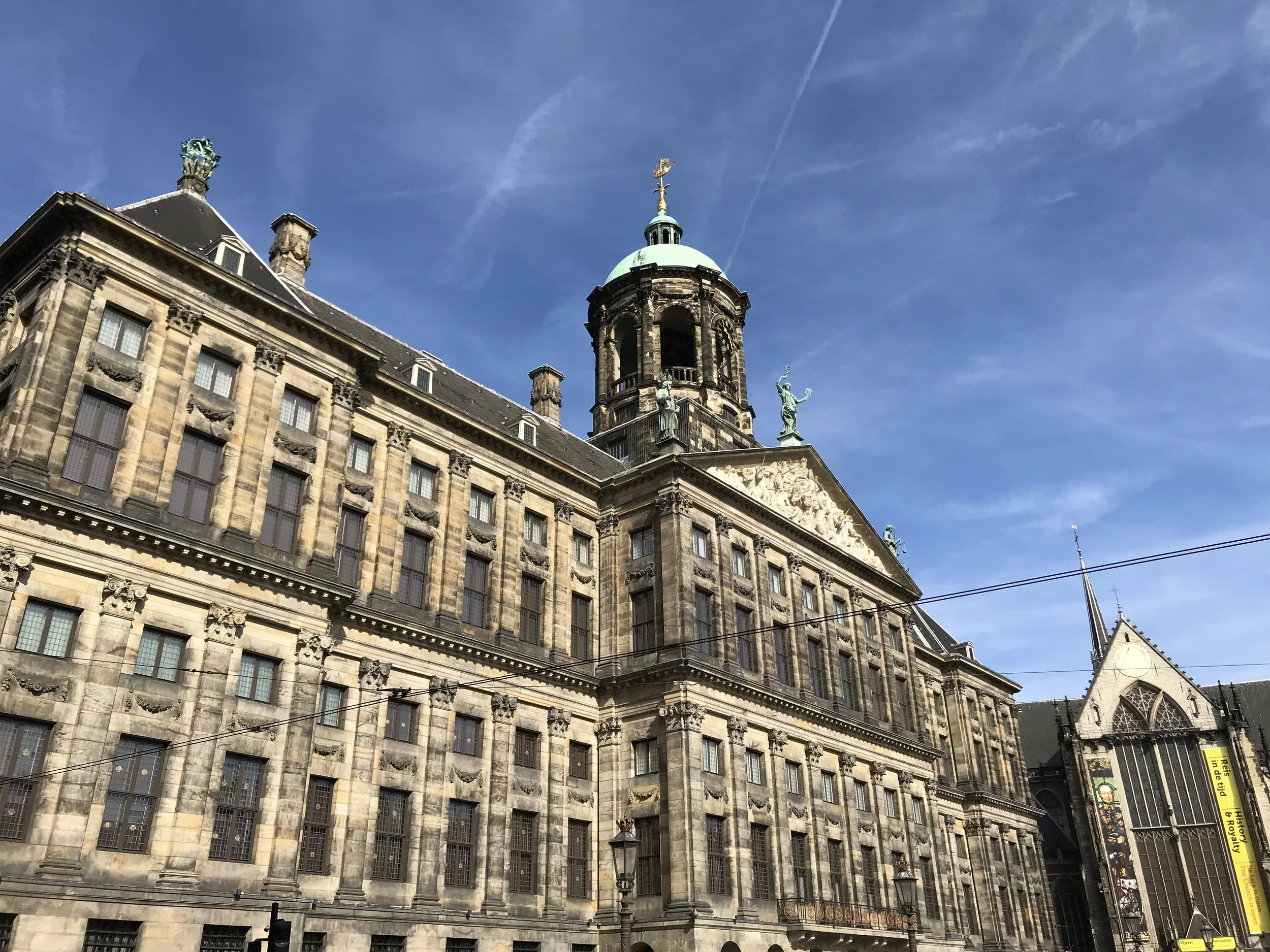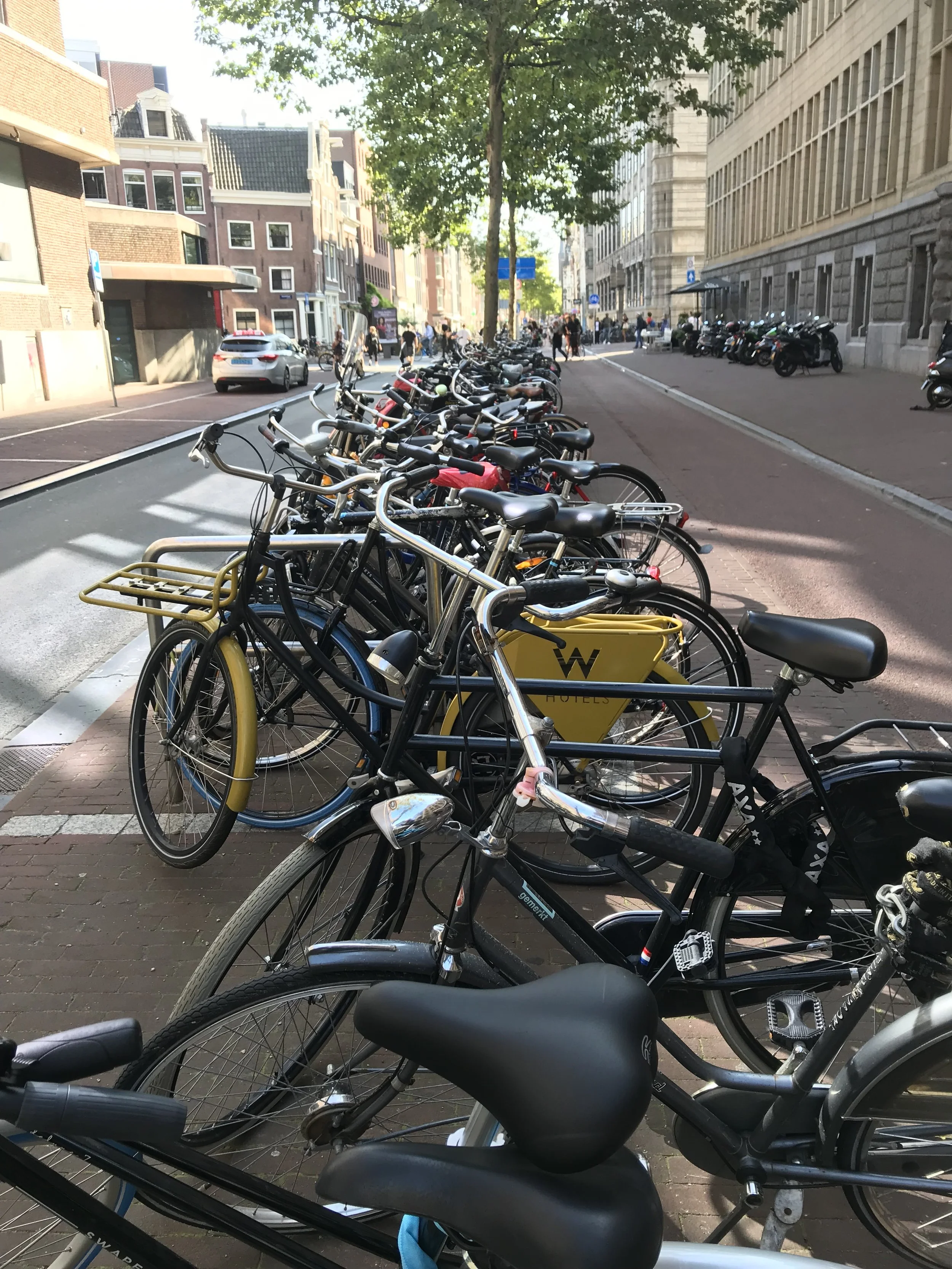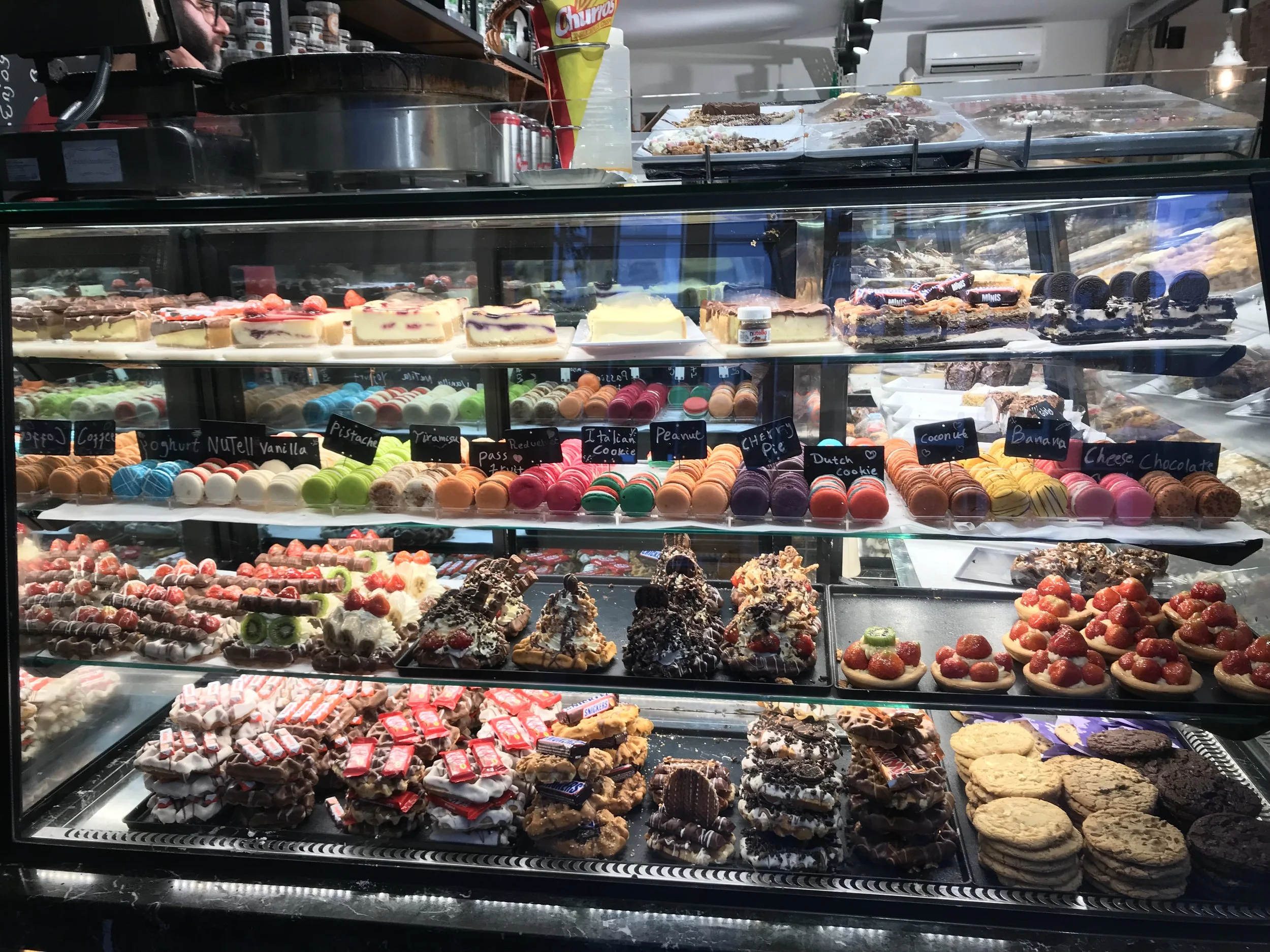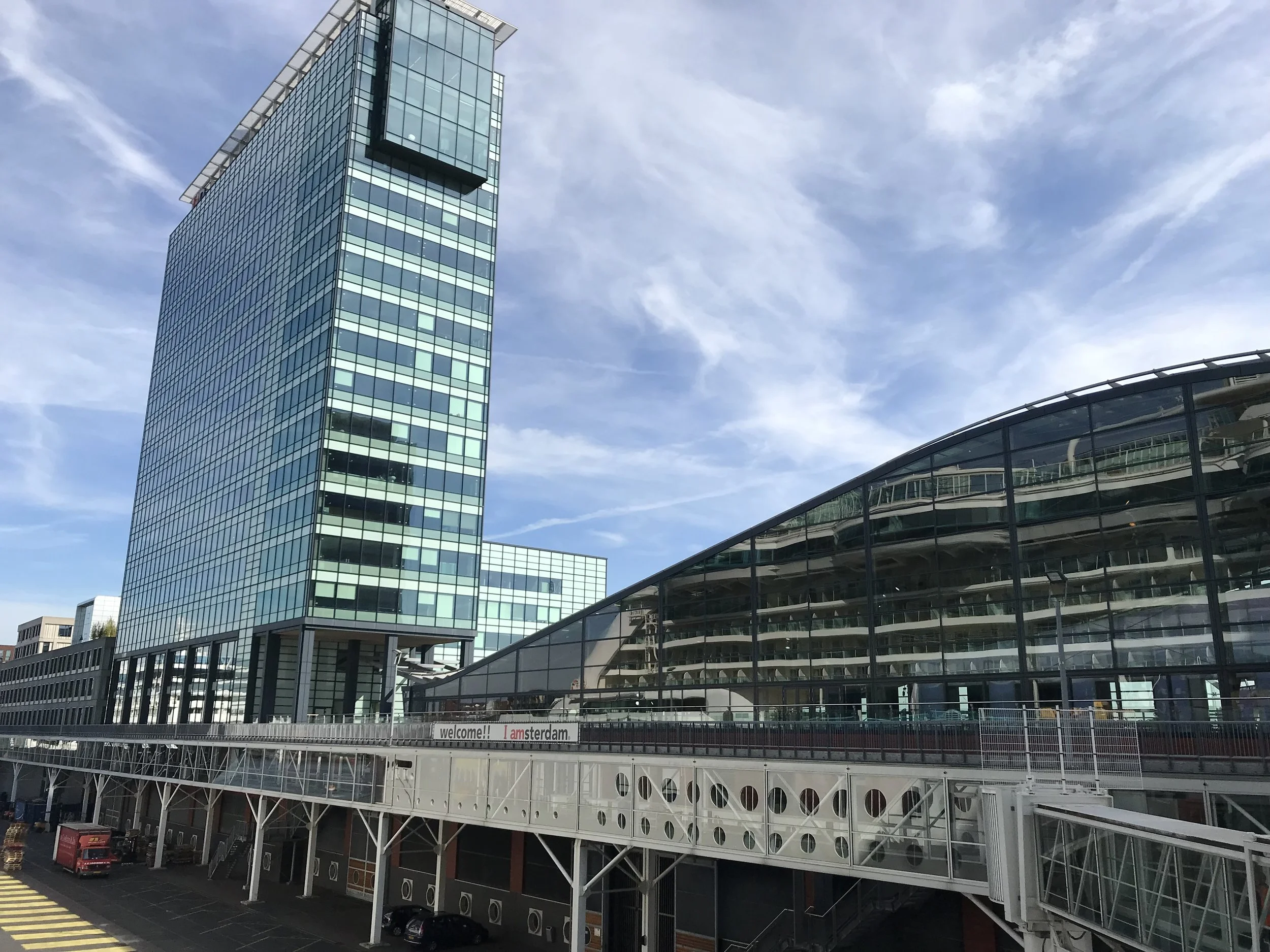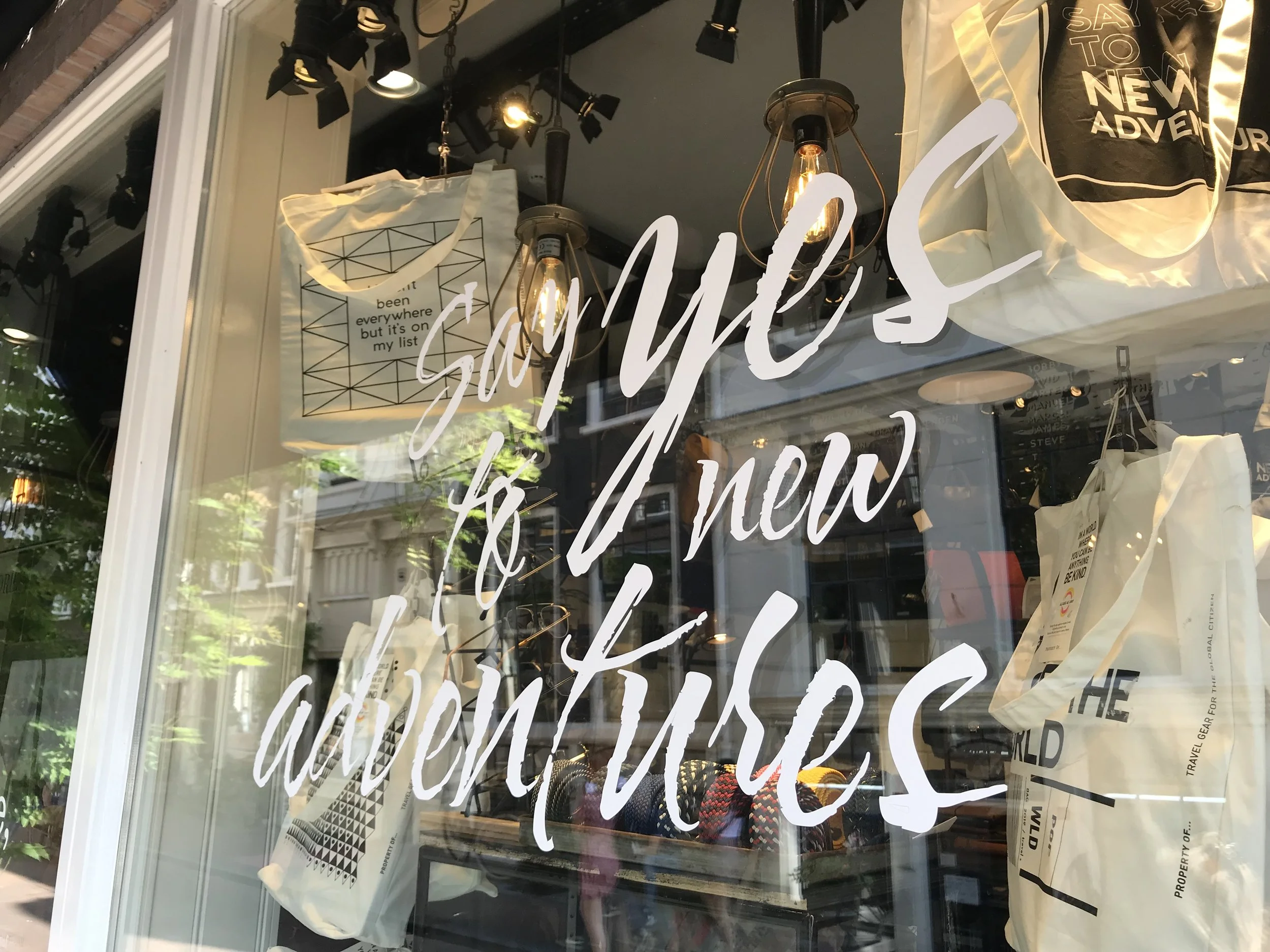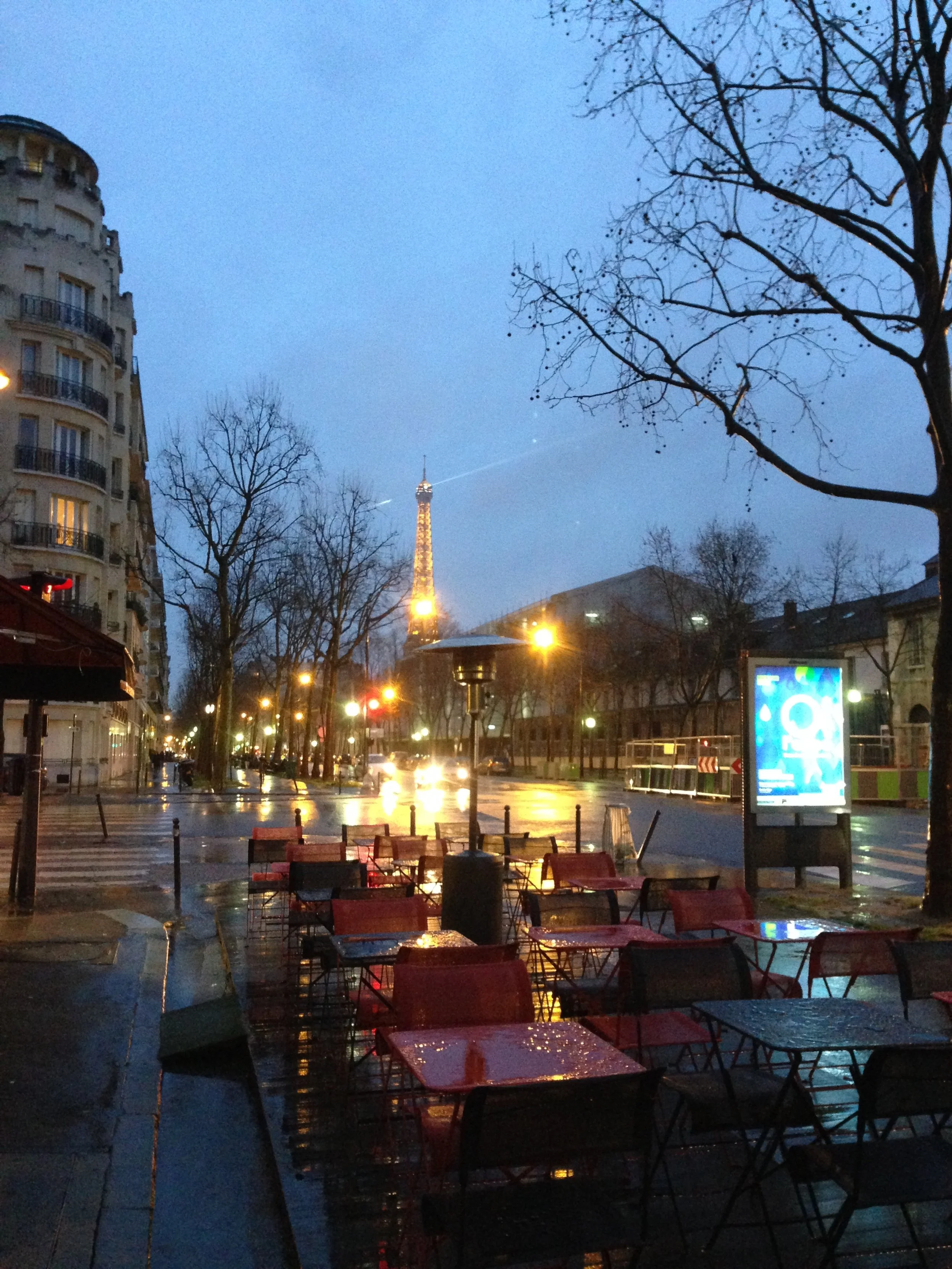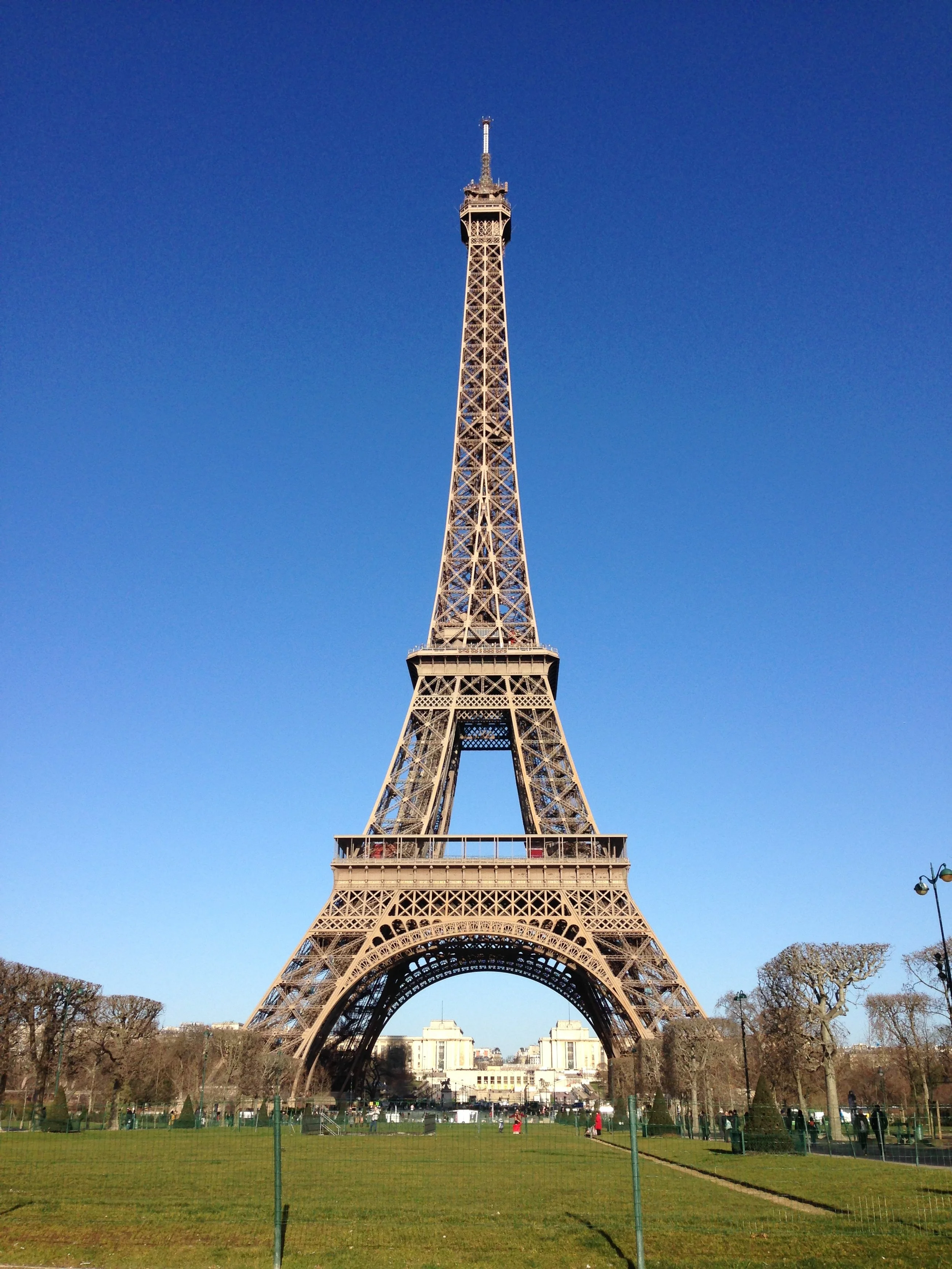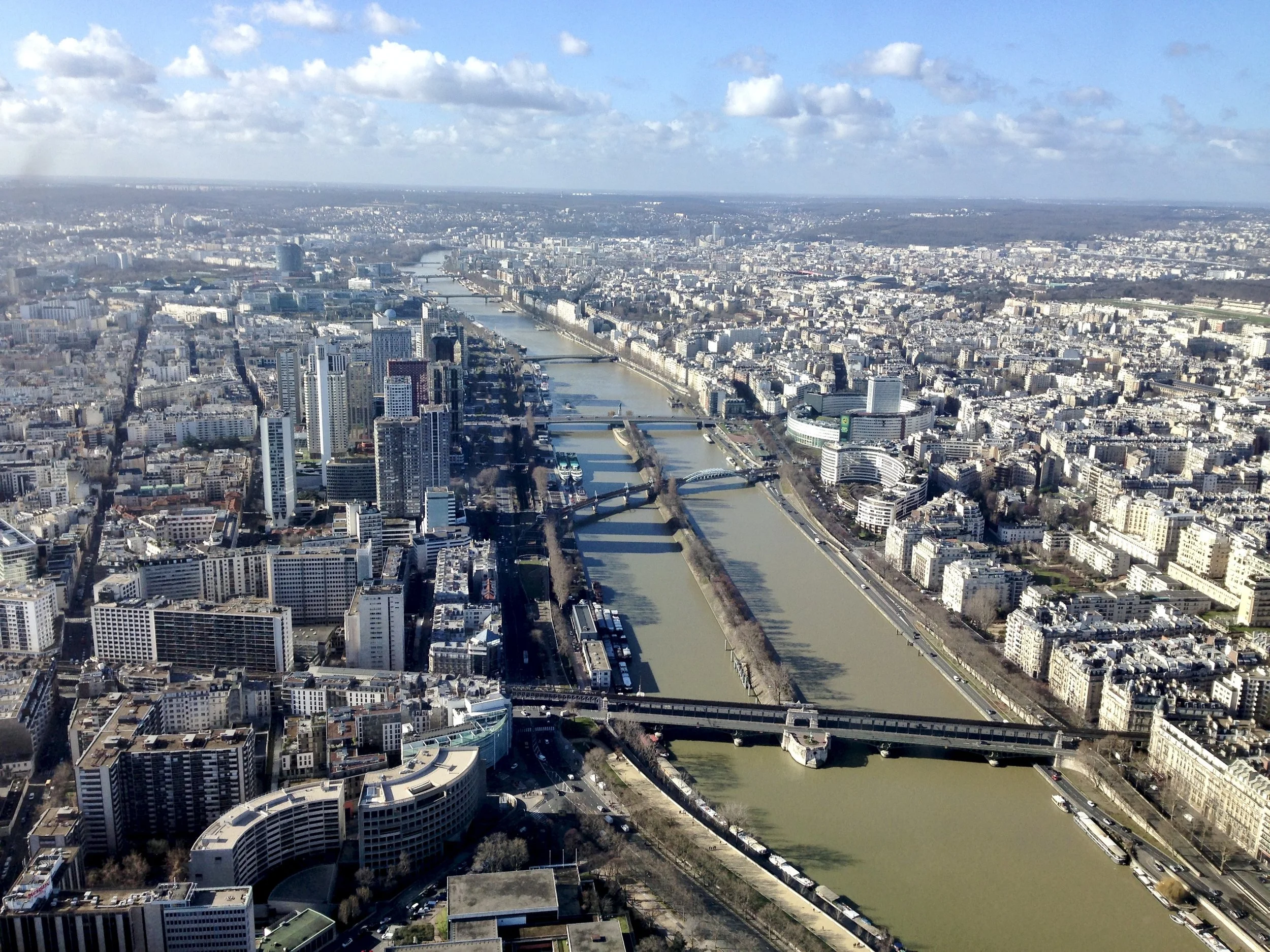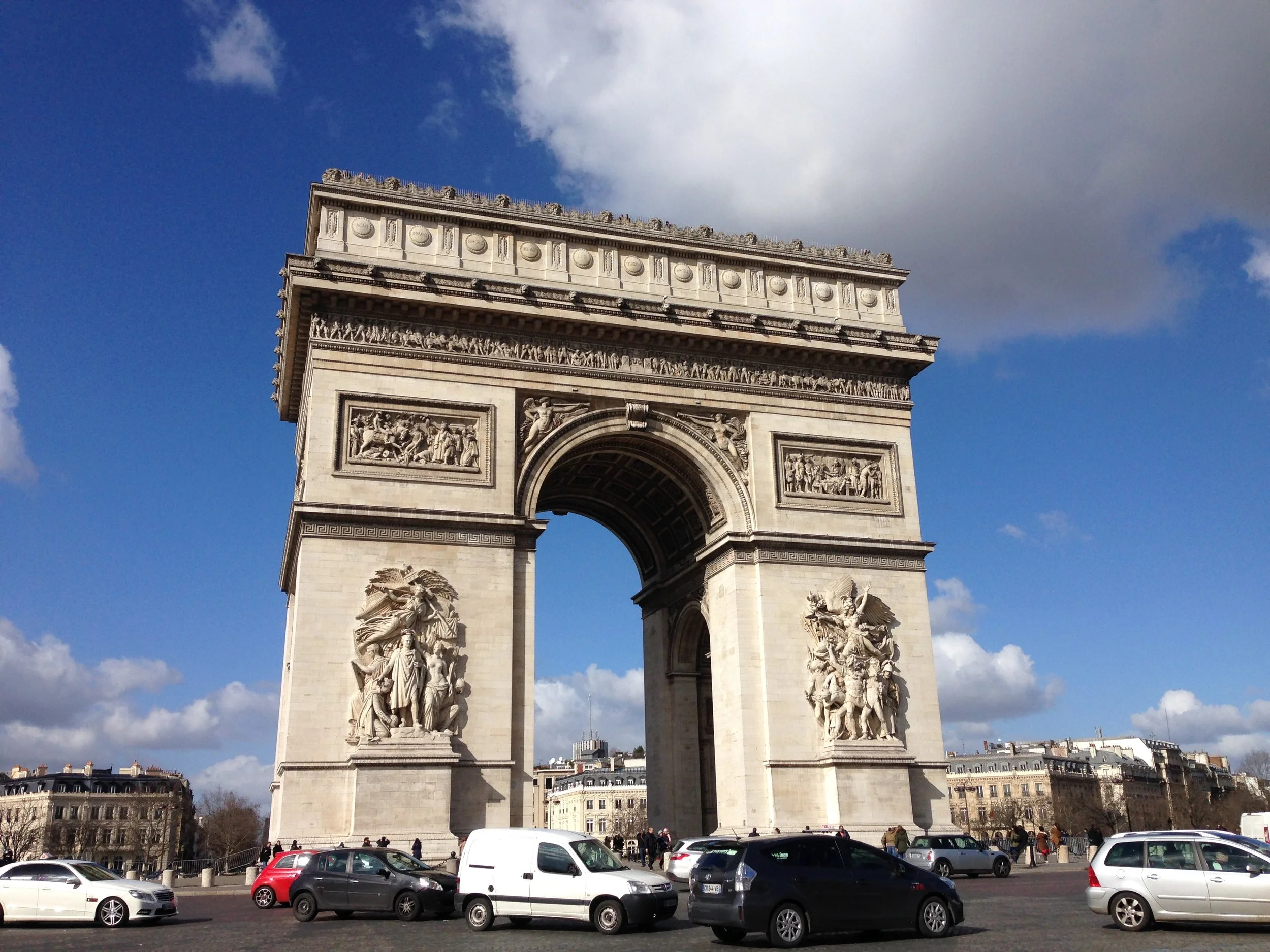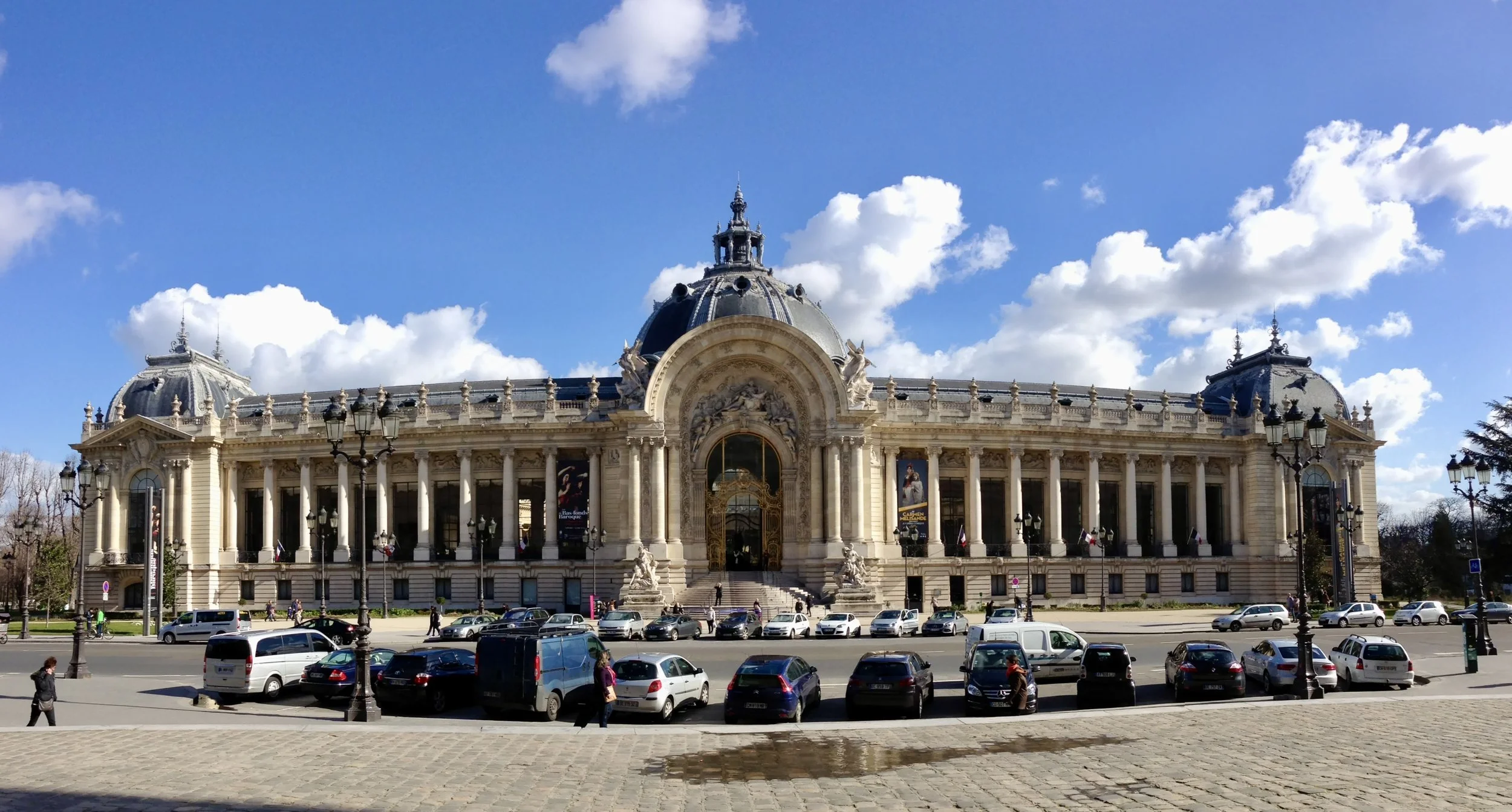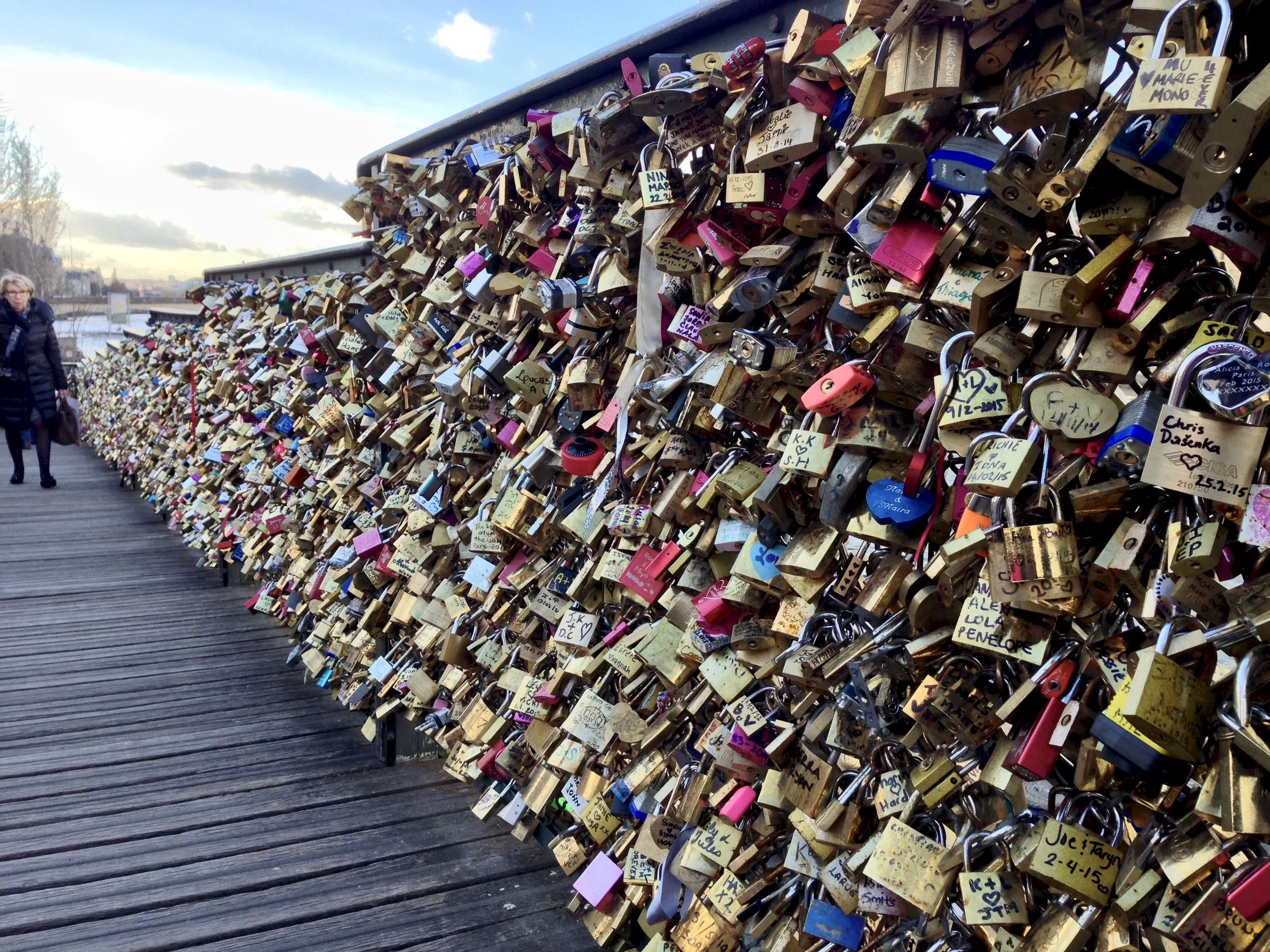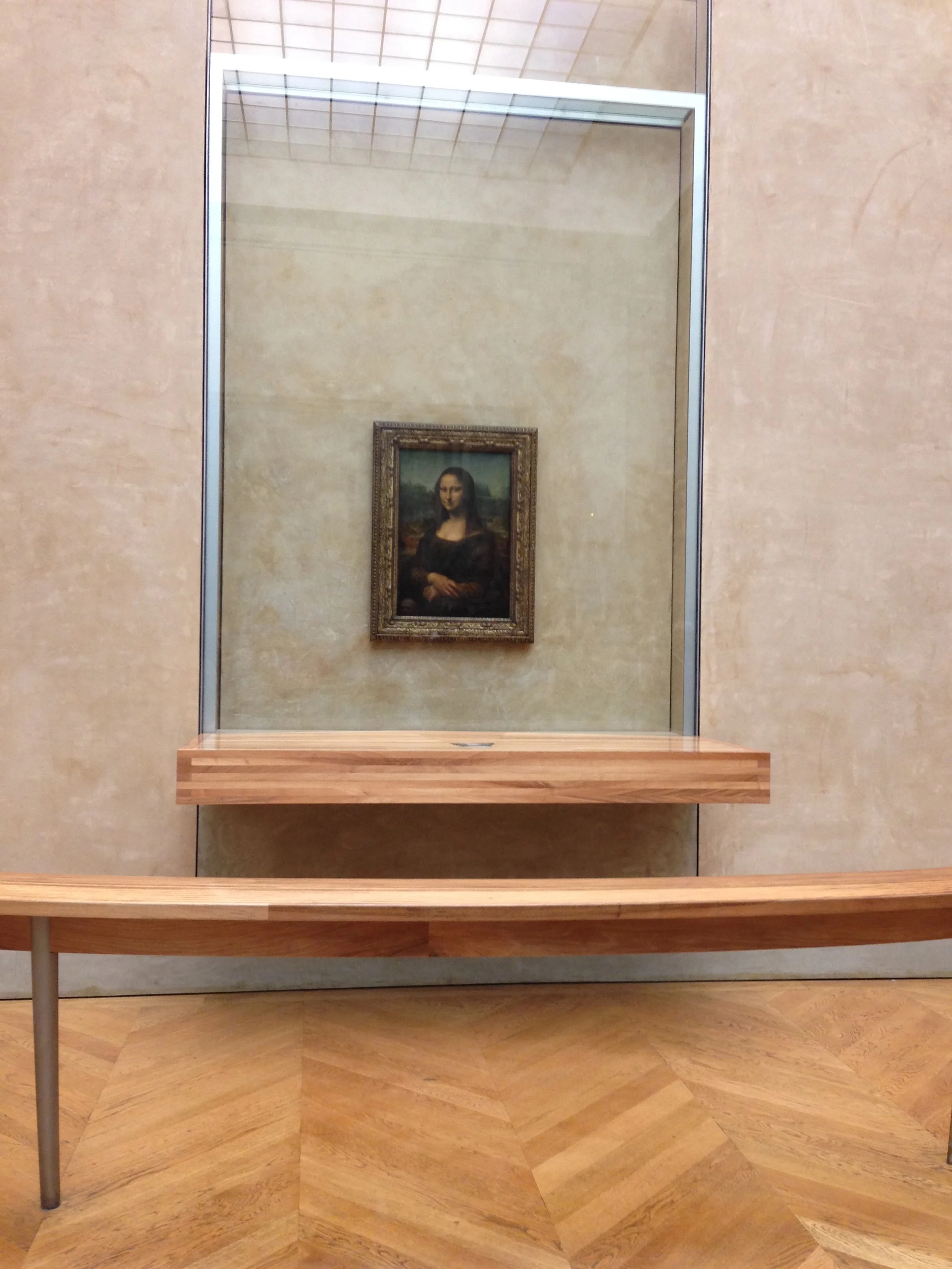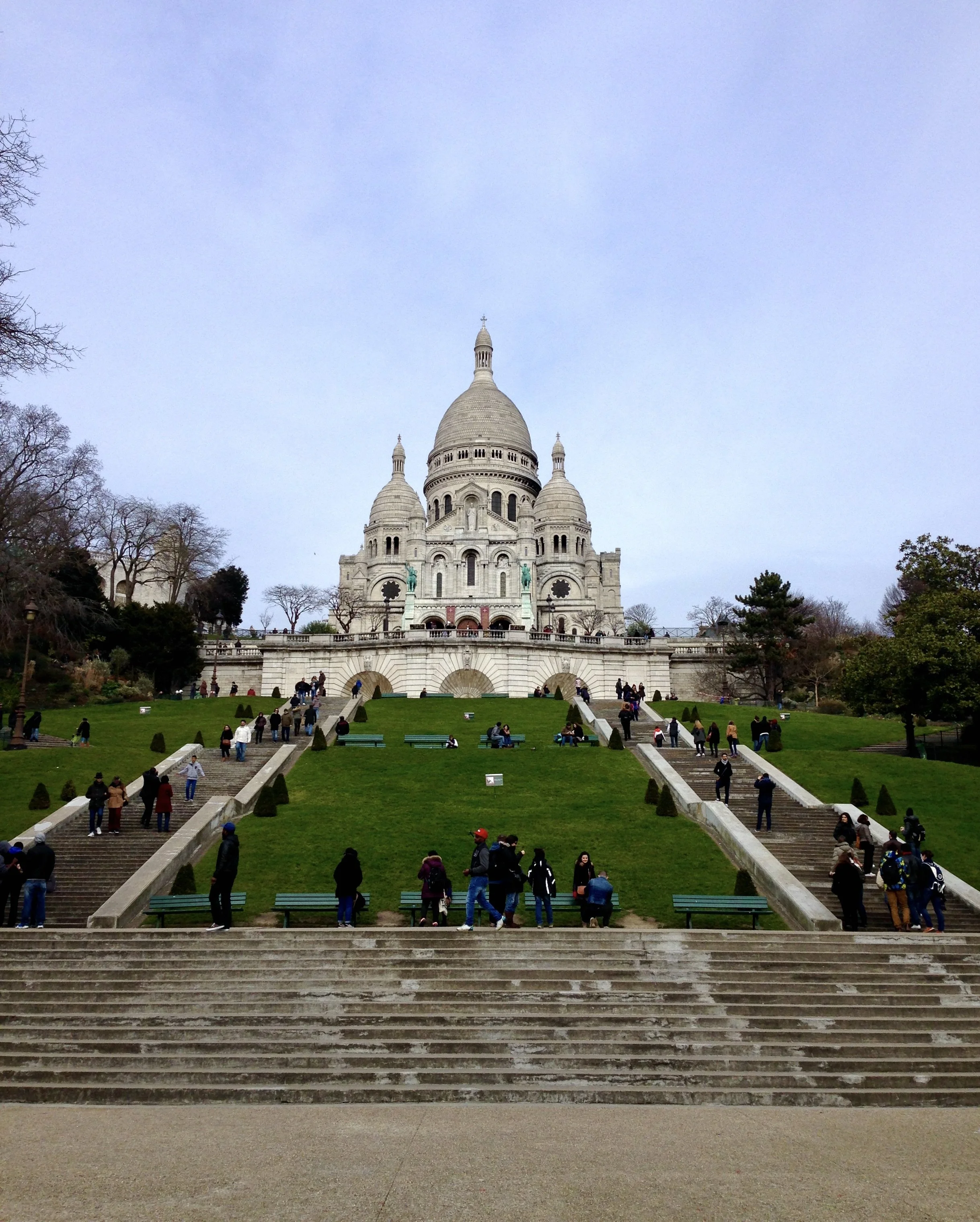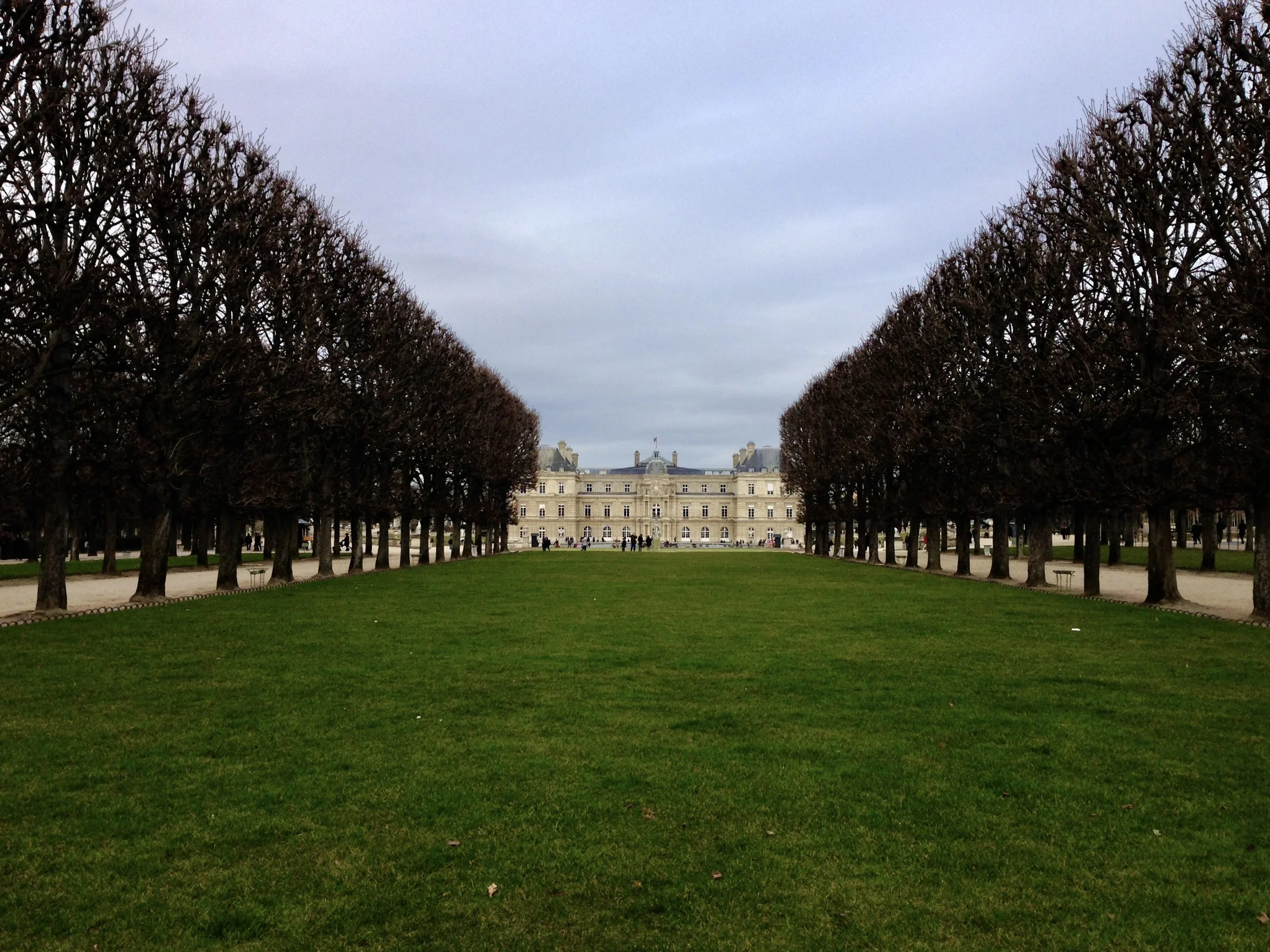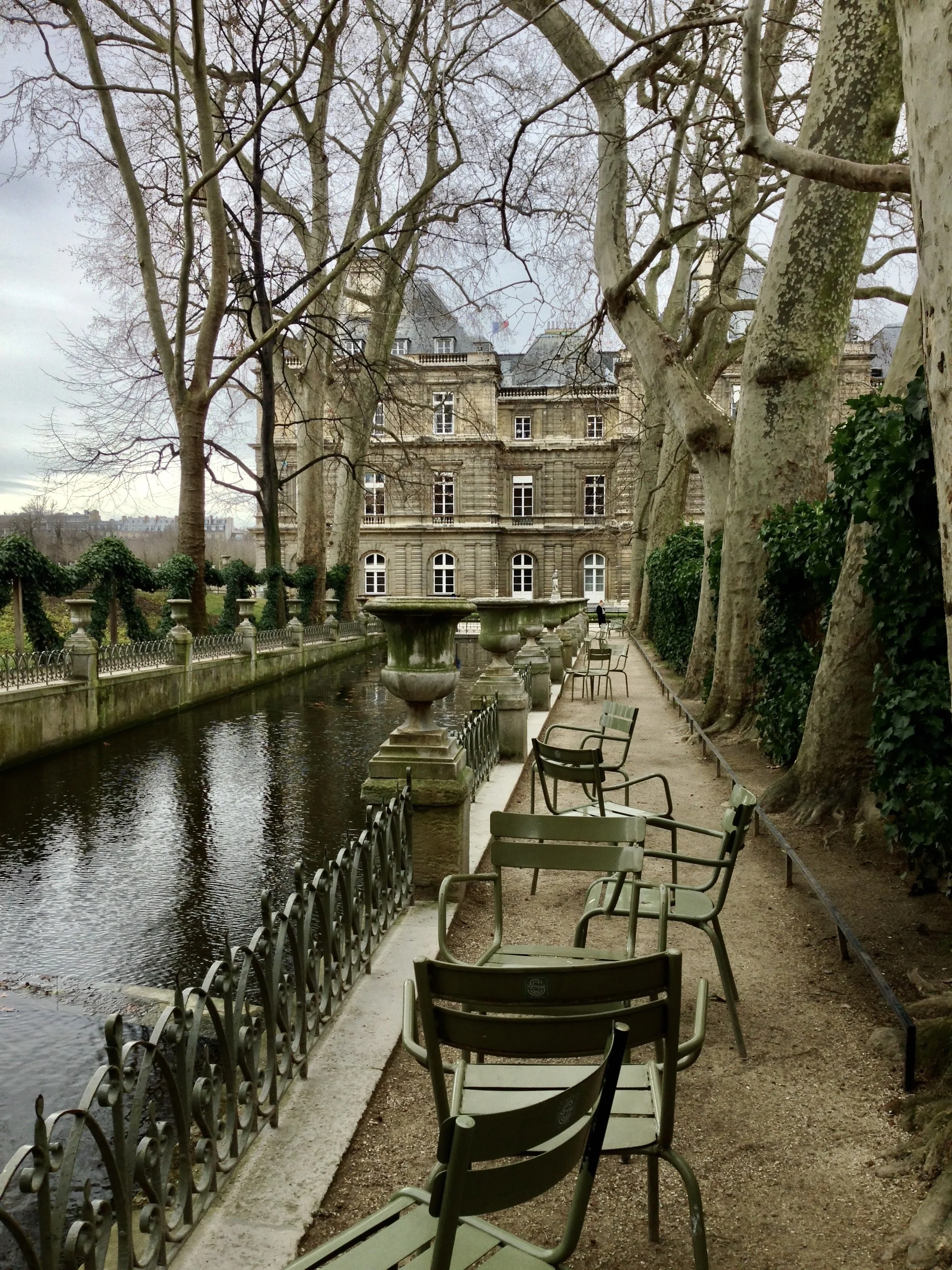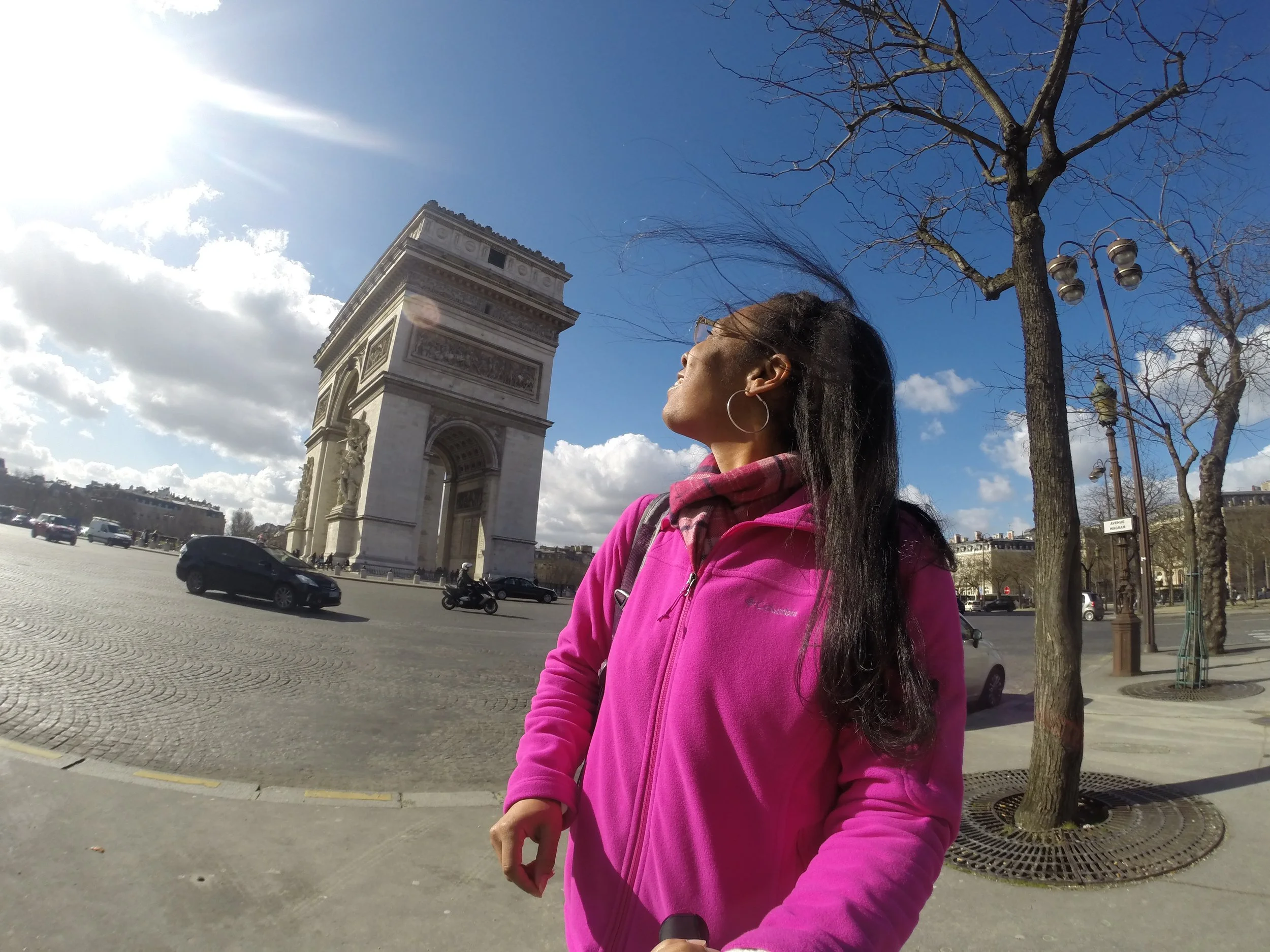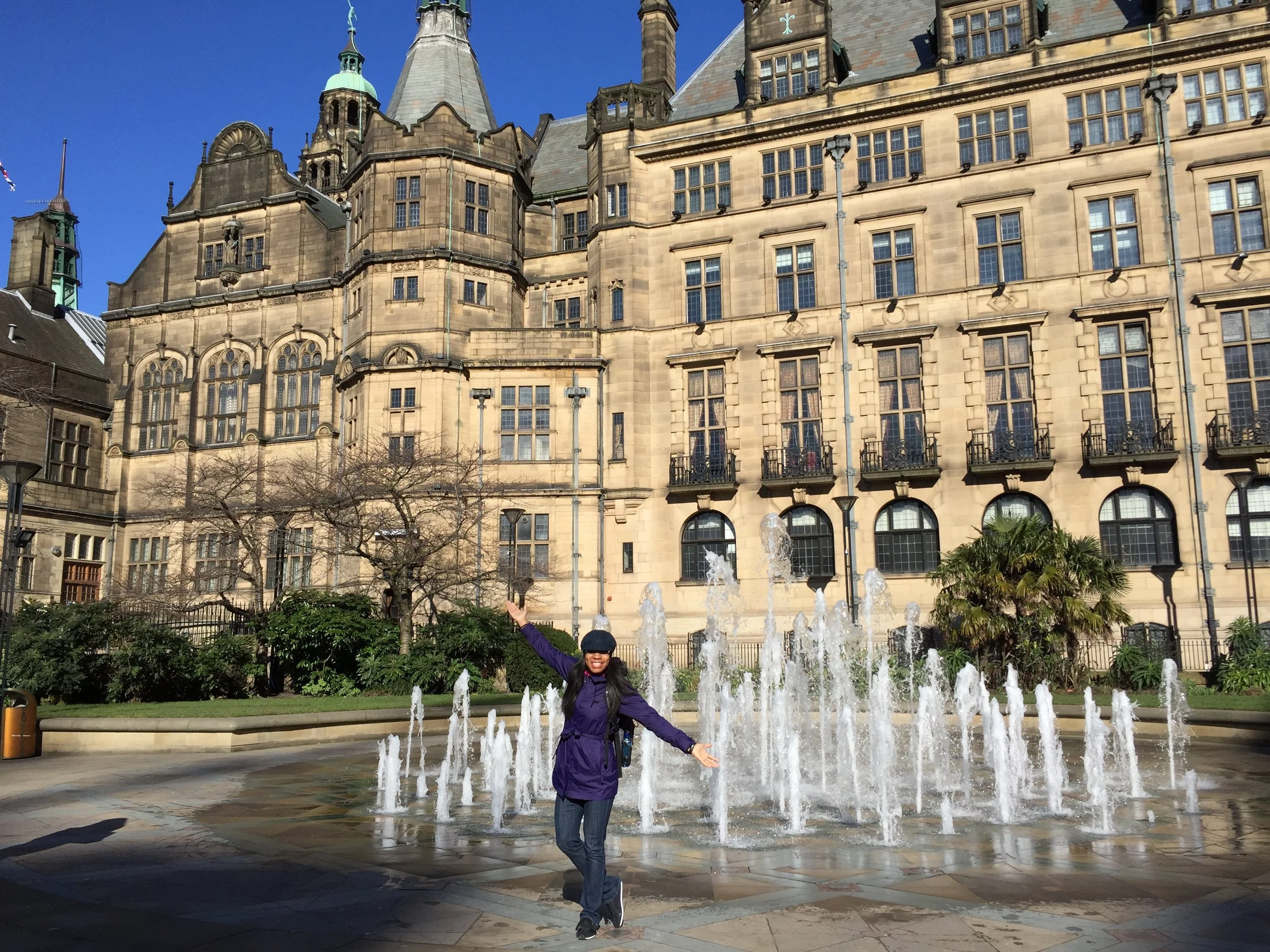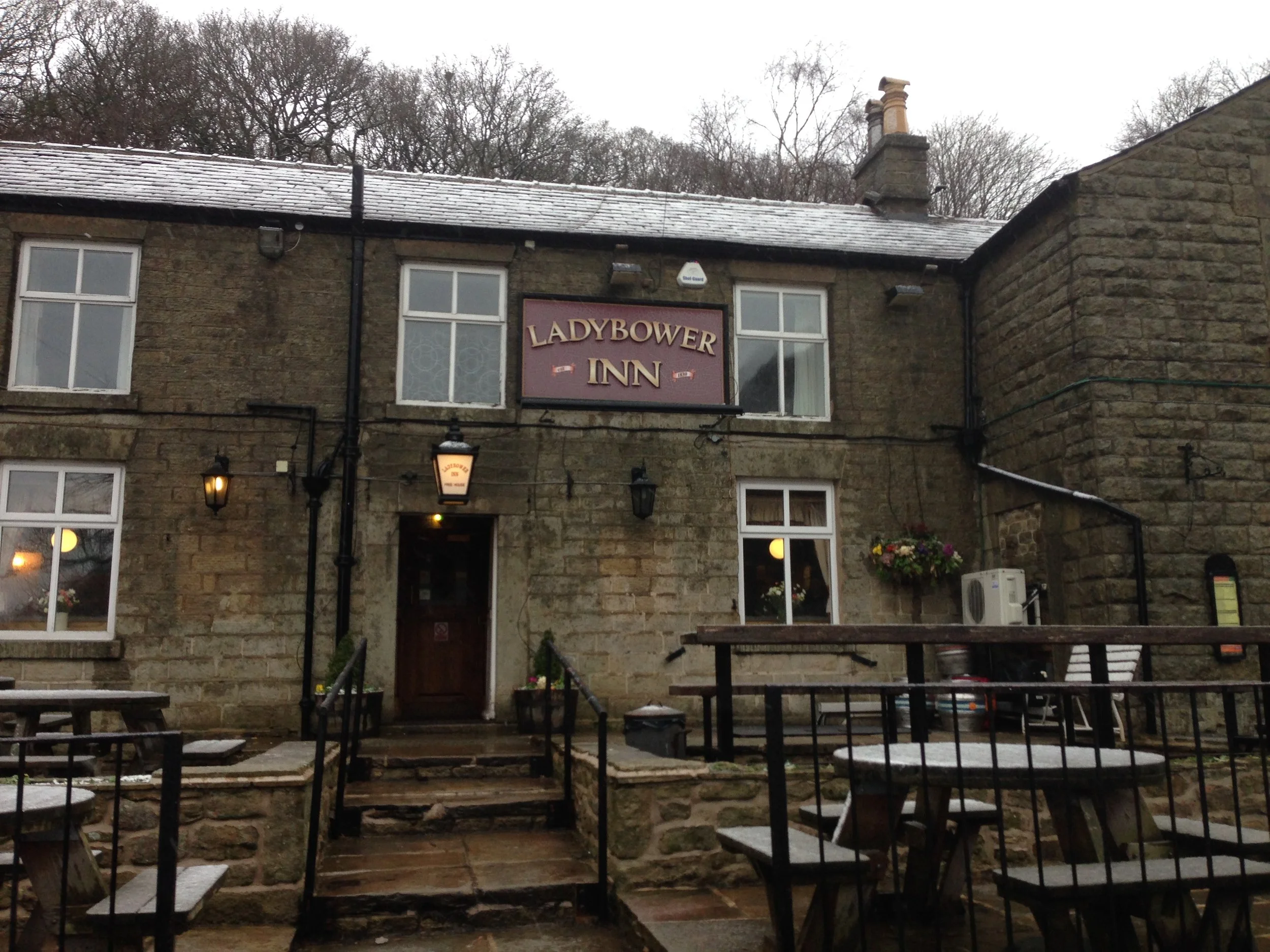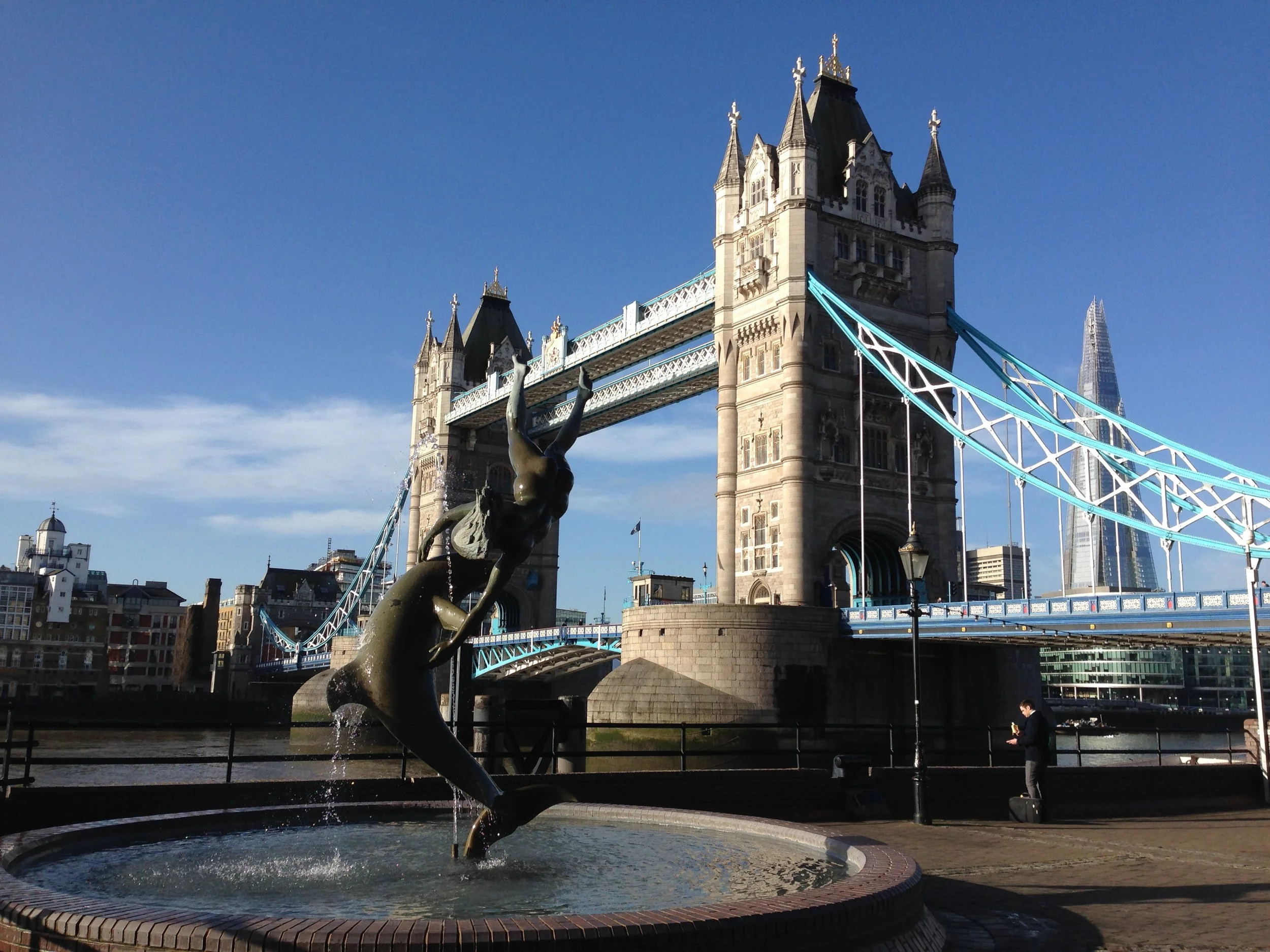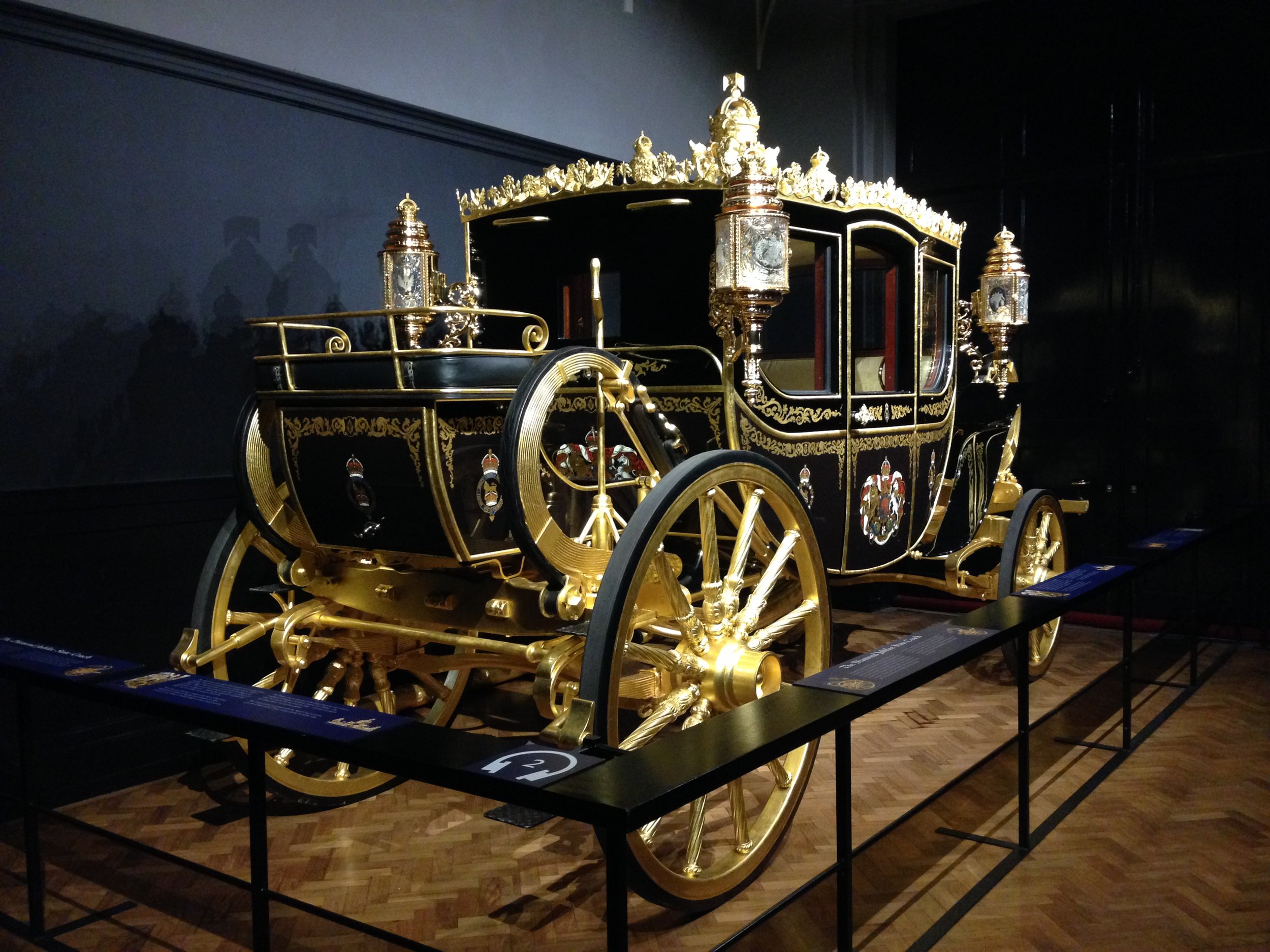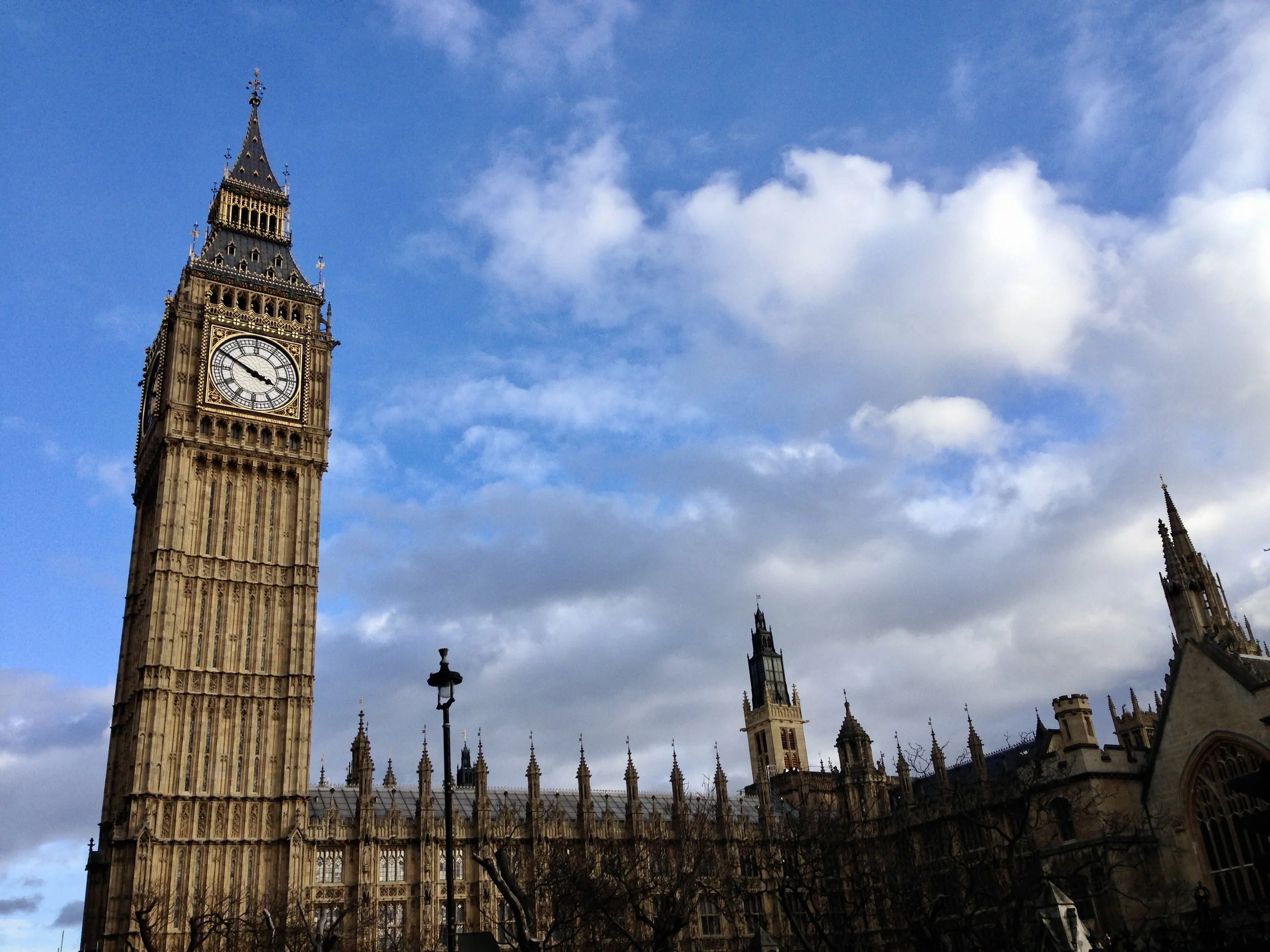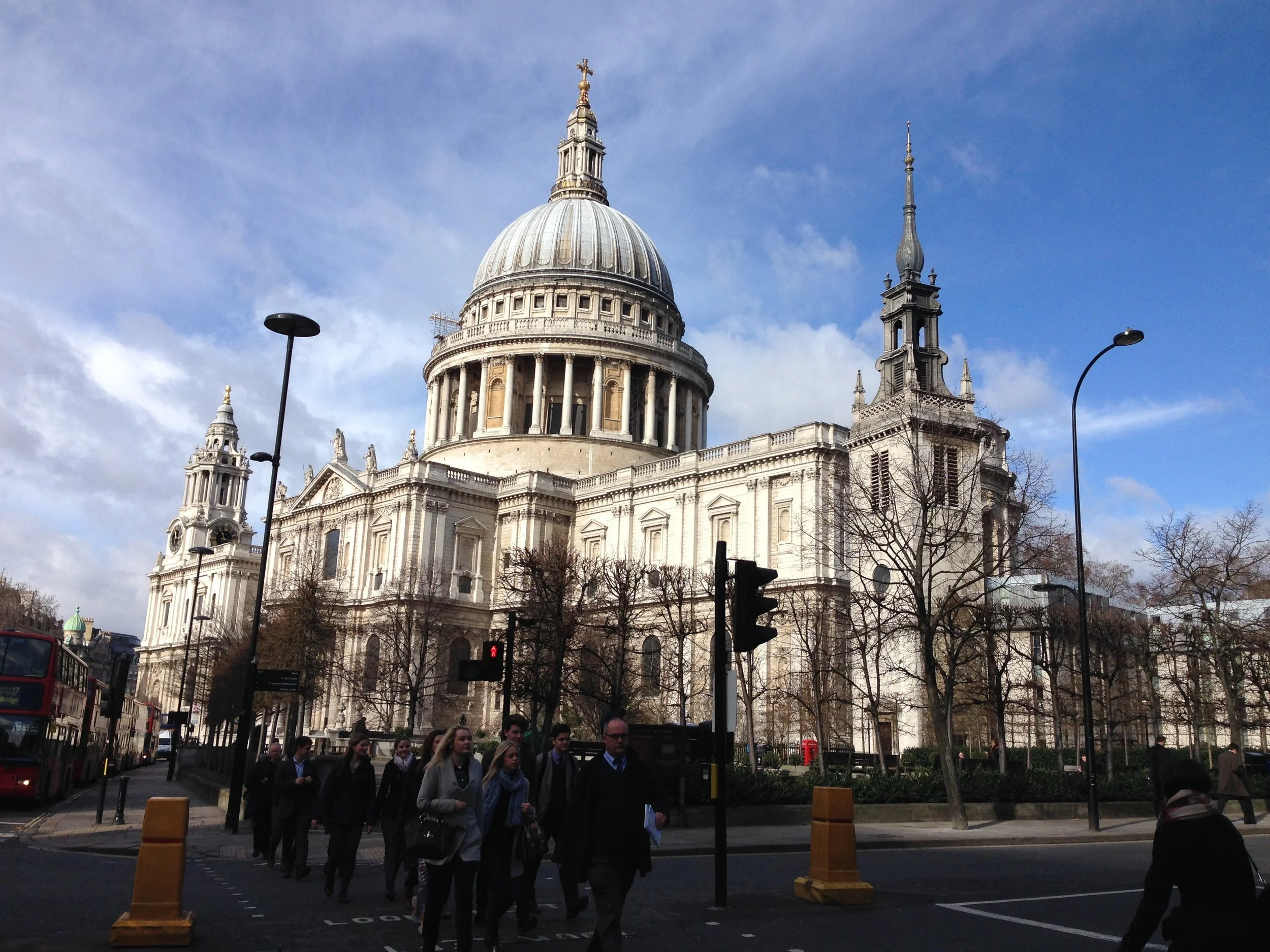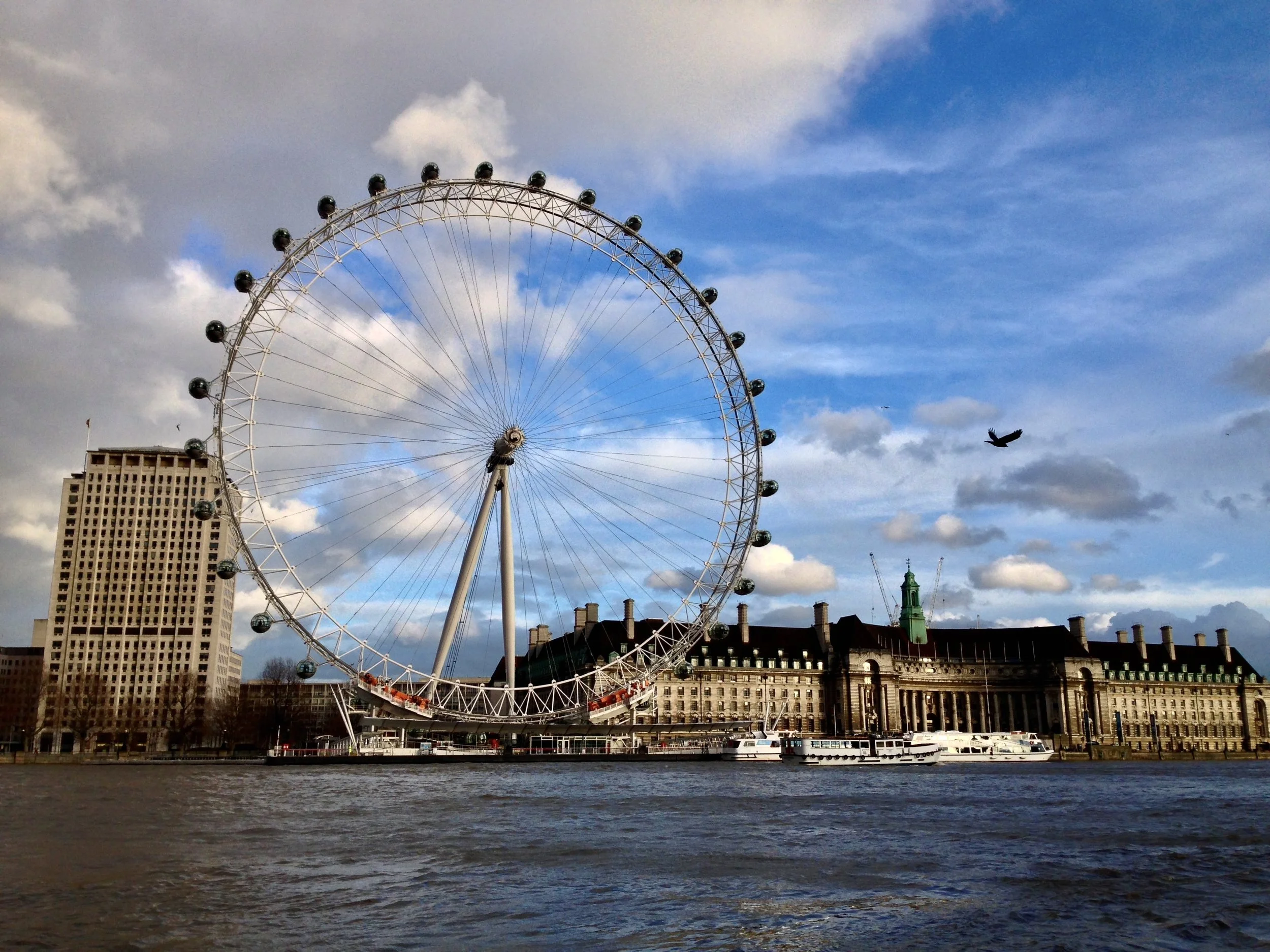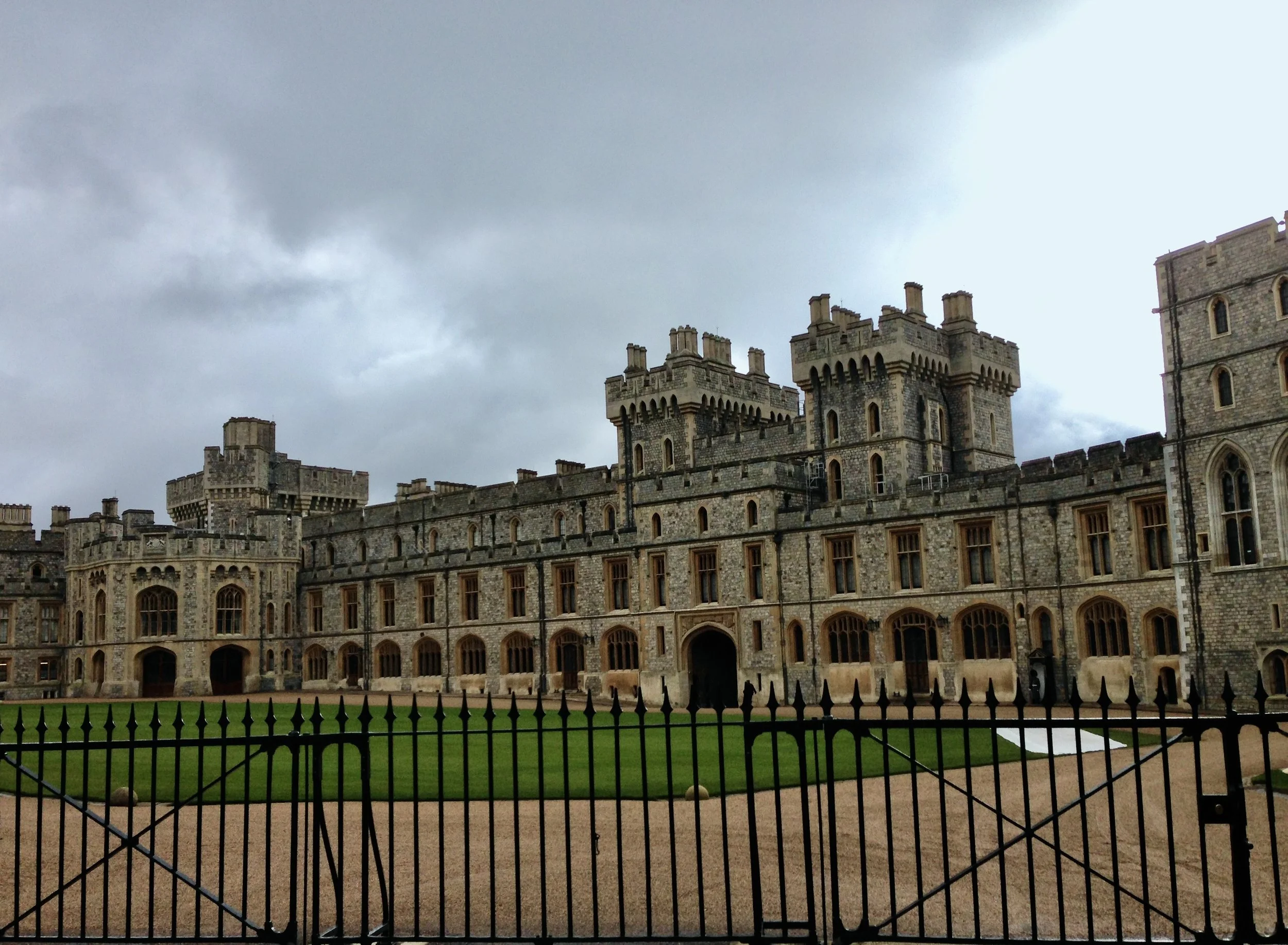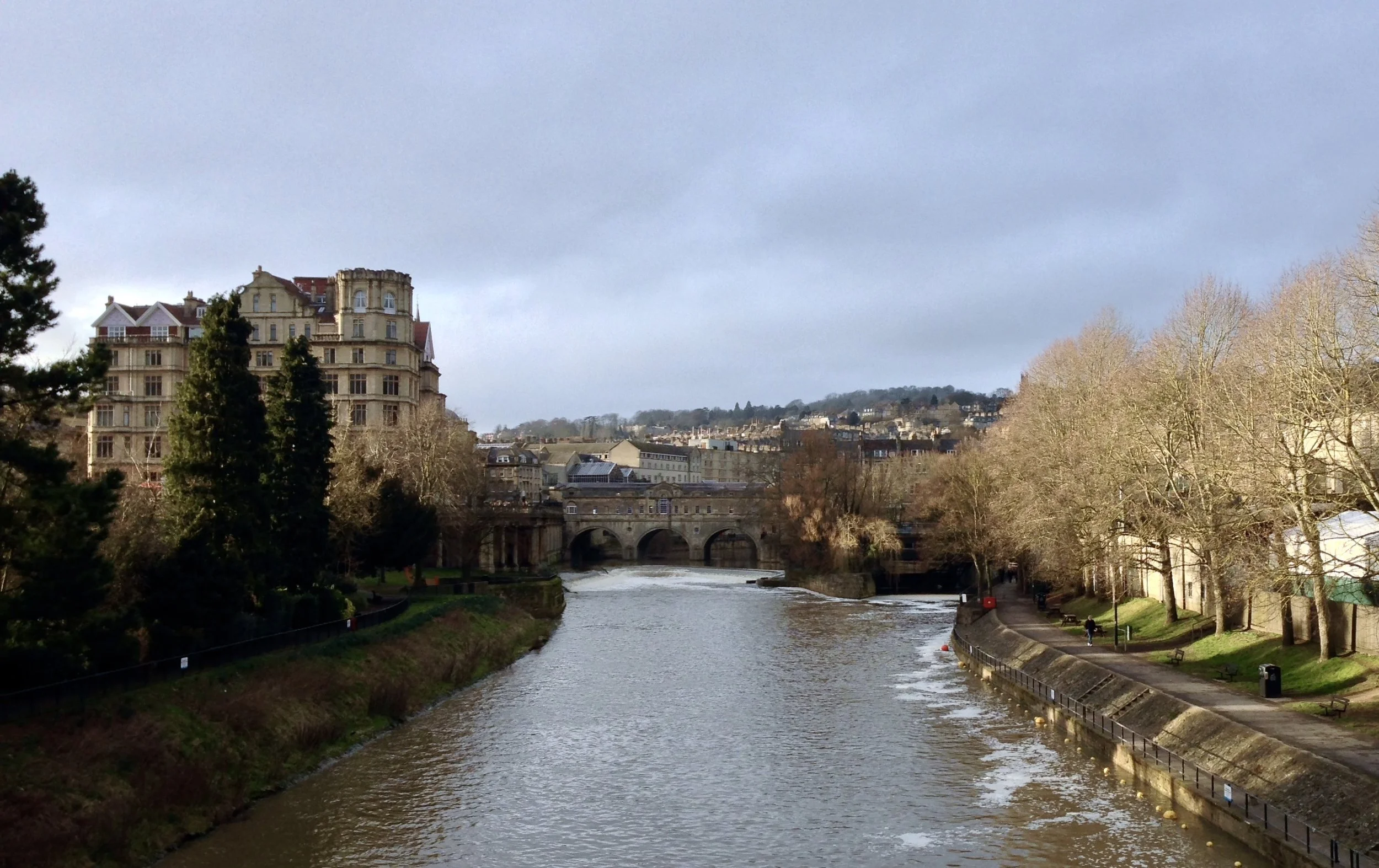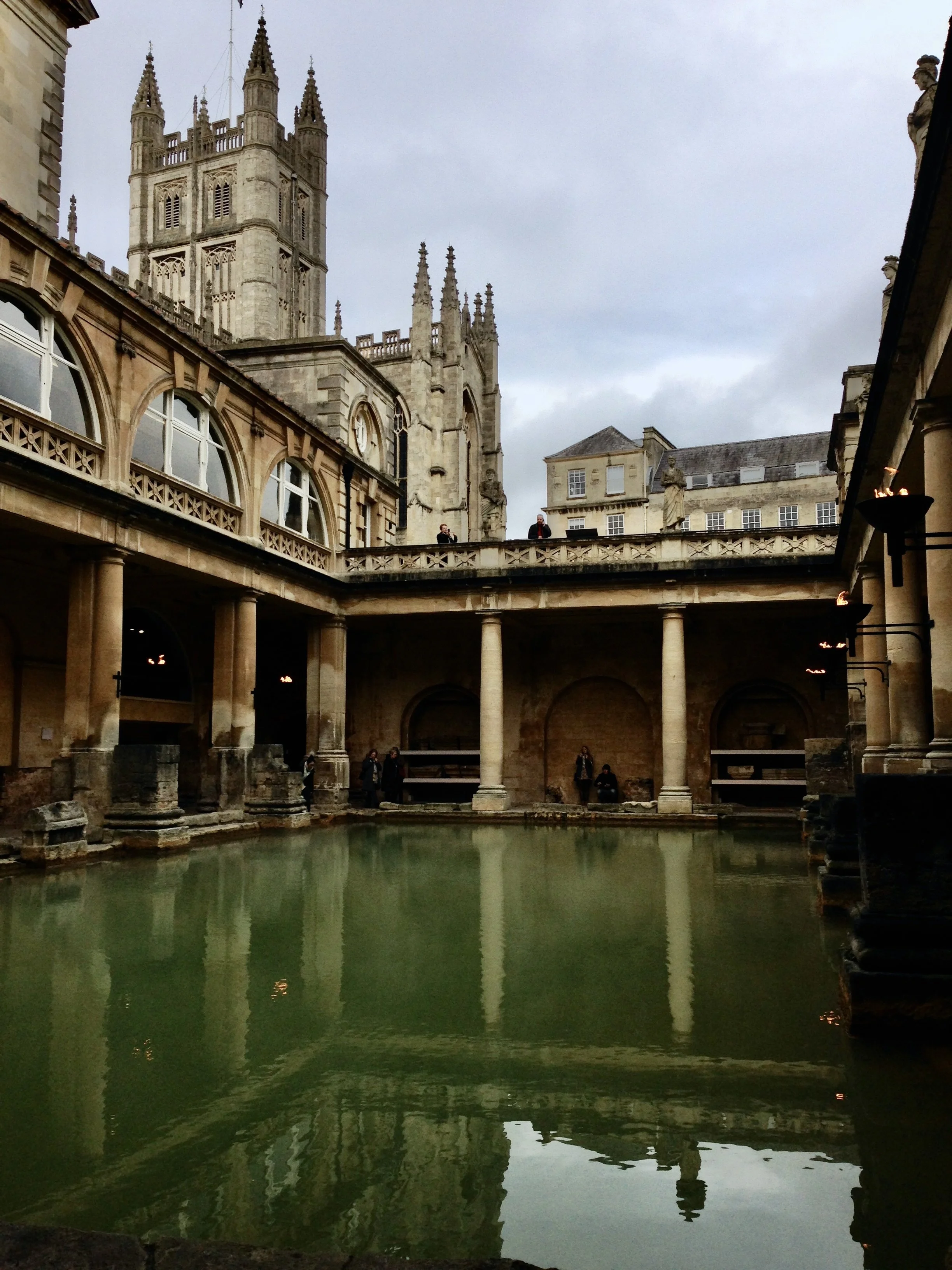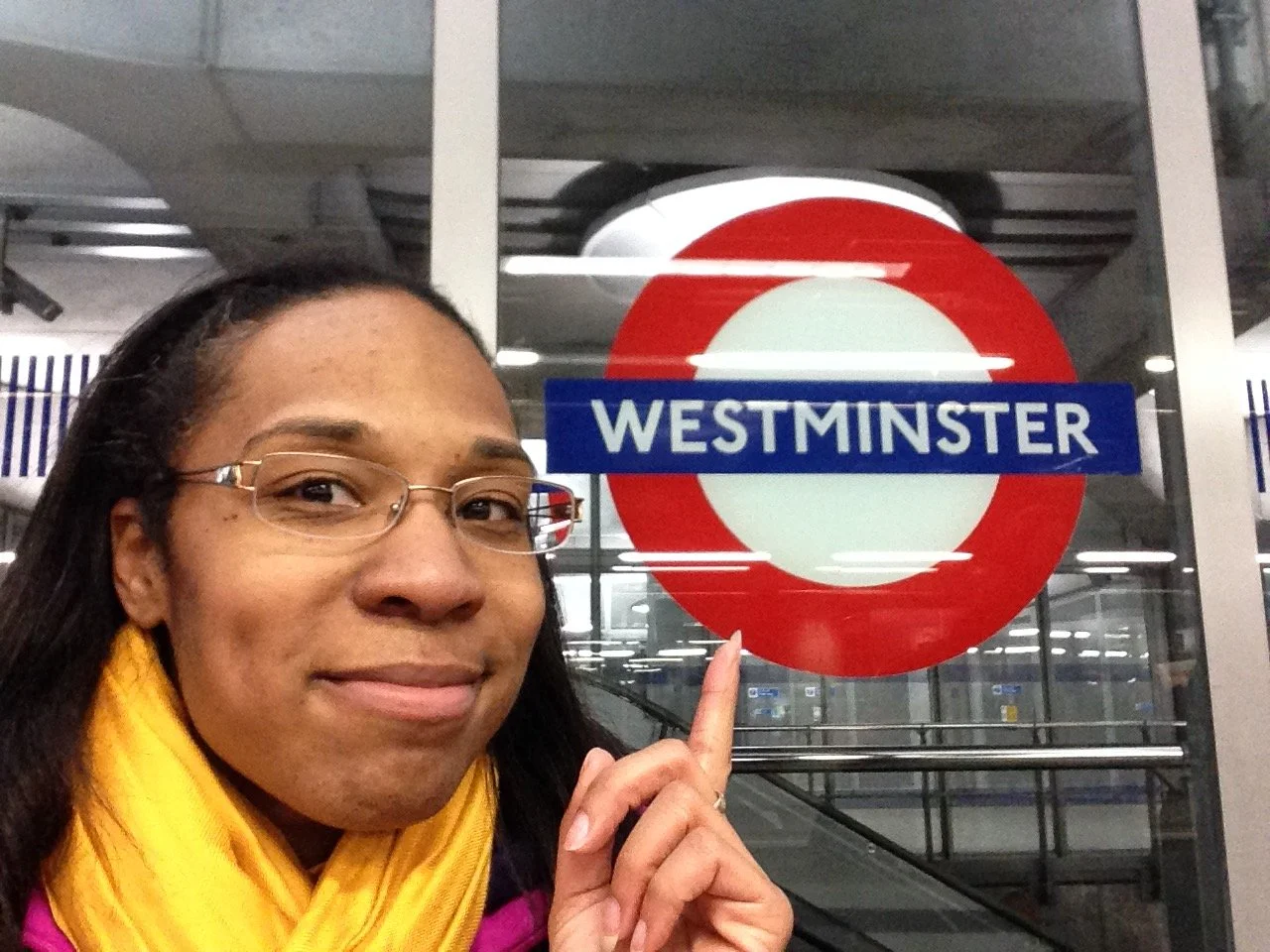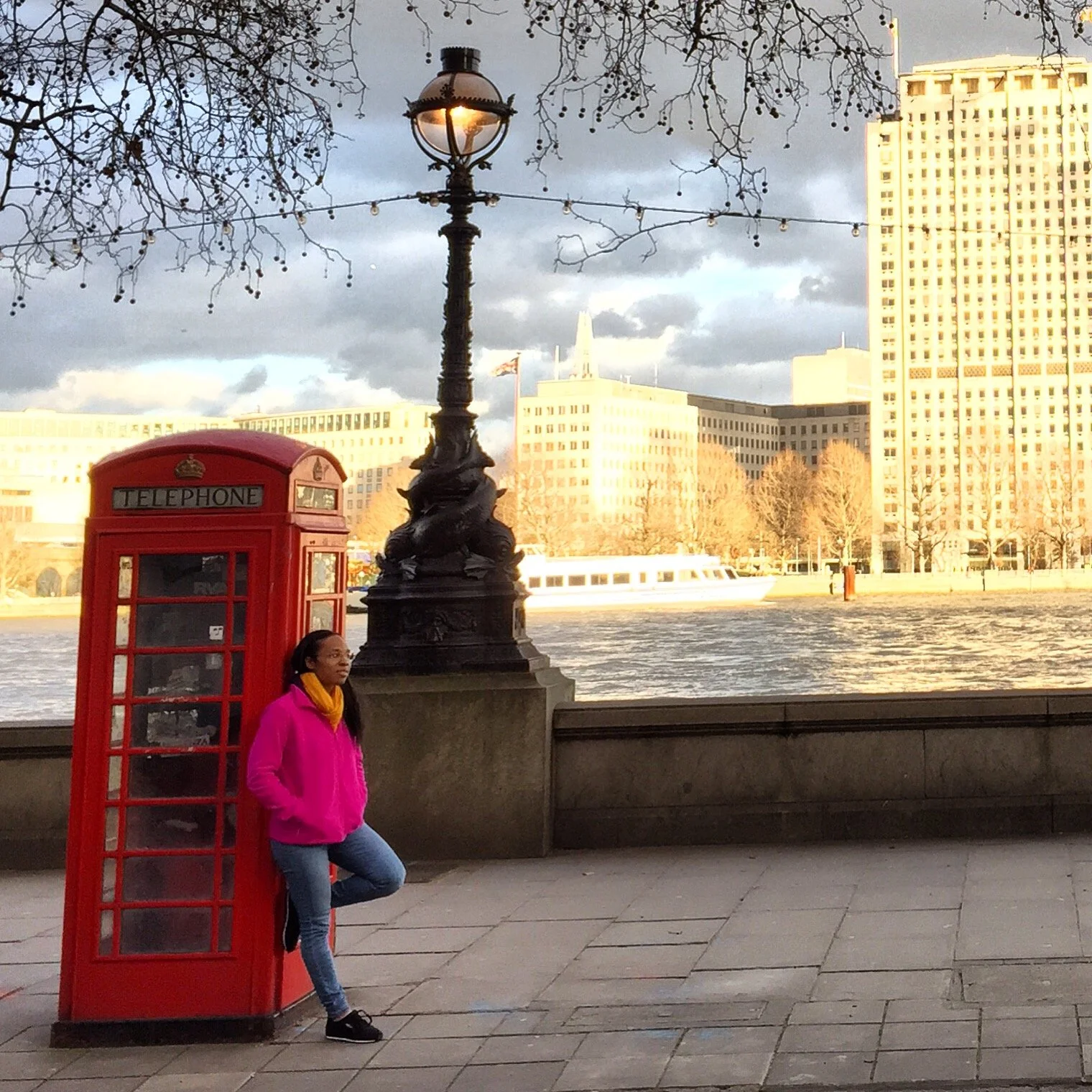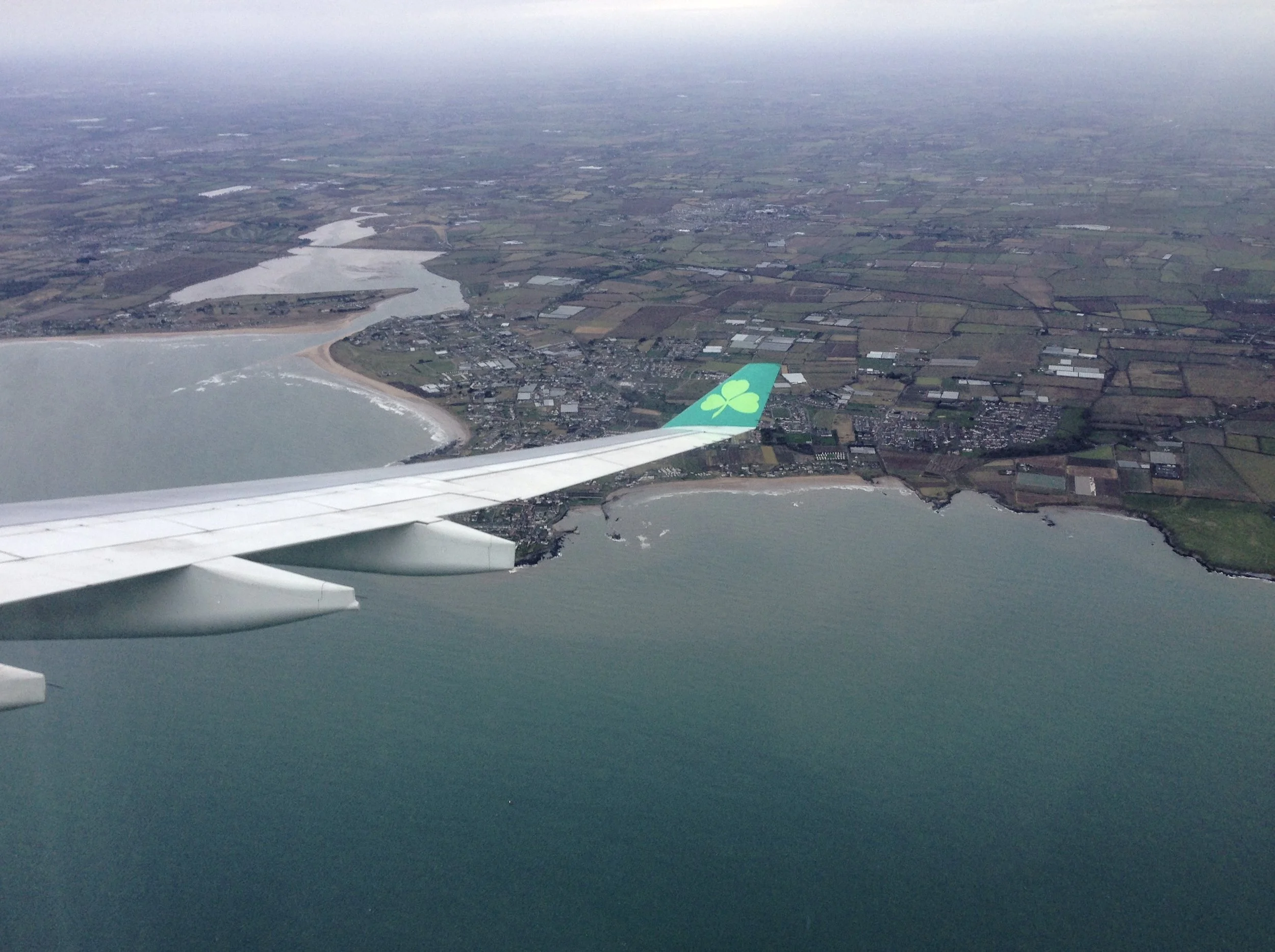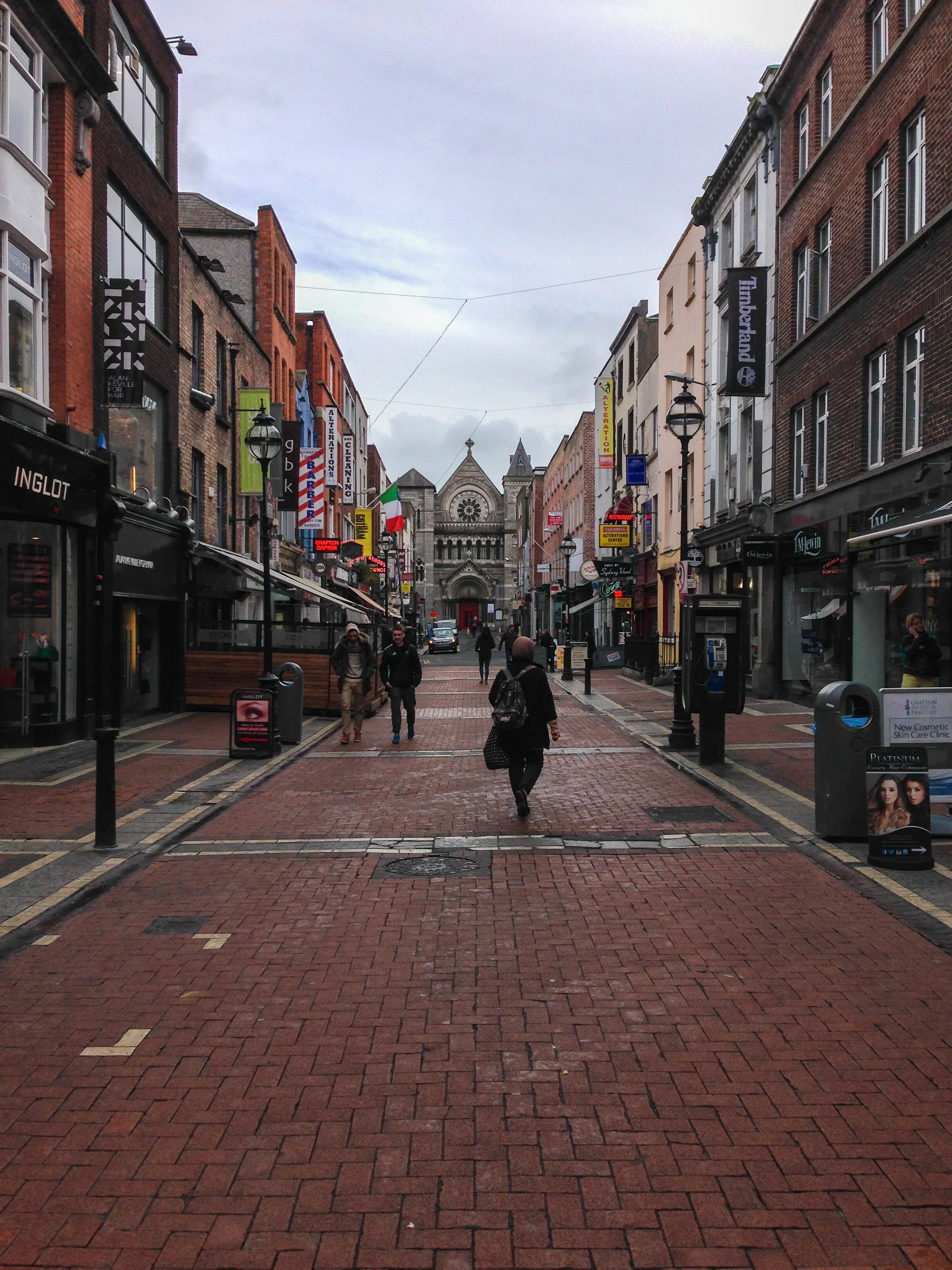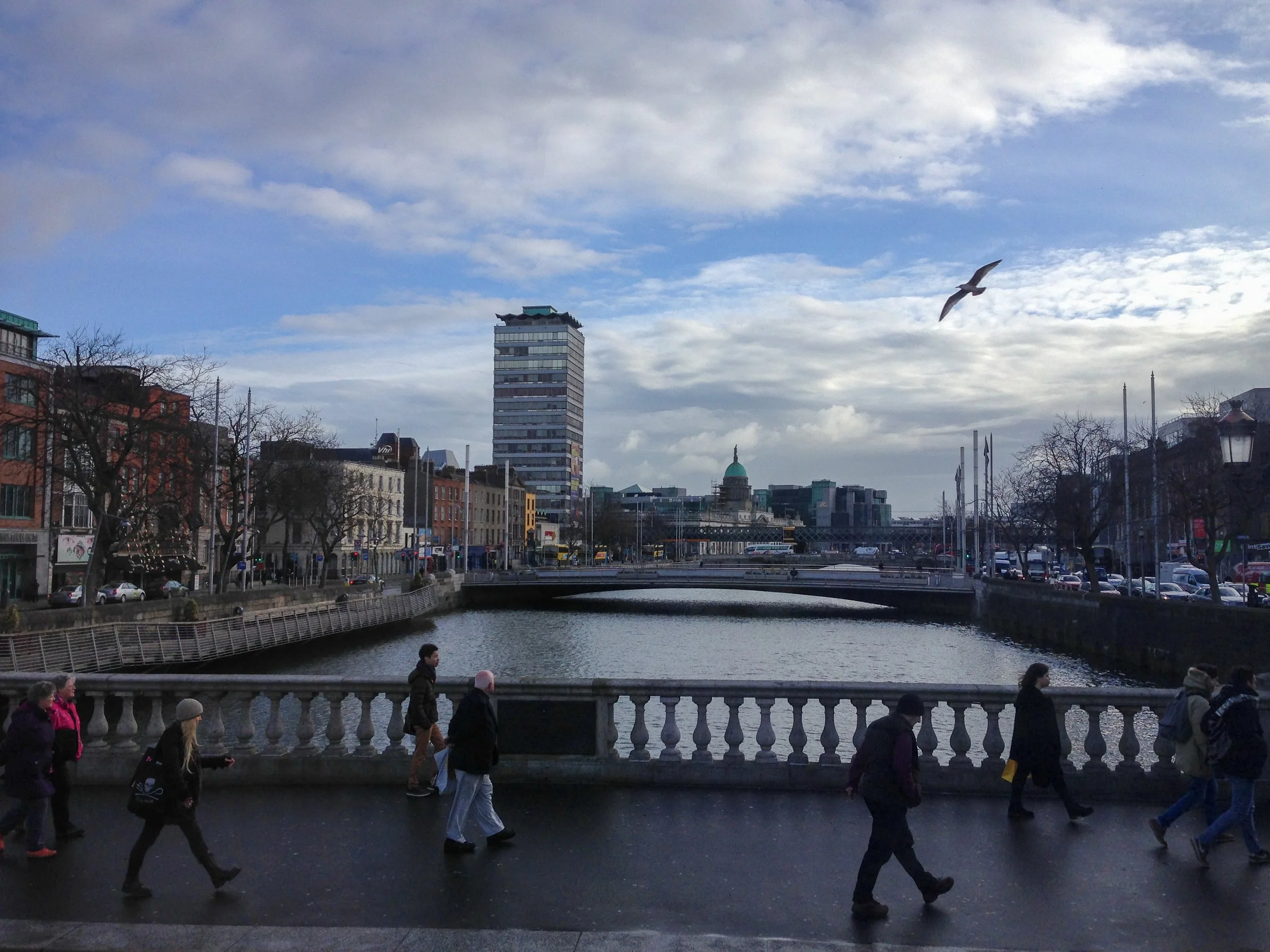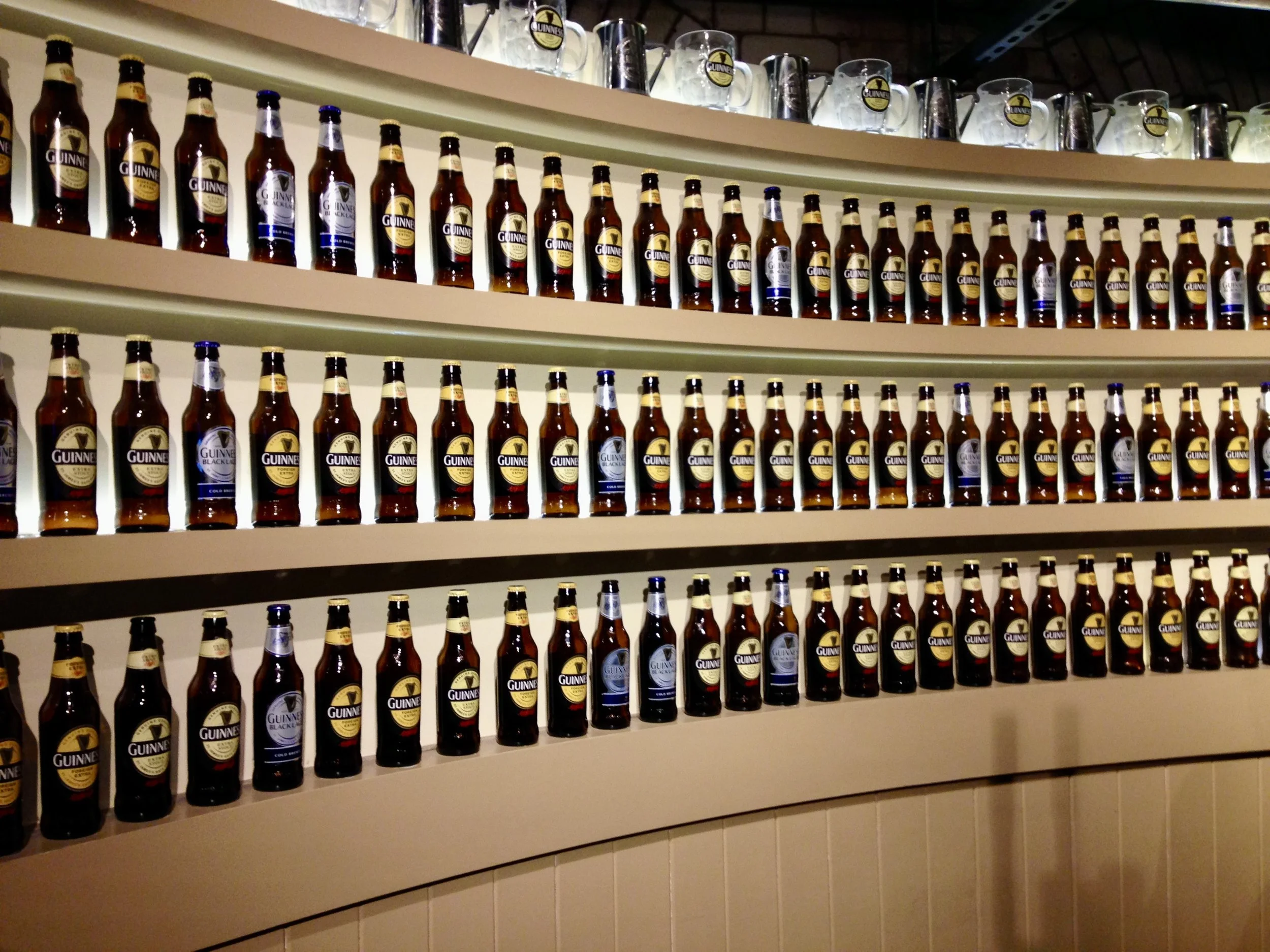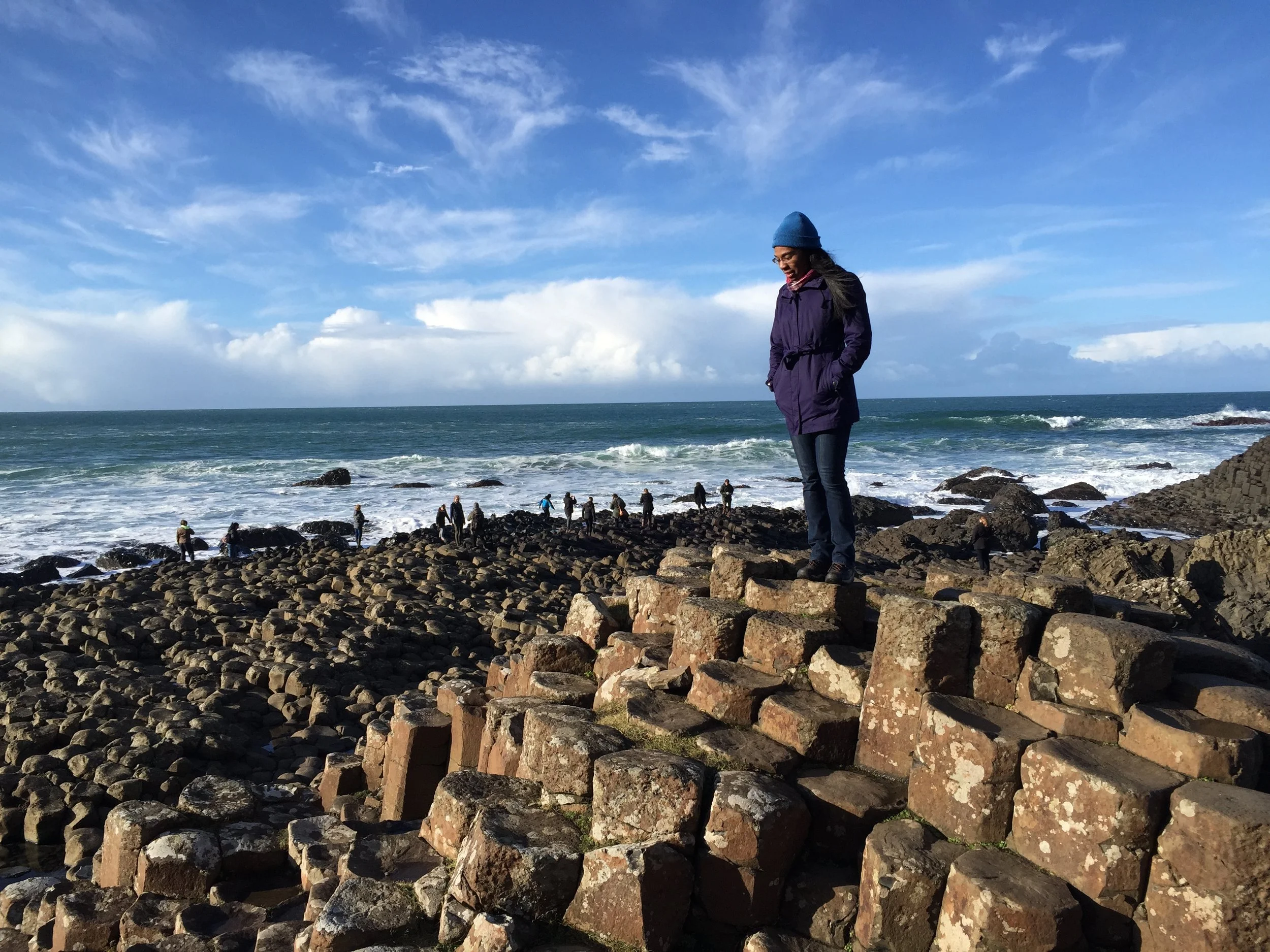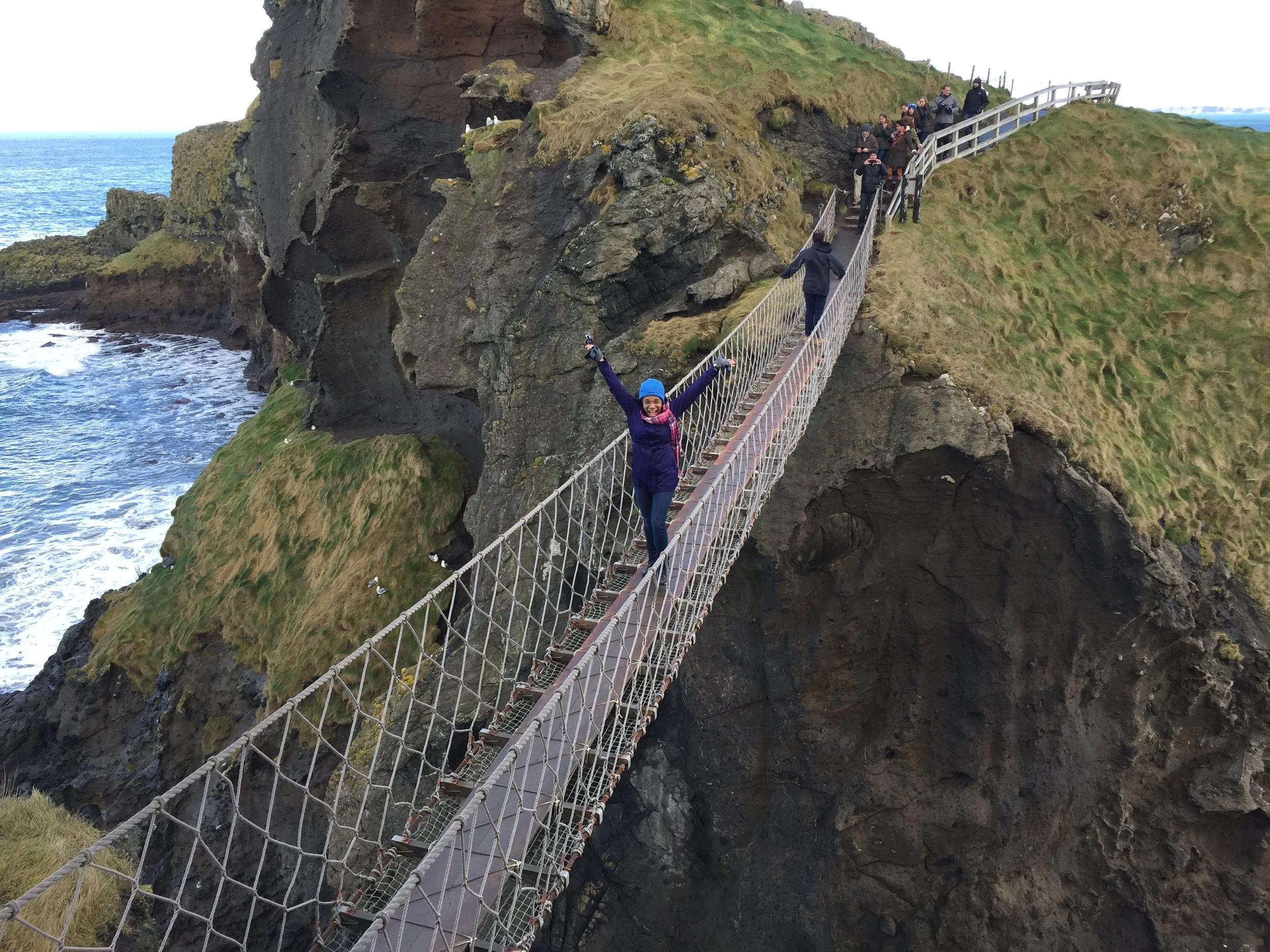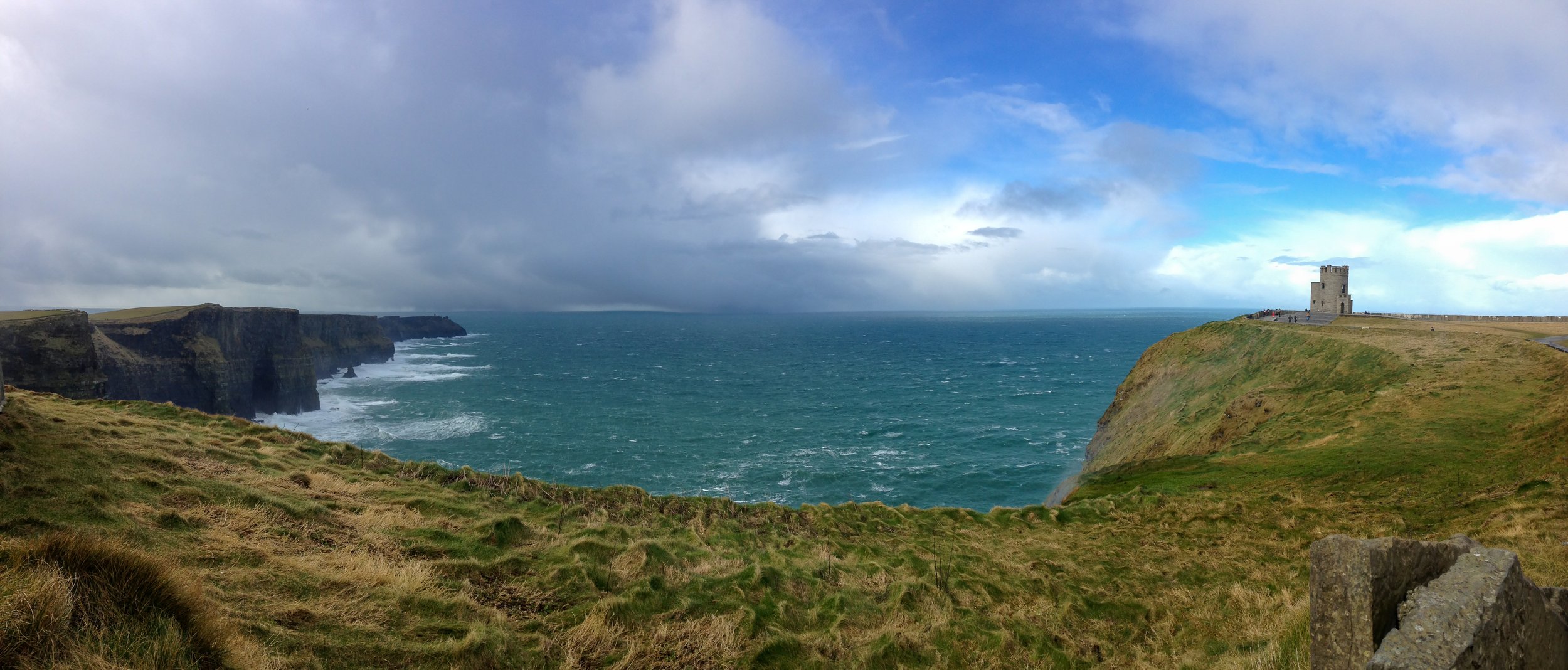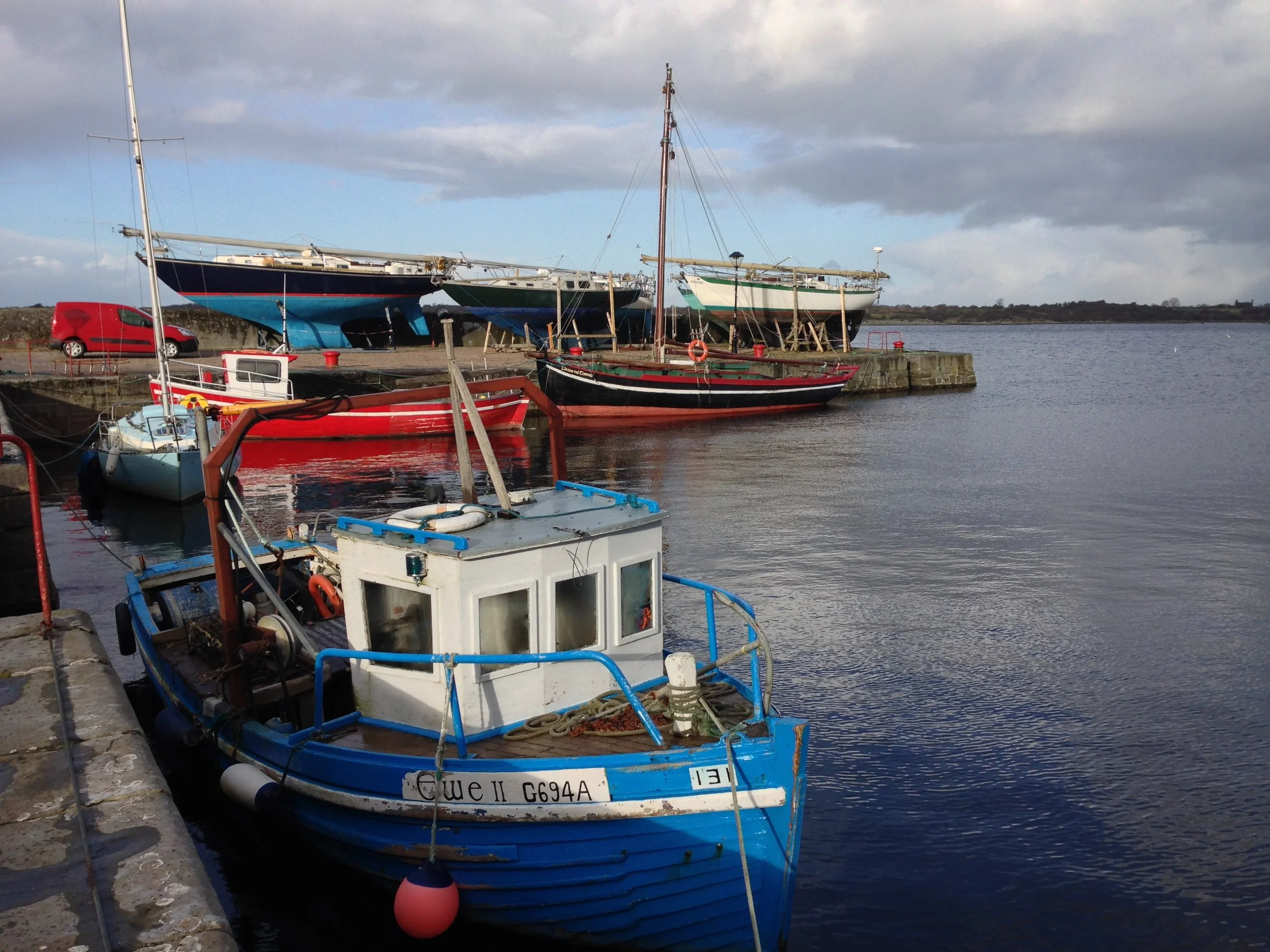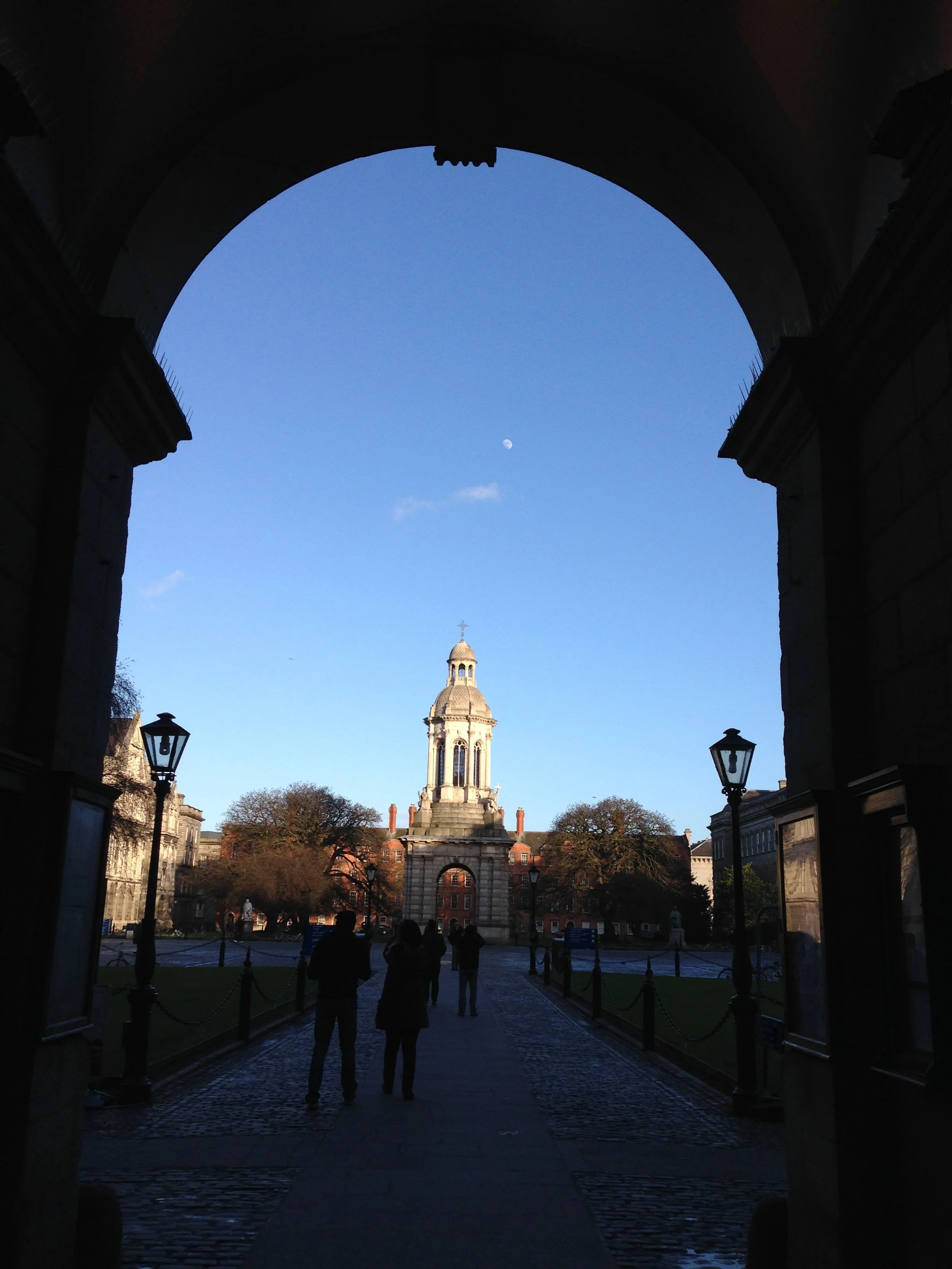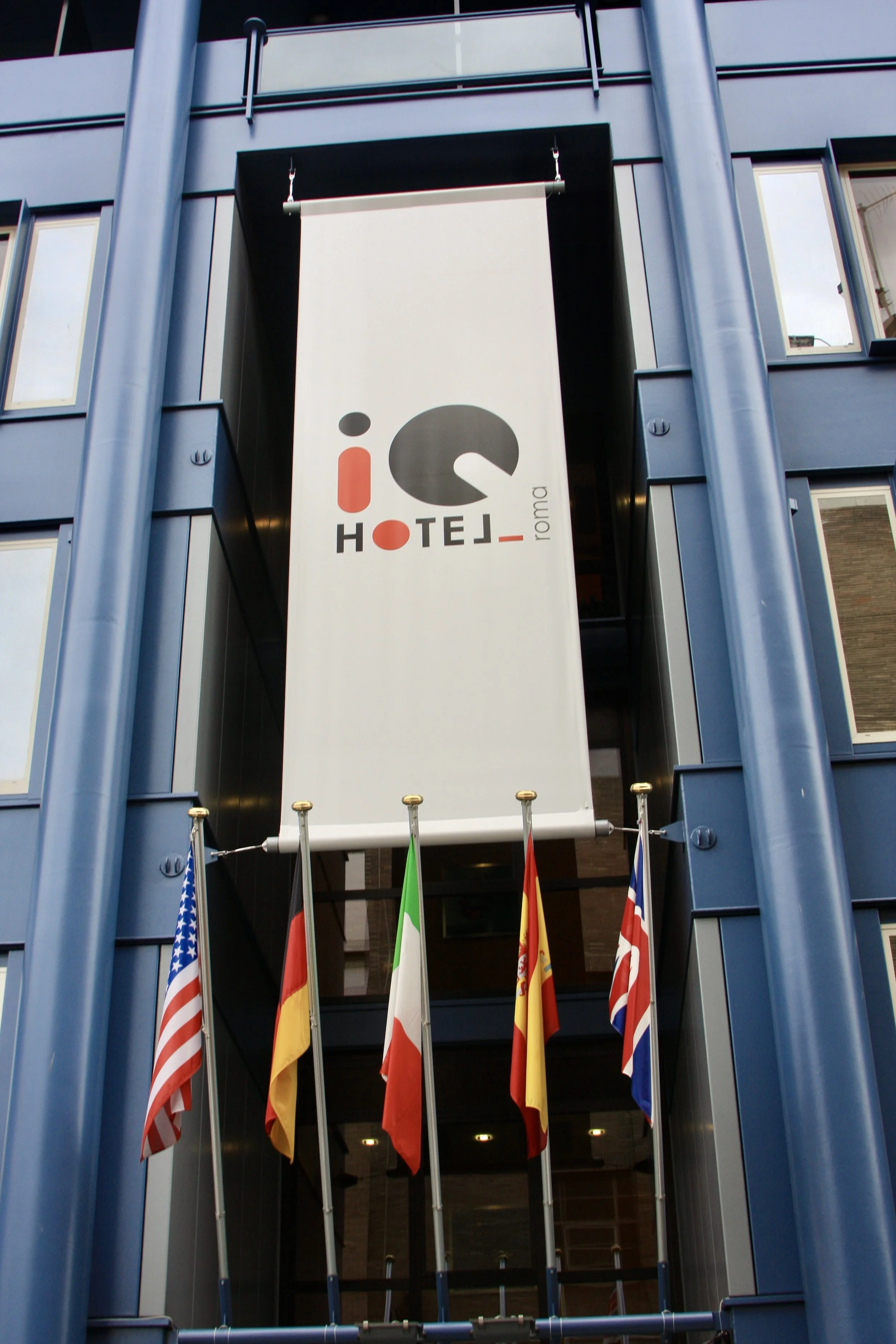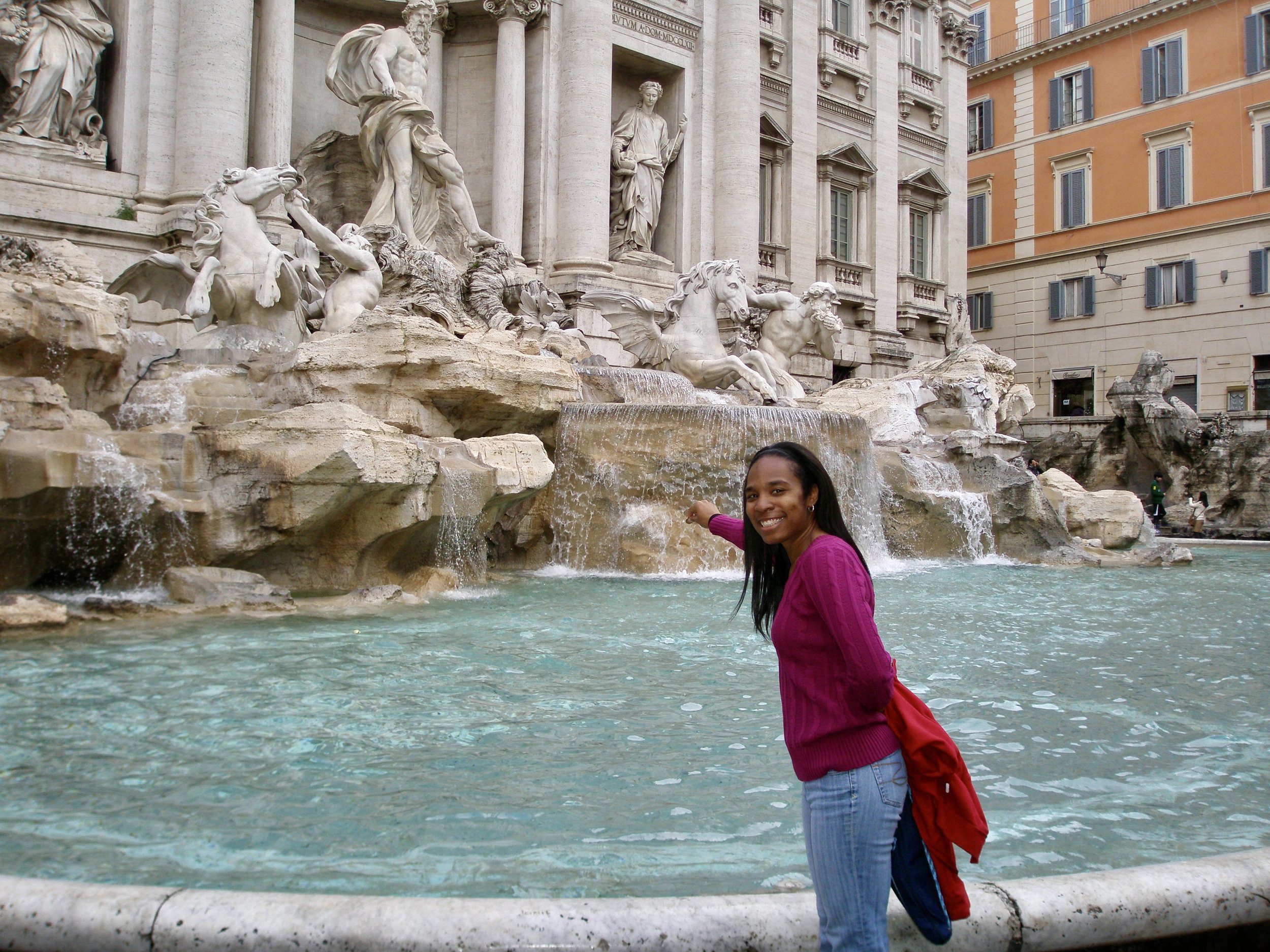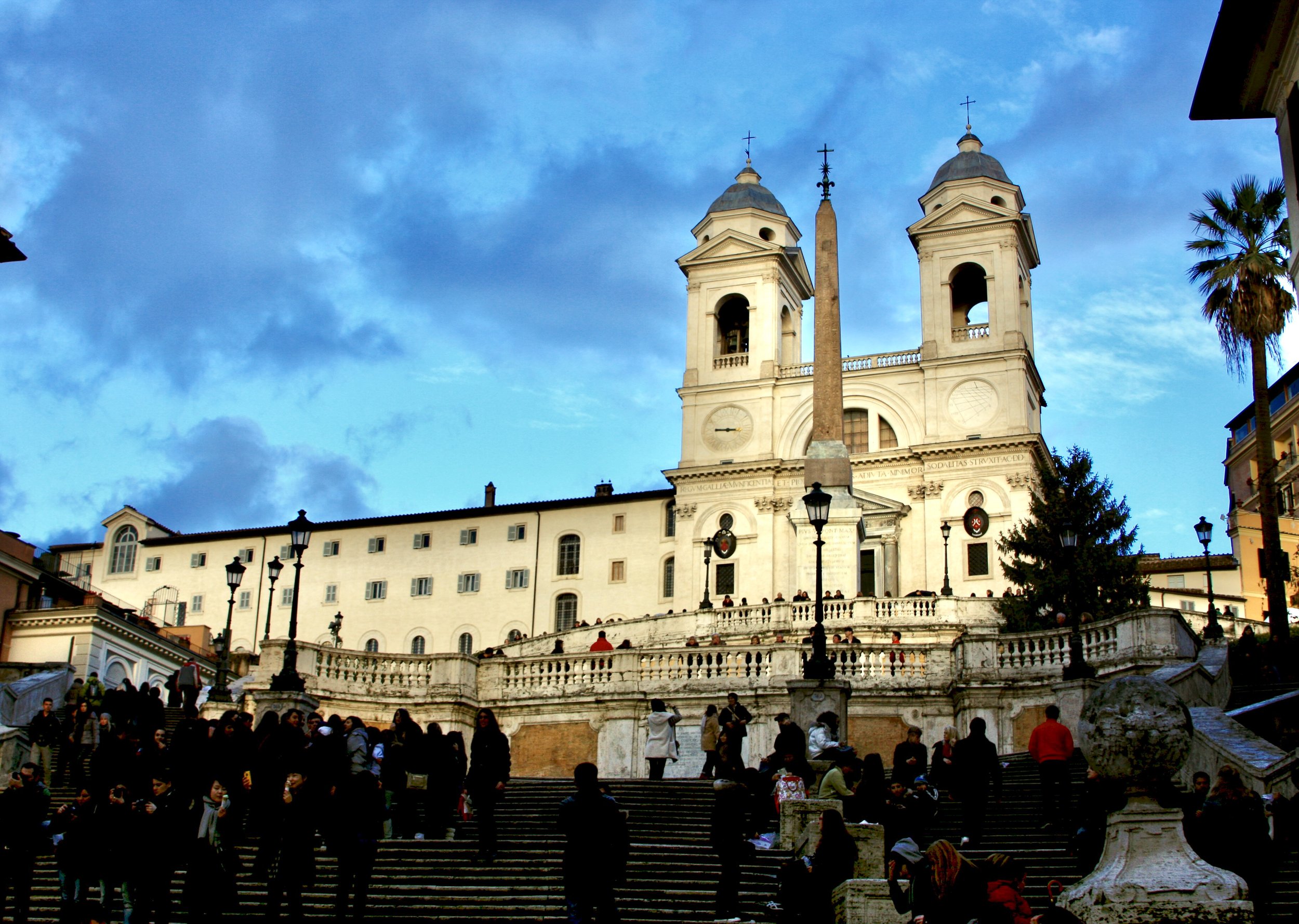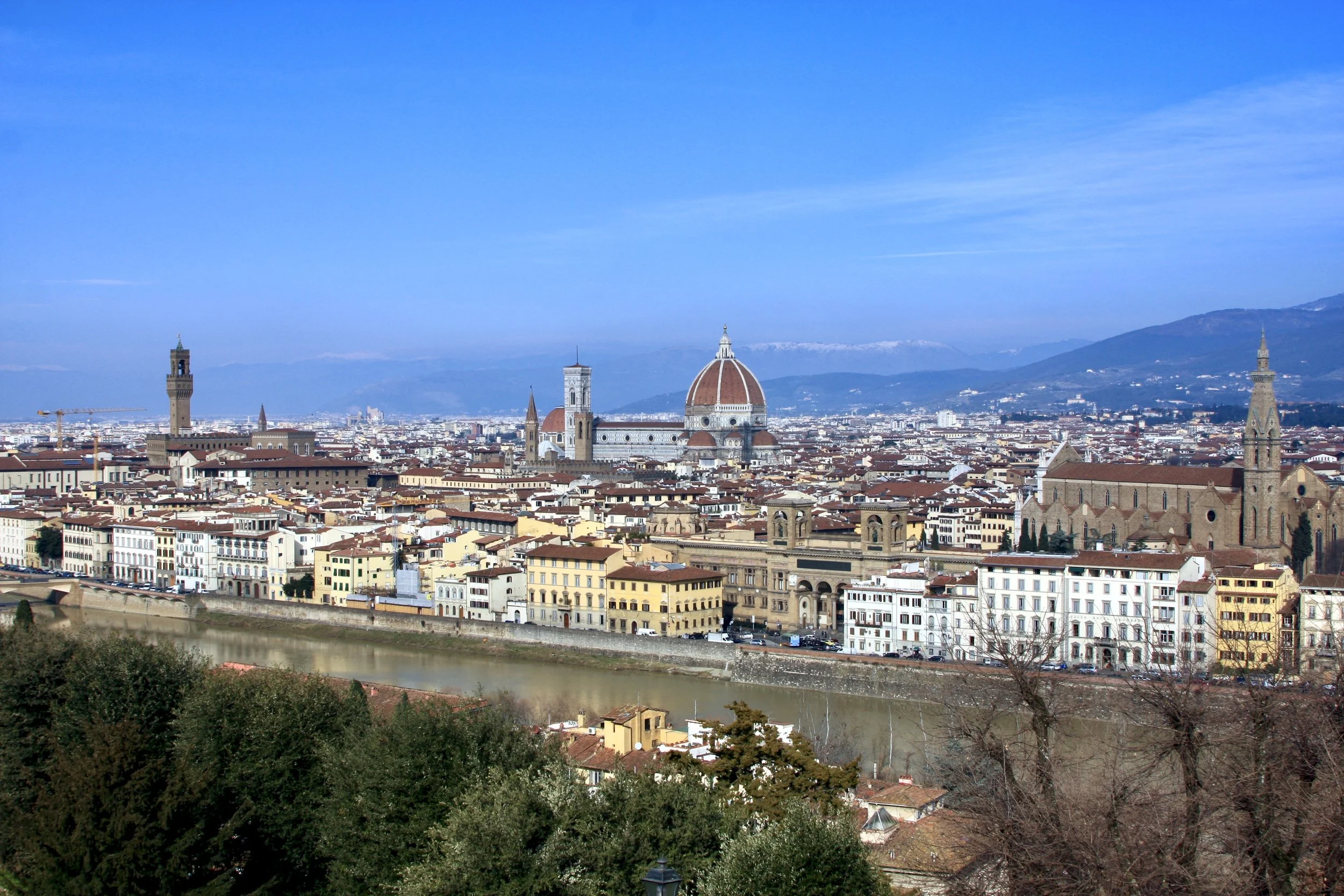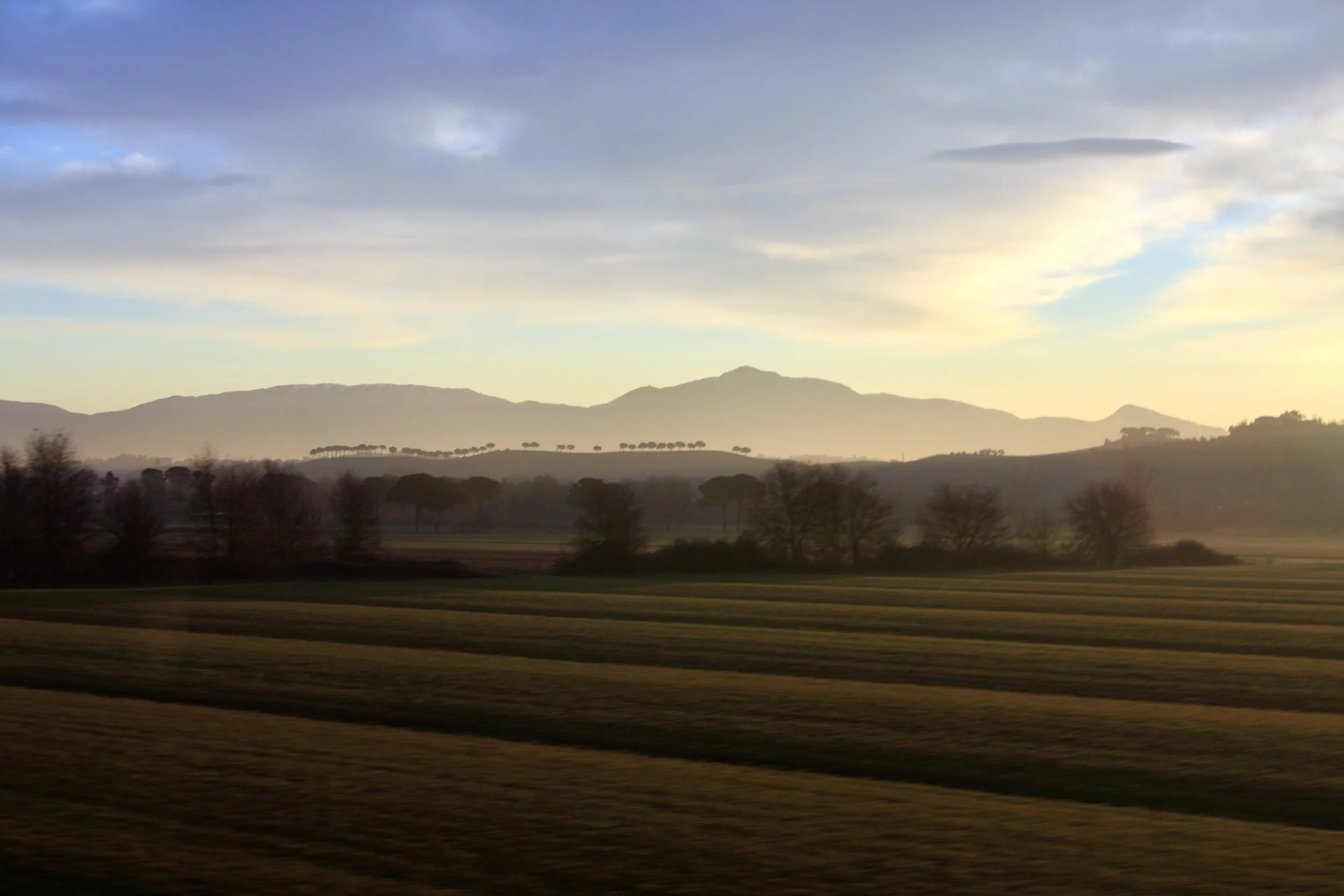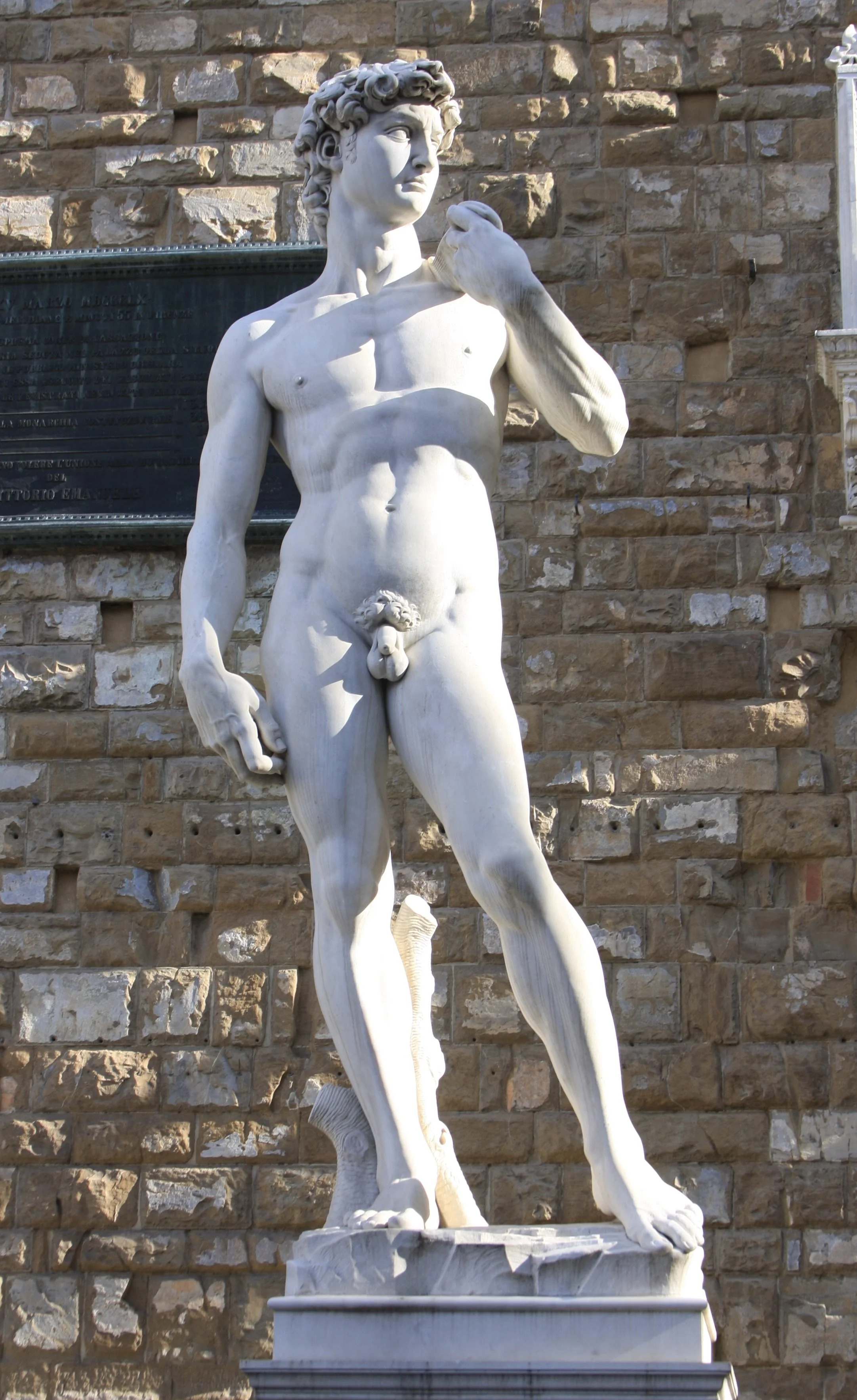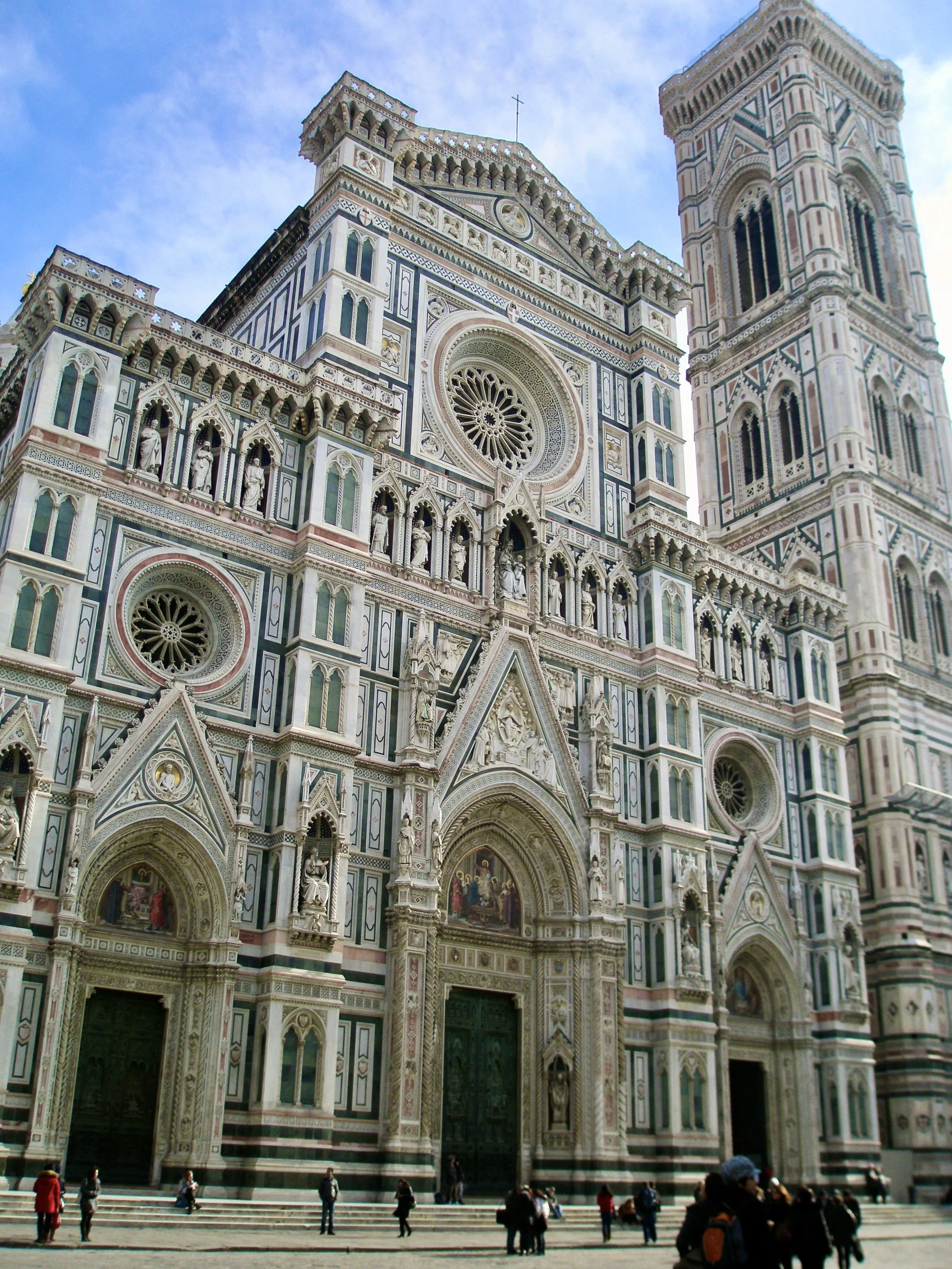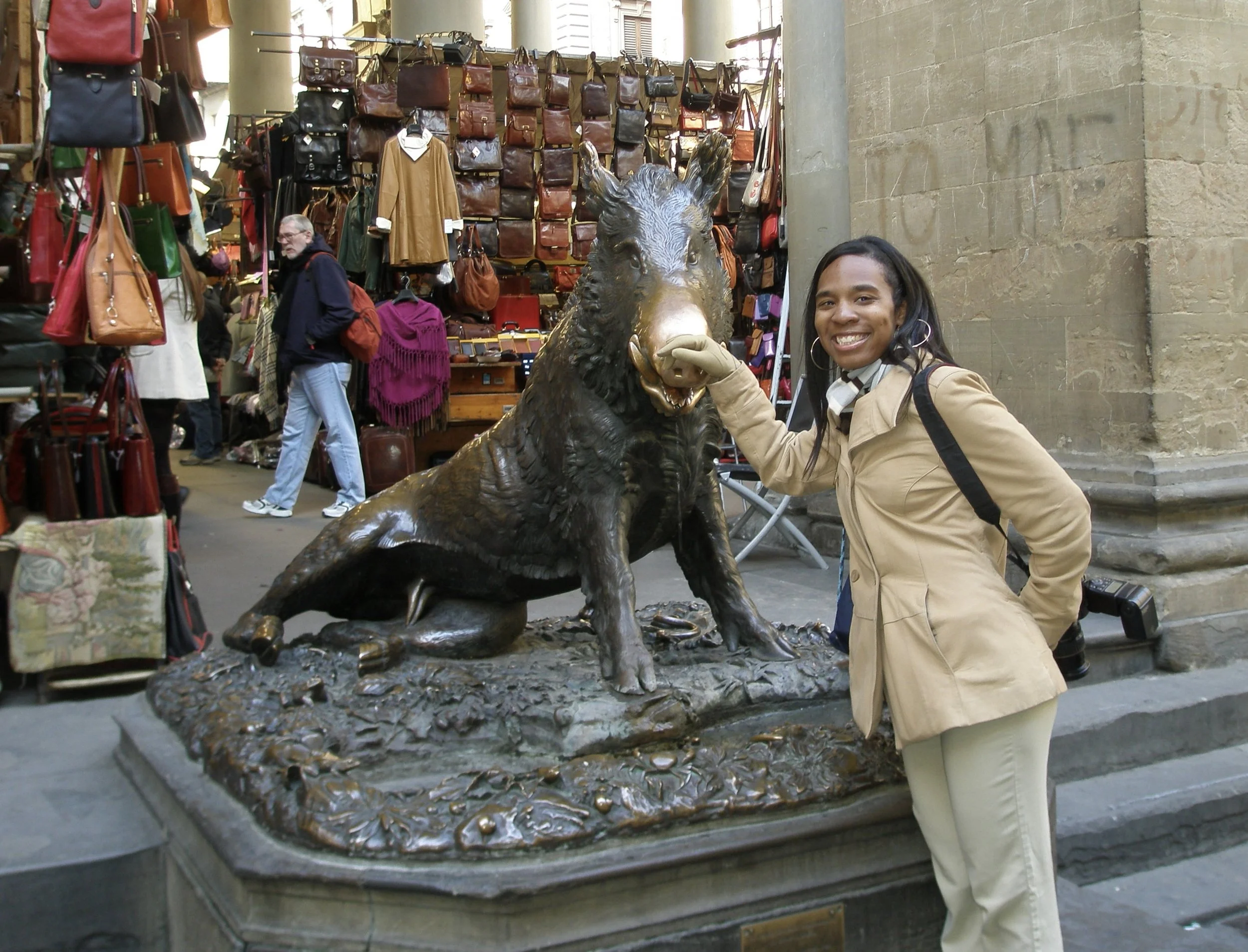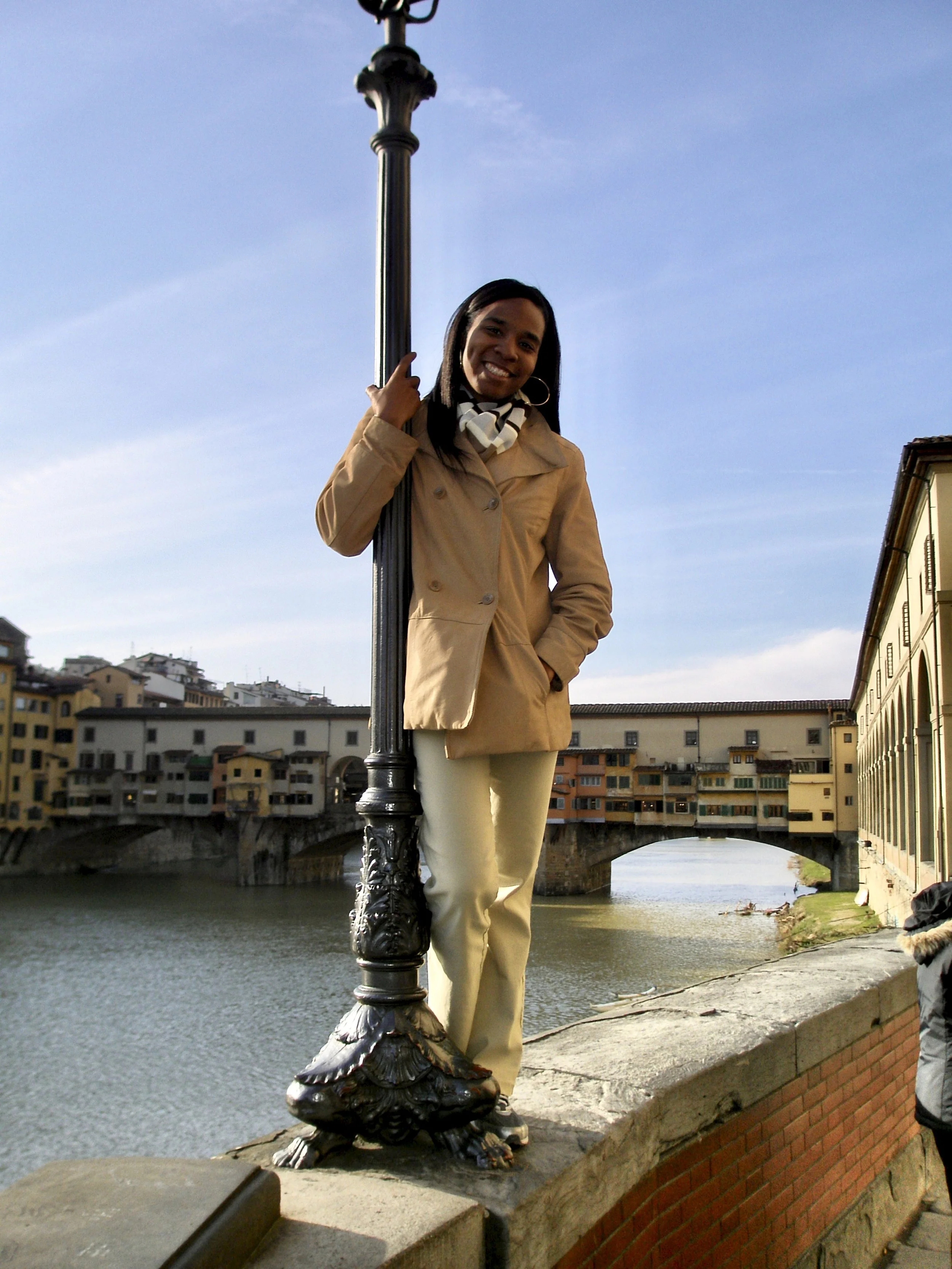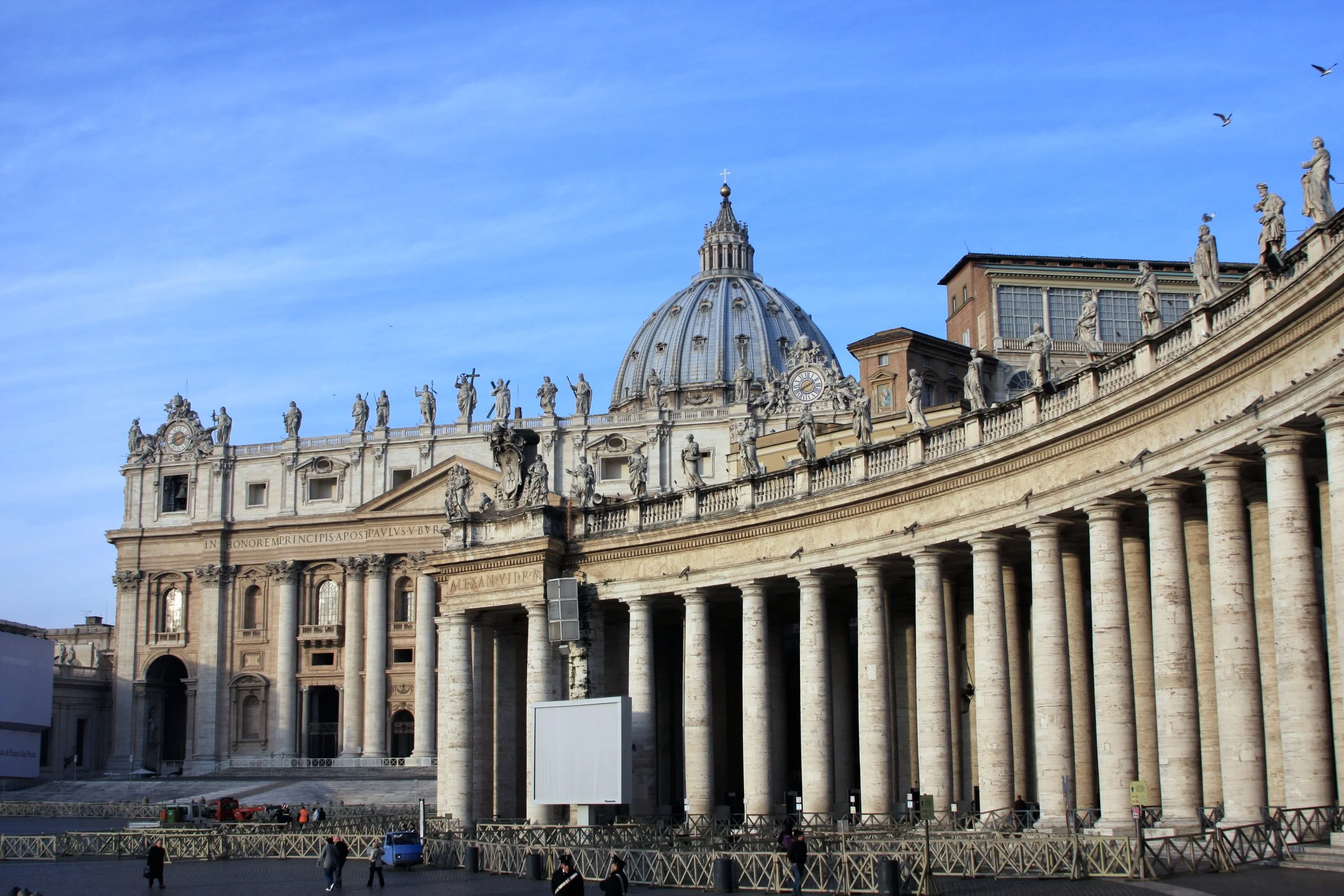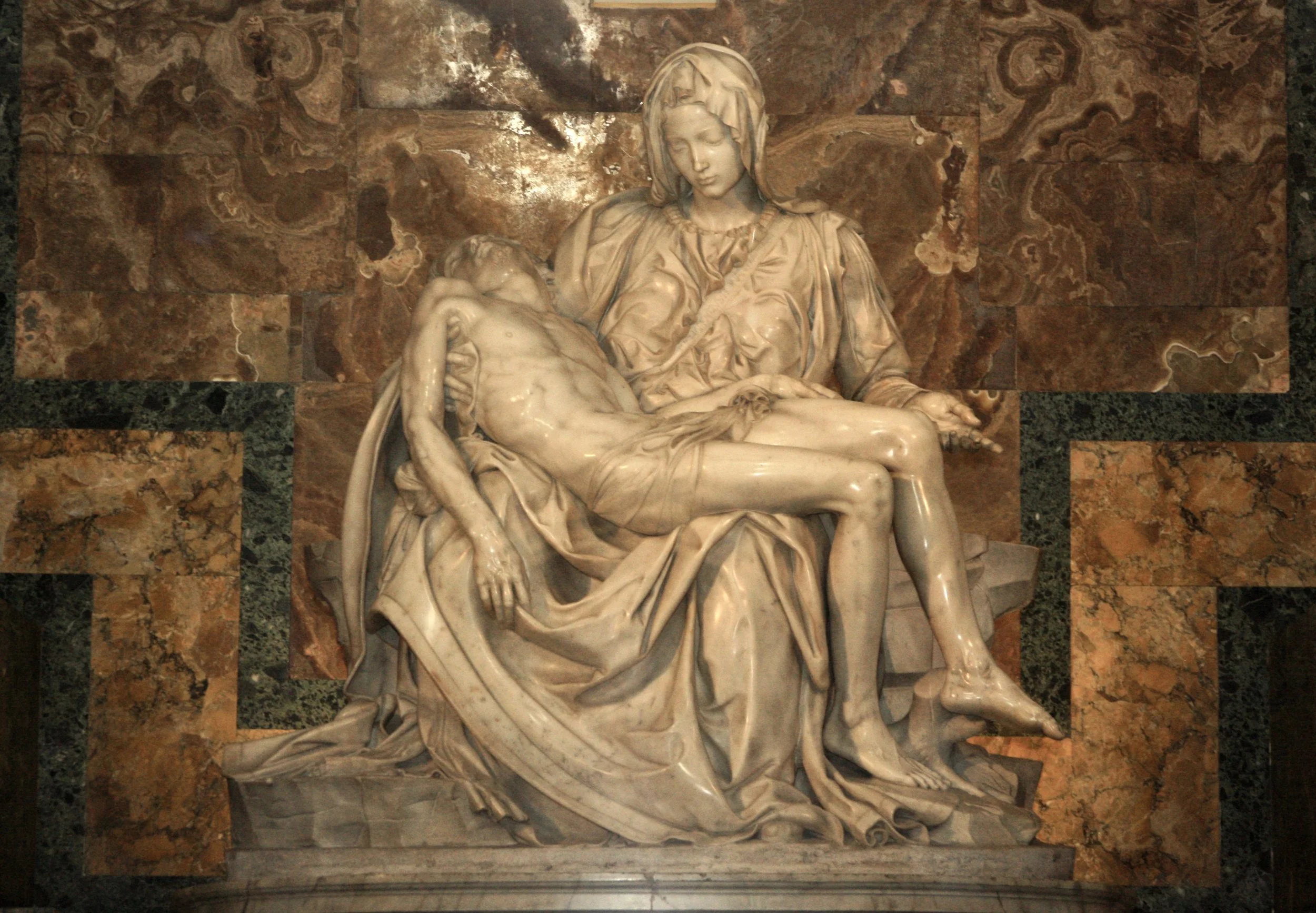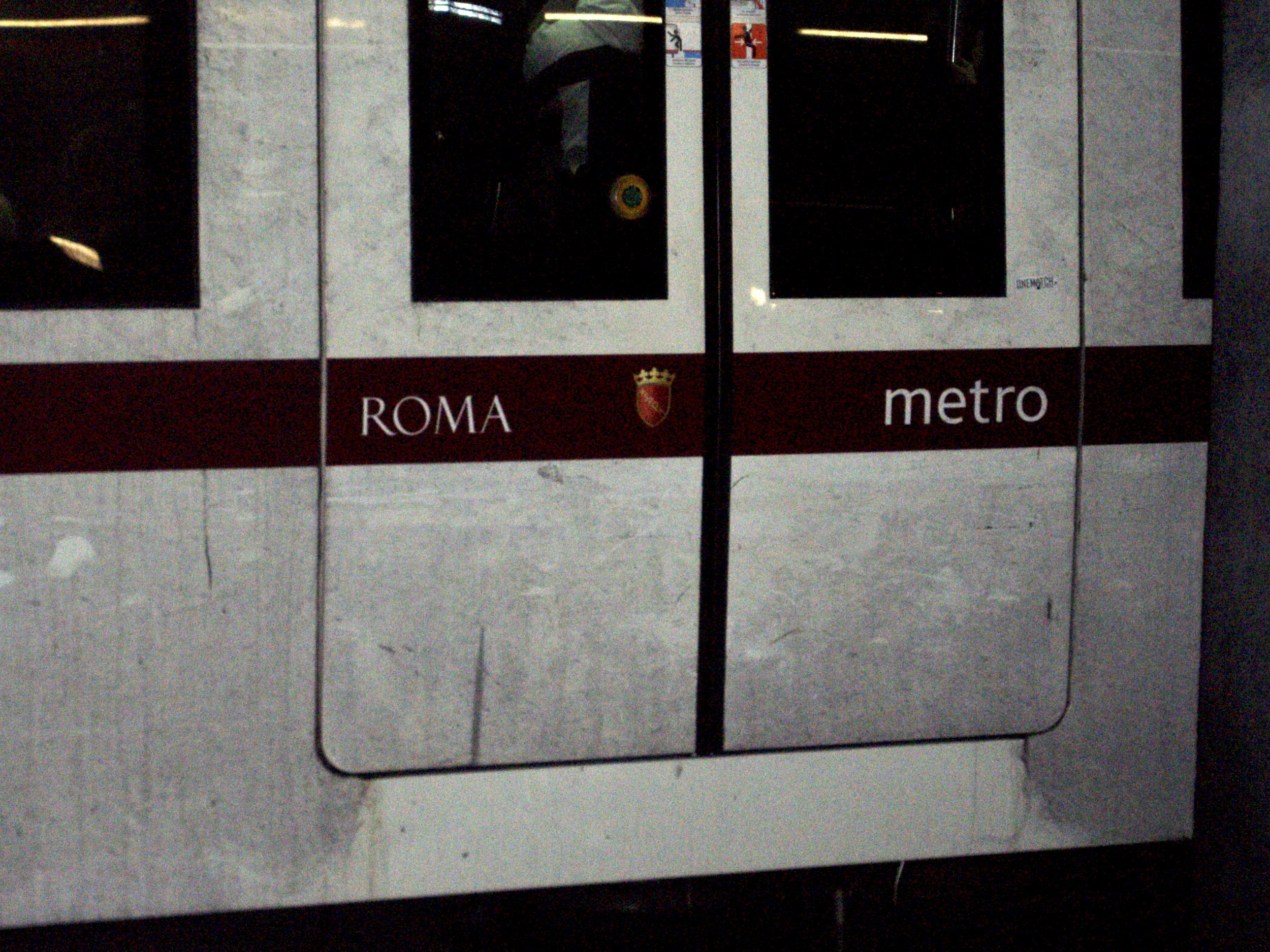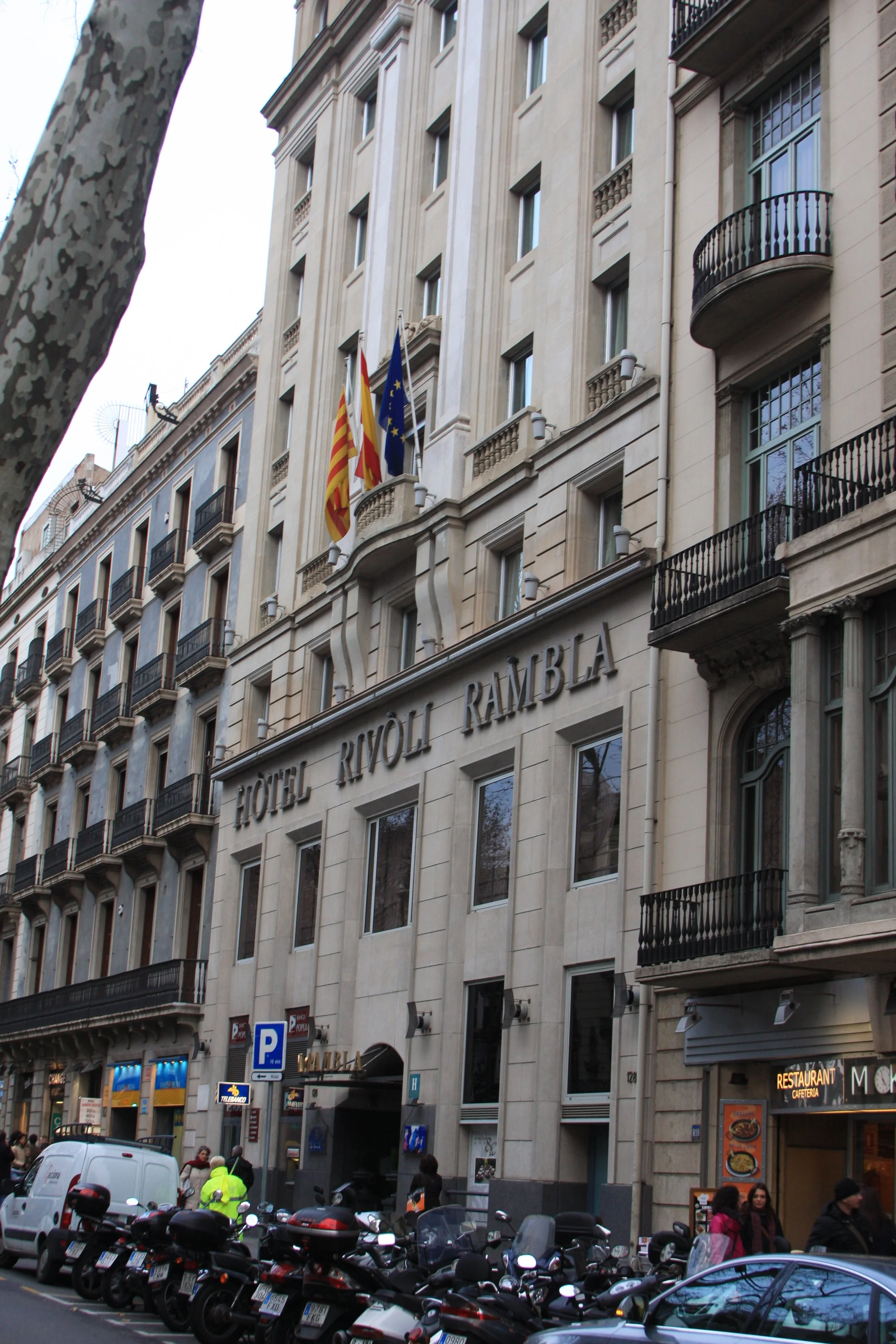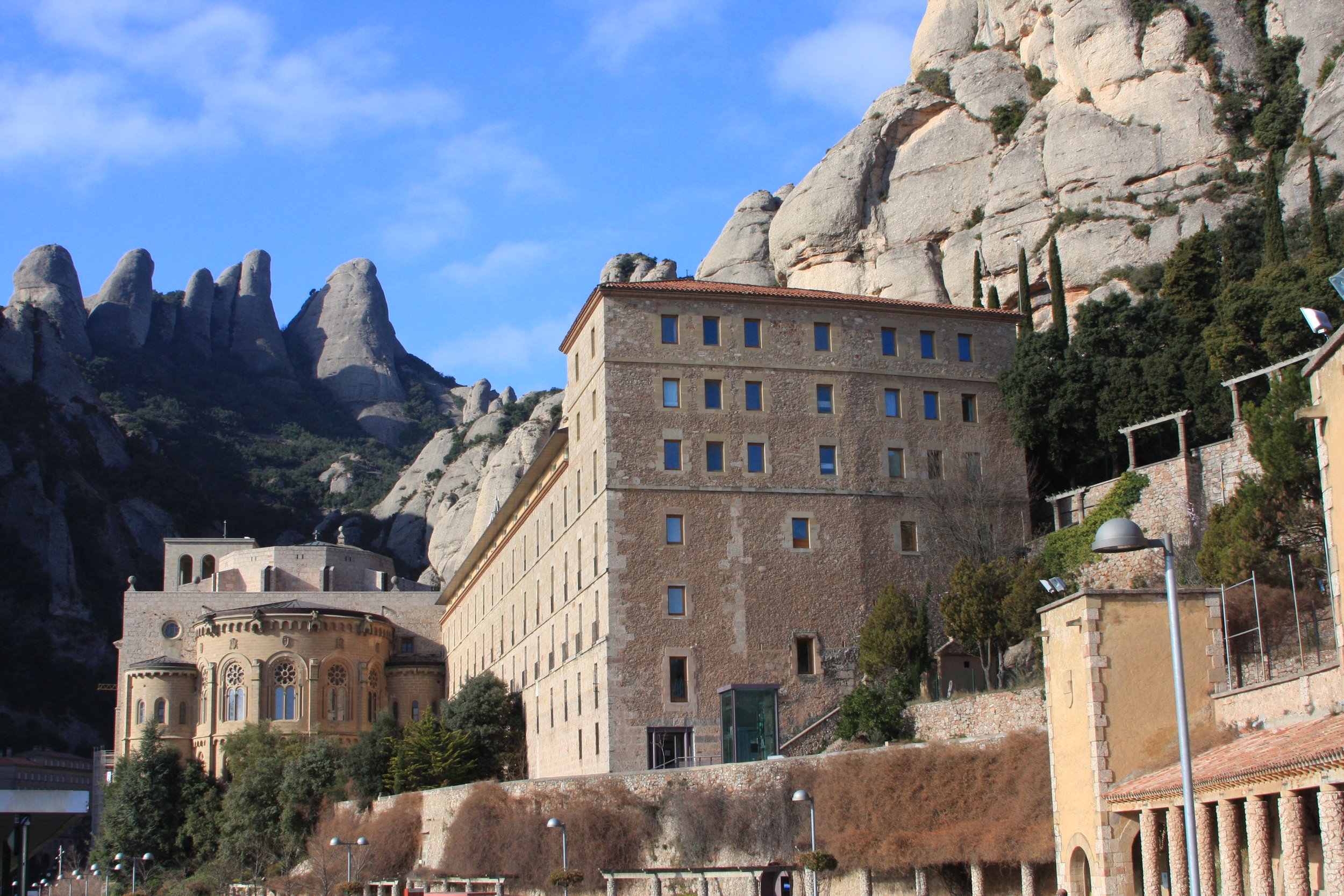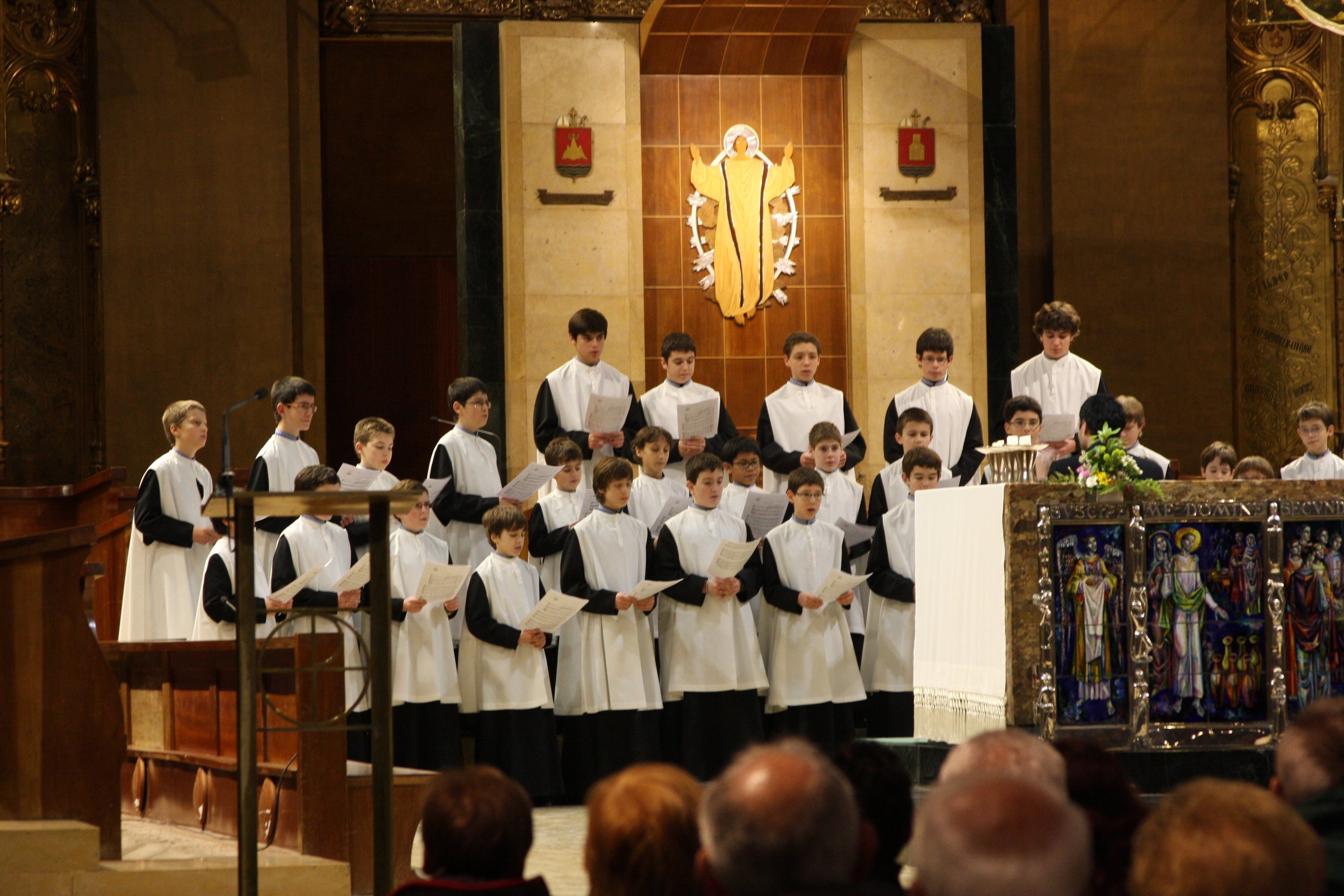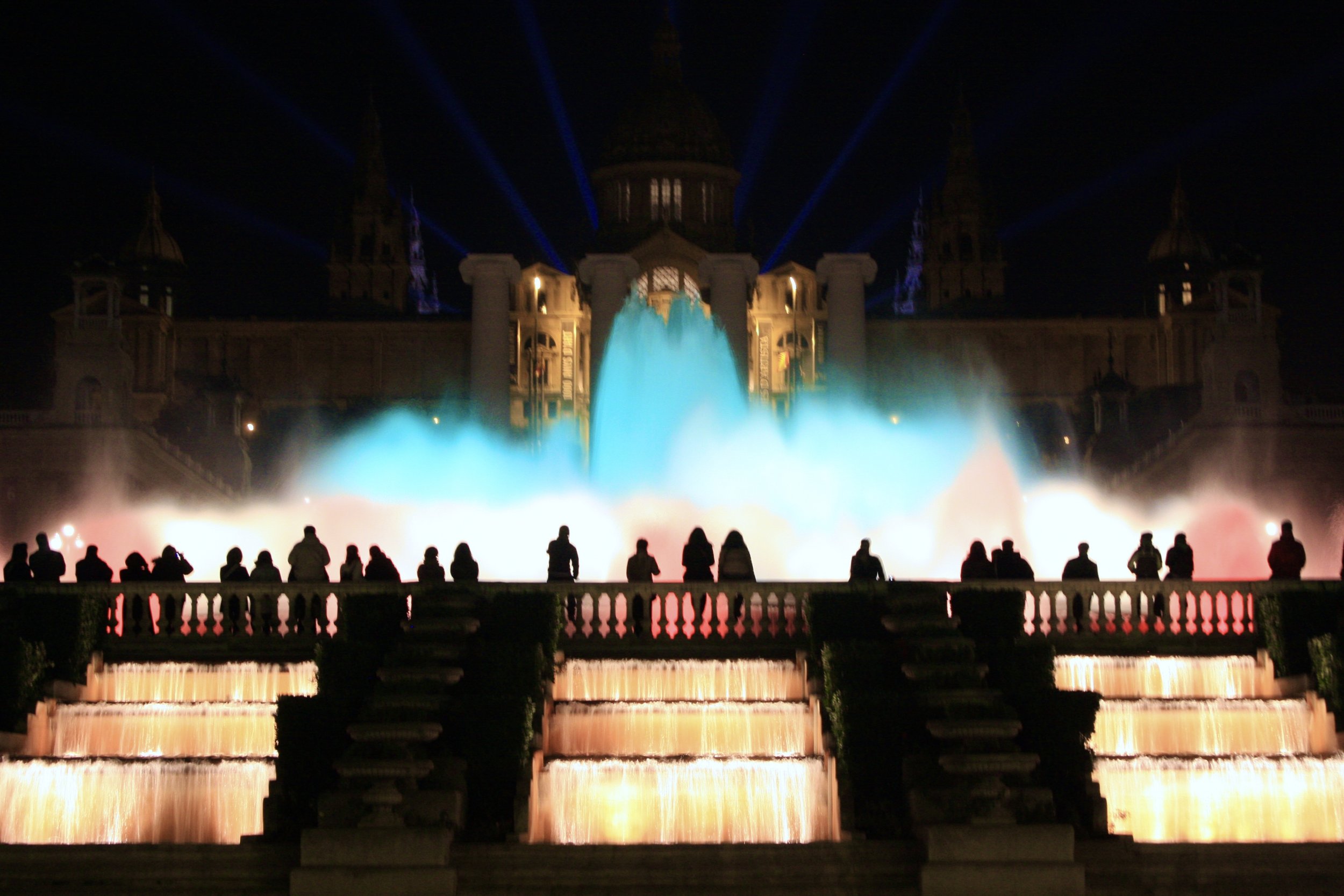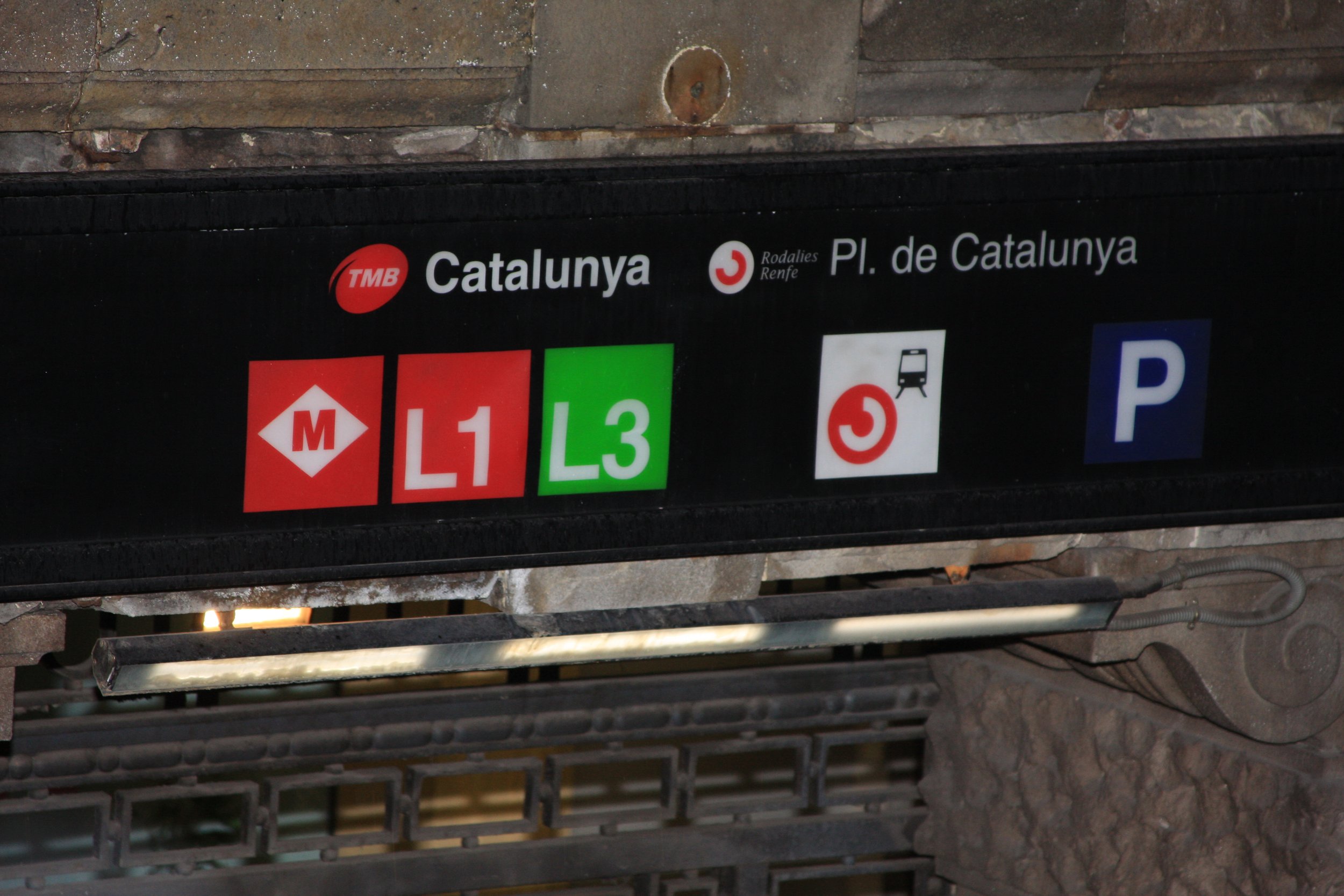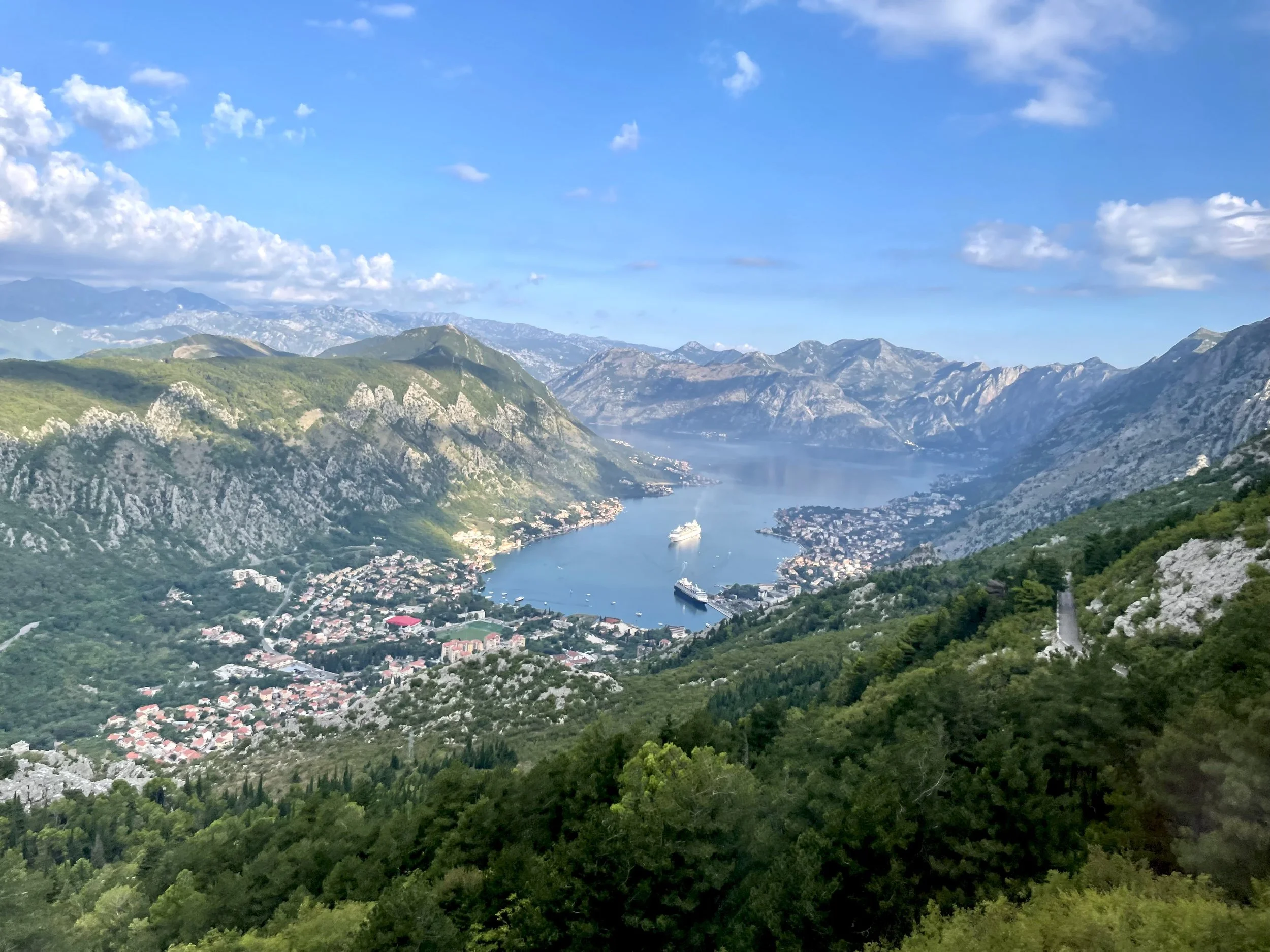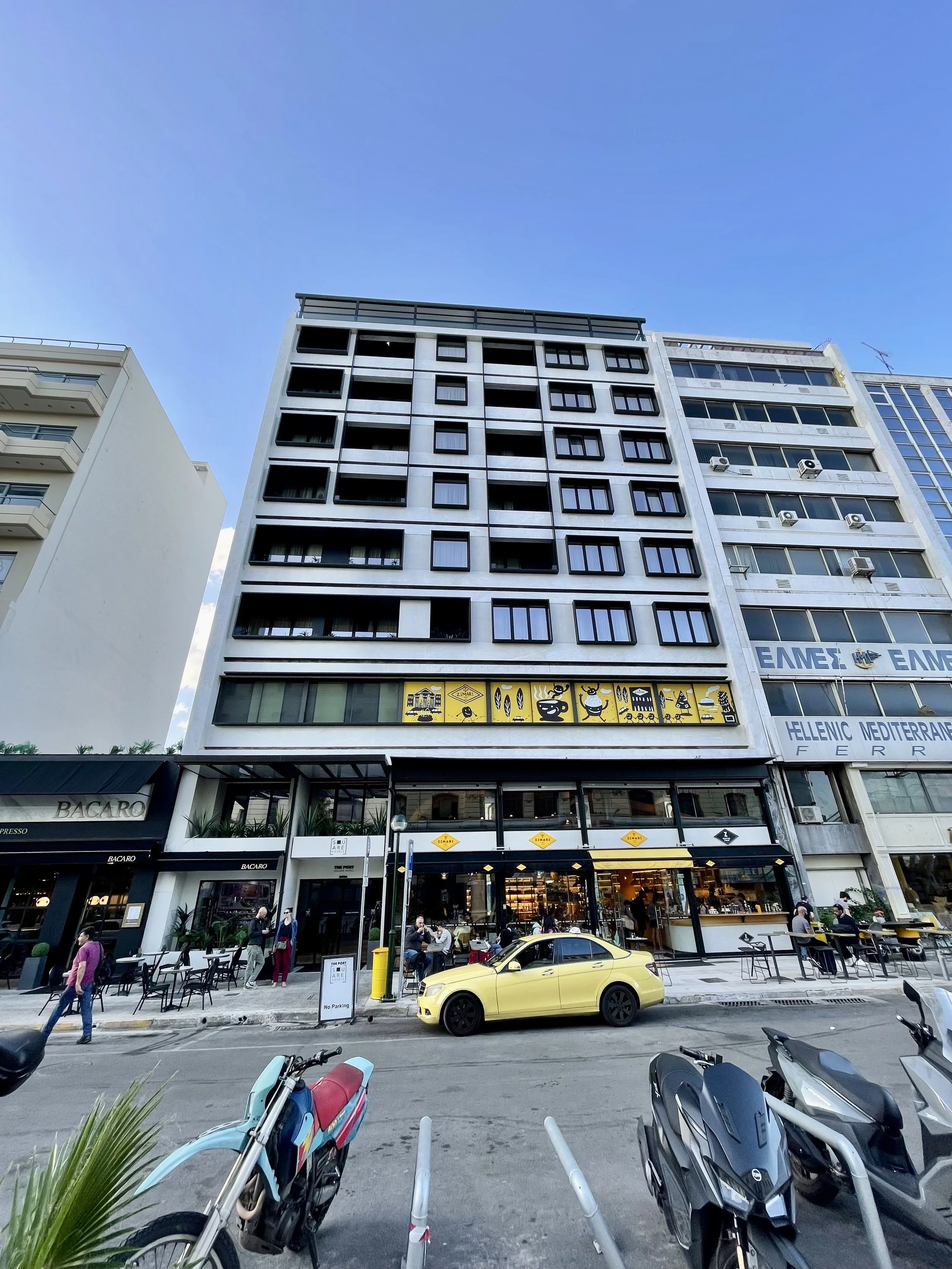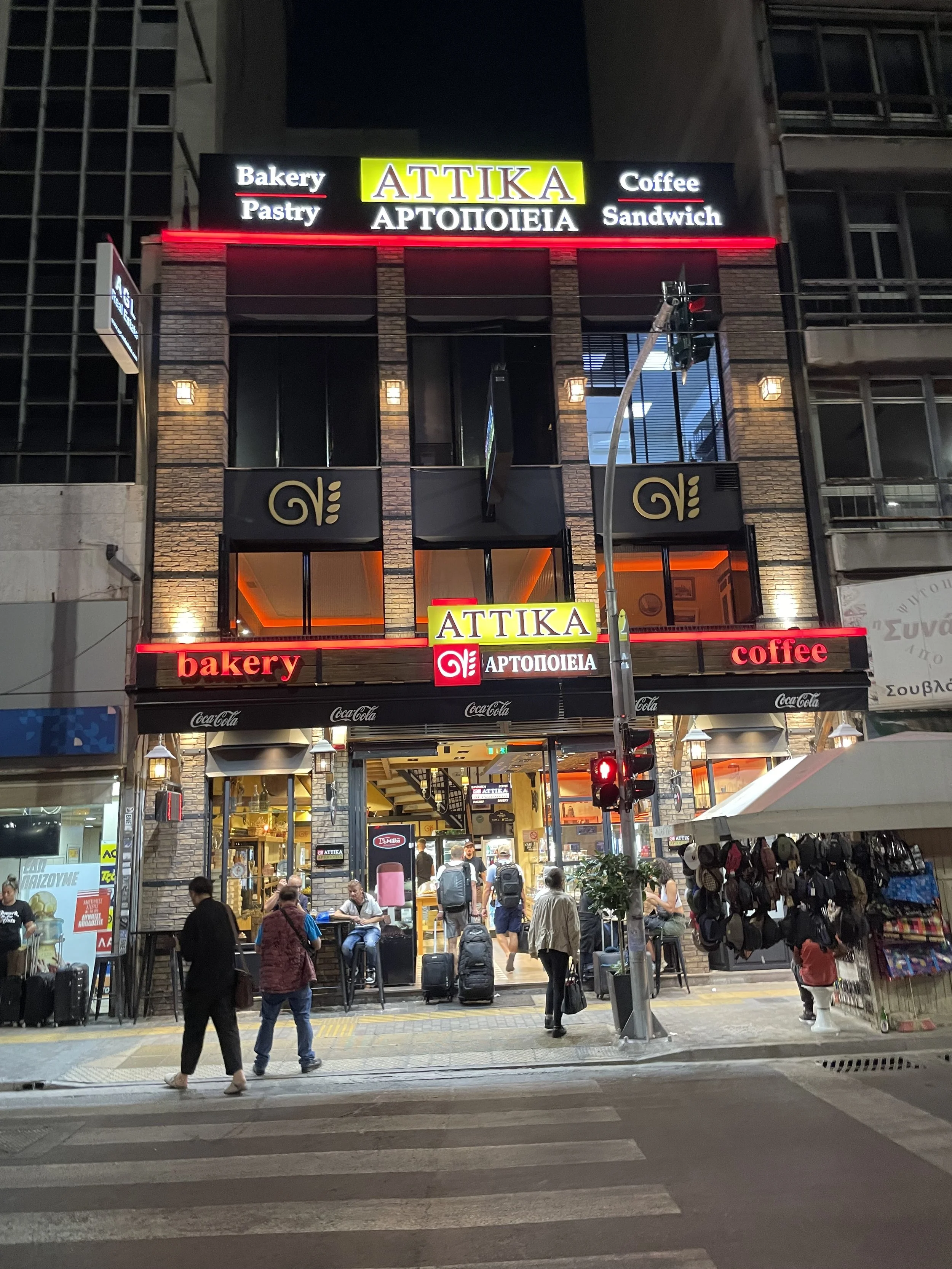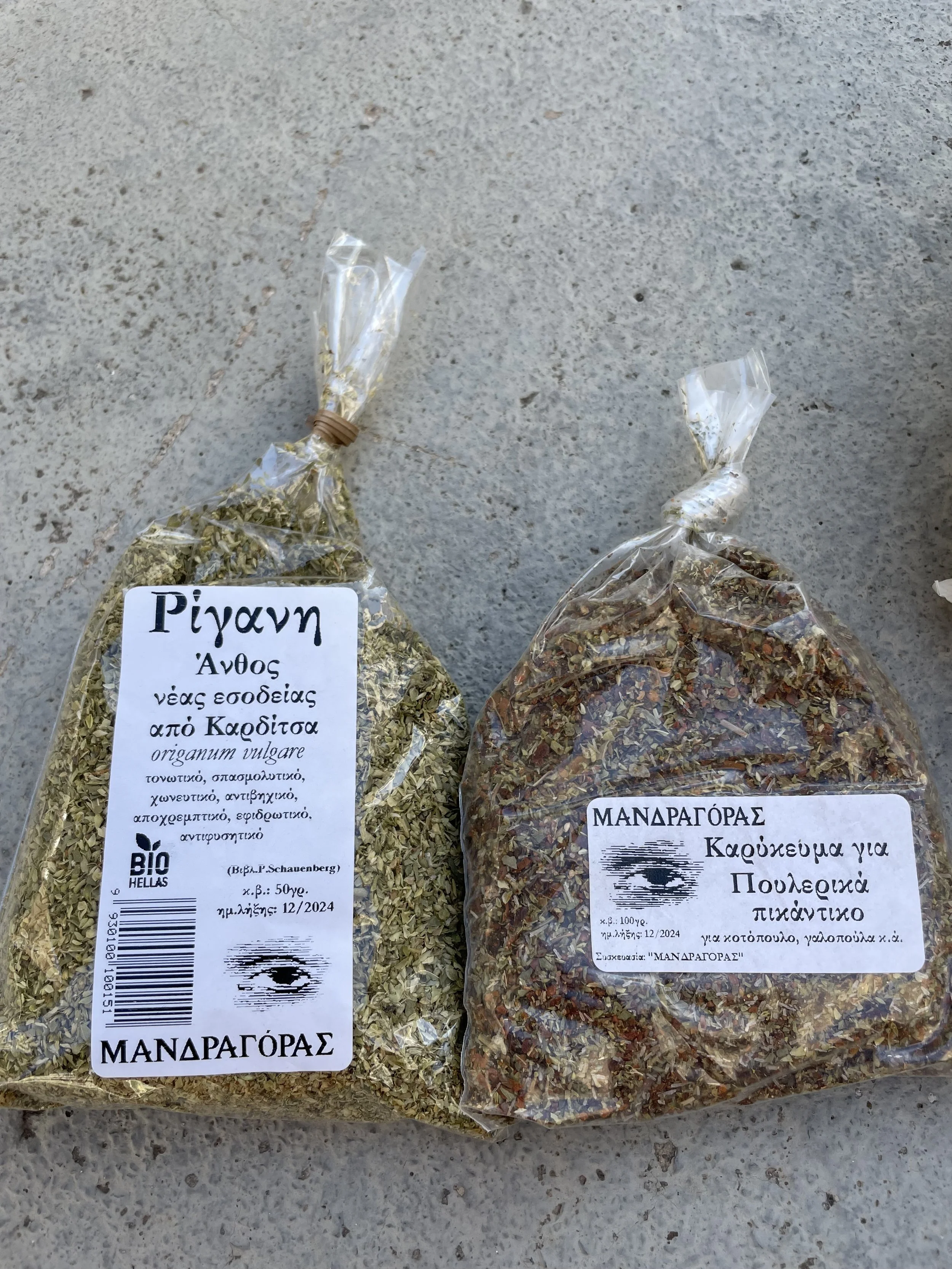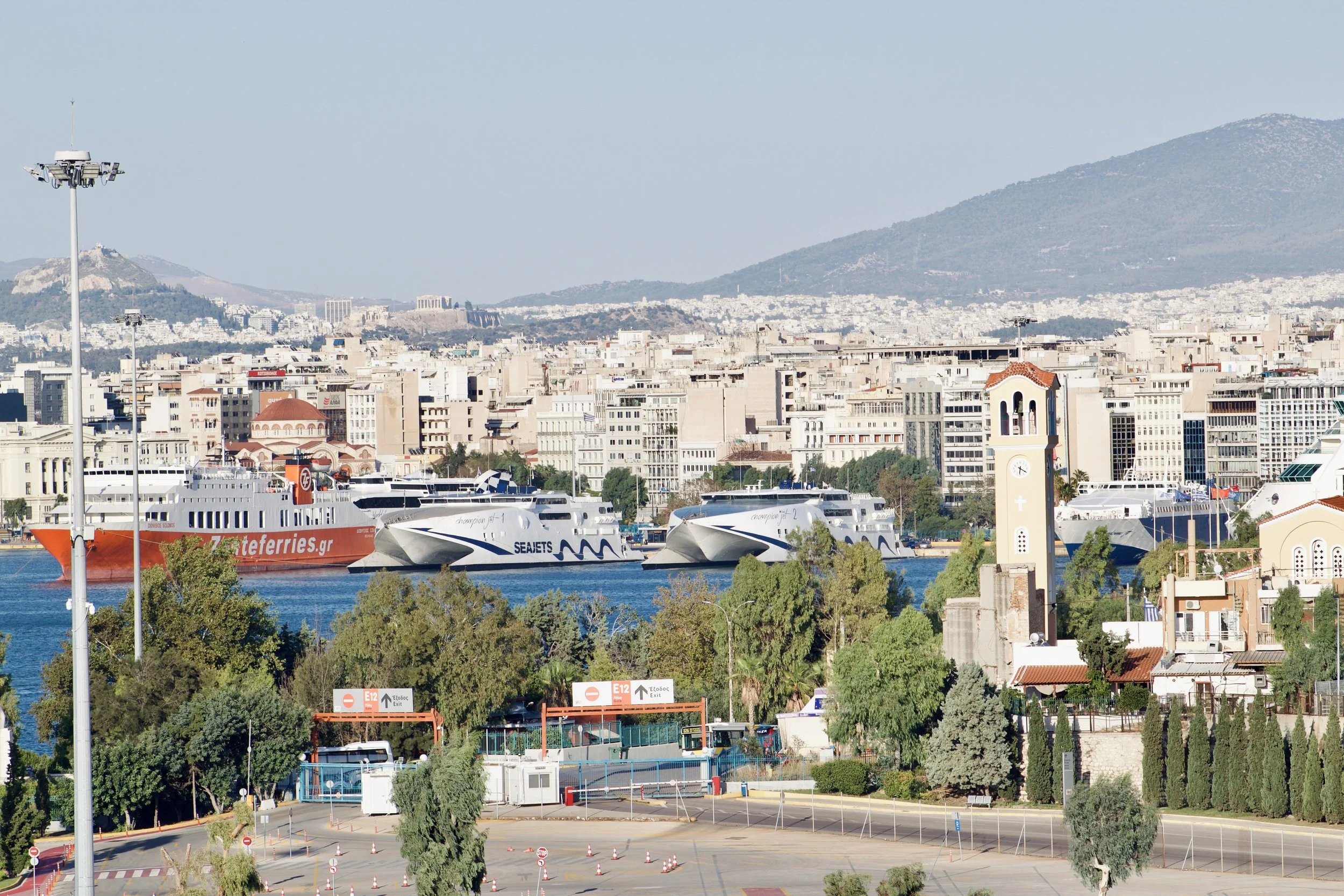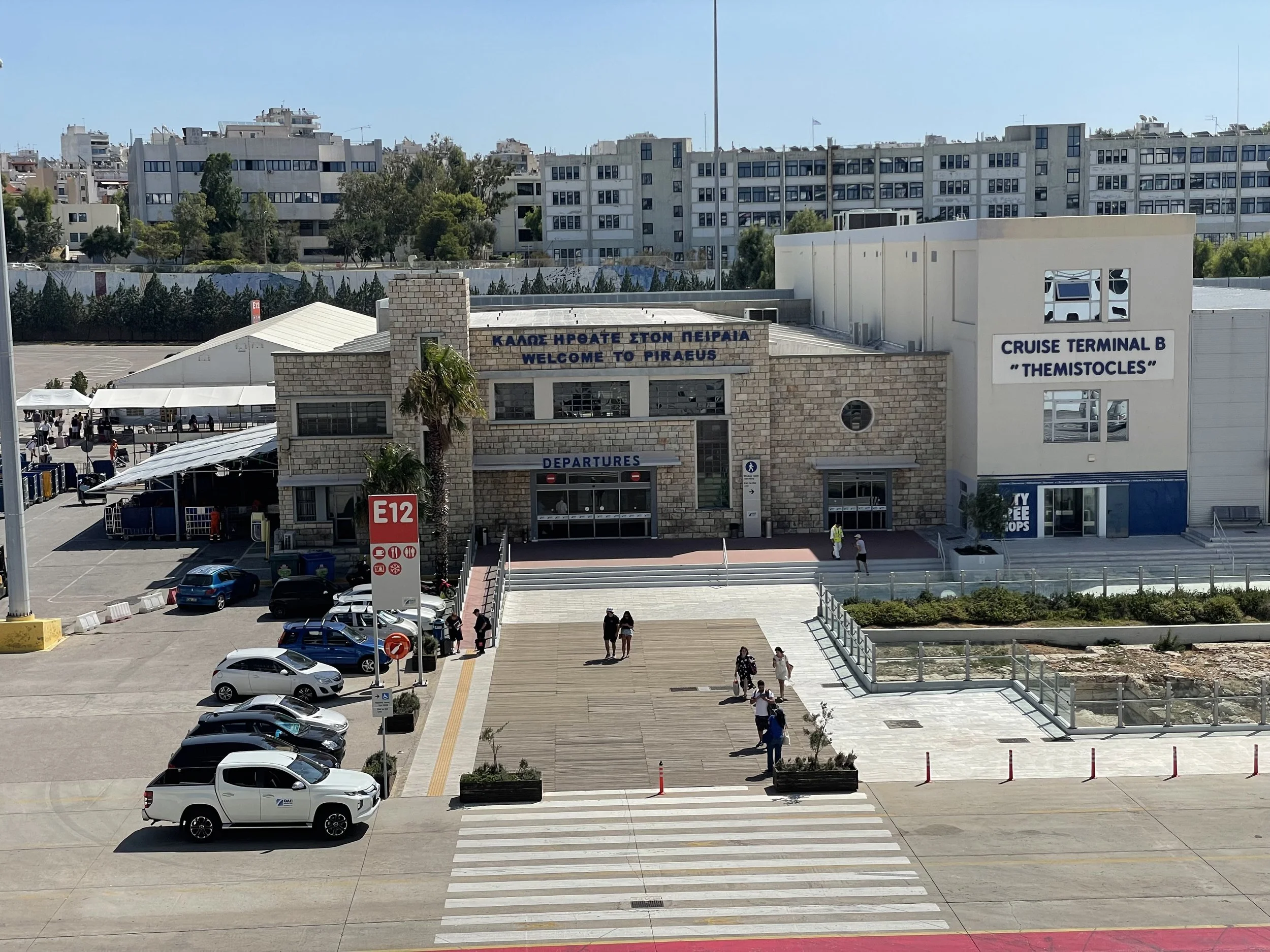Zakynthos Greece
Bochali Hill
Zakynthos was one of those places I had not heard much about before this trip, but I was glad I ended up there. It is smaller and less talked about than some of the other Greek Islands, yet it has its own charm. Because the harbor is shallow we had to tender in. The port felt like the kind of small town you see in movies. Sailboats were anchored at the docks and the concrete pier led straight toward the shore where a row of shops and homes sat along the main road. It was simple and pleasant from the moment we arrived.
About Zakynthos
Zakynthos is part of the Ionian Islands and sits west of mainland Greece. The island is known for its clear blue water, limestone cliffs, inland villages, and a coastline that shifts from long sandy beaches in the south to steep cliffs in the northwest. It is also home to a protected marine park where loggerhead sea turtles nest.
One of the most famous places on the island is Shipwreck Cove, also known as Navagio Beach. The ship was a smuggling vessel that washed onto the sand in the early 1980s after running into bad weather. The beach is only accessible by boat which is why it often shows up in photos of the island.
Church of Saints Timotheos and Mavra
Zakynthos was one of those stops where you get a mix of inland villages, quiet viewpoints, and places you probably would not find on your own. Once we left the port, the road climbed into the hills toward the middle of the island. The first stop was the Church of Saints Timotheos and Mavra in the village of Maries. It sits in a small courtyard with a tall stone bell tower beside it. People stepped inside to look around but the setting stood out more than anything else. A small village. A simple church. A quick look at what life is like away from the coast.
Taverna Michalis
The drive continued through farmland and clusters of homes as we moved deeper inland. We stopped at Taverna Michalis which is an outdoor restaurant under tall pine trees. You can hear the breeze move through the branches and the sound carries across the tables. They brought out a small sample plate with tomato, cucumber, tzatziki, bread, a cheese pie, a stuffed grape leaf, and a couple of pieces of meat. Nothing heavy. Just a quick taste of local food before heading back to the bus. A couple of local Greek dancers performed for the group and invited everyone to join in. Before long you had people who had never met dancing in a circle and laughing while they tried to match the steps.
Northwest cliffs
From the restaurant we had a view of the northwest cliffs and the water below. This area has a few lookouts and the one we visited sat high above the sea. The coastline drops straight down and the water shifts from pale blue near the rocks to darker shades farther out. This was not the main Shipwreck Cove viewing platform but it still showed how rugged this side of the island is.
Ancient Olive Tree of Exo Chora
The tour also stopped at the Ancient Olive Tree of Exo Chora. It sits in a courtyard framed by stone buildings and small shops. The trunk is wide and twisted with deep grooves. You can walk right up to it and take a closer look. It is a quick but interesting stop.
Church of Panagia Zoodochos Pigi
Closer to the end of the day the bus circled back toward Zakynthos Town and stopped at Bochali Hill. This overlook gives you a clear view of the harbor and the town below. It is an easy place for photos because everything is right in front of you. A short walk from the viewpoint is the Church of Panagia Zoodochos Pigi. It has a pale yellow exterior and a bell tower beside it. It fits the hillside setting well and is worth a quick look since it is close by.
Getting Around
Zakynthos is small enough that most visitors use guided tours, rental cars, or local buses to move between villages and viewpoints. The port area is walkable. If you want to see places like the Blue Caves, Shipwreck Cove, or Marathonisi you will need a boat tour since those areas are not accessible by road.
Currency
Greece uses the Euro. Most places on Zakynthos accept cards but small villages, roadside stands, and family owned restaurants may prefer cash. ATMs are available in Zakynthos Town and in the larger beach areas.
Things to Know
The tender process can take time on busy cruise days so it helps to go early. The main Shipwreck Cove viewpoint is separate from the beach and can get crowded. Some areas of the coastline have steep drops so watch your footing when taking photos. Many boat tours are weather dependent and can be cancelled if the water is rough.
If You Have More Time
Zakynthos has a few well known spots that people visit if they have a full day or want to explore beyond the cruise excursions.
Shipwreck Cove is the cove you see in almost every photo of the island. There is a cliff viewpoint above it and most boat tours visit the beach itself when the water is calm.
The Blue Caves on the northern end of the island are another major stop. Many tours combine the caves with small swimming areas along the coastline.
Marathonisi is a small island inside the protected marine park. Visitors go there by small boat to look for turtles or spend time on the beach. Cameo Island is another spot where people stop for photos and a walk across the wooden bridge.
Keri Caves sit on the southwest side of the island and are known for deep blue water and boat tours that take you close to the rock formations. If you prefer inland views, places like Bochali Hill give you an easy way to see the harbor and the town from above.
For a quieter stop, places like Xigia Beach, Porto Limnionas, and Porto Roxa are rocky coves where people swim, lay out in the sun, or have lunch near the water.
Crete Greece
First off I will say that Crete is beautiful. However it will forever be remembered as the place where I had to hold going to the bathroom for hours because I could not find a public toilet. But before I get into that part, let me explain how I ended up here.
Crete was supposed to be the second island on my Mediterranean cruise, but it became the first after we could not stop in Mykonos due to high winds. We docked in Souda early in the morning. Souda is a working port, so the area looks industrial with ships, cranes, and a long concrete pier surrounded by the mountains. It is not a walk off and wander port. Most people either book a tour or take a bus or taxi straight into Chania. I booked a bus tour that would take me around a few highlights and then end in Chania.
A Bit About Crete
Crete is the largest Greek island and is known for small towns, historic sites, and long stretches of countryside. Olive trees grow almost everywhere, and thyme covers the hillsides, which is why the island produces so much olive oil and honey. These products are part of daily life here. The island is also shaped by layers of history including Minoan, Venetian, and Ottoman periods which is why you see a mix of forts, monasteries, and narrow streets depending on where you go.
Souda
Once the bus pulled out of the port, the scenery changes fast. The cranes and ships disappeared behind us and the road opened into rolling hills, olive groves, and clusters of white homes. The island feels wide and calm once you leave the waterfront. As the drive continued you pass farmland, open valleys, and stretches of coastline where the water sits far below the road. In some spots you can see the bay, the towns along the shore, and the mountains behind them at the same time. It is the kind of route where you end up looking out the window the entire time. These tours usually follow a simple route which includes one historic stop, a small village, and time in Chania at the end.
Fortress of Aptera
Aptera Fortress
Our first stop was the Venetian fortress of Aptera. It sits above Souda Bay which gives you a clear view of the water and the countryside below. The stone walls, arches, and old cisterns are still standing. It is an open and quiet place where you can walk freely and take in the landscape from above. There are no crowds and no tight walkways, just space and a wide view that goes on for a long time.
Small Village Stops
After the fortress the bus continued into the hills and stopped in a village. These towns are small with white buildings, narrow roads, and a couple of shops run by local families. You start to see why olive oil and honey are such a big part of Crete. The island is covered in olive trees and many families make their own oil. Thyme grows naturally across the hills which gives the honey here its sharp floral taste. I tried both during the stop and the honey especially stood out. It was a simple visit but a good look at daily life on the island.
You will also see items like raki which is a local spirit, herbs, and handmade soaps in these shops. They are not tourist traps. Most are family run and the products come from their own farms or neighbors.
Chania Old Town
Chania was the final stop of the day and the busiest. This is also where my bathroom problem reached its peak. The earlier stops had no public restrooms which was expected. I assumed Chania would have more options, which they did however they were not accessible. Most businesses only let customers use their bathrooms and with limited time in the city I could not sit down for a full meal. After several attempts I gave up and just dealt with it. Wandering with a full bladder was not the most comfortable way to explore, but I still managed to see a few things.
The old town has a large open square with restaurants, shops, and a church facing the plaza. Once you move past the square the streets become narrow with colorful buildings close together. Bakeries, small stores, and cafes fill the corners. You can move from quiet alleys to busy walkways in seconds. The waterfront is the most recognizable part of Chania. The harbor curves in a wide half circle with restaurants along the water and a lighthouse across the bay. On a clear day the buildings and the water look bright and clean. It is an easy area to walk through or sit by the harbor.
If you wander a bit you will also see the covered market building where vendors sell cheese, herbs, olives, and souvenirs. It is currently undergoing renovation but will reopen as a main market again. Most cruise excursions last four to six hours which means Chania is where you spend the largest portion of your time. It is enough to walk the waterfront, explore a few streets, shop, or sit by the water before heading back to the ship.
How to Get Around
Outside of cruise tours, getting around Crete is straightforward. Buses run between major towns and are inexpensive, though they take longer than driving. Taxis are easy to find in the main cities. Renting a car is common and gives you freedom to explore beaches, mountain villages, and countryside on your own schedule. Roads along the coast are well maintained while rural roads can be narrow and winding. In Chania the streets are very tight which makes parking outside the center and walking in the easiest option.
Currency
Greece uses the euro. Credit and debit cards are widely accepted in larger towns and tourist areas, especially Visa and Mastercard. You will want some cash for small purchases in villages or market stalls. ATMs are available in cities and at the airports.
Food to Try
A few local foods to look out for include
• Cretan honey which is usually thyme based
• Olive oil which is often available at tastings in villages
• Dakos which is a salad on barley rusks with tomato, cheese, and olive oil
• Sfakian pie which is a thin cheese pie drizzled with honey
• Local cheeses such as mizithra and graviera
• Bougatsa which is warm filo pastry filled with cheese or custard depending on the shop
Quick Tips
• Keep coins for small purchases in villages
• Expect narrow streets in old towns like Chania
• If you need a restroom, buy a small snack or drink and use the cafe facilities
• Sun protection is essential because there is little shade on the drives
• Crete has a slower pace once you leave the cities
If You Have More Time
Crete has plenty to offer. A few popular options include
• Balos Lagoon with turquoise water and a shallow sandbar
• Elafonissi Beach with pink sand on the southwestern coast
• Seitan Limania which is a narrow cove with bright blue water
• Knossos Palace which is an ancient Minoan site tied to the Minotaur legend
• Heraklion Archaeological Museum which has artifacts connected to Knossos
• Rethymno Old Town with Venetian style streets and a waterfront
• Samaria Gorge which is a full day hike through a deep mountain gorge
• Lake Kournas which is Crete’s only freshwater lake
• Arkadi Monastery which is a historic monastery with quiet grounds
• Loutro which is a small seaside village reachable only by boat or foot
• Matala Beach which has cliffside caves and a relaxed beach town
• Vai Palm Forest Beach which has a natural palm forest and clean shoreline
• Agios Nikolaos which is a lakeside town with cafes and views
• Spinalonga Island which has a Venetian fortress and was a former leper colony
Stockholm Sweden
We arrived in Stockholm early in the morning, and you get a long beautiful look at the area before you even dock. The ship moves through a stretch of narrow waterways where small islands appear one after another. Some have clusters of red or mustard colored houses right along the shoreline. Others are mostly trees, rock, and the occasional dock or cottage. Stockholm is not one solid block of land. It is a collection of islands connected by bridges and ferries, and the water shows up in almost every direction.
Gamla Stan
Our tour started in Gamla Stan, the Old Town. This part of the city feels older as soon as you step into it. The streets are narrow, the stones are worn smooth, and the buildings are close together. Most are painted in warm colors like deep red, orange, mustard, or soft yellow, and even though the architecture is simple, the age of everything gives the area a steady charm.
Stortorget, the main square, is right in the center. The buildings around it have steep roofs and tall façades, each painted a different shade. The Nobel Prize Museum sits along one side in a building that blends in more than you’d expect. The streets that lead away from the square curve outward into tight little lanes where you find cafés, shops, and small courtyards tucked between the older buildings. On a warm summer day these streets can feel very tight once the crowds start moving through, but that is also part of what makes the area feel so lived in.
Kanelbullar
We stopped at a bakery nearby and tried kanelbullar, the Swedish version of cinnamon rolls. They’re smaller than American ones and not covered in icing. The flavor leans on cinnamon and cardamom, and the dough has a warm sweetness that comes through without being heavy. I liked them so much that when I got home, I learned how to make them myself.
Leaving the Old Town, the bus crossed one of the many bridges that tie the city together. The streets opened up, the architecture shifted, and you could see the more modern side of Stockholm. From there we headed to Djurgården, an island known for its museums, parks, and easy waterfront walking paths. It feels calmer as soon as you arrive, with trees and water appearing in almost every direction.
The Vasa
The Vasa Museum was one of our main stops. The museum exists because of one ship — the Vasa — a seventeenth century warship that sank on its very first voyage and stayed underwater for more than three hundred years before being raised in the 1960s. Today the building is designed around it. When you walk inside, the ship fills the entire hall. You can move around it on multiple levels, and the carvings are detailed enough that you can pick out faces, animals, and patterns along the sides. The exhibits explain how the ship was built, why it sank, and how it was eventually preserved.
Nordic Museum
Right next door is the Nordic Museum. From the outside it looks like a massive stone palace with a tall central tower and long wings on either side. The walkway leading up to it is lined with trees. Inside, the lobby opens into a bright central hall with a high ceiling and tall columns. The galleries off to the sides focus on Swedish life, including clothing, design, household objects, and folk traditions. Upper walkways overlook the hall, so you can see how the building is arranged as you explore.
Gröna Lund from the water
A short walk along the waterfront brought us to Gröna Lund, the amusement park. The roller coasters rise above the shoreline, and the bright colors stand out against the more muted tones of the nearby buildings. Cirkus Arena is close by too, a round performance venue used for concerts and shows. This part of Djurgården blends museums, entertainment, and quiet green space in a way that makes the island feel like its own little district.
Back on the mainland, we passed the Royal Dramatic Theatre. The building is light in color with gold detailing that stands out even under a cloudy sky. The front steps give you a clean view of the façade as you walk by.
Stockholm City Hall
Then we headed to Stockholm City Hall, which sits right along the water. It is a deep red brick building with a tall tower you can spot from across the city. The courtyard behind it opens onto a long walkway facing the water, and from there you get a clear look at the opposite shoreline, lined with a mix of older buildings and newer ones.
Inside is where the building becomes more interesting. This is where the Nobel Prize banquet is held every year. There is a wide staircase leading down into the main hall, and it was designed so that women wearing long gowns could walk down without worrying about tripping. Once you look at the shape of the steps, you can see how intentionally it was built.
Inside the Golden Hall
Farther inside is the Golden Hall, covered from floor to ceiling in gold mosaics — more than a million tiles total. One of the main mosaics shows a seated woman holding a model of Stockholm, surrounded by scenes of ships, people, and symbols from Swedish history. The gold tiles reflect light as you walk, giving the room a steady warm glow.
After the tour we returned to Gamla Stan to shop and walk. The streets make more sense the longer you stay. Some slope toward the water, others twist into little open spaces, and most of them have a café or a store tucked somewhere along the block. The older buildings give the neighborhood a consistent look, and you can wander through several streets without breaking the feel of it.
Throughout the day it became clear how connected Stockholm is. The water shows up in nearly every direction. Bridges link the islands, ferries run constantly, and the neighborhoods shift slowly as you walk. Even with limited time, the city makes sense quickly. It ended up being my favorite stop of the trip because everything moved at a comfortable pace and the city itself was relaxing to explore.
Stockholm from the water
How to Get Around
Stockholm is very easy to navigate.
Transit
Stockholm is easy to get around without a car. The city uses a mix of buses, trams, the Tunnelbana (their metro), and ferries. All of them are part of the same public transit system. You can tap a card or buy a short-term pass, and the routes run on regular schedules that are easy to follow.
Ferries
The ferries are not tourist boats. They work just like buses, but on the water, and they move between several of the main islands. Taking one gives you a clear view of how the city is spread out, and it’s one of the easiest ways to understand the layout without doing anything extra.
Currency
Sweden uses the Swedish krona (SEK).
You can pay with card everywhere — even small bakeries and market stalls.
Cash isn’t needed, and some places won’t accept it at all.
Food to Try
Kanelbullar
Cinnamon-cardamom rolls that are smaller, less sweet, and a lot more flavorful than American rolls.
Fika
Not a food, but a tradition — a pause for coffee or tea and something sweet.
Even if you don’t drink coffee, fika cafés are everywhere and easy to enjoy.
Seafood
The city is surrounded by water, so fish dishes are common.
You’ll find salmon, shrimp, and open-faced sandwiches in many cafés.
Quick Tips
• Djurgården can be reached by ferry, tram, or bus — all simple.
• City Hall interior tours are scheduled, so check the timing in advance.
• Gamla Stan is best earlier in the morning before crowds take over.
• The metro has art installations in many stations worth peeking at.
• Most museums on Djurgården are close enough to walk between.
If You Have More Time
Södermalm
A relaxed neighborhood with cafés, scenic viewpoints, and quieter streets.
Östermalm
More polished and residential, with upscale shops and calmer corners.
Ferry rides
A great way to understand the layout of the city’s islands.
Skansen
An open-air museum and zoo with traditional Swedish buildings and demonstrations.
Helsinki Finland
We arrived in Helsinki on a gray and wet morning. The port itself is nothing exciting to look at, though you can see a ferris wheel right on the waterfront as the ship pulls in. We got off the boat and boarded a tour bus, and our guide immediately started sharing details about Finland and Helsinki as we made our way through the city.
Even before we reached our first official stop, there was plenty to notice. Helsinki feels small and intimate, with wide streets and a calm pace. We passed several islands as we drove, including one with a white house and a bright red roof sitting by itself near the shore. The guide pointed it out and mentioned how common it is for Finns to have cottages or saunas near the water.
A little farther along, we passed Löyly, one of Helsinki’s popular public saunas. It sits right on the shoreline and is built almost entirely out of stacked wooden slats, which gives it a stepped, modern look even from the road.
We also drove past long stretches of trees. Finland is heavily forested, and even inside the capital you see tall pines and birches lining the roads. The guide talked about how more than seventy percent of the country is covered in forest, and looking out the bus window, it felt true.
About Helsinki
Helsinki is one of the newer capitals in Europe. It was founded in the fifteen hundreds and later redesigned after a major fire in the eighteen hundreds. Much of the city’s clean, symmetrical look comes from the period when Finland was under Russian rule. Senate Square and the government district are the best examples of that neoclassical layout.
Finland is known for its strong education system, its deep connection to nature, and a cultural preference for quiet and personal space. More than seventy percent of the country is covered in forest, and Finland has close to two hundred thousand lakes. As we drove out toward Fazer, the steady stretches of pines and birches made that number easy to believe.
Saunas are also a major part of Finnish life. The guide mentioned there are over three million of them in a country of five and a half million people. They appear in homes, apartments, offices, and even some public buildings.
Helsinki’s design reputation shows up in small ways. Tram stops, squares, and simple buildings are laid out intentionally. The city’s shoreline setting keeps water views close by, giving many neighborhoods a calm, open feel even on foggy mornings.
Helsinki Cathedral (Helsingin tuomiokirkko)
Our first official stop was Helsinki Cathedral. This bright white landmark stands at the top of Senate Square and is one of the city’s most recognizable buildings. The tall green dome and wide staircase make it easy to find from almost any angle.
Inside, the cathedral stays simple. Light walls, open space, and tall windows make the interior feel bright and uncluttered. It matches the straightforward style of Finnish Lutheran churches, and even a short visit gives you a clear sense of the building’s personality.
After our stop here, we headed out of the city and toward our sweet destination of the day.
Fazer Experience Visitor Centre
Fazer Experience Visitor Centre
Our next main stop was outside the city at the Fazer Experience Visitor Centre. We passed thick forest on the drive, and the guide talked about how normal it is for Finns to live close to nature even near the capital.
The Fazer Experience is part museum, part tasting center, part café, and part behind the scenes look at Finland’s most famous chocolate and candy brand. The café sits near the entrance and sells pastries, chocolates, and drinks, so many people stop there before or after the tour.
One of the first displays is a detailed chocolate village encased in a clear dome. The houses, trees, and small figures are all made of chocolate, and it looks like a miniature town frozen in place. When you walk in, you also see a huge sculpture of a rabbit made entirely out of Mignon eggs. It stands on its own platform and is covered from head to tail in smooth white shells. These were the features they had during my visit, though Fazer rotates its exhibits every so often.
Fazer is especially known for their chocolate filled Mignon eggs. The guide explained that they remove the top of a real eggshell so it can be emptied without cracking, then fill it with almond hazelnut nougat chocolate.
Fazer tasting area
The tasting area is where most people linger. Stations are stocked with chocolates and candies you can sample freely. The shop at the end is tidy, with boxed chocolates and limited edition items. One of the best parts was the gift bag they handed out at the end, filled with different Fazer treats.
Paavo Nurmi Statue
Driving Back Toward the City
After leaving Fazer, we drove back toward central Helsinki. The road cut through more tall pines and birches before the city reappeared around us.
One of the first major landmarks we passed was Parliament House, a massive stone building lined with tall columns and a wide staircase across the front. It looks more like a classical monument than a modern government office.
Not long after that we passed Helsinki Central Station, known for its green copper roof, tall clock tower, and blend of classic and Art Nouveau design.
As we continued toward the water, the guide pointed out a few older buildings with ornate facades. They looked different from the clean Scandinavian style that Helsinki is usually known for but gave the center a lot of character.
Somewhere on the drive we passed a statue of Paavo Nurmi, Finland’s legendary long-distance runner. He is one of the country’s most celebrated athletes, known for winning nine Olympic gold medals. The statue has been moved a few times over the years, but it still appears along several routes through the city.
Sibelius Monument
Sibelius Monument (Sibelius-monumentti)
Our final stop was the Sibelius Monument. It sits in a quiet park and was built to honor Jean Sibelius, the composer whose work became tied to Finland’s national identity.
The monument is made from more than six hundred metal pipes welded together in a wave like formation. Up close you can see the textures and the way the openings frame the sky. Walking around it changes the shape completely — one side feels dense and solid, while the other opens up with light shining through the tubes.
Next to it is a traditional bronze portrait of Sibelius’ face resting on a stone. The contrast between the modern metal pipes and the classical portrait feels intentional.
From there, we made our way back toward the port where we were greeted with the afternoon ferries and locals moving about their day.
Other Things to See
If you have more time in Helsinki, here are a few popular and easy to reach spots:
• Market Square — waterfront food stalls and ferries to nearby islands
• Temppeliaukio Rock Church — a church carved directly into solid rock
• Esplanade Park — a long green strip lined with cafés and shops
• Senate Square — the heart of the neoclassical district and home to Helsinki Cathedral
• Löyly Sauna — a modern wooden sauna complex on the shoreline, open for public sessions
• Suomenlinna Sea Fortress — a UNESCO-listed island reached by ferry; plan about three hours
• Seurasaari Open-Air Museum — historic wooden buildings in a natural park setting
• Korkeasaari Zoo — set on an island, usually a half-day visit with transit
• Design Museum (and nearby galleries) — possible to sample quickly, but worth more time if design interests you
If You Go on Your Own
Helsinki is simple to navigate. Trams cover most of the central area, while buses and the metro reach farther neighborhoods. Ferries connect the city to nearby islands and other Baltic ports like Tallinn and Stockholm.
The city center is very walkable. Senate Square, the waterfront, and the shopping streets sit close together, and English appears often enough on signs that visitors do not struggle.
If you want to explore farther, Suomenlinna is one of the easiest and most popular half day trips.
Getting Around
• Trams cover most of central Helsinki
• Buses and the metro reach outer districts
• Ferries connect islands and neighboring countries
• Walking is easy thanks to wide sidewalks and a clean layout
Tickets can be purchased through the HSL app or at kiosks.
St. Petersburg Russia
Let me start by saying I never thought I would visit Russia. When I saw it listed on the cruise itinerary, I was honestly excited. Arriving in port here was nothing like arriving anywhere else on the trip. Every passenger had to clear customs one by one before stepping outside. It was a long, slow line, and the officers were thorough. They checked passports, visas, entry cards, and asked questions. No one smiled, and no one rushed. It set the tone right away that this was not going to be like the other ports where you just walk off the ship and start exploring.
We were traveling on the ship visa, which only covered guided visits within St. Petersburg. Russia’s visa rules are strict, and anyone who wanted to take a train to other cities needed their own separate visa. Once everyone made it through customs, we headed straight to our bus.
St. Petersburg was one of the major stops on my Baltic Sea cruise, and we spent two full days here. Unfortunately, because of current politics, most cruise lines have removed Russia from their itineraries, so this stop no longer exists. During my trip, it was still a standard part of the route.
Peterhof Palace and Gardens
Day One
We spent the first day outside the city center at Peterhof Palace and Gardens. The drive took us through the edges of St. Petersburg before opening out to the countryside. When you arrive at Peterhof, the scale of the estate stands out right away. The palace sits high above the grounds with long terraces that look out over the gardens and toward the sea. The main facade is painted a deep yellow with white trim and lined with gold accents. The wings stretch across the upper level of the grounds in a way that makes the entire structure feel built to show its opulence from a distance. You can tour the interior of the main palace, but I did not take that tour. It is a timed entry experience with set routes through the rooms, and the cost is separate from the garden ticket.
The Grand Cascade flows straight down from the palace toward the lower park. Gold statues line the fountains, and there are dozens of water features on each side. The gardens themselves are vast. Long straight paths cut through the grounds, and smaller walkways branch off toward side fountains, small ponds, and clusters of trees. Some areas have trimmed hedges and formal flower beds, while others open into shaded sections with benches and quiet spots to rest. You pass smaller pavilions scattered around the grounds, each one sitting near its own fountain or overlook. There are more fountains throughout the gardens than you expect, each with a different design or statue, so even simple walks turn into a series of small stops.
You can wander through the gardens for hours without repeating the same area. Even with crowds it never feels cramped. The space remains due to the wide lawns and extended views.
One thing that surprised me was learning how all of this water moves. The whole system is powered by gravity. The water come from natural sources behind the palace at a higher elevation, and it flowed through underground channels to feed the fountains. No pumps!
The fountain turning on
Most people try to time their visit so they can see the fountains turn on for the day — usually around 11 a.m. during the summer season. When the water starts, the whole place shifts. The statues shine a little brighter, the fountains get louder, and the crowds lean in to watch the entire water system come to life. I would be remiss if I did not tell you the crowd can be a bit aggressive when vying for space on the bridge to see. I was pushed and shoved out of position more than once. Luckily I had a pole extender for my camera so I aimed it over the crowd.
Tickets for the Palace and Gardens
Before visiting, know that the gardens (Lower Park) and the main palace are ticketed separately. The entrance to the lower park, which covers the gardens and fountains, is around ₽ 1,000 for general admission. The ticket to enter the Grand Palace itself is higher, approximately ₽ 1,200–2,000 depending on season and nationality. The garden ticket gives you access to the grounds, fountains, terraces, and gardens. The palace ticket covers a guided route through several of the interior rooms. If you want to do both, plan and budget for two separate lineups and two separate entry fees.
St. Isaac’s Cathedral
Day Two
We started the day in St. Isaac’s Square where we stopped to see St. Isaac’s Cathedral. We didn’t go inside, but you don’t have to step in to understand how big it is. The dome stands over the square, and the heavy stone columns make the whole building feel solid and imposing.
Right across the square is Mariinsky Palace, which we passed as we continued our walk. It is not a place most tourists go inside, but you cannot miss it. The long gray façade and the Russian flags on top make it look more like an administrative building than a palace. It sits right in the middle of the square, so you can’t help but walk by it.
Winter Palace/Hermitage Museum
We then moved on to the Winter Palace, which was originally the official residence of the Russian emperors. It was built in the mid-1700s to display the power and wealth of the monarchy and remained the residence of the Romanov family until 1917. After the revolution, the palace was taken over by the new government, and the rooms that once held royal ceremonies and private apartments were eventually opened to the public as part of the State Hermitage Museum. Walking through it today, you can still see signs of both lives layered on top of each other.
The palace sits on Palace Square, with the Alexander Column in the center. The building covers one entire side of the square, and as you approach, the green and white exterior becomes more detailed. Carvings, trim, and ornamentation stretch across the façade.
Inside, the first thing you reach is the Jordan Staircase, a white and gold staircase built for royal ceremonies. It is tall, bright, and fully decorated, and it sets the tone for the rest of the building. From there, the rooms spread out in multiple directions. Some are long galleries lined with artwork, while others look more like restored palace rooms with chandeliers, mirrors, wooden floors, and ornate ceilings.
The museum sections shift from one era to another. You might walk through a hall filled with classical paintings and then turn a corner into a room of tapestries or decorative objects. A few rooms still feel like royal reception halls, with high ceilings and gold trim. It is easy to feel like you’re moving through a maze because every doorway seems to lead somewhere new.
One room that stood out to me was a large white and gold hall that looked almost unreal in person. The walls, columns, arches, and doorways were covered in gold detailing, and the ceiling artwork sat directly above it. The polished wood floors had geometric patterns, and the room stayed bright because of how much light reflected off the gold. It was one of the most memorable spaces in the entire palace.
People talk about the art collection, but the building itself is just as interesting. Some halls are huge, others are narrower and more formal, and everywhere you turn there is something to look at. I only saw a portion of it, but the combination of palace architecture and museum galleries makes the Winter Palace one of the strongest highlights in the city. Admission for the main museum complex is about ₽500 if you are not on a tour.
Church of the Savior on Spilled Blood, under renovation
Our next stop was the Church of the Savior on Spilled Blood, another building I went inside. The exterior looks almost like a cluster of colorful towers stacked on top of one another. It stands out immediately because the architecture is different from most of the other churches in St. Petersburg. This one was designed in the older Russian Revival style to look more like the traditional churches you see in Moscow.
The church was built on the exact spot where Tsar Alexander II was assassinated in 1881. A small section of the road where the attack happened was preserved inside the church, and the entire building was constructed as a memorial in his honor. That connection gives the site a different weight compared to the other landmarks in the city.
Inside, almost every inch is covered in mosaics — walls, arches, ceilings, and domes. There are thousands of them, and the detail in each one is incredible. The interior feels darker and more intimate than some of the larger cathedrals because the artwork covers so much of the surface. Even though it was one of the most crowded places we visited, the mosaics make it worth the stop. Entry is generally around ₽350.
St. Catherine Armenian Church
After leaving the Church of the Savior on Spilled Blood, we walked past yet another church: St. Catherine Armenian Church, tucked inside a narrow courtyard just off the street. It is easy to miss if you are not paying attention, but that’s partly what makes it interesting. The building is smaller and more understated than the major cathedrals, and the quiet courtyard around it gives it a calmer feel. I didn’t go inside, but even from the entrance, you can tell it has a different character than the larger, more elaborate churches we had just visited.
Russian Museum
From there we stopped outside the Russian Museum, which focuses on Russian artists and artwork from different eras. I did not go in, but the building is hard to miss. The long yellow façade and the wide courtyard in front make it look more like a palace than a museum. Admission typically runs around ₽500–700, depending on the exhibit.
Peter and Paul Fortress and Cathedral
Our final stop of the day was the Peter and Paul Fortress and Cathedral, where I did go inside. The cathedral is known for its tall, narrow golden spire that you can see from across the river, and it stands out immediately as you approach the island. Inside, the space is lined with tombs of former Russian rulers, including almost every member of the Romanov dynasty. This is also where the remains of the last imperial family were laid to rest — Nicholas II, Alexandra, and their children, including Anastasia. Their burial site sits in a small chapel within the cathedral, and even if you are not deeply familiar with Russian history, it is a striking place to stand because of everything tied to their story.
The fortress grounds sit along the water and offer wide views back toward the city. Walking the pathways around the island gives you a different angle of St. Petersburg — quieter, open, and less crowded than the main streets. It was a calm way to end the day after visiting so many major landmarks. Entry to the cathedral and museum complex is around ₽450, with combined tickets available for about ₽600.
I must say I thoroughly enjoyed my time in St. Petersburg. It was one of those places that brings history to life and reminds you that a country’s politics is often not representative of its people.
Tallinn Estonia
Tallinn, Estonia is one of those places that pleasantly surprise you. We arrived in port early in the morning, and the low clouds that greeted us as we sailed in gave the city an almost fairytale quality. From a distance, the outline of the Old Town rose above the harbor with a cluster of towers, pointed roofs, and church spires. As we moved closer, the fog began to lift and more of the city became visible. We booked a guided bus tour that covered several of the major landmarks around Tallinn. It was a good way to see parts of the city that sit outside the medieval center, especially since many of the historic and cultural sites are spread out.
Tallinn is known for its preserved Old Town and stone walls, but seeing it in person gives a better sense of how the city is arranged. The Old Town sits on and around Toompea Hill, where several of the main churches and government buildings are located. The lower streets spread outward in a mix of narrow lanes, arched doorways, and red rooftops. Even from the bus, the contrast between the older areas and the newer parts of the city was easy to see. Estonia’s history of shifting rule between foreign powers also explains why the architecture ranges from medieval fortifications to Russian style cathedrals, sometimes within a few steps of each other.
The tour began along the waterfront near Pirita Marina, which hosted the sailing events for the 1980 Olympic Games. The shoreline here is open, with rows of sailboats and a mix of residential buildings, restaurants, and walking paths nearby. From there, the bus continued to the Tallinn Song Festival Grounds, one of the city’s most important cultural spaces. The field stretches out in front of a large arched stage structure that can hold crowds of tens of thousands during national celebrations. Our guide talked about the Singing Revolution, a peaceful movement that began in Estonia and played a major role in the country’s path to independence. Close by is the Gustav Ernesaks Monument, a statue honoring the composer whose work helped shape the national song tradition.
After leaving the coastal area, the bus dropped us near Toompea Hill so we could explore the Old Town on foot. The streets narrowed as we climbed toward the top of the hill, and the buildings shifted to older stone and timber styles. The walk includes some steady uphill sections and uneven cobblestones, so comfortable shoes help.
Toompea Castle
At the top stands Toompea Castle, home to Estonia’s Parliament. Its soft pink exterior sits on older stone foundations, making the building easy to recognize. Just across the square is the Alexander Nevsky Cathedral. The onion domes rise high above the street, and the darker tones of the building contrast with the lighter colors around it. It is strikingly beautiful in person.
Alexander Nevsky Cathedral
A short walk away sits St. Mary’s Cathedral, the oldest church in Tallinn. The building is slightly tucked along a quieter street. Part of the structure is slowly sinking due to the age of its foundations, and inside, the walls are lined with coats of arms from noble families.
St. Mary’s Cathedral
From there we made our way downhill through the Old Town. This walk took us alongside sections of the medieval walls, including the Neitsitorn Tower. The walls are tall and solid with narrow slits and walkways along the top and are one of the defining features of the Old Town.
Old Town
Tallinn’s Old Town is compact and easy to move through, and it does not take long to pass from one square to the next. Many of the shops sell amber, which is one of the most common souvenirs in this region. Amber appears on almost every block because it naturally washes up along the shores of the Baltic Sea. For centuries, countries around the Baltic have traded and shaped amber into jewelry and small ornaments, making it one of the signature items associated with the region.
After exploring the area on foot, the bus returned to pick us up and brought us back to the harbor. The port sits very close to the historic center, which makes Tallinn an easy city to explore even on a short schedule. From the upper decks of the ship, we had a final look at the Old Town with its towers and rooftops before sailing out. Tallinn was not a long stop, but the combination of the coastal tour and the walk through the Old Town gave a clear overview of how the city is laid out.
Getting Around
Tallinn is easy to navigate whether you explore on foot or by public transportation. The Old Town is compact, and most of the major historic landmarks are located near each other on or around Toompea Hill. However, many important cultural sites such as the Song Festival Grounds and Pirita Marina sit outside the center, which makes a bus tour helpful if time is limited. Local buses and trams cover the wider city, and single ride tickets cost a few euros depending on the route.
Most visitors who arrive on cruise ships either walk into town or join an organized excursion. The distance from the harbor to the Old Town gate is short and straightforward, but a guided tour provides easier access to the sites farther away from the center.
Food in Tallinn ranges from simple cafés to restaurants in the main squares. Prices are generally moderate, and lunch in the Old Town usually ranges from €10 to €15 per person. Admission costs vary by attraction. Some churches are free to enter, while others charge a small fee. Museum prices usually run between €5 and €15 depending on the location. The Old Town streets, squares, and exterior landmarks are free to explore.
Costs and Budget
Hotels in Tallinn are affordable compared to many European cities. Rooms in or near the Old Town average between €80 and €150 per night depending on the season. Food and transportation are reasonably priced, and visitors can spend a full day seeing the main sights without spending much on admission fees.
Taxis begin around €3 to €4 with additional charges per kilometer, but many travelers choose to walk through the Old Town or use public transportation. For budgeting purposes, expect to spend around €60 to €100 per day for meals, transport, and a few attractions, though this varies based on where you choose to eat and stay.
Other Things to Do
Travelers with more time often explore the lower part of the Old Town near the main square, where medieval buildings sit along cobblestone streets. Popular sites include the Town Hall Square, St. Olaf’s Church, and the narrow passages that connect the older neighborhoods. The Kumu Art Museum and Kadriorg Palace are located a short distance from the center and are two of the city’s most visited museums.
Copenhagen Denmark
Denmark opened and closed my Baltic Sea cruise. The first stop was Skagen at the top of the country and the final stop was Copenhagen the capital city. I joined guided tours in both places which made it simple to see the main areas without having to navigate on my own.
Port of Skagen
Skagen
Skagen (pronounced Skay-en) sits at the northern tip of the country where the North Sea and the Baltic Sea meet. My tour combined bus travel and walking which helped cover the coastline, dunes, and the town center. When the ship docked, you could see most of the town from the upper deck. The harbor was filled with fishing boats and larger vessels, and behind them the red roofs lined up in a long row toward the horizon. The port is open and easy to understand with small buildings and clear roads that lead straight into town. Skagen is known for its natural light because the sand and water reflect the sky in a way that softens color which is why artists have been coming here for more than a century.
Råbjerg Mile
One of the first stops was Råbjerg Mile, a large migrating sand dune that moves a little each year. The dune rises about forty metres above sea level, and the sand spreads in every direction which gives the area the feeling of a small desert. From there the tour continued to Det Grå Fyr, the lighthouse on the northern coastline. It stands in a quiet, windy area and also serves as a migratory bird center. The coastline around it is long and open with clear views of the water.
Skagen’s most well known point is Grenen where the two seas meet. The waves come in from different directions which creates a visible dividing line in the water. Visitors walk out along the sand to stand at the tip and watch the currents move from both sides.
The last stop on the tour was the Color Hotel Skagen. This is where we had danishes. I do not usually care for them, but I tried one anyway since we were there. The hotel had a small spread with coffee and tea which made it a comfortable place to sit for a few minutes before heading back to the port.
Other Things to Do in Skagen
Skagen has several places worth seeing if you have extra time. The Skagen Museum highlights the work of the Skagen Painters who were drawn to the soft natural light. Anchers Hus, the preserved home of two of the area’s best known artists, still shows their living space and original artwork. The Skagen Odde Nature Centre explains the wind, sand, and water patterns that shape the northern tip of Denmark. Old Skagen on the western side of town is known for its yellow houses and sunset views. In the center of town, Skagen Church is an easy stop with a clean interior and a tall tower. Hulsig Beach, just south of town, is a wide and quiet stretch of coastline where you can walk without crowds.
Little Mermaid Statue
Copenhagen
When we arrived in Copenhagen, I joined a guided bike tour which worked well because the city is designed for cyclists. We met the tour guide at the dock and headed toward the Little Mermaid statue. The statue sits on a rock at the edge of the water in a small open area where visitors gather for photos. It is smaller than most people expect, but it is one of the city’s most recognized landmarks. The statue has had a turbulent history. Its head was stolen twice, once in 1964 and again in 1998, and each time it was recovered and reattached.
I AM QUEEN MARY Statue
From there we rode along the harbor toward the I Am Queen Mary statue. At the time we were told it was a temporary installation. It looked light in construction, almost like it was shaped from a foam-like material. The temporary version was made from lightweight materials, including polystyrene, while they worked on raising funds for a permanent bronze version. The monument honors Mary Thomas, one of the leaders of the 1878 labor uprising in the former Danish Virgin Islands. Even in its temporary form it stood out because it represented a part of history that is not often mentioned in Copenhagen.
Amalienborg Palace
The bike path continued toward Amalienborg Palace, the residence of the Danish royal family. The palace buildings sit around a wide open square and the guards move in formation throughout the day. The square is open to the public which makes it easy to stand close to the buildings and watch the guards work.
Nyhavn
After leaving the palace area, we rode into Nyhavn. This is the place most people picture when they think of Copenhagen. It is the canal that shows up on almost every travel brochure for the city. The waterfront is lined with bright buildings and old boats, and it stays busy throughout the day. People stop here for photos, food, or just to take in the view which makes it one of the liveliest areas in Copenhagen. From there the tour crossed into Christianshavn, a quieter neighborhood with narrow bridges and calm waterways. The shift in pace is clear as soon as you cross the canal.
At one point the tour stopped at Lagkagehuset, a popular bakery chain in Denmark. The display case was filled with fresh pastries, breads, and rolls. I grabbed a kanelsnegl which is their cinnamon roll-style pastry with a light icing on top. It was soft, sweet, and easy to eat while standing outside with the group and our bikes before we continued the tour.
The final landmark along the route was the Church of Our Saviour. The tall brick structure is known for the spiral staircase that wraps around the outside of the spire. Visitors climb it for wide views of the city. The church sits near the edge of Christianshavn and is easy to reach by bike.
St. Alban’s Church
The route also passed St. Alban’s Church, a Gothic style building surrounded by open green space, and the Gefion Fountain, which shows the goddess Gefion driving a group of powerful oxen. The fountain is large with water cascading down several tiers and has a stronger effect when you see it in person.
Copenhagen works well for short visits. The bike lanes, layout, and mix of waterfront and historic buildings make it easy to see the main highlights without feeling rushed.
Other Things to Do in Copenhagen
Copenhagen has plenty to see if you have more time. Christiansborg Palace has public rooms and a tower with views of the city. Rosenborg Castle holds Denmark’s crown jewels and several preserved rooms from the 1600s, all set within a park. Tivoli Gardens is one of the world’s oldest amusement parks and mixes rides with gardens and restaurants. The Round Tower offers a simple walk up a spiral ramp to a viewpoint above the rooftops. Torvehallerne Market near Nørreport Station has food stalls and fresh produce if you want something quick to eat. Freetown Christiania is known for its artwork and independent structures and is usually explored on foot. The National Museum of Denmark covers the country’s history and cultural artifacts. Superkilen Park in Nørrebro is a modern public space with bright colors and design pieces from around the world.
Practical Travel Info
Getting Around on Your Own
Denmark is easy to explore independently. Most places are walkable, and public transit is simple to understand.
Skagen: The town is small and flat. You can walk from the port into town, rent a bike, or use the local bus to reach Råbjerg Mile and Det Grå Fyr. Taxis exist but can be limited.
Copenhagen: The city is built for cyclists. Bike rentals are common and easy to navigate. The Metro, S train, and buses cover the entire city. Walking works well around Nyhavn, the palace areas, and the canals. Trains connect Copenhagen with the rest of the country.
When to Visit Denmark
Summer has long daylight hours and warm weather which makes it the busiest season. Spring and early fall are cooler with fewer crowds. Winter is cold with short days, but Copenhagen’s indoor attractions and holiday markets keep the city active.
Skagen is most lively in the summer. Copenhagen stays busy year round.
Costs to Expect
Denmark can be pricey, but costs are predictable. Bakeries and quick meals are usually the best value. Sit down restaurants and taxis cost more. Public transportation is reasonably priced. Many outdoor sights are free.
Currency
Denmark uses the Danish krone (DKK). Credit cards are accepted almost everywhere, including small shops and bakeries. Cash is rarely needed, but ATMs are easy to find in both cities.
Best Areas to Stay
In Copenhagen, the city center is the most convenient. Nyhavn, Indre By, and the canal areas put you near major sights and transit. Vesterbro offers shops and restaurants. Christianshavn is quieter but still central. In Skagen, most hotels sit near the coastline or town center and everything is within walking distance.
What to Eat
Bakeries are a major part of daily life. Kanelsnegl is a popular cinnamon pastry. Smørrebrød is a traditional open faced sandwich topped with fish, eggs, or vegetables. Seafood is common in Skagen. Copenhagen has a wide variety of cafes and restaurants if you want something familiar.
Safety Notes
Denmark is easy to navigate safely. Streets are well lit and transit is reliable. The main thing to watch for in Copenhagen is bike traffic since cyclists move quickly. Skagen is calm and quiet with very few concerns.
Amsterdam Netherlands
My trip to Amsterdam started in Chicago. It was a family trip, and Amsterdam served as our embarkation point for a 12-night Baltic Sea cruise. We had a connecting flight in Dublin, where we cleared customs before boarding a short flight to Amsterdam.
When we landed that morning, we took a few photos in front of the large red-and-white I amsterdam sign outside the airport, which at the time was part of a city tourism campaign and one of the most photographed spots for visitors. There is a train that runs directly from Amsterdam Schiphol Airport into the city, but we chose to take a cab instead.
The ride was quick, and before long we reached the W Amsterdam, a comfortable hotel near Dam Square with easy access to many of the city’s main attractions. After checking in, we spent the rest of the day exploring on foot.
Our first stop was the Anne Frank House (Anne Frank Huis), one of Amsterdam’s most visited and historically significant sites. Inside, visitors walk through the narrow rooms where Anne Frank and her family hid during World War II. The exhibits are simple but powerful, with photos, diary pages, and historical documents that tell the story of the Frank family and the people who helped them. The rooms remain mostly unfurnished, which makes the experience even more haunting. It is a small space, preserved much as it was, and standing there makes the story feel very real. This was the only site where I took the official tour, however I passed several other landmarks nearby, including the Westerkerk (Western Church), whose bell tower Anne mentioned hearing from the attic.
After leaving the museum, we stopped for lunch at Espressamente Baton, a cozy two-level café that blended modern design with a warm, comfortable feel. The first floor was smaller and housed the coffee counter and pastry display, where customers ordered sandwiches, espresso, and desserts. Upstairs, the seating area was more open, with high ceilings, a chandelier hanging over a long wooden table, and large windows that filled the room with natural light. The space felt calm and inviting, the kind of place where we could linger over lunch and enjoy a quiet moment above the street below. From there, we continued toward the Herengracht Canal and the wider Canal District (Grachtengordel). The area is lined with tilted houses, arched bridges, and calm waterways that make it one of the city’s most photogenic spots. The canals loop around the center in perfect symmetry, and even a short walk shows why this area is a UNESCO World Heritage Site.
Along the way, we passed Magna Plaza, a former post office now turned shopping center, and the Royal Palace of Amsterdam (Koninklijk Paleis) on Dam Square, both grand reminders of the city’s history. Dam Square itself was busy with tourists, locals, and cyclists heading in every direction.
Amsterdam is a city built for movement. Bicycles outnumber cars, trams run constantly, and cafés seem to appear on every corner. I had never seen that many bikes in one place, with racks packed two levels high near Amsterdam Centraal Station, and people are very serious about bike riding. The flow of cyclists moves like traffic, and it is best to stay out of their lanes. The city also has a lot of tall people, which somehow makes navigating narrow sidewalks and doorways even more interesting. Later in the afternoon, we wandered through Leidseplein, one of the city’s busiest squares filled with outdoor terraces and shops.
Before dinner, we strolled through the Centrum District, the heart of Amsterdam filled with pedestrian streets, bakeries, cafés, and small shops. Along Nieuwendijk, we stopped at the Amsterdam Cheese Company, where the smell of aged Gouda filled the air and samples lined the counters. The surrounding streets were busy but pleasant to walk through, a mix of locals on bikes and visitors browsing storefronts that stretched toward Dam Square.
That evening, we had dinner at Bird Thai Restaurant in the area around Zeedijk Street, a narrow stretch near Nieuwmarkt that borders Amsterdam’s Chinatown and the Red Light District. It is one of the city’s oldest neighborhoods, known for its blend of cultures, where Dutch bars sit beside Asian markets and small family-run restaurants. The street has a relaxed, local feel, with bicycles leaned against old brick walls and the smell of stir-fry and baked bread drifting from open doors.
Amsterdam also stands out for its bakeries and pastry shops. From small neighborhood cafés to well-known names like Bakhuys, Vlaamsch Broodhuys, and Patisserie Holtkamp, the city takes bread and sweets seriously. Counters are filled with stroopwafels, apple tarts, croissants, and loaves baked throughout the day. What caught my attention most were the displays—rows of pastries and breads lined up behind glass, each one looking like it had just come out of the oven.
From there, it was only a short walk into the Red Light District, one of Amsterdam’s most talked-about areas. The district is famous for its red-lit windows, where licensed sex workers stand behind glass, along with its mix of bars, cafés, and coffeeshops that legally sell marijuana in small amounts. While the coffeeshops are easy to find, I did not see many people smoking in public. Most seemed to keep it indoors. The neighborhood itself is heavily regulated and among the oldest in the city, with narrow cobblestone streets and canals glowing under the lights. Photos of the women are strictly forbidden. If you try, they will close the curtain instantly and security will step in. The rope stands with gold-topped posts shaped like penises were an unexpected touch that added to the area’s reputation for being unlike anywhere else.
The next morning, we checked out and took a cab to the Passenger Terminal Amsterdam (PTA) on the River IJ. The terminal is modern, close to the city center, and easy to navigate. From there, we boarded our Royal Caribbean ship and began the Baltic Sea cruise that would take us to Denmark, Estonia, Russia, Finland, and Sweden. Watching the city shrink in the distance from the ship felt like the perfect end to a short but memorable stay.
Getting Around
Amsterdam’s public transportation is reliable and easy to use. The GVB trams cover most of the city, and one-day or multi-day passes can be purchased at stops or stations. Prices range from about €9 for 24 hours to €24 for 72 hours. The Metro connects the center with outlying neighborhoods and the airport.
You can also rent bikes throughout the city, especially near the train station and major squares. Rentals average €10 to €15 per day, a great way to cover more ground if you are comfortable sharing the lanes with locals. Many areas, like the Canal District and Dam Square, are best explored on foot.
A casual café meal usually costs €10 to €15, while mid-range restaurants average €20 to €30 per person. Admission to most major museums such as the Van Gogh Museum and Rijksmuseum runs about €20 each, while a one-hour canal cruise averages €18 to €25. Entry to the Anne Frank House costs around €16 for adults and must be reserved online in advance.
Costs and Budget
Amsterdam can be moderately expensive, especially near the city center. A typical hotel room in the central area ranges between €150 and €250 per night, depending on the season. Local cafés and bakeries are reasonably priced, and street food like fries or stroopwafels usually costs €3 to €6.
Admission prices vary depending on what you visit. Expect to pay around €20 for major museums, €16 for the Anne Frank House, €15 for the Heineken Experience, and about €25 for a Hop-On Hop-Off canal tour. Many public squares, parks, and attractions like Dam Square and Vondelpark are free to visit.
Taxis start around €4 with an additional €2 per kilometer, but most visitors find trams or walking the better value.
For budgeting purposes, plan to spend roughly €100 to €150 per day including meals, transportation, and attractions, though this can vary based on where you stay and how you dine.
Other Things to Do
If you have more time, spend a few hours in Museumplein, home to Amsterdam’s most famous museums. The Rijksmuseum displays Dutch Golden Age masterpieces such as Rembrandt’s The Night Watch and Vermeer’s The Milkmaid. Next door, the Van Gogh Museum houses the world’s largest collection of his work, including Sunflowers and The Bedroom.
Take a canal cruise to see Amsterdam from the water. Most leave from near Centraal Station and last about an hour. The Vondelpark, Amsterdam’s largest green space, is ideal for walking, picnicking, or simply watching cyclists glide past. The Heineken Experience, inside the brewery’s original building, combines exhibits, tastings, and rooftop views.
For a more local experience, visit the Albert Cuyp Market in De Pijp for produce, fish, and traditional stroopwafels, or explore the Bloemenmarkt, the city’s floating flower market where tulips are sold year-round.
Currency
The local currency is the Euro (EUR). Credit cards are widely accepted, though small cafés and markets often prefer cash. ATMs are plentiful throughout the city center.
When to Visit
Amsterdam’s peak season runs from April through September, when daylight stretches late into the evening and the canals shimmer in the sun. Summer is the warmest and usually busiest period, but during our visit in August 2019, it never felt overcrowded. The streets were lively yet manageable, and most attractions were easy to move through without long waits. Spring brings tulip season, while autumn tends to be quieter and cooler.
Looking Back
Since that visit, Amsterdam has started to change in noticeable ways. One of the biggest involves its relationship with cruise tourism. City officials have approved plans to limit large cruise ships docking in the city center, with the number of visits being reduced and long-term plans to relocate operations farther from the old harbor. When we were there, the cruise terminal sat right in town, just a short cab ride from Dam Square. In the future, departures may happen farther away.
The city’s approach to cannabis is also evolving. When we visited, coffeeshops were an everyday part of Amsterdam’s culture. Today, the Dutch government is testing a new system to create a fully regulated cannabis supply chain, tightening rules around sourcing and sales. The tolerant, casual atmosphere remains, but visitors may notice more oversight and clearer boundaries than in years past.
Amsterdam continues to balance openness with preservation. It feels both progressive and deeply historic, still beautiful, still in motion, and always adapting.
Paris France
View from the Eiffel Tower
We arrived in Paris by train. Once in the city, we transferred from the Eurostar to the local train system and rode to the Glacière Station before walking to our hotel. We stayed at the Paris Marriott Rive Gauche Hotel & Conference Center, a comfortable base on the Left Bank with easy access to the Metro and nearby cafés. It’s located not far from the Catacombs, which we didn’t visit.
Once we settled in, we headed out to see what Paris had to offer. First stop: food. We took the train from the hotel to the Bir-Hakeim Station on Line 6, a short walk from the Eiffel Tower, and found a small restaurant nearby. After eating, we walked toward the tower. The streets around it were lively, lined with cafés, souvenir stands, and vendors selling crêpes and roasted chestnuts. The Champ de Mars stretched out in front, a long open park where people were taking photos or sitting on benches facing the tower. Across the river, the Trocadéro offered another clear view, with fountains and wide steps leading down toward the Seine. A small merry-go-round turned near the base, and boats for the evening river tours drifted slowly below.
We didn’t go up the tower that night but spent some time walking through the area before my friend started to get tired. We headed back toward the train station. Like in any large city, there were people sleeping in corners and others simply trying to stay warm. It’s the part of Paris most guides and photos leave out. By the time we returned to the hotel, the sky had turned gray and a light drizzle had started. While my friend rested, I went back out to walk. Rain has a way of quieting a place, and as the light reflected off the damp cobblestones, I understood why people like Paris.
Day Two: The Eiffel Tower, Arc de Triomphe, and Beyond
The next morning, we returned to the Eiffel Tower. I had accidentally bought a ticket for the wrong day and had to purchase another, since the first couldn’t be refunded. February was less crowded than summer, but it was still busy. After a brief security check, we entered the main courtyard beneath the tower, where small souvenir stands and cafés surrounded the base. Visitors can either climb the stairs or take the elevator to the upper levels. We chose the small elevator, which stopped at each platform before continuing to the top.
Each level offered a different view of Paris. The first included a café and displays about the tower’s construction. The second gave a wider view of the city, and from there another elevator continued to the summit. From the top, the Trocadéro Gardens and Palais de Chaillot stretched out across the river, perfectly aligned with the Champ de Mars below. The tower’s shadow crossed the Seine, and beyond that the rooftops of Paris seemed to go on forever. In the distance, the modern glass buildings of La Défense stood out from the older parts of the city.
Arc de Triomphe
After leaving the tower, we made our way to the Arc de Triomphe. The traffic circle surrounding it was constant, with cars moving in every direction. Up close, the monument was large and covered in detailed carvings and the names of battles etched into the stone. We crossed the underpass to reach the base of the arch before making our way down the Champs-Élysées, one of the city’s most recognizable avenues. The wide sidewalks were lined with cafés, luxury stores, and souvenir shops, with people filling every direction. We stopped briefly along the way before continuing toward the river.
Grand Palais
Crossing the Pont Alexandre III bridge gave a clear view of the Eiffel Tower in the distance. The bridge itself stood out for its black iron lamps and gold statues. On the opposite bank, the Grand Palais and Petit Palais faced each other, both built with long rows of columns and decorative façades. We continued on to Les Invalides, identifiable by its gold dome and symmetrical layout. Inside the main courtyard, Dôme des Invalides held Napoleon’s tomb beneath an arched ceiling and marble walls. The site was quiet and well-kept, with a clear line of sight through the open courtyard toward the city beyond.
The Love Locks
From there, we walked to the Pont des Arts, which at the time was still covered in love locks. The railings were filled from end to end, with thousands of small padlocks attached. A few vendors nearby sold them, and people continued adding more despite the city’s efforts to discourage it. We ended the day at Notre-Dame Cathedral, where both towers were still open to visitors. The front façade showed detailed stonework and figures carved into the entryways. Inside, the stained-glass windows filtered the sunlight and illuminated the interior. After leaving, we took the train back to our hotel.
The Mona Lisa and all her layers of protection.
Day Three: The Louvre, Montmartre, and the Luxembourg Gardens
We started the next day at the Louvre. We went inside and saw several of its well-known pieces, including the Mona Lisa, before leaving earlier than planned. The museum itself was enormous, with long corridors, vaulted ceilings, and artwork from nearly every period. After a few hours, we decided to move on and see more of the city.
Sacré-Cœur
From there, we took the train toward Montmartre and Sacré-Cœur. The walk uphill was long and steep, but the neighborhood had its own character. Artists set up easels along the cobblestone streets, musicians played near the steps, and cafés spilled out onto the sidewalks. Near the base of the hill, a group of men aggressively tried to sell bracelets to passing tourists, grabbing at wrists or holding out string to get attention. It was common in that area, especially near the base of the steps leading to the basilica. The view from the terrace of Sacré-Cœur stretched across the city, hazy but wide enough to see many of the landmarks we had visited the day before.
Moulin Rouge
From there, we walked through the Pigalle district, home to the Moulin Rouge. The red windmill above the cabaret was instantly recognizable, and the surrounding streets were lined with small bars, shops, and bright neon signs. Most of them were closed since we were there earlier in the day, but even then, the area still carried the energy it’s known for. It’s one of those parts of Paris that feels slightly theatrical, touristy but still true to itself.
Afterward, we headed back toward the hotel and decided to walk around the area. We passed the entrance to the Catacombs of Paris but chose not to go inside since the line stretched down the block. Continuing on foot, we came across Saint-Sulpice Church, one of the city’s largest churches, with twin towers and a wide stone courtyard out front.
Luxembourg Gardens and Luxembourg Palace
A few blocks away, we reached the Luxembourg Gardens, which surrounded the Luxembourg Palace. The paths were wide and clean, with locals sitting on benches and children sailing small boats in the pond. Even in late winter, the gardens were well-kept. We stopped at the Medici Fountain, tucked beneath tall trees and covered in moss, its sculptures of mythological figures framed by still water that reflected the gray sky above. It was a quieter end to a busy few days, and by the time we returned to the hotel that evening, the trip felt complete.
The next morning, we headed to the airport for our flight back to Dublin.
The Metro
Getting Around
Paris offers several ways to move around, depending on how much time and flexibility you want. The Metro is the fastest and most efficient option for most routes, with fourteen lines that reach nearly every major attraction. Stations are well marked, and trains run frequently from early morning until just after midnight. We used the Metro regularly, starting from the Glacière Station near our hotel and taking Line 6 to reach Bir-Hakeim for the Eiffel Tower. The RER commuter trains cover longer distances and connect to airports, Versailles, and neighborhoods beyond the city center. The Metro and RER systems connect easily at major stations, making transfers between local and regional trains straightforward.
For shorter trips, buses provide a slower but scenic way to travel above ground, and stops are clearly labeled. Taxis and rideshares like Uber are widely available, though traffic can be heavy during peak hours. Bicycles are another good option, especially through the Vélib’ Métropole bike-share program, which has docking stations all over the city. Walking is often the most practical choice in central Paris, where many landmarks are within easy distance of one another along the river.
Those arriving or departing by air can use the RER B line to reach Charles de Gaulle Airport or Orly Airport, both of which also offer shuttle buses and private transfer services. For anyone planning to rely on public transport, the Navigo Easy card makes paying for rides simple and works across Metro, RER, buses, and trams.
Other Things to Do
There is more to see in Paris than most visitors can fit into one trip. Beyond the Louvre, museums like the Musée d’Orsay and the Musée de l’Orangerie hold collections that are as impressive as they are manageable. The Orsay, housed in a former train station, focuses on Impressionist works by Monet, Renoir, and Van Gogh, while the Orangerie displays Monet’s Water Lilies in full scale. For modern and contemporary art, the Centre Pompidou stands out with its exposed structure and colorful design.
If you want to get outside the museum circuit, Versailles is an easy day trip from Paris and can be reached by the RER C line. Closer to the city center, open-air markets such as Marché Bastille and Marché d’Aligre offer fresh produce, cheeses, and baked goods. Parks like the Jardin des Tuileries and Jardin du Luxembourg are perfect for walking or simply sitting to take a break from sightseeing.
Those who enjoy exploring neighborhoods can visit Le Marais, known for its boutiques, bakeries, and narrow streets, or Saint-Germain-des-Prés, where cafés and bookshops line the sidewalks. For travelers interested in architecture, Opéra Garnier and Sainte-Chapelle are both worth the visit. Even with several days in the city, it’s hard to see it all, which is part of what keeps people returning to Paris. If I return, Versailles and the Orangerie would be at the top of my list.
Looking Back
Visiting Paris in 2015 meant seeing several landmarks before they changed. Notre-Dame Cathedral was still fully open, its towers and spire untouched by the 2019 fire that later caused years of restoration work. The Pont des Arts bridge was still covered with the love locks, that have since been removed for safety reasons. Around the Eiffel Tower, security was minimal at the time, and visitors could walk freely beneath the structure without going through the gated entry area that exists today.
In the years since, Paris has made visible changes to manage tourism and improve access. The restoration of Notre-Dame is nearing completion, and crowd flow around major sites like the Eiffel Tower and Versailles is better organized. The city has also expanded pedestrian zones and bike lanes, reducing car traffic in many central areas.
Paris continues to evolve, but the core experience, walking its streets, visiting its landmarks, and seeing it from the river remains timeless.
London England
After leaving Ireland, I flew from Dublin to Manchester on Ryanair. It was snowing lightly when we landed, steady enough to see from the window but not enough to stick. This was also my first experience with what looked like a window seat that wasn’t actually one, just a wall where the window should have been. Unfortunately, it wouldn’t be the last time. A quick tip for anyone flying Ryanair: make sure you already have a printed copy of your ticket. Back then, they charged passengers to print one at the airport if you didn’t bring your own.
From Manchester, I boarded the First TransPennine Express to Sheffield, watching the English countryside roll past in muted winter colors. The train cost about £25 one way in 2015; today, the same route averages closer to £40 unless booked in advance.
Sheffield
Sheffield was my first stop in England. Well, I guess if you want to be technical, Manchester was the first stop, but we didn’t stay there, so it doesn’t count. We took a black cab from the station to the hotel, which is where we had our first bit of confusion over currency. The driver wouldn’t take Irish pounds, and after a short back-and-forth, I can’t remember if he let us pay by card or just took the money anyway. Either way, he was paid.
We stayed at the Leopold Hotel, a former grammar school turned boutique property in the city center. Rooms were around £101 a night in 2015; now the same stay averages closer to £150 depending on the season. The weather was cold and damp, but the city had a welcoming, grounded feel. It wasn’t trying to impress anyone, it just was. The old brick buildings, narrow streets, and small cafés gave it a certain charm that larger cities sometimes lose.
We stopped in Sheffield because my travel companion had a friend who lived in town. The day after our arrival, we met up with him and his partner for a traditional Sunday roast at the Ladybower Inn, a cozy country pub surrounded by hills and moorland views. The meal was classic British comfort food, roast beef with gravy, Yorkshire pudding, and vegetables, and it was the perfect way to warm up after a chilly morning. Back then, a Sunday roast with a drink was about £12. Today, expect to pay closer to £20.
After lunch, we visited Mayfield Alpacas Animal Park just outside the city. I fed alpacas, laughed at their stubborn personalities, and at one point slipped in the rain because, yes, it had started coming down again. Entry to the park was only a few pounds then and still remains affordable today, usually under £10. From there, we drove to Derwent Dam in the Peak District National Park, near Ladybower Reservoir. The stone wall of the dam towered above the valley, framed by mist and bare winter trees. The sound of running water echoed off the hillside. By the end of the day, they dropped us back at the hotel so we could collect our luggage, and we made our way to the station to catch our evening train to London.
London
From Sheffield, we continued south to London and checked into the Best Western The Cromwell, located in the Kensington area. Unfortunately, our room had a persistent smell that never quite went away. We complained, but nothing much was done about it. Safe to say, I wouldn’t stay there again. Other than that, the hotel was fine, small but functional and conveniently located. Rooms were about £123.50 a night in 2015; today, the same property can easily run between £160 and £200 depending on the time of year.
The next day, we spent more time exploring London on foot. We started near Buckingham Palace, walking along the front gates before heading toward the Royal Mews, where the royal horses and carriages are kept. The palace grounds are surrounded by wide streets and manicured gardens, and it’s one of those places that feels both grand and oddly calm at the same time. From there, we wandered through St. James’s Park, watching people feed the ducks and pigeons while the city rushed by just beyond the trees. On the far side of the park, we passed the Wellington Barracks, where members of the Army Cadet Force were training in formation. A line of teenagers in uniform marched across the courtyard with precise movements and focused expressions. It was unexpected but fascinating to watch, like catching a glimpse of London’s discipline tucked right beside its elegance.
We continued toward the River Thames, stopping at Westminster Bridge for a clear view of the Houses of Parliament and Big Ben. The clock tower was even more striking up close, and standing there with the river below and the city moving around us felt like one of those quintessential London moments. From there, we walked east along the river, passing Tower Bridge with its blue suspension arches and the nearby Tower of London, where the Crown Jewels are kept. We didn’t go inside, but even from the outside, the fortress was impressive, its stone walls standing solid against centuries of change.
We also stopped by St. Paul’s Cathedral, its massive dome visible from blocks away. The white stone exterior seemed to glow in the weak winter sunlight, and even just standing outside, it was easy to see why it remains one of the city’s most recognizable landmarks. From there, we crossed over to the South Bank and stopped at Shakespeare’s Globe Theatre, the modern reconstruction of the Elizabethan playhouse where his works were first performed. With its half-timbered walls and thatched roof, it looked like something pulled straight out of history, sitting comfortably among the city’s glass and steel skyline.
We ended the day at the London Eye, where the weather had cleared just enough for decent views. As the capsule rose above the river, the city stretched out below, with Big Ben, the Houses of Parliament, and the Thames winding through the middle of it all. Tickets were about £20 in 2015; today they cost around £36 if booked in advance and closer to £45 on the day. It’s a slow, steady ride that gives you plenty of time to take it all in, and even with the crowds, it was worth the wait.
Before heading back to the hotel, we stopped at Harrods in Knightsbridge. The department store is an experience all its own, with marble floors, grand staircases, and window displays that look more like art exhibits than storefronts. The Food Halls were especially memorable, filled with pastries, chocolates, and delicacies arranged in glass cases. A small pastry cost around £4 back then; now the same indulgence can easily reach £8. Even if you don’t buy anything, it’s the kind of place you have to see once just to take in the sheer extravagance of it all.
Stonehenge, Windsor Castle, and Bath
The next morning, I joined a Stonehenge, Windsor Castle, and Bath day trip that fit a lot into one long day. The tour cost about $120 USD in 2015, which at the time was roughly £80. Today, that same tour averages between $160 and $180 USD, depending on the operator and whether you book ahead.
Stonehenge was smaller in person than I imagined, but standing there among those ancient stones gave it an undeniable sense of mystery. The wind was sharp, the ground muddy, and it was easy to understand why the site still fascinates people thousands of years later. Visitors moved quietly around the stone circle, listening to audio guides offering theories that range from burial site to celestial calendar. Whatever its purpose, there’s something timeless about it.
At Windsor Castle, the tone shifted from mystery to grandeur. The towers rise above the town, and even from the outside, the scale of it is impressive. Guards stood watch in the courtyard while visitors passed through the gates, cameras in hand. It’s one of those places where every brick feels steeped in royal history, and even knowing that it’s still an active residence makes it feel alive in a way that museums don’t. Admission to the castle cost about £18 in 2015; today, tickets are closer to £33.
The final stop, Bath, was the most scenic of the three. The city’s honey-colored stone buildings glowed in the late afternoon light, and the Roman Baths were remarkably well preserved. Beyond its ancient history, Bath felt like a living postcard, with cobblestone streets and Georgian architecture stretching in every direction. The Pulteney Bridge, which crosses the River Avon and has rows of shops built directly into it, is one of only a few bridges in the world designed that way. The bridge and the city’s elegant look have made Bath a popular filming location, including scenes from Les Misérables. Entry to the Roman Baths was about £14 then and is now around £28.
Inside the bath complex, I was surprised to see people drinking from the hot spring water. There’s a small fountain where visitors can sample it, part of a long tradition that dates back to Roman times when the water was believed to have healing properties. Locals and travelers once came here to “take the waters,” convinced the minerals could help with everything from arthritis to skin conditions. The smell of sulfur is strong enough to warn you what’s coming, and the taste is as mineral-heavy as you’d imagine. Still, it’s a small but fascinating reminder of how this city has been drawing people to its waters for centuries.
Departure
My time in England wrapped up early the next morning when I boarded the Eurostar from London St. Pancras to Paris Gare du Nord on February 26. Tickets for that route started around £60 then; today, they average closer to £120 depending on when you book. The train slid quietly beneath the Channel, marking the start of the third leg of my journey.
Getting Around
Traveling through England was simple and efficient. The First TransPennine Express connected Manchester and Sheffield in just over an hour for about £25 then, roughly £40 now. Within London, the Underground was the fastest way to move between neighborhoods. A day pass cost around £12 in 2015 and now averages closer to £17. Most of the major landmarks were easy to explore on foot, especially around Westminster and along the Thames.
The Stonehenge, Windsor, and Bath tour included coach transport from central London, which made it an easy day trip without having to navigate on my own. In London itself, there are plenty of ways to get around. The Underground (Tube) remains the quickest option, while buses and trams offer slower but more scenic routes through the city. Uber, Bolt, and other rideshare services are widely available, and for short distances, the city’s classic black cabs are easy to hail, though they cost more.
If you prefer to get around at your own pace, rental bikes through Santander Cycles (also called “Boris Bikes”) are a popular and inexpensive option. There are also e-scooters available in designated areas through operators like Lime and Dott. River buses and Thames Clippers run along the Thames and are a great alternative to traditional transport, offering some of the best views in the city.
For travelers comfortable driving on the left, car rentals are useful for exploring beyond London, especially destinations like the Cotswolds, Stonehenge, or the Peak District. Parking can be limited and expensive in central London, but outside the city, driving is a practical way to see more of the countryside.
Looking Back
When I visited in 2015, London still felt a bit more traditional. The skyline was lower, the crowds thinner, and the pace slightly slower. The Locks of Love were still hanging on the bridge near the Thames before they were eventually removed, and the London Eye was still the city’s main modern landmark rising above the river. Now, the skyline is fuller, with new glass towers changing the city’s silhouette.
At the time, Tower Bridge and Big Ben were the stars of every postcard, and Harrods still felt like the height of luxury shopping before newer designer districts began to take over. The Tube still relied on paper tickets and the newly introduced Oyster card, which could be confusing for first-time visitors trying to use the machines. Today, it is much simpler. You just tap a credit or debit card at the gate, no ticket required.
The feel of the city has changed too. In 2015, you could walk through St. James’s Park or stand along Westminster Bridge without jostling through crowds. Now, those same areas are busier, with tourists taking photos at every turn and new cafés and markets filling the streets. Yet despite the changes, London still holds onto its balance of history and modern life, the same red buses, the same black cabs, and that same sense of constant movement that keeps it alive and unmistakably London.
Dublin Ireland
My second trip to Europe was in 2015, a two-week journey through Ireland, England, and France, with Dublin as both the starting and ending point.
The trip began in Chicago on a cold February evening. We flew Aer Lingus, my first time on the Irish airline. If there is one thing they do not hold back on, it is green. The plane, the uniforms, and even the seats were green. The flight itself was smooth, though a screaming toddler made sure there was no real rest. That was when I decided noise-canceling headphones needed to be added to my must-buy list.
We landed in Dublin early the next afternoon. In the customs line, that same toddler who had spent most of the flight crying was suddenly cheerful and running laps around everyone. After clearing customs, I picked up my luggage and withdrew euros from the first ATM I could find, something I always do in a new country.
Arrival in Dublin
The airport shuttle offered a first glimpse of Dublin beyond the terminal. We boarded the Aircoach, a bright blue express bus that runs between the airport and the city center. A one-way ticket cost about €7, a quick and affordable ride straight into the city.
The route began with open stretches of road and low buildings before turning into rows of brick houses and small corner shops. Every few blocks there was a pub or a bridal shop, their window displays glowing against the gray sky. As we got closer to the city, the view opened to stone buildings and banks, bridges over the River Liffey, and the gates of Trinity College just beyond the main street. This was also when I first heard the phrase “the Stiffy on the Liffey,” a nickname for a tall riverside monument officially known as the Spire of Dublin.
Finding the hotel turned into its own adventure. Dublin’s streets twist and loop in ways that make you feel like you have stepped into a maze. A kind older woman could see that we were lost and offered us directions to the street where the hotel was located. Bags in tow, we finally made our way to the Brooks Hotel, a comfortable boutique-style property tucked in the city center. The room was cozy, with deep red blankets, soft armchairs by the window, and classic furnishings that gave it a warm, old-world feel.
Exploring the City
Once settled, we began exploring the city on foot. Dublin is easy to walk, compact, full of history, and a mix of the old and new. The sky was overcast, and since my travel companion didn’t have a raincoat, we wandered along Drury Street and Grafton Street, where shops and cafés lined the walkways. She picked up a raincoat just before the weather turned, and when the drizzle started, we ducked into a nearby restaurant for lunch. It was one of those warm, inviting places where people linger over coffee and conversation while the rain tapped against the windows.
River Liffey in central Dublin
Later that afternoon, we visited the Guinness Storehouse. I am not a beer drinker, but it was one of those “must-do” experiences, and my friend was excited to go. The seven-story self-guided tour walks through the brewing process and brand history before ending in the Gravity Bar, where you can enjoy panoramic views of Dublin and, of course, a Guinness. I learned about the “perfect pour,” a two-part process that takes just under two minutes to complete and creates the beer’s signature creamy head. I also learned about the 9,000-year lease Arthur Guinness signed for the property, a fact that stuck with me long after the visit. It was also here that I learned Guinness doesn’t taste the same everywhere. Locals say it’s best enjoyed in Ireland, and after trying it, I could understand why.
Day Trip: Giant’s Causeway
The next morning, we joined a day tour to Northern Ireland, leaving before sunrise for the long drive north. I booked the tour through Viator, which made planning simple and dependable. The first stop was Carnlough Harbour, a quiet seaside village with small boats bobbing in the water. From there, the bus followed the Causeway Coastal Route, winding through hills, cliffs, and farmland.
We crossed the Carrick-a-Rede Rope Bridge near Ballintoy, a narrow bridge strung high above the rocks, and stopped briefly at the ruins of an old church along Ballytober Road before continuing to the Giant’s Causeway, a UNESCO World Heritage Site made up of hexagonal basalt columns shaped by volcanic activity millions of years ago. The waves pounded the shore as we climbed over the stones, the whole place feeling both otherworldly and ancient. Before heading back to Dublin, we stopped in Belfast, where City Hall glowed beautifully at night.
It was during this part of the trip that we learned a small but useful lesson. Although funds technically move easily between Ireland and the United Kingdom, the reality was not so simple. I had both euros and Irish pounds, which, although acknowledged, were not always accepted in the UK where British pounds were required. I found this out the hard way in a small gift shop, when the cashier politely explained that they could not take either. British pounds were accepted everywhere, but the reverse was not true. It was one of those things that sounds minor until you are standing at the counter realizing your cash is suddenly useless.
Day Trip: Cliffs of Moher
Cliffs of Moher
After a few days in Ireland, we flew to England and later to France before returning to Dublin for the final leg of the trip.
This time, we were able to navigate the city better and stayed in a smaller hotel called Drury Court Hotel, located just off Grafton Street. The following morning, we joined another Viator day tour, this time to the Cliffs of Moher. The drive took us west across the country, through quiet towns and endless green fields, until the land dropped suddenly into the Atlantic. The cliffs towered above the ocean, mist rising from the waves below. Nearby, the Burren Coastline stretched out in slabs of dark limestone, shaped by wind and time.
On the way back, we stopped in Limerick to see King John’s Castle on the River Shannon, then continued through Galway, where colorful boats lined the Claddagh Basin near the Pier Head Pub.
The next day we boarded our flight back to Chicago. Ireland had been the first and last stop of the journey, a place of green fields, coastal cliffs, and easy smiles. It was the kind of country that leaves you curious for more and set the tone for everything that came after.
Looking Back: Ireland Then and Now
When I visited in 2015, Dublin was lively but still felt local with smaller shops, fewer crowds, and a calm that made wandering easy. The Guinness Storehouse was already the city’s biggest attraction, but it has since expanded with new exhibits and a renovated rooftop bar. Across the country, travel has become simpler. The main highways between Dublin, Galway, and Limerick are smoother and better connected, and day trips like the Cliffs of Moher tour are now easier to manage.
Back then, many rural routes were narrow country roads winding through farmland and small villages. At one point, we even found ourselves caught in what locals jokingly called an Irish traffic jam — a slow backup on a one-lane road caused by a flock of sheep being herded across. Everyone just stopped and waited until the road cleared. No horns, no impatience, just quiet amusement. It was one of those small travel moments that said more about Ireland than any landmark could.
Today, much of the country’s infrastructure has modernized. The Giant’s Causeway and Carrick-a-Rede Rope Bridge now use timed entry systems to manage crowds, and visitors are encouraged to book ahead during busy seasons. In Dublin, contactless payments have replaced most cash transactions, and the Leap Card has made public transport more convenient.
Even with the updates, the essence of Ireland remains the same. The people are friendly, the countryside still impossibly green, and that easy sense of humor and hospitality continues to meet you the moment you arrive.
Getting Around
In Dublin:
Dublin is compact and easy to navigate on foot, especially around areas like Grafton Street, Temple Bar, and Trinity College. Most major attractions are within walking distance of one another, and the city’s bus and tram network connects the rest. The Aircoach and Dublin Express buses run directly between the airport and the city center, with Aircoach costing about €7 one way in 2015. For local transport, the Leap Card is now the easiest way to pay on buses, trams, and trains.
Day Tours:
For destinations beyond Dublin, booking through Viator made day trips simple and dependable. The Giant’s Causeway and Cliffs of Moher tours both included hotel pickup and covered a full day of sightseeing with stops at smaller towns and viewpoints along the way.
By Car:
Driving in Ireland can be rewarding if you are comfortable on narrow roads and driving on the left. Rental cars give you the freedom to explore at your own pace, but expect winding routes and roundabouts, especially in the countryside.
By Train and Bus:
Ireland’s train network links most major cities, including Dublin, Cork, Galway, and Limerick. Bus Éireann and private companies cover smaller towns and regional routes. Trains are more comfortable for longer distances, but buses tend to be cheaper and more frequent.
Other Things to Do in Ireland
If you have more time in the country than I did, here are a mix of popular attractions and lesser-known places worth visiting. Mind you, I did not visit all of these during my trip, but they are worth considering if you have extra time in Ireland.
In Dublin:
Visit Kilmainham Gaol, the historic prison that tells Ireland’s story of independence through the people once held there. Walk through Phoenix Park, one of Europe’s largest city parks and home to wild deer. Explore Merrion Square to see the colorful Georgian doors and the statue of Oscar Wilde, or relax in St. Stephen’s Green. For museums, both the National Museum of Ireland and the National Gallery are free and centrally located.
For something quieter, step into Marsh’s Library, one of the oldest public libraries in the world, or explore Dublin Castle’s Chester Beatty Library, which houses manuscripts, rare books, and art from across continents. In the evening, wander along South Anne Street or Fade Street, where small restaurants and wine bars are tucked between shops.
Outside Dublin:
Make your way to Kilkenny, a medieval town with narrow streets, a grand castle, and a lively craft scene. In Cobh, near Cork, learn about Ireland’s emigration history at the Titanic Experience, located in the town where the ship made its final stop in 1912.
A short drive from Cork brings you to Blarney Castle, home of the famous Blarney Stone. Visitors climb to the top of the castle and lean backward to kiss the stone, said to give the “gift of eloquence.” The castle grounds are also worth exploring, especially the Poison Garden and the Rock Close, which features ancient yew trees and druid stones.
In Killarney National Park, rent a bike or take a jaunting-car ride to explore the lakes and Muckross House, or continue along the Ring of Kerry, known for its sweeping ocean views. Nearby, the Gap of Dunloe offers a quieter and more dramatic landscape that feels far removed from modern life.
For something lesser known, visit Glendalough in County Wicklow, a glacial valley with early monastic ruins and hiking trails through ancient woodland. Along Ireland’s east coast, Howth makes for an easy day trip from Dublin, with coastal walks, a lighthouse, and fresh seafood served right by the harbor.
If you are heading north, Derry has well-preserved city walls and murals that tell its complex history, while Belfast’s Cathedral Quarter is known for street art, small galleries, and live music venues that rival those in Dublin.
No matter which direction you travel, Ireland rewards curiosity. Between the famous stops and the quiet corners, you will always find something unexpected — whether it is a pub filled with music, a castle ruin standing in a green field, or a view that makes you stop just to take it in.
Rome & Florence Italy
I flew from Barcelona to Rome on the eve of my 31st birthday, thinking Italy would be the perfect place to celebrate. I’d be by myself in a foreign country, but that didn’t matter. Italy was romantic, historic, and full of possibility.
At the Barcelona airport, I met a kind man named Flavio. We talked before the flight, and he offered tips on things to see in Italy. Once we landed at Rome’s Fiumicino Airport, I planned to take the train into the city, but the station signs were mostly in Italian, and this was before Google Translate became what it is today. Flavio noticed me looking lost and helped me find the Leonardo Express train and buy my ticket. I was grateful for his help. We exchanged contact information, and I boarded the train.
The ride into Rome was scenic, countryside giving way to city. When I arrived at Roma Termini Station, I took a taxi to my hotel, something I’d later realize was unnecessary. The driver didn’t speak English, and I suspected he took the long way to raise the fare, a suspicion I’d confirm later in the trip. Still, I was just happy to have arrived.
I checked into the small but welcoming IG Hotel Roma. The room was simple, the mattress was harder than expected, but it was clean and comfortable enough. Once settled, I set out to explore the city with no real plan. Following signs for the Trevi Fountain, I found it almost empty, a rare sight in January. I tossed a coin, took a few photos, and moved on.
Trevi Fountain
Eventually, I followed more signs and climbed through narrow side streets until I reached the top of the Spanish Steps, standing before the twin towers of Trinità dei Monti Church. From there, the steps spilled out toward Piazza di Spagna below, filled with people chatting and taking photos. I walked down slowly, taking in the view, then stopped for a scoop of gelato on my way back to the hotel.
Spanish Steps
Day 2 – Birthday Adventures in Rome
I woke early and took the subway to the Colosseum, determined to beat the crowds. When I arrived, the gates were still closed, and the vendors were just setting up. The morning light over the ancient ruins was breathtaking. Once inside, it was quiet, just me, the ruins, and a few stray cats.
Morning at the Colosseum
Afterward, I wandered the city with no real plan. I shopped, treated myself to a couple of new coats, and eventually passed a small sandwich shop where a man standing in the doorway called out to me. I stood there for a moment, unsure if he was talking to me or someone else. Then he smiled and walked up to me.
Speaking in broken English, he asked where in America I was from. I was surprised he knew I was American—I hadn’t said a word. I guess Americans have a look. Or maybe it was that I was a Black woman in Italy. Who knows.
His name was Antonio. I told him I was from Florida, since that’s where I was living at the time. He invited me to have a sandwich with him. I don’t remember if I actually ate the sandwich or not, but we talked for a while. He asked why I was in Italy, and I told him it was my birthday. He smiled, said happy birthday, and then turned to the man behind the counter and told him, “It’s her birthday.” The shop owner nodded slightly and went back to what he was doing.
Altare della Patria
Before I left, Antonio said, “I’m going to see you again.” I gave a polite but dismissive smile and headed up the road. Later that afternoon, I ran into him by chance in front of the Altare della Patria, the massive white marble monument in Piazza Venezia. He laughed and said, “I told you I would see you again.”
View of Rome from Giardina deli Aranci
We spent the rest of the day walking around the city together. He showed me the Aventine Keyhole, where you can see the dome of St. Peter’s Basilica perfectly framed in the distance, the Giardino degli Aranci (Orange Garden), Piazza Venezia, Piazza Navona, and the Roman Forum. We wandered for hours, talking about travel and life. I never saw him again, but it remains one of my most memorable birthdays. I skipped cake that year and celebrated with gelato instead.
Day 3 – Florence
Florence
The next morning, I joined a guided bus tour through Tuscany to Florence. The tour left extremely early, and it was cold. As we drove through the countryside at dawn, I began to understand why people fall in love with Italy. The soft orange and pink light washed over the olive groves and vineyards, and it looked exactly like the photos you see in magazines.
Sunerise in Tuscany
We stopped at a roadside café where I picked up a sandwich and a few snacks before continuing toward the city. There were people from all over the world on the bus, and our guide switched between five languages with ease, never missing a beat.
David the sequel
In Florence, I saw Michelangelo’s David, which was much larger than I expected. The details were incredible, the veins, the posture, the expression. I learned that the statue originally stood outside in Piazza della Signoria before being moved indoors to protect it from the elements. Outside the museum and in the square were several other grand statues, including Perseus with the Head of Medusa by Cellini, Hercules and Cacus by Bandinelli, and a replica of David standing where the original once did. The entire area felt like an open-air gallery.
Florence Cathedral
I visited the Florence Cathedral (Duomo di Santa Maria del Fiore), one of the city’s most iconic landmarks. Its red-tiled dome by Brunelleschi dominated the skyline, and the marble façade, detailed in green, pink, and white, was even more impressive up close. Inside, the vast interior and painted dome were beautiful.
The Bronze boar
Afterward, I walked through Piazza della Signoria, rubbed the nose of the bronze boar at Mercato Nuovo, a small tradition said to bring good luck and ensure a return to the city, and browsed the nearby leather shops. One store was filled with rows of handcrafted bags, and another with bright wooden Pinocchio figures painted in every size imaginable.
Ponte Vecchio
From there, I made my way to the Ponte Vecchio, Florence’s famous covered bridge lined with jewelry shops and overlooking the Arno River. Along the chains by the river were love locks, small reminders of all the couples who had come before. As the sun began to set, we made our way back to Rome.
Days 4&5 – Vatican City and Departure
The Vatican
I visited Vatican City and toured St. Peter’s Basilica. I’d scheduled a small guided tour because I figured I’d need help navigating the crowds. Vatican City felt like a place built for grandeur. The buildings are palatial, the plazas vast, and the level of detail almost impossible to take in all at once.
Because Christmas had just passed, several small nativity scenes were still on display. Our guide led us through courtyards and galleries, pointing out historical details and famous works of art. I’ll admit I didn’t catch every explanation, I was too distracted by the sheer scale of it all.
Inside the vatican
When we reached the Sistine Chapel, signs were everywhere saying no photography. Guards stood along the walls watching people closely, ready to step in if anyone tried. Like everyone else, I looked up at the ceiling. Some people gasped, others whispered, and a few even cried. As they explained the creation and preservation of the artwork, along with the cracks and chips in the paint, I thought to myself, this is fine, but I don’t quite understand why it gets so much attention. Maybe I’m just not that into old works of art.
La Pietà
We continued on to St. Peter’s Basilica, its massive dome visible from nearly anywhere in the city. Inside, sunlight streamed through the high windows and reflected off the marble floors. There was gold everywhere, on the altars, the ceilings, the artwork. Much of it came from centuries of church wealth and donations collected across Europe during the Renaissance, when popes competed to outdo one another in grandeur. The space felt sacred, even to those who weren’t particularly religious. The sheer size and craftsmanship of it all made it easy to see why people travel halfway across the world to visit.
The scale of Vatican City is impressive, every inch filled with art, symbolism, and centuries of history.
That night, I tried to contact Flavio to say thank you, but I couldn’t figure out how to use the hotel phone. I wasn’t used to dialing international codes or calling anyone outside the United States. I asked for help, but the language barrier made it complicated. In the end, I asked the woman at the front desk to call him for me, just to pass along my thanks.
The next morning, I left Italy. I walked to the train station, it was only about two blocks from my hotel. I told you that cab driver overcharged me. I took the train back to the airport and boarded my flight. Italy had left a lasting impression, and I knew I’d be back one day.
Getting Around
Rome
Rome’s main train hub is Roma Termini, where the Leonardo Express from Fiumicino Airport arrives. From there, most of the city can be reached by Metro, bus, or tram, though much of central Rome is best explored on foot. The Metro only has three lines, but it connects to key areas like the Colosseum, Vatican City, and Spanish Steps.
Taxis are available but can be expensive, and drivers sometimes take longer routes for higher fares. It’s often easier to use Uber, Free Now, or walk if the weather is good. For short distances, walking through the narrow side streets is part of the experience—Rome is full of unexpected views and small piazzas worth stumbling into.
If you’re staying for a few days, a Rome public transport pass (24-hour, 48-hour, or 72-hour) can be used on buses, trams, and the Metro.
Florence
Florence is a compact, walkable city. Most major attractions—the Duomo, Ponte Vecchio, Uffizi Gallery, and Piazza della Signoria—are within a 15-minute walk of each other. Cars are restricted in the city center, so taxis or rideshares are only really needed if you have luggage or mobility issues.
If you’re staying outside the historic area, local buses run frequently, and tickets can be purchased at tabacchi shops (marked with a “T”) or on mobile apps like Tabnet. Just remember to validate your ticket once you’re on board.
Between Cities
High-speed trains make traveling between Italian cities fast and easy. The Trenitalia Frecciarossa or Italo trains connect Rome and Florence in about 1.5 hours. Tickets are cheaper if you book in advance online.
If you’re exploring Tuscany, guided day tours are convenient, but you can also rent a car to see smaller towns like Siena, Pisa, or San Gimignano at your own pace.
Other Things to Do in Rome
Pantheon – One of the best-preserved ancient buildings in the city, famous for its massive dome and open oculus.
Campo de’ Fiori Market – A colorful morning market full of flowers, produce, and olive oil.
Castel Sant’Angelo – Originally Emperor Hadrian’s mausoleum, now a museum with great city views.
Trastevere Neighborhood – A charming area of cobbled streets and family-run trattorias.
Villa Borghese Gardens and Galleria Borghese – Rome’s main park and one of its best art collections.
Other Things to Do in Florence
Uffizi Gallery – Home to Botticelli’s The Birth of Venus and masterpieces by da Vinci and Raphael.
Piazzale Michelangelo – The best panoramic view of Florence, especially at sunset.
Basilica of Santa Croce – The resting place of Michelangelo, Galileo, and Machiavelli.
San Lorenzo Market – Great for leather goods and food stalls inside the Mercato Centrale.
Boboli Gardens – Peaceful gardens behind the Pitti Palace filled with sculptures and fountains.
Barcelona Spain
My trip to Barcelona began with a detour. I was supposed to fly from Fort Lauderdale to Atlanta and then continue on to Barcelona, but bad weather had other plans. Because of storms, my route was changed at the last minute—from Fort Lauderdale to Detroit, then Detroit to Amsterdam, and finally from Amsterdam to Barcelona.
It was inconvenient, but I was too excited about my first trip to Europe to let it bother me. Everything went smoothly until Amsterdam. Since it was my first stop in Europe, I had to go through customs there—something I hadn’t expected. My connection to Barcelona was already tight, and I remember racing through the airport only to reach the gate as the very last passenger. The gate agent smiled and said they’d been waiting for me. I thanked her quickly and hurried onto the plane.
Hotel Rivoli Rambla
By the time I landed in Spain, the hardest part of the journey was behind me. I collected my luggage, grabbed a cab to La Rambla, and checked in at Hotel Rivoli Rambla, a small, colorful hotel in the heart of the city. The lobby was compact, slightly dark, and full of color. Since I’d arrived early, the front desk staff let me leave my bags before check-in. With a few hours to spare, I set out to explore. I wandered up and down La Rambla, snapping photos of street performers, flower stalls, and market stands, with the narrow lanes of the Gothic Quarter branching off to either side.
When my room was ready, I opened the door to find a bright, colorful space with coral walls and a blue bedspread that caught my attention right away. It wasn’t fancy, but it felt welcoming after a long day of travel. The lighting was soft, and the room had a comfortable, lived-in feel that made it easy to settle in.
I sat on the bed for a moment and looked out the window at the street below, then decided sleep was the better option. Before I drifted off, I wandered into the bathroom and discovered something new: a bidet. I wasn’t quite sure what to make of it at first, and once I figured it out, I decided it wasn’t for me.
Montserrat Monastery
Montserrat Monastery and the Harbor
The next morning, I joined a small group tour to Montserrat Monastery, which is about an hour outside Barcelona. The ride out of the city was quiet, and as we climbed higher into the hills, the view opened up. I saw the green cable car that takes visitors up the mountain and thought it might have been fun to try, but the road was scenic enough.
For anyone visiting independently, the Montserrat Aeri cable car runs from the Montserrat Aeri train station on the R5 line from Barcelona’s Plaça d’Espanya. The ride takes about five minutes and gives panoramic views of the cliffs and valley below. It’s a short trip, but it’s said to be one of the most memorable ways to arrive.
The monastery itself sits high in the mountains, surrounded by steep, rocky slopes and views that stretch for miles. The complex is made up of a basilica, courtyards, and a small museum, all framed by pale stone and arched walkways. Inside the basilica is the Black Madonna, or La Moreneta, a wooden statue of the Virgin Mary that draws pilgrims from all over Spain. The statue is kept in a small alcove above the main altar, and visitors line up quietly to see it.
From the terraces, I could see the town and valley below, dotted with small buildings and winding roads. Inside, I listened to the boys’ choir perform. Their voices carried through the church—clear, steady, and echoing off the stone walls.
Boys Choir in 2011. These boys are all men these days :)
The choir, known as the Escolania de Montserrat, is one of the oldest in Europe. The boys, usually between nine and fourteen, live and study at the monastery, where they receive both a regular education and daily music instruction. Entry is competitive, and most come from across Catalonia and other parts of Spain. Hearing them sing in person was impressive—not just because of their skill, but because of the setting and the sense of tradition that’s been kept alive for centuries.
Afterward, I walked around the courtyards and small shops nearby before stopping at the café. I ordered cottage cheese with honey, thinking it might taste better here than it does at home. It didn’t. Some lessons have to be learned the hard way.
Honey & Cottage Cheese
This was also where I found out that many locals speak Catalan rather than Spanish. On the way back to Barcelona, I watched the landscape flatten and the city skyline reappear in the distance.
Back in the city, I spent the afternoon walking near Port Vell, watching the boats and people along the waterfront until the rain started. Later that evening, I took the train to La Sagrada Família. The spires glistened in the rain, and even though construction was still underway, it was hard not to be impressed.
Park Güell
Gaudí and the Magic Fountain
My last full day was devoted to Gaudí. I visited Park Güell, Casa Batlló, and La Sagrada Família again, this time in daylight. From the rooftop of Casa Batlló, I could see the city stretching toward the sea, and from Park Güell, the view of Barcelona’s skyline framed by Gaudí’s colorful mosaics was unforgettable. La Sagrada Família was busy, but I heard it was less crowded than usual because it was January and the low season.
Later in the afternoon, I took the hop-on hop-off bus around the city. I rode past every major sight, seeing Barcelona from the open-top deck as the bus wound its way through different neighborhoods. The route passed Plaça de Catalunya, Casa Batlló, and La Pedrera (Casa Milà) before heading toward Sagrada Família. From there, it continued through the Eixample district to Park Güell, then down toward Tibidabo Hill and Montjuïc, where you could see the Olympic Stadium and the Palau Nacional. The route also looped by Port Vell, the Columbus Monument, and the Barceloneta beach area before returning to the center of town. It was an easy way to get a feel for the whole city in one afternoon.
That evening, I went to the Magic Fountain of Montjuïc near Plaça d’Espanya. The light and water show was simple but beautiful, a fitting way to end my time in the city. I tried tapas afterward and quickly learned that locals eat much later than I do. By the time the restaurants were getting busy, I was ready for bed
Magic Fountain of Montjuïc
Looking Back
I visited Barcelona in January 2011. Back then, La Rambla still felt like part of the city rather than a tourist corridor. The crowds were manageable, and locals filled most of the cafés. La Sagrada Família was still an active construction site, surrounded by cranes, and Park Güell didn’t require a timed ticket. Barcelona was busy, but it still breathed.
Today, the city feels different. Tourism has grown, and many locals have mixed feelings about it. La Sagrada Família is now nearing completion, with most of its towers finished, and entry times are carefully managed to handle the crowds. Park Güell has become ticketed and fenced, and La Rambla is far more crowded than it used to be. The heart of the city is still the same, but the pace is faster, and the sense of discovery is harder to find than it was then.
Getting Around
Barcelona is still easy to explore on foot, especially around La Rambla, the Gothic Quarter, and Plaça de Catalunya. The Metro connects most major attractions, including La Sagrada Família, and the hop-on hop-off buses remain one of the easiest ways to see more of the city in a short time. The R5 train from Plaça d’Espanya still runs directly to Montserrat for day trips, just as it did when I visited.
For travelers today, there are even more ways to get around. Many people rent bikes or electric scooters to explore areas like El Born or Poblenou, where wide bike lanes and pedestrian-friendly streets make it easy to move at your own pace. The city has also added more shaded walkways, green spaces, and dedicated bus lanes, encouraging both locals and visitors to travel more sustainably.
If you have extra time, there’s plenty more to explore beyond the main landmarks. Stroll through El Born, where small boutiques and tapas bars fill narrow medieval streets, or visit Poblenou, a former industrial area turned creative district filled with street art and converted warehouses. The Barceloneta beach area has been expanded and cleaned up, making it a comfortable place to relax by the sea. Montjuïc Hill is worth revisiting for its gardens, museums, and panoramic views over the harbor, and newer attractions like the Design Museum of Barcelona (Museu del Disseny) highlight the city’s growing focus on art and innovation.
Another spot that’s become especially popular is Bunkers del Carmel, also known as Turó de la Rovira. Back in 2011, it was more of a local secret, but today it’s one of the city’s favorite viewpoints. The old anti-aircraft bunkers from the Spanish Civil War still stand at the top of the hill, overlooking the entire city and coastline. It’s a climb to get there, but the view stretches from Sagrada Família to the sea and has become one of the best places in Barcelona to watch the sunset.
Other Places to Consider
Beyond Barcelona, Madrid is home to the Prado Museum, Retiro Park, and a lively food scene that stays open late into the night. Seville stands out for its Moorish architecture, vibrant plazas, and flamenco culture, while Granada’s Alhambra remains one of Spain’s most remarkable historic sites. For something more coastal, Valencia offers a mix of modern design and beaches, and the Costa Brava region north of Barcelona is known for its cliffs, coves, and smaller seaside towns like Cadaqués and Calella de Palafrugell.
Kotor, Montenegro: An Unexpected Delight
The Bay of Kotor is one of the most beautiful ports I have ever sailed into. We pulled in before dawn, and I went up on deck expecting to watch the sunrise. What I got instead was a scene that made me put the camera down and pause to take it all in. The mountains rose like stone walls around the bay, their reflections stretching across the water. Villages with red-tiled roofs clung to the shoreline, the kind of places that look like they were plucked straight out of a fairytale (because honestly, this is the kind of place that would inspire such stories). The air was cool, wisps of clouds hung over the peaks, and the whole scene was dramatic in the best way. It reminded me why I like arriving by sea.
We anchored in the bay and tender boats carried us ashore where a bus was waiting to transport us straight into the mountains. The road we climbed is known for its 25 serpentine turns, each one a hairpin bend that makes you wonder how buses manage to pass. Every switchback gave us a new angle on the bay. From the top you can see out across Montenegro and into neighboring Croatia and Bosnia and Herzegovina, the kind of view that stretches further than you’d expect from such a small country. The ride was worth every twist and turn.
From there we crossed the ridge to Njeguši, a small mountain village known for cheese and for Njeguški pršut, the Montenegrin version of prosciutto. We stopped at a family-run restaurant where wooden beams overhead were stacked with drying meats. The smell of oak smoke hung in the air while plates of cheese and thin slices of pršut were passed around, along with a glass of rakija, the local brandy that goes down with more fire than finesse. Simple food, but in that setting it felt like a feast. Afterward we stepped into the drying house itself, rows of hams hanging from the ceiling in different stages of aging. It was a glimpse into a tradition that hasn’t changed much in centuries.
Our journey continued to Cetinje, the old royal capital of Montenegro. It’s a modest town now, quiet and unhurried, but it once held the country’s political heart. I toured King Nikola’s Palace (we were not allowed to take photos inside), which was filled with portraits, uniforms, royal furniture, and gifts from dignitaries who once recognized Montenegro’s place on the European stage. Walking through the rooms gave a sense of how the royal family lived, and afterward I wandered the streets outside, past the old embassies and pastel-colored buildings that still give the town a stately air even if its glory days have passed.
By afternoon we were back in Kotor. The walled city stood right at the edge of the harbor, its stone towers and battlements framing the entrance to the Old Town. I didn’t go inside, but from the waterfront I could see people enjoying the afternoon in every direction. Restaurants and cafés along the shore were full, with tables shaded by umbrellas. Small boats cut across the bay while others floated quietly at anchor. Some people were swimming, others stretched out on the rocks or piers, and the whole scene felt laid-back, like the town itself was exhaling at the end of the day.
Kotor caught me off guard. I expected a pretty stop on an Adriatic cruise, but what I found was more vivid: a bay so still it felt unreal, a mountain road that twisted into the sky, smoky pršut in a tiny village, a royal palace that whispered of Montenegro’s past, and a town that knows how to enjoy the simple pleasure of an afternoon by the water. Montenegro may not take up much space on the map, but a day here made the world feel bigger.
Practical Tips for Independent Travelers
• Getting There: Kotor is about two hours from Dubrovnik, Croatia, and an hour and a half from Montenegro’s capital, Podgorica. Buses run regularly and cost around €10–15 one way.
• The Serpentine Road: A taxi up to the 25 turns viewpoint is roughly €40–50 round trip, though minivan tours cost about €25 per person. If you prefer to hike, the Ladder of Kotor trail climbs from the Old Town up toward the same ridge, though it is steep and can take 2–3 hours.
• Njeguši Stop: In local taverns, a platter of pršut, cheese, and bread costs about €10–12. Rakija shots are typically €2–3. Most places are cash only.
• Cetinje: Entry to King Nikola’s Palace Museum is €3. You’ll need about an hour for the museum, plus another hour to stroll the center of town.
• Back in Kotor: Entry to the Cathedral of Saint Tryphon costs €4, and if you do want to climb the fortress above the town it’s €8. Café prices in the Old Town are reasonable: about €2 for coffee, €4–5 for a glass of local wine, and €10–15 for a meal.
• Timing: If you’re not visiting on a cruise, mornings and evenings are best. Midday can be crowded when multiple ships are in port.
Wandering Piraeus, Greece: Markets, Mistakes & Mediterranean Magic
Piraeus
Before we jump into the full story, if you’re someone who prefers visuals over words—this one’s for you: 🎥 Watch the video here
After a 10-hour transatlantic flight from Chicago, I landed in Athens International Airport (Eleftherios Venizelos) in the early afternoon—tired, slightly dazed, but excited to be in Greece. The airport itself was easy to navigate once I oriented myself, and thankfully, I was traveling light. That made weaving through terminals and signage a bit more manageable.
I followed the signs marked “Metro/Train”—they read “ΜΕΤΡΟ / Προαστιακός”—toward the railway depot, my goal being to reach Piraeus, the bustling port city just outside central Athens where my hotel was located. Piraeus isn’t just a transport hub; it’s the maritime soul of Athens, home to ferries, mega-yachts, cruise ships, and streets lined with seafood tavernas, bakeries, and boutique hotels.
The Athens Train Map
Train Trouble and Unexpected Help
Navigating the train system, however, proved to be my first Greek challenge. I approached the ticket machine, only to be met with a wall of Greek text. After a few fumbled taps, I gave up and headed to the service counter, where I was able to purchase a ticket to Piraeus (insert price here—typically around €10 for a ride on the suburban Proastiakos line).
Ticket in hand, I descended to the platform, only to face another Greek-only sign. My Google Translate app tried its best, but wasn’t much help deciphering the exact train line or timing. Luckily, a kind woman who spoke some English saw the confusion written all over my face and kindly pointed me toward the train I needed.
I boarded the first train and was cruising along just fine—until the train stopped at the end of the line and everyone disembarked. I sat there looking lost, clutching my ticket like a compass with no north, until another kind stranger explained that I needed to transfer to the Green Line Metro (Line 1) to complete my trip to Piraeus. The connecting train was, thankfully, just across the platform.
And here’s where I learned something new: Greek trains don’t have automatic doors. I stood waiting for the doors to open… and waited… and waited. Eventually, the conductor smiled, pointed to a button, and said gently, “Push.” So I did, and the door swung open. I have a sneaking suspicion the other passengers were quietly amused—but honestly, I didn’t care. I was in Greece, navigating trains, and learning lessons the hard way.
The Port Square Hotel
Hotel, Jet Lag, and a Little Drama with the Lights
I finally arrived in Piraeus and walked the short few blocks from the station to my hotel: The Port Square Hotel, a chic little boutique property located near Korai Square. I’d arrived before check-in, so I waited in the cozy lobby, the fatigue of travel starting to settle deep into my bones.
Once my room was ready, I headed upstairs, dropped my bags, grabbed a quick bite to eat, and crashed. I had every intention of heading into Athens that evening to explore—but jet lag had other plans.
Later that night, I woke up feeling slightly more alive and wandered out for a late-night walk through Piraeus’ streets. I stumbled upon a small bakery with a tray of pastries in the window. I picked what looked like a Greek version of a Whoopie pie, but the flavor was… surprising. Let’s just say I chalked it up to culinary curiosity and kept moving. Later I found the pastry is called a “kremopita tsoureki” or sometimes referred to more casually as a “tsoureki with cream filling.”
The Bakery
The Pastry
Back at the hotel, things took a strange turn. As night fell, I discovered I couldn’t turn off the lights—and the toilet wouldn’t flush. I called down to the front desk, and the night clerk told me not to worry, the system was automatic. But it clearly wasn’t working. After some back and forth, I figured out the issue: I needed to insert my room key into the slot by the door to activate the room’s electricity. The very thing the original desk clerk told me I didn’t need to do. Once that mystery was solved, I turned off the lights, flushed the toilet, and finally got a good night’s sleep.
Day Two: Morning Markets & Spices in Piraeus
I woke early the next morning, well-rested and on a mission: snacks and spices.
With a few hours to spare before checkout, I set off into the streets of Piraeus, following the scent of roasted nuts and the hum of local life. A few blocks from my hotel, I wandered down a beautiful street filled with market stalls and tucked-away shops—the kind of old-world charm that draws you into places you hadn’t planned to explore. The air was fragrant with spices. Cafés were just opening, and locals sat sipping frappés beneath black awnings. Vendors were setting up stands piled high with honey-soaked pastries, glistening olives, fresh citrus, and baskets of herbs that spilled onto the sidewalk.
Though often overshadowed by central Athens, Piraeus in the early morning felt peaceful—almost intimate—with its gritty charm.
That’s when I found Mandragoras, a spice shop tucked between a butcher and a café, and instantly knew I’d hit the jackpot. The scent hit me before I even stepped inside—sunshine, oregano, and something warmly spiced. Inside, small bags lined the shelves and the shop workers greeted me with a smile.
I picked up two items:
Ρίγανη Άνθος (Oregano Flowers) – Sourced from Karditsa, this organic oregano is the flowering top of the plant, prized for its intense aroma and flavor. The label noted its antibacterial, digestive, and antioxidant properties—but I was already sold at first sniff.
Καρύκευμα για Πουλερικά πικάντικο (Spicy Poultry Seasoning) – A bold, peppery blend made for chicken or turkey. The word πικάντικο means spicy, and I could already picture using it on a tray of crispy roasted drumsticks.
A few stalls later, I came across another vendor offering tasting samples of local olive spreads. I tried a small bite on a piece of bread—and that was all the convincing I needed. I left with two jars of Amvrosia Gourmet olive spreads:
Paté Ελιάς (Black Olive Spread) – Deep, earthy, and rich. It’s perfect for slathering on warm bread or mixing into roasted vegetables.
Paté Ελιάς Πράσινη (Green Olive Spread) – Brighter and tangier, this one’s going to shine with crackers and cheese back home.
By the time I made my way back to the hotel, my bag was a little heavier but I was happy. What started as a simple errand for spices turned into a morning of flavors, textures, and chance encounters. Piraeus might be known as a port city or a gateway to the islands—but that day, it gave me something more: a memory I could bottle, sprinkle, and spread.
Port of Piraeus
Off to the Port—On Foot, Of Course
With my spice haul secured and checkout time upon me, it was time to make my way to the cruise port. Now, any reasonable person would’ve hailed a cab. But I’m not exactly known for doing things the easy way—so I decided to walk the two miles to the terminal. It was a beautiful day, I had nothing pressing to do, and I figured… why not?
Pro tip: Piraeus Port has multiple terminals—and naturally, I headed to the wrong one first. After a sweaty detour and a bit more walking in the heat, I finally found my way to Terminal B. As I crossed the open parking lot, I spotted The Enchantment of the Seas towering ahead of me.
Check-in was quick and painless—thankfully—and before long I was boarding the ship, sun on my face and that satisfying sense of accomplishment in my chest.
My arrival in Greece hadn’t exactly been smooth—but it was memorable. From deciphering a train ticket machine, to discovering how light switches work in European hotels, to wandering through spice markets and misreading cruise terminals—it was two days full of firsts. And honestly? I wouldn’t trade a minute of it.
Piraeus may be a port city, but it’s not just a stopover. It’s a living, breathing slice of Greece, with a rhythm all its own. While Athens waited in the distance with its temples, ruins, and grandeur, my time in Piraeus reminded me that some of the best travel moments aren’t found in guidebooks—they’re found in bakeries that serve mystery pies and markets that smell like thyme.
Mediterranean Cruise Overview
Embarking on a Mediterranean cruise is a fantastic way to discover one of the world’s most beautiful and historically rich regions. With its sparkling blue waters, sun-soaked beaches, and ancient cities, the Mediterranean is like a living museum of culture, history, and natural beauty. Whether you’re exploring the famous Greek islands or soaking in the scenic coasts of Italy and Croatia, a Mediterranean cruise lets you hop between incredible destinations, all in one smooth journey.
My Stops:
Piraeus, Greece
This lively port city is the gateway to the stunning Greek islands and the Aegean Sea. Steeped in history, Piraeus was once home to the mighty Athenian naval fleet. Today, it’s a vibrant mix of modern amenities and ancient landmarks. You can visit the fascinating Archaeological Museum, the ancient port, and the Temple of Apollo at Zea. The lively waterfront is full of cafes, restaurants, and shops, all offering beautiful sea views. Plus, it’s a perfect base for exploring Athens and the nearby islands.
Crete, Greece
Crete is Greece’s largest and most diverse island, brimming with rugged mountains, golden beaches, ancient ruins, and charming villages. It’s the heart of the ancient Minoan civilization, and you can explore incredible sites like the Palace of Knossos near Heraklion. Cretan cuisine is also a treat, with dishes like moussaka and dakos made with the freshest Mediterranean ingredients. Explore the picturesque towns of Chania and Rethymno, or take a scenic hike through the stunning Samaria Gorge—it’s a mix of history, nature, and authentic Greek life at its best.
Zakynthos, Greece
Known for its crystal-clear waters and dramatic cliffs, Zakynthos is an island in the Ionian Sea that’s nothing short of breathtaking. Navagio Beach, famous for the shipwreck surrounded by towering cliffs, is a must-see, and you can only reach it by boat. The island is also home to diverse marine life, including the endangered loggerhead sea turtles. Take in the charm of its Venetian-era towns, with their quaint squares and bustling markets, or hike the scenic trails and explore the iconic Blue Caves for an unforgettable experience.
Kotor, Montenegro
Kotor is a stunning coastal town that’s a UNESCO World Heritage site, known for its medieval architecture, narrow streets, and scenic squares. The Kotor Fortress offers incredible panoramic views, making the hike up well worth the effort. The Old Town is a beautiful mix of churches, palaces, and cafes, perfect for history lovers and those looking for a relaxed atmosphere. With its mix of cultural treasures and natural beauty, Kotor is a peaceful and picturesque spot to explore.
Split, Croatia
Split is a lively coastal city where ancient history and modern charm meet. The highlight here is Diocletian’s Palace, a UNESCO World Heritage site dating back to the 4th century. Wander through its labyrinthine streets and discover shops, cafes, and restaurants nestled among centuries-old ruins. Beautiful beaches, bustling promenades, and a lively harbor make it a great place to relax and explore nearby islands. Whether you're a history buff or a beach lover, Split has something for everyone.
Padua, Italy
Padua is a delightful city in Italy’s Veneto region, known for its medieval and Renaissance architecture. It’s home to one of Europe’s oldest universities, founded in 1222. Don’t miss the stunning Scrovegni Chapel, which is adorned with Giotto’s famous frescoes. You can also explore the vibrant Piazza delle Erbe, visit the Orto Botanico, one of the world’s oldest botanical gardens, or admire the Basilica of Saint Anthony, a renowned pilgrimage site. Padua is a perfect blend of history, culture, and Italian charm, offering something special for every traveler.
Every stop on this journey offers something unique and unforgettable—whether you’re after history, beauty, or just a peaceful escape.

